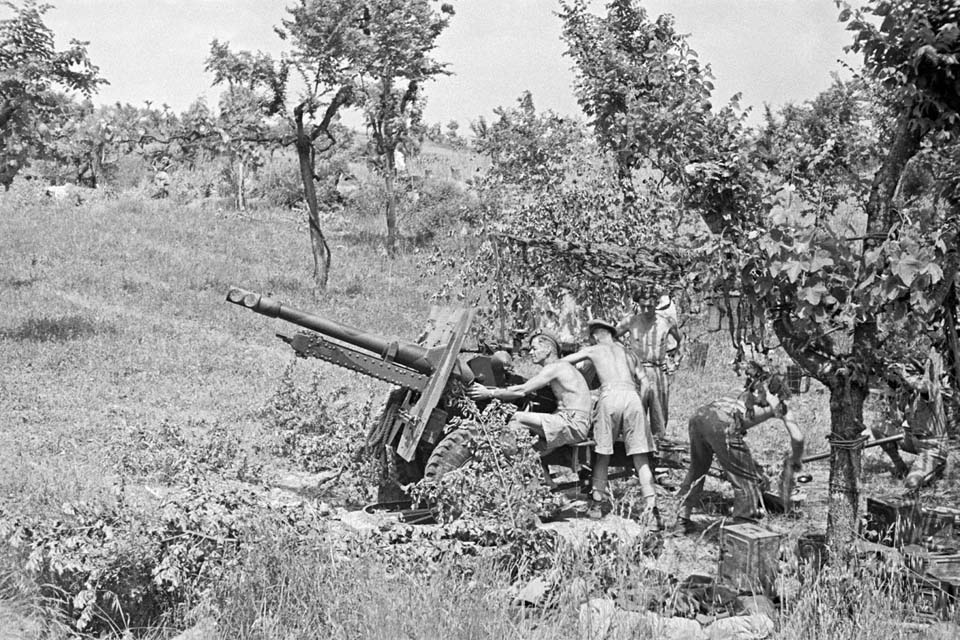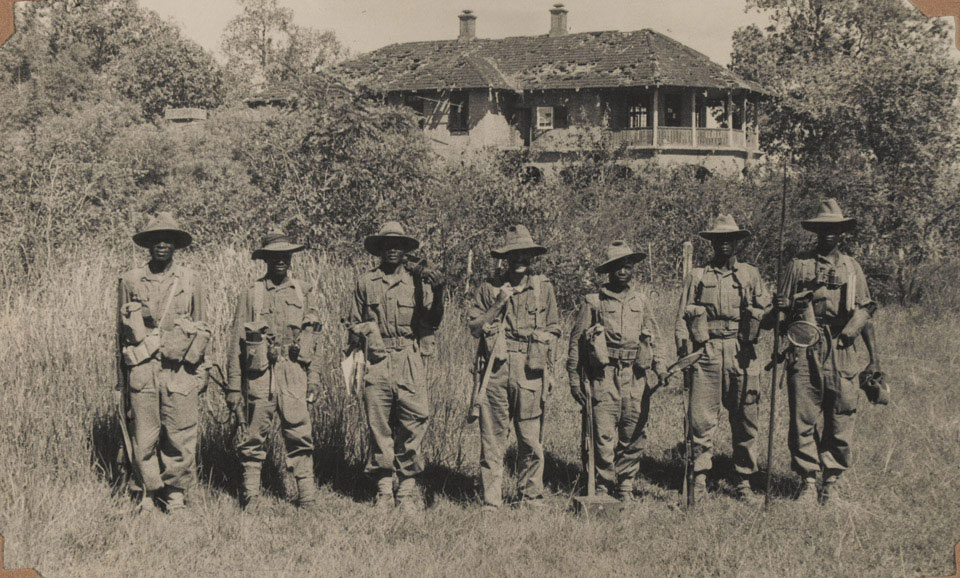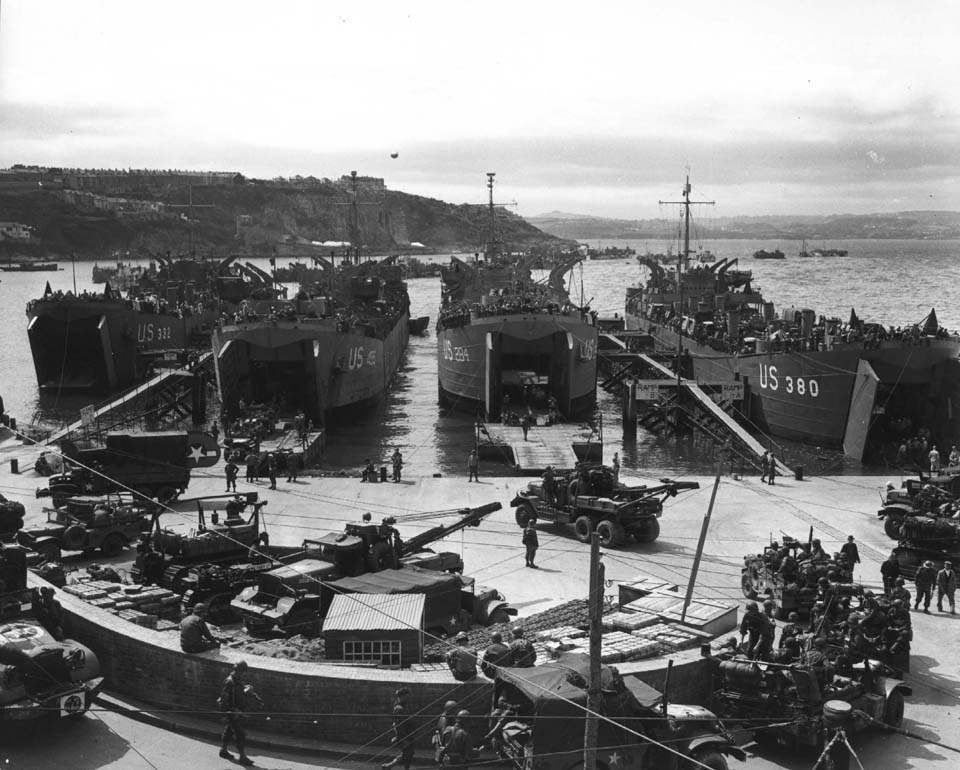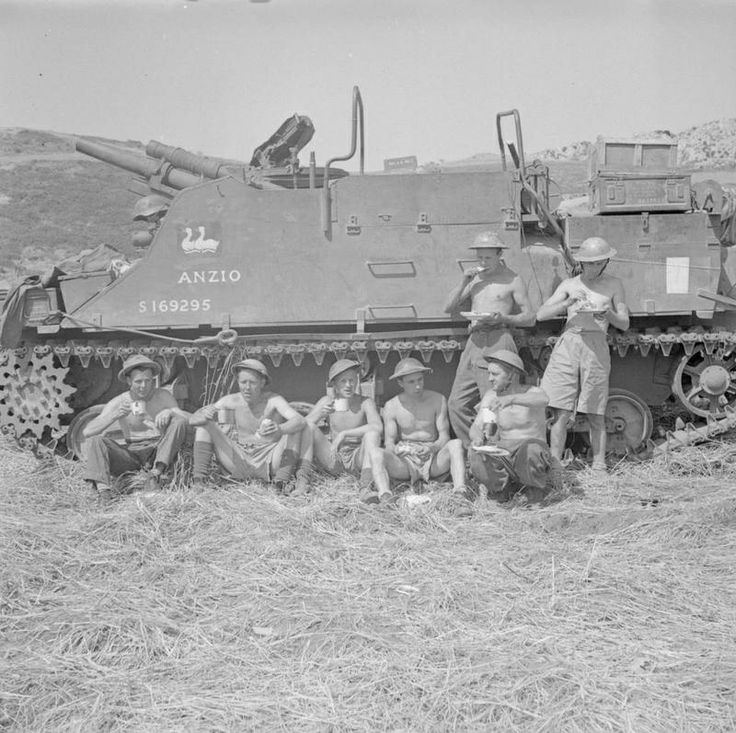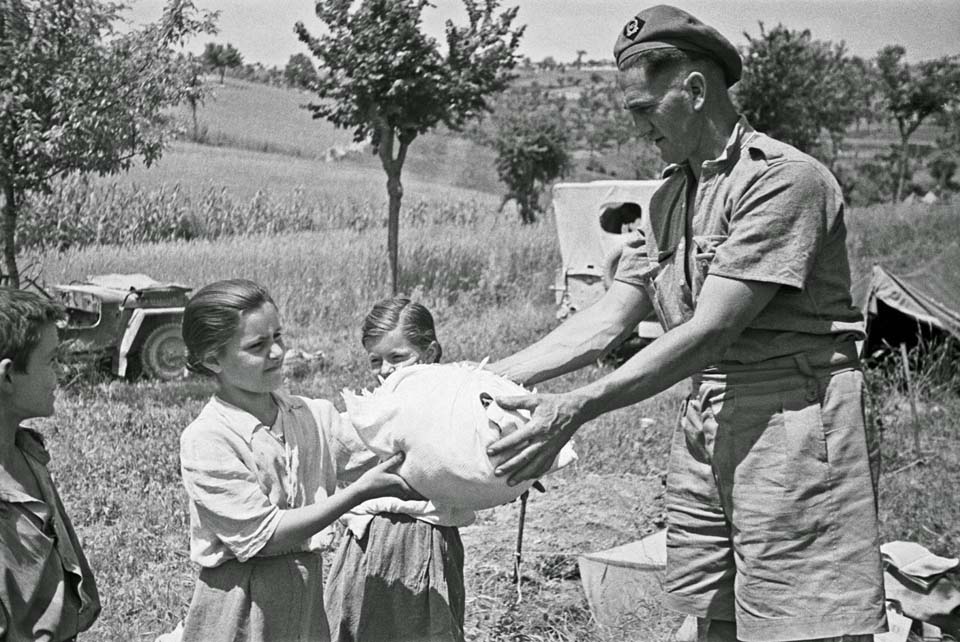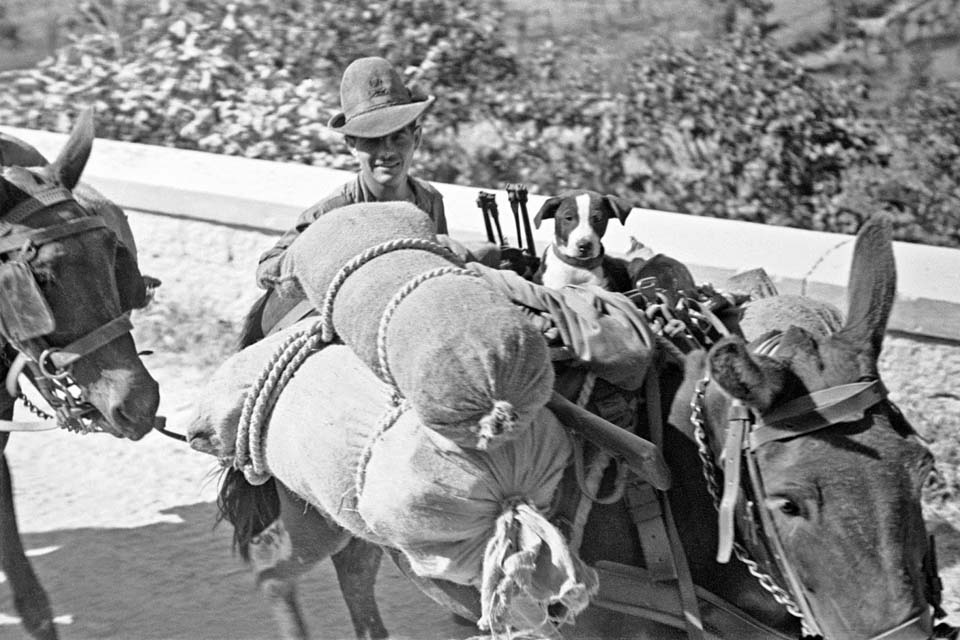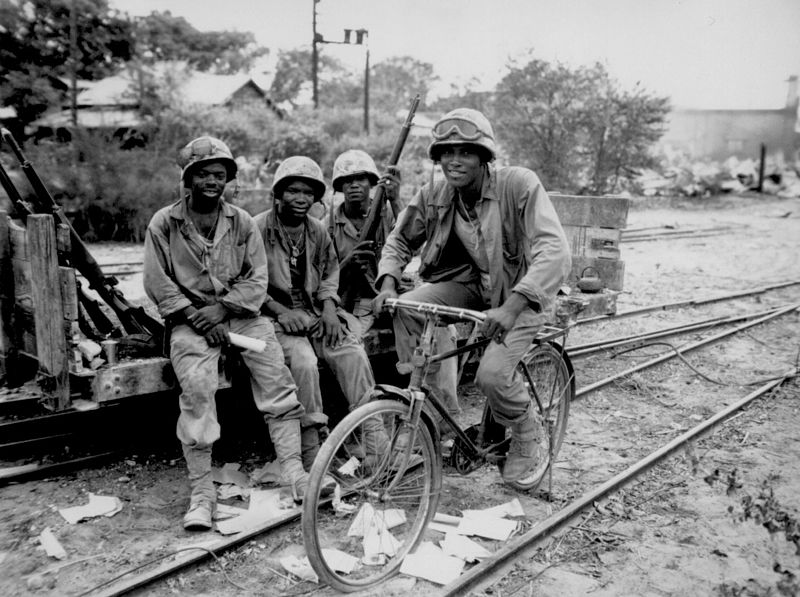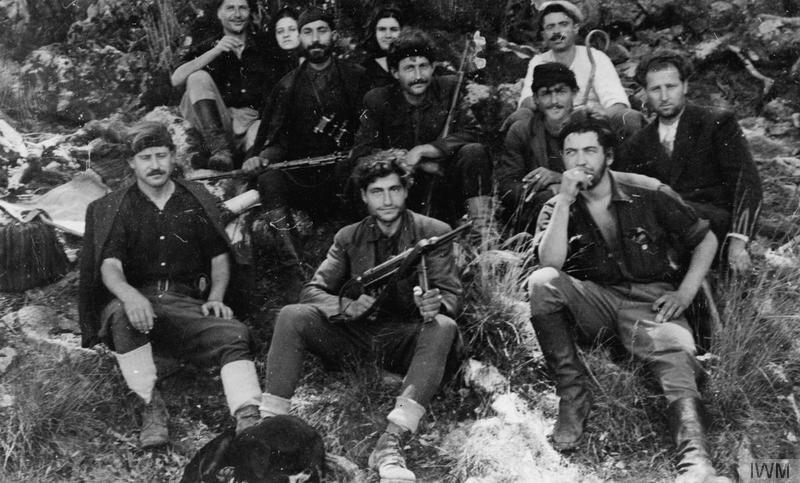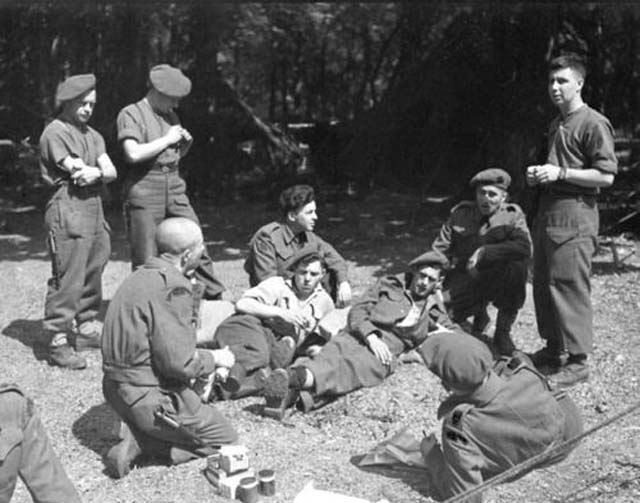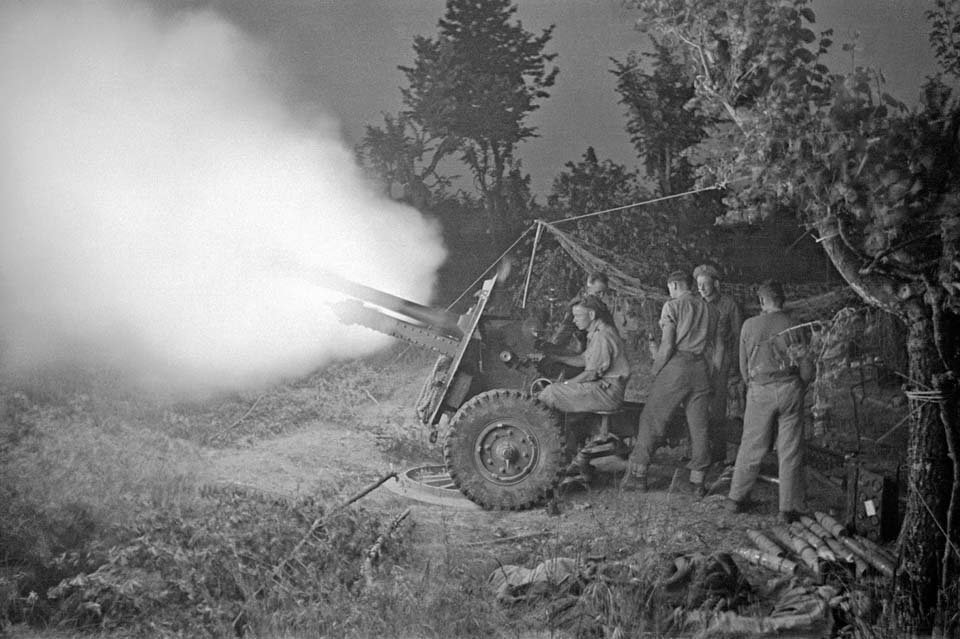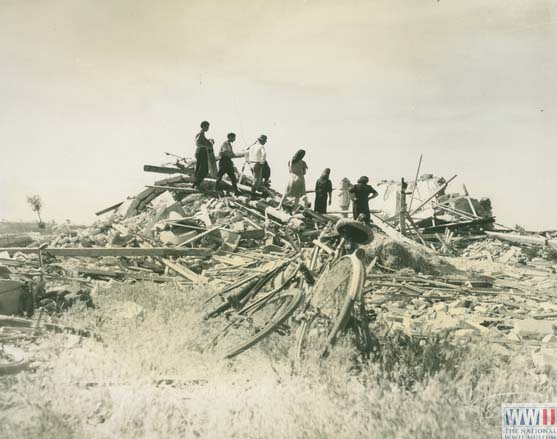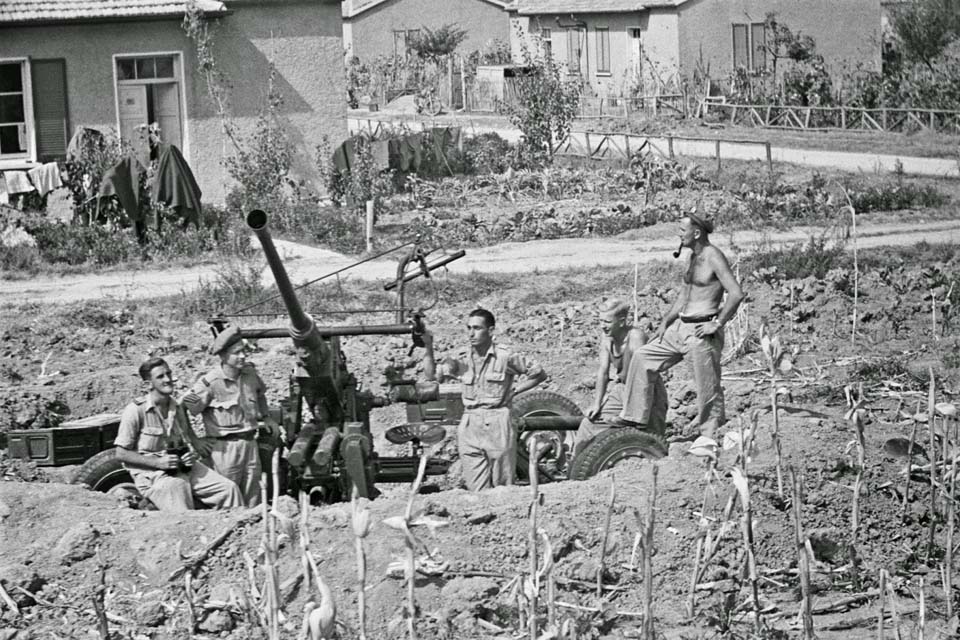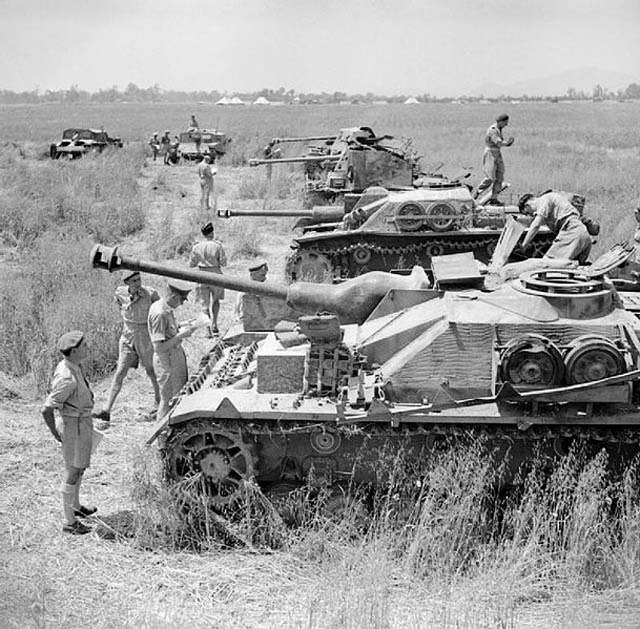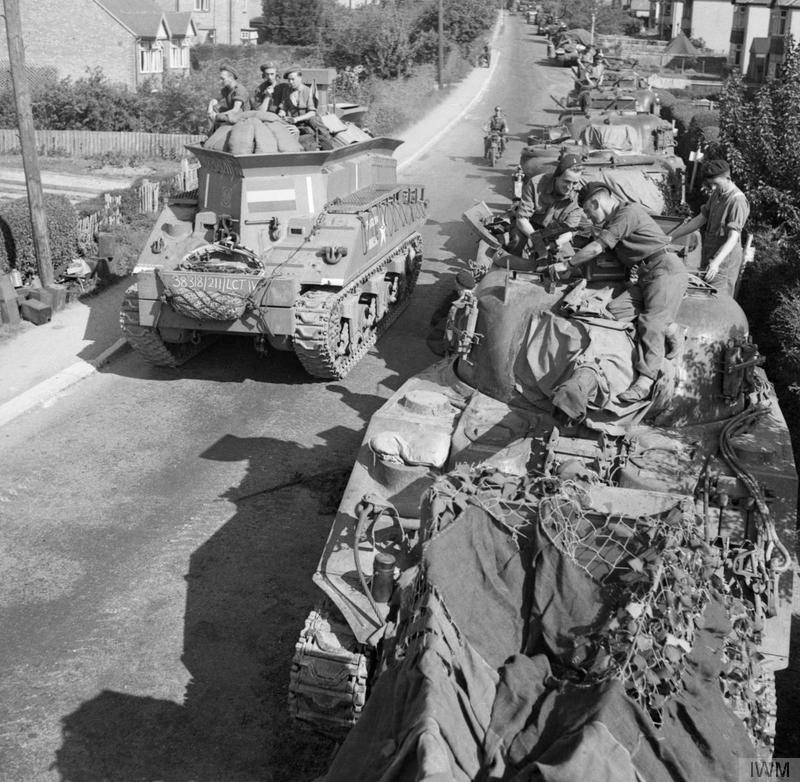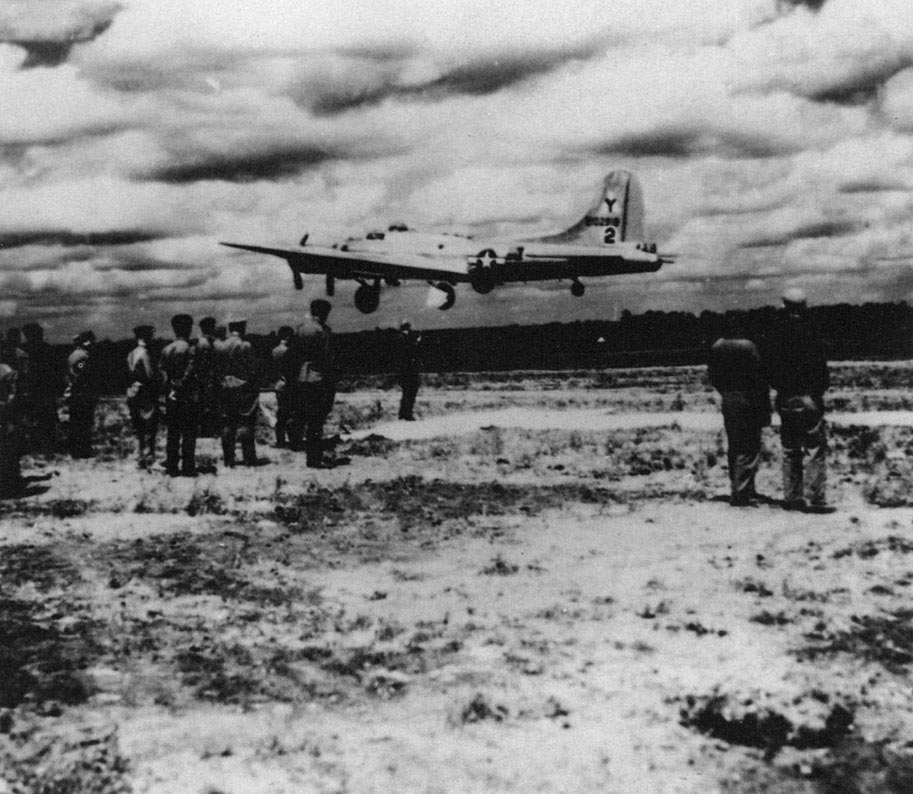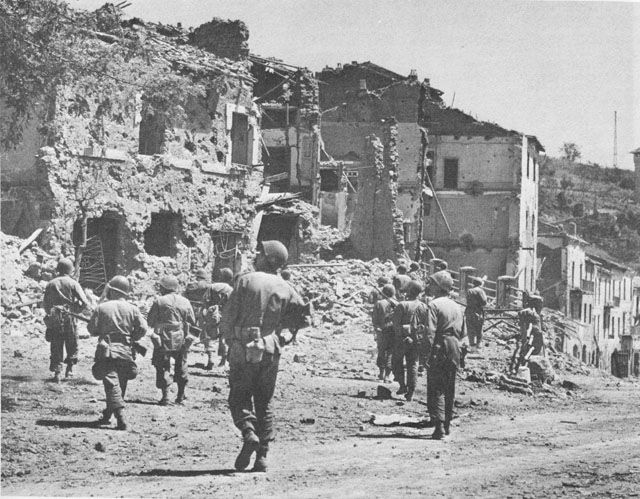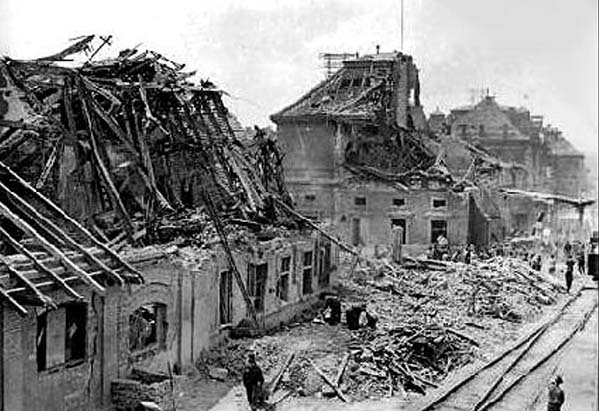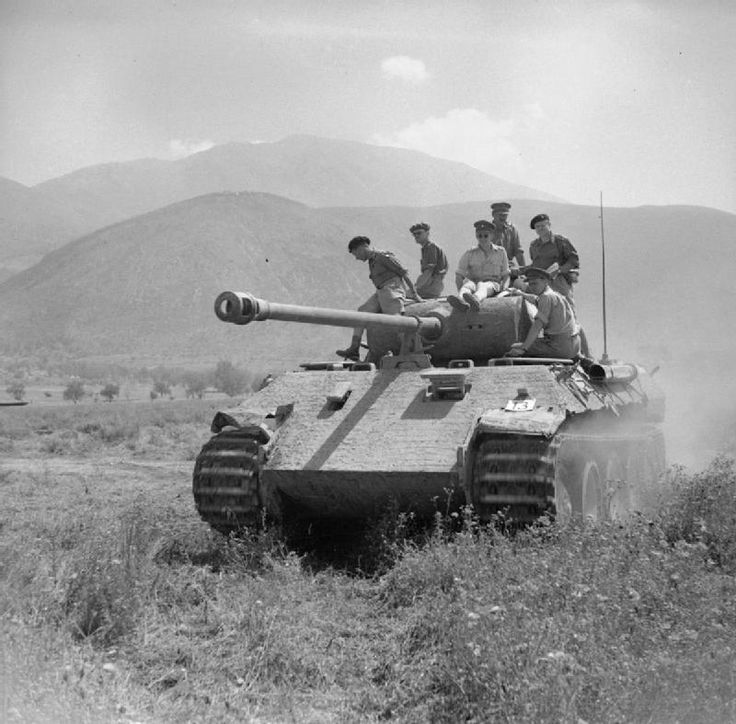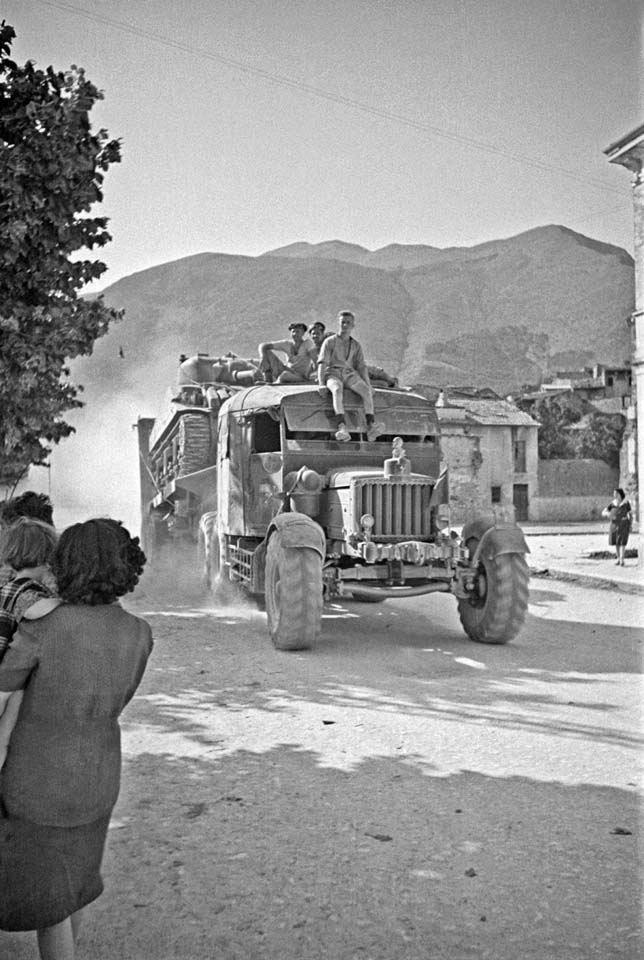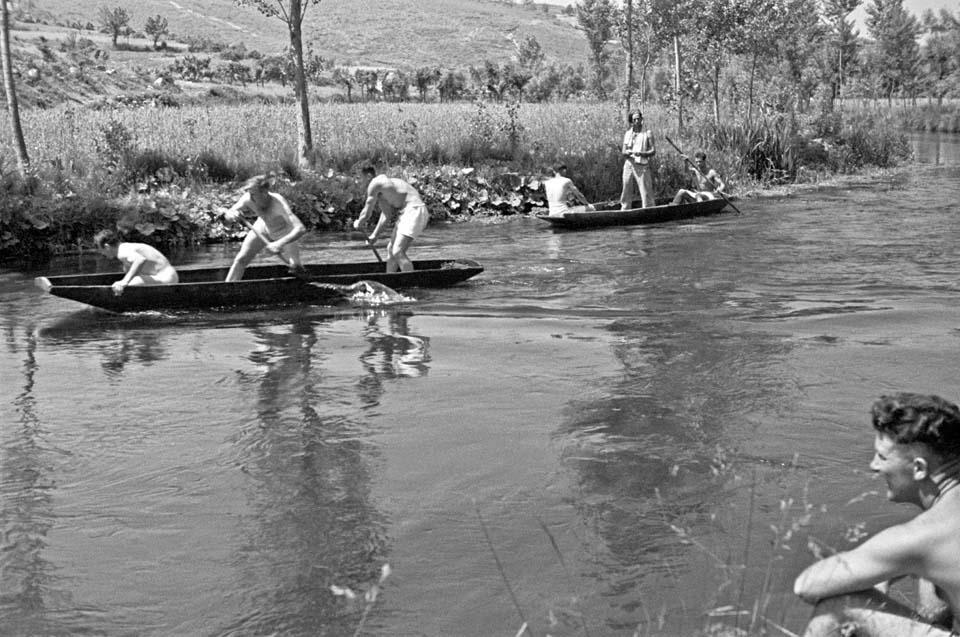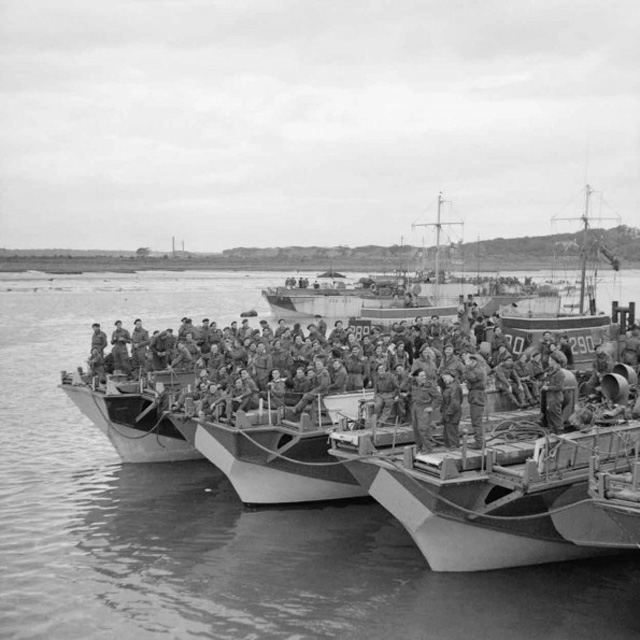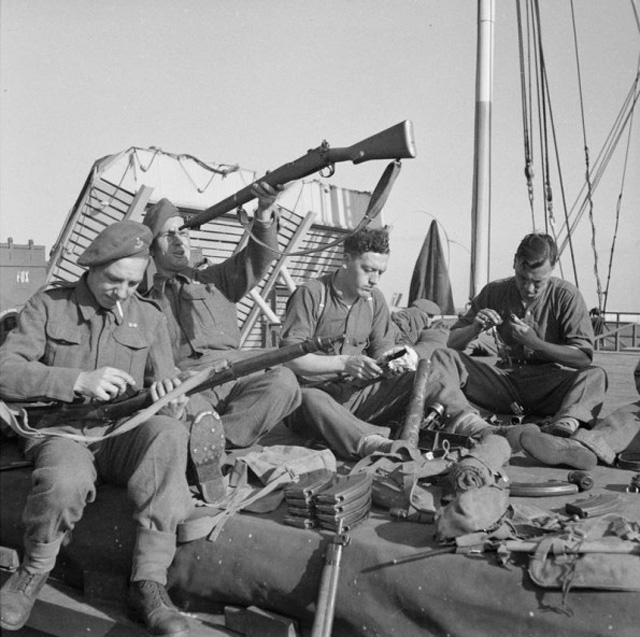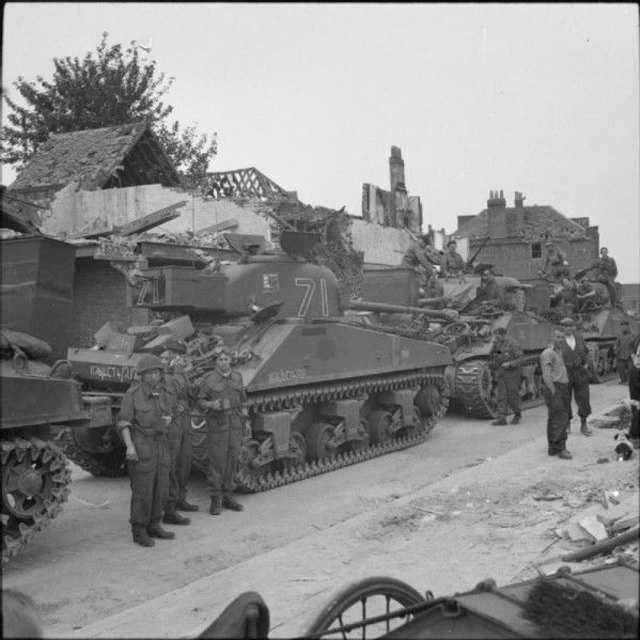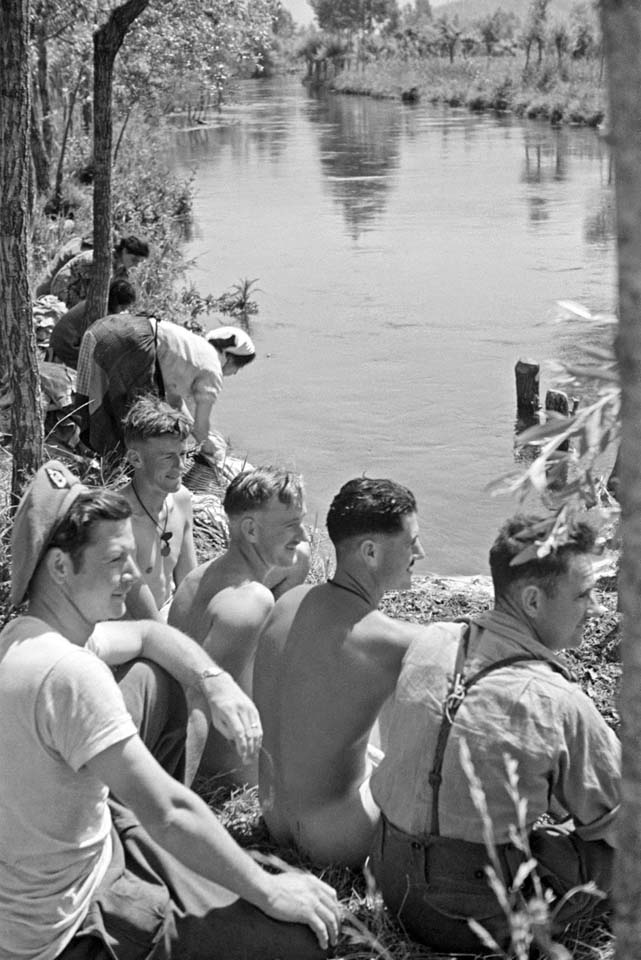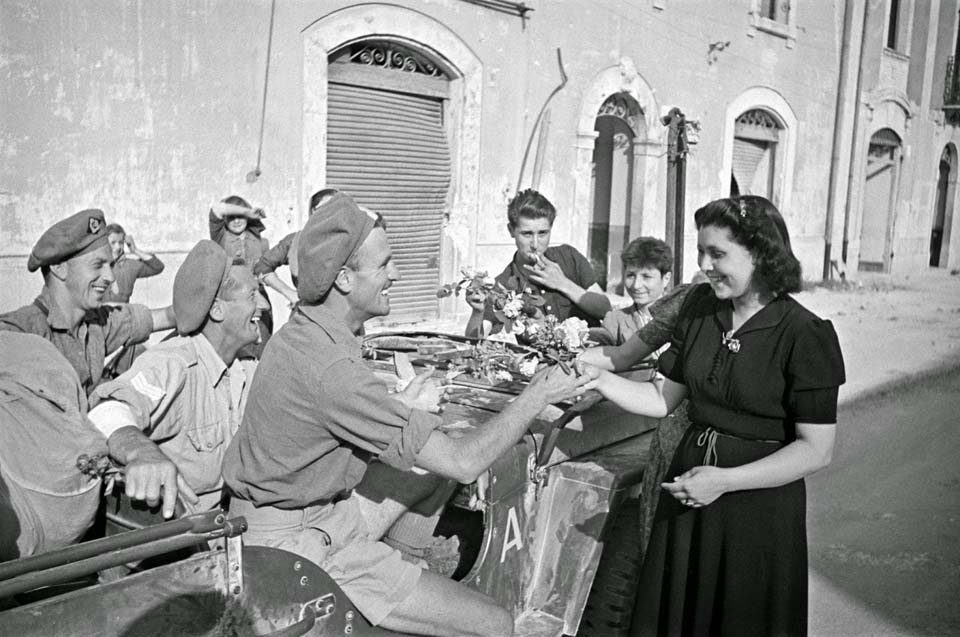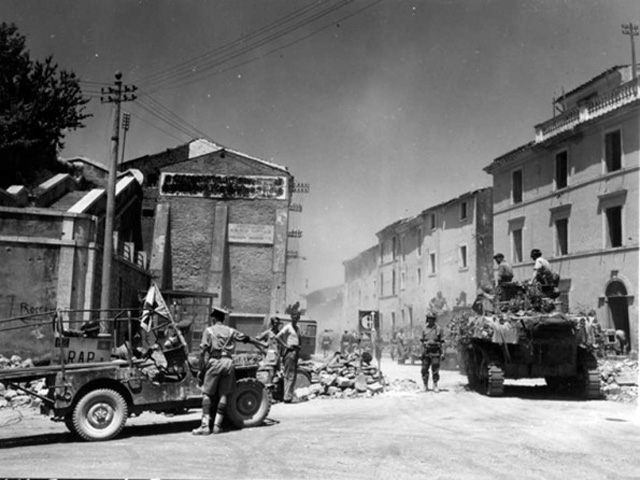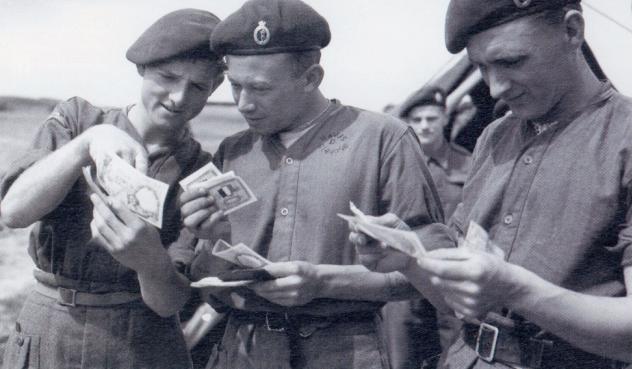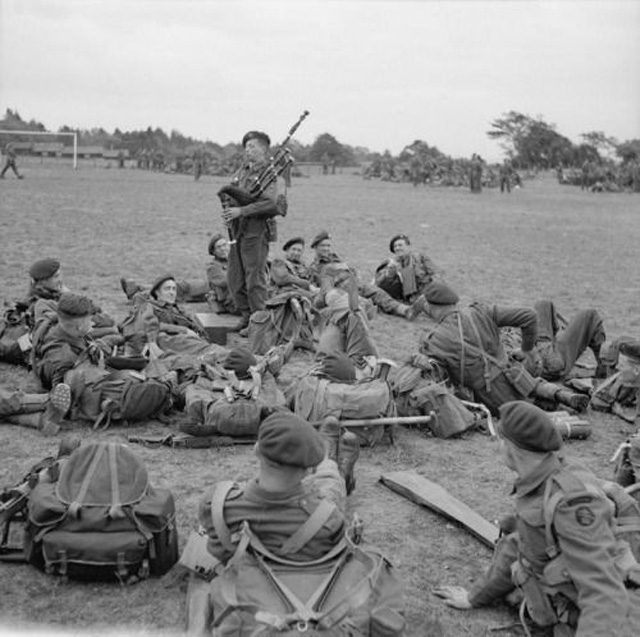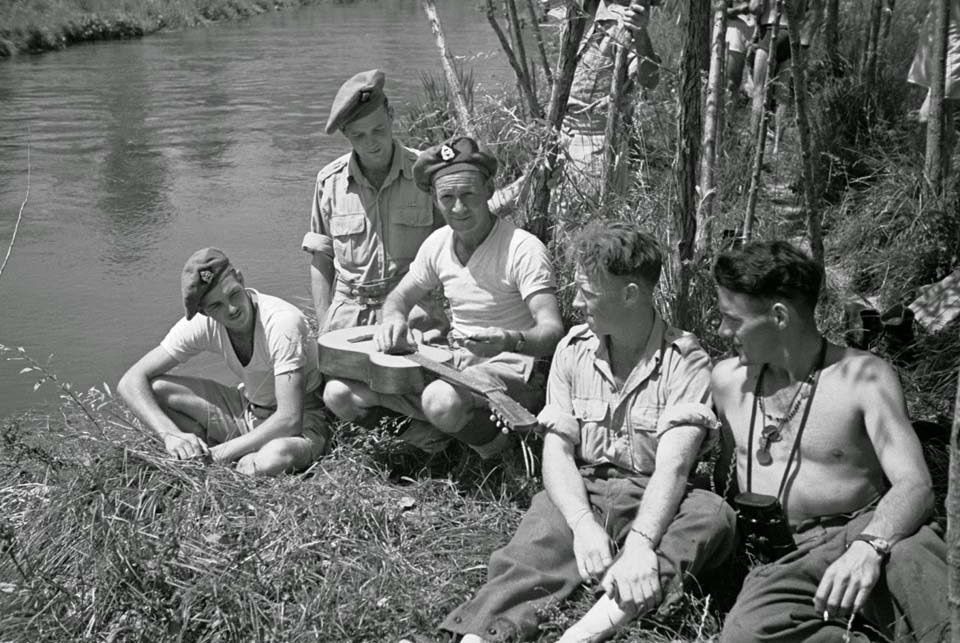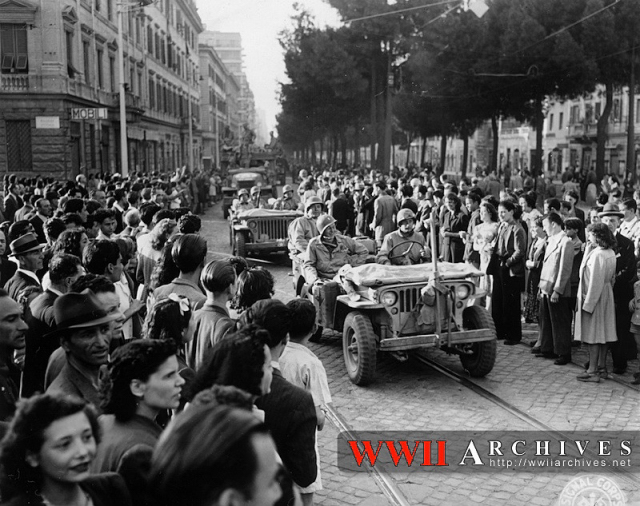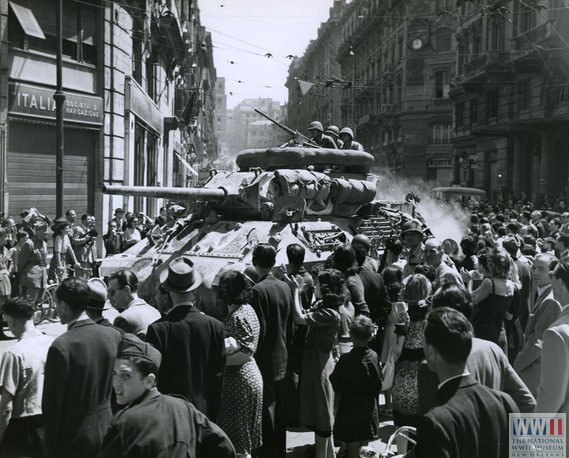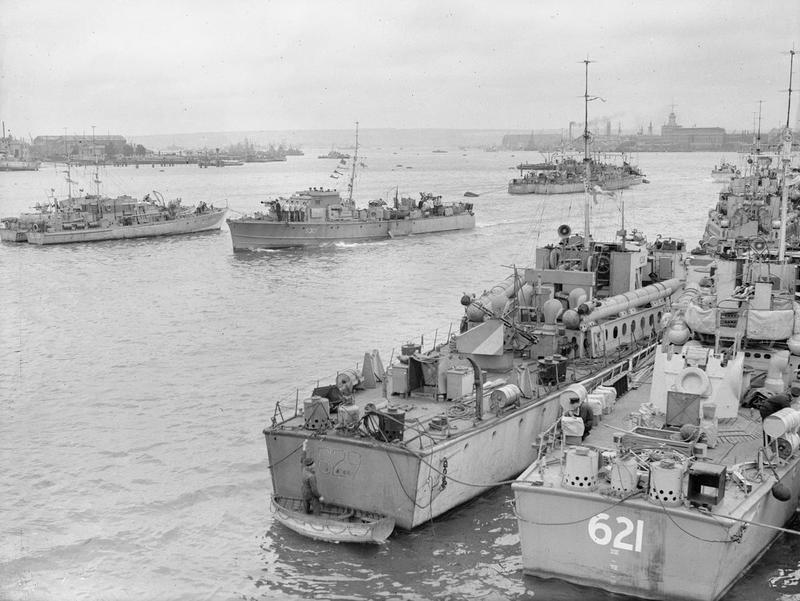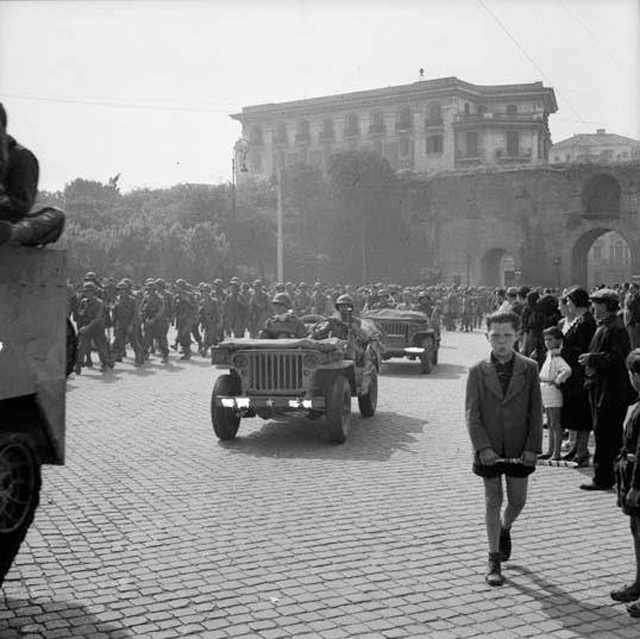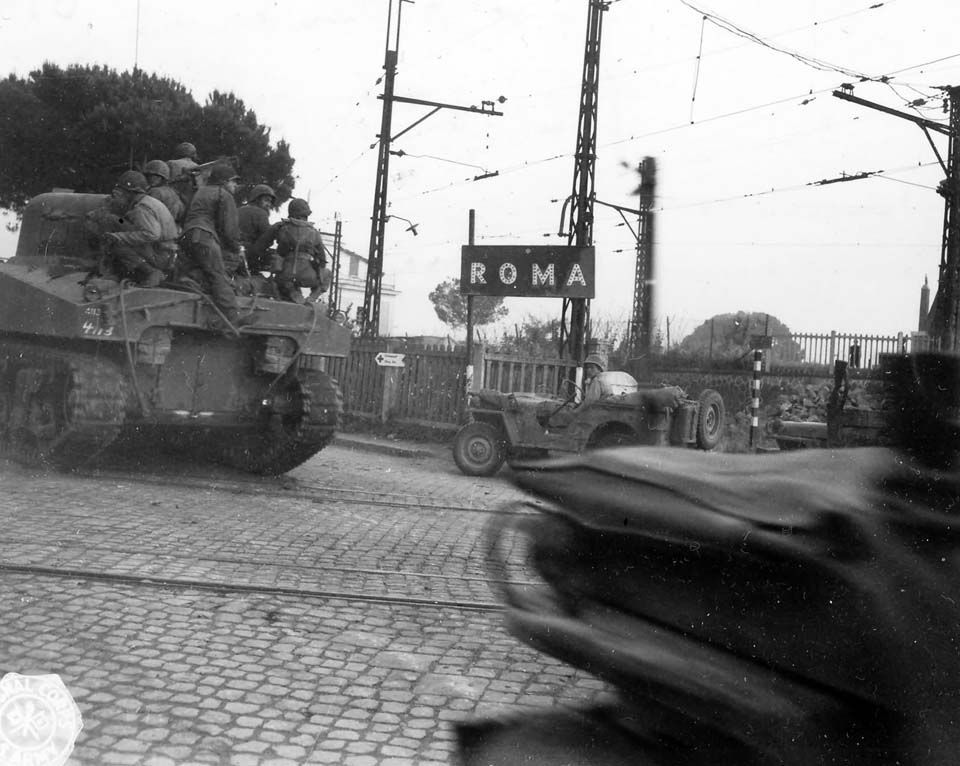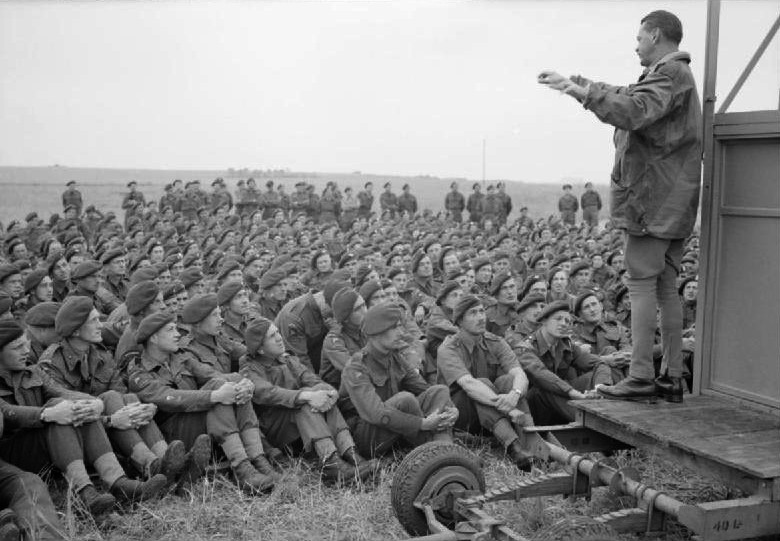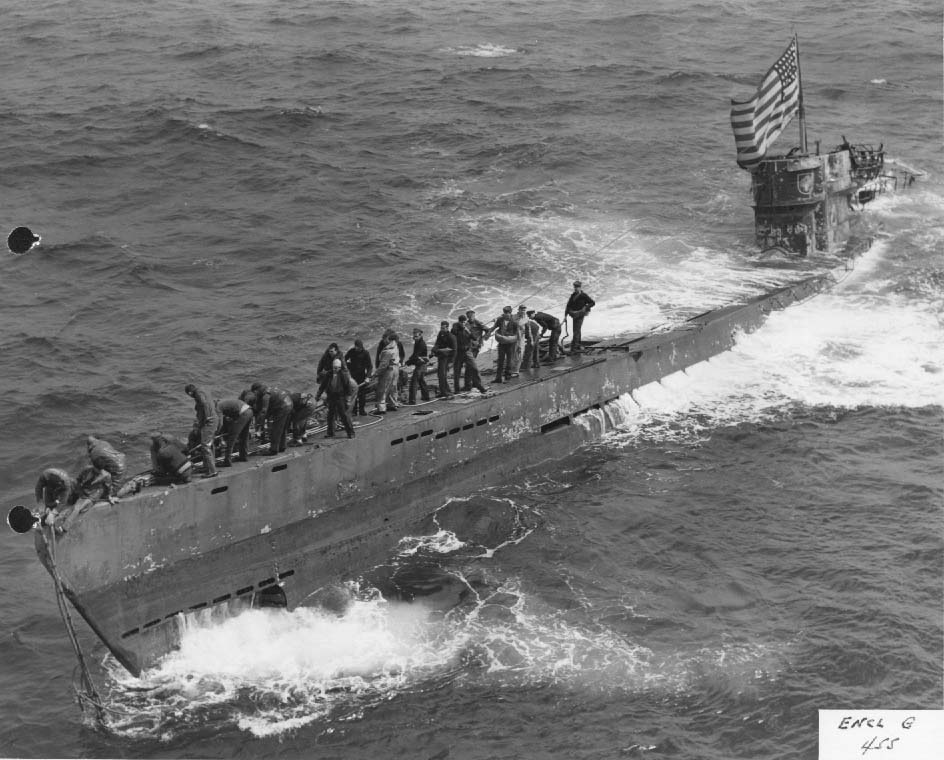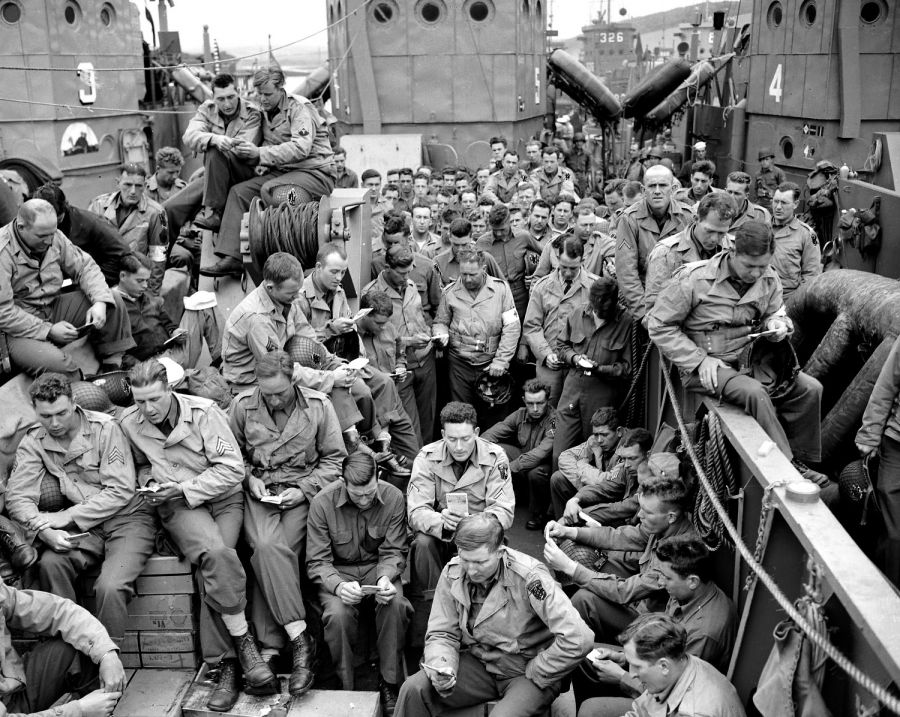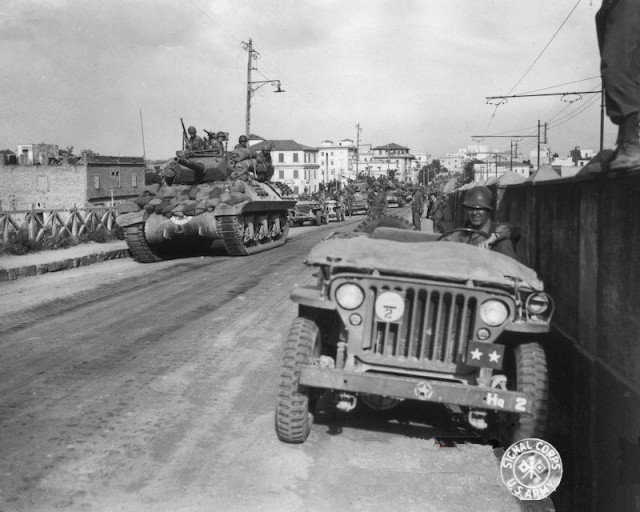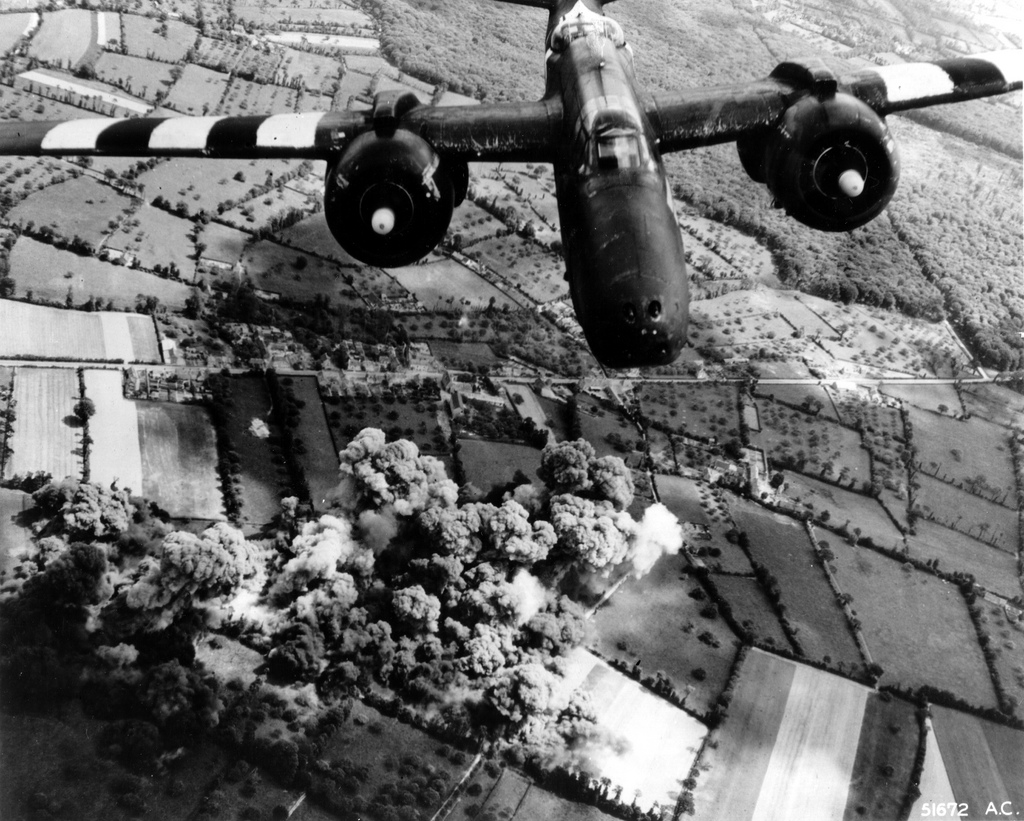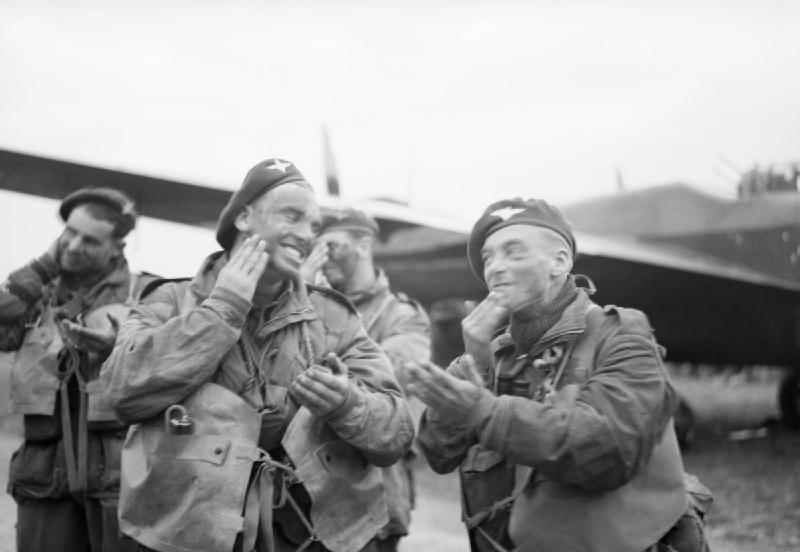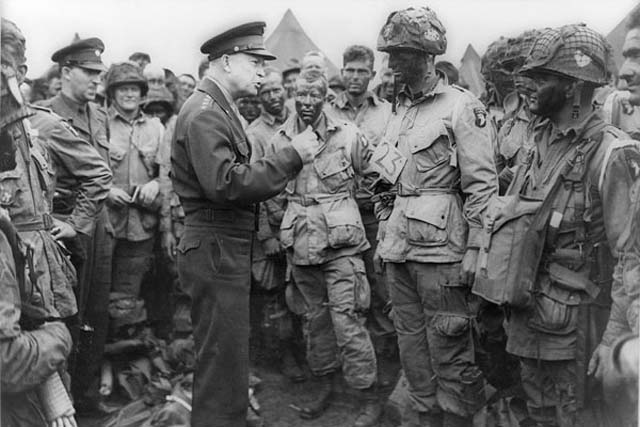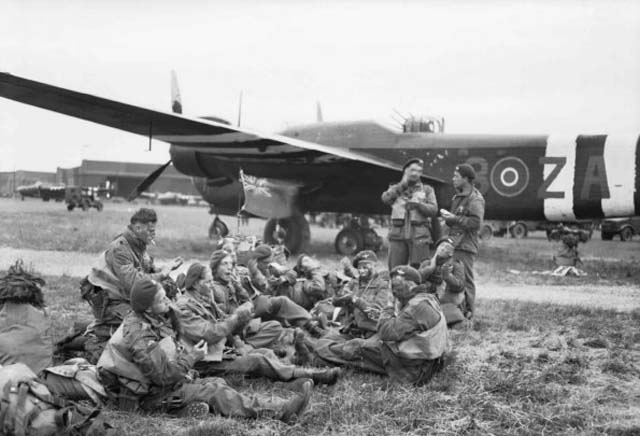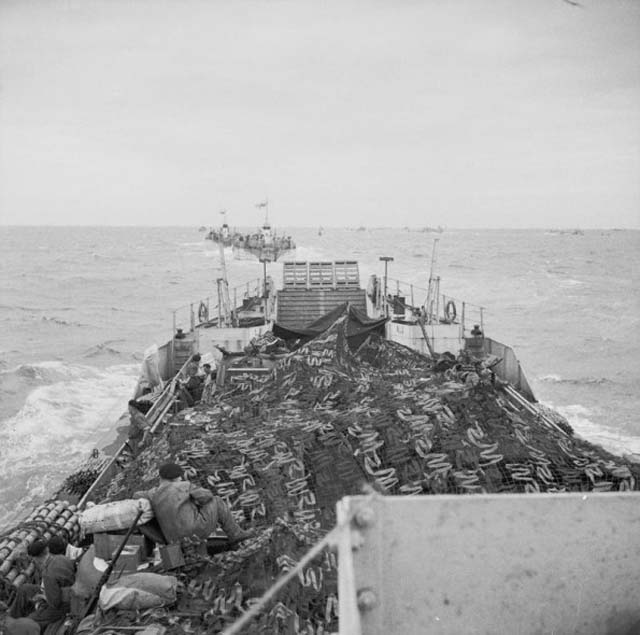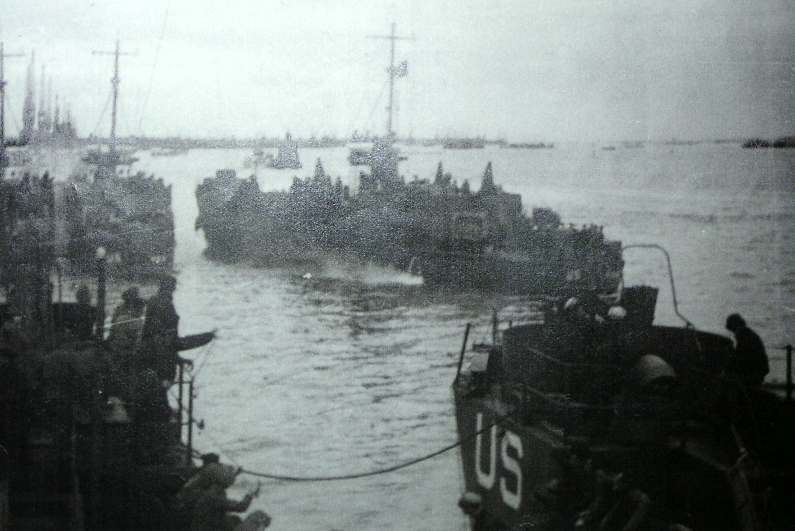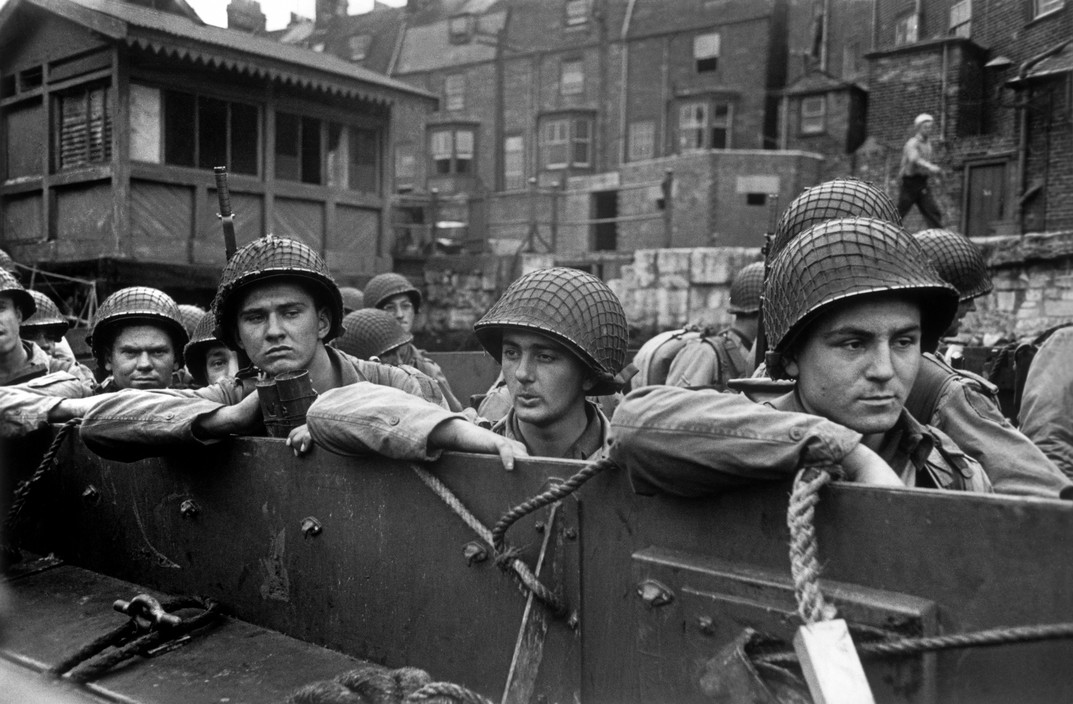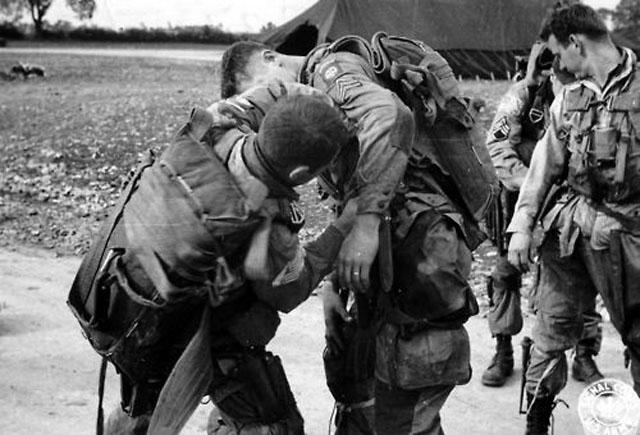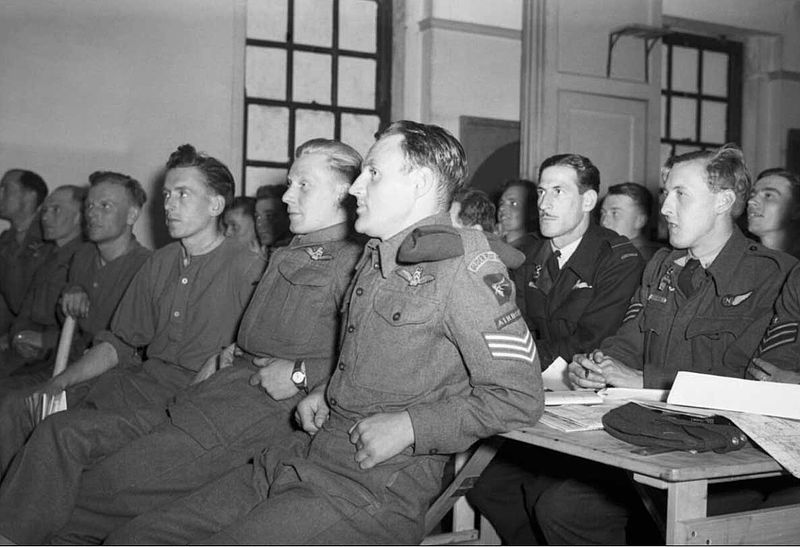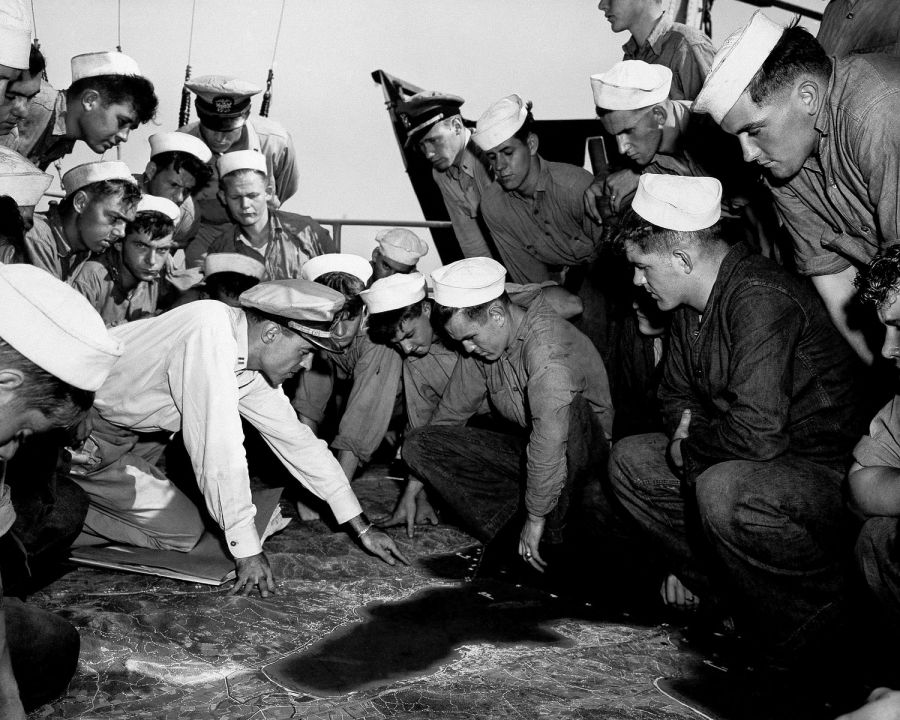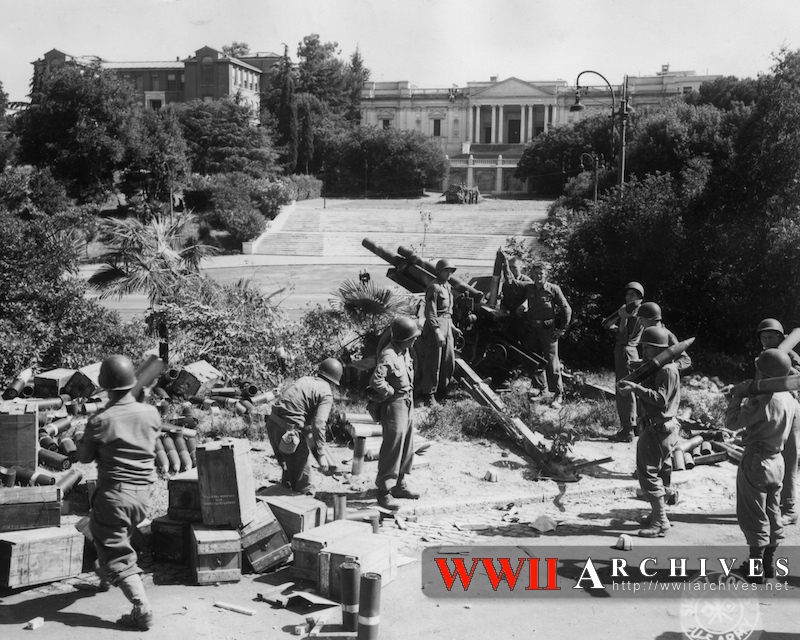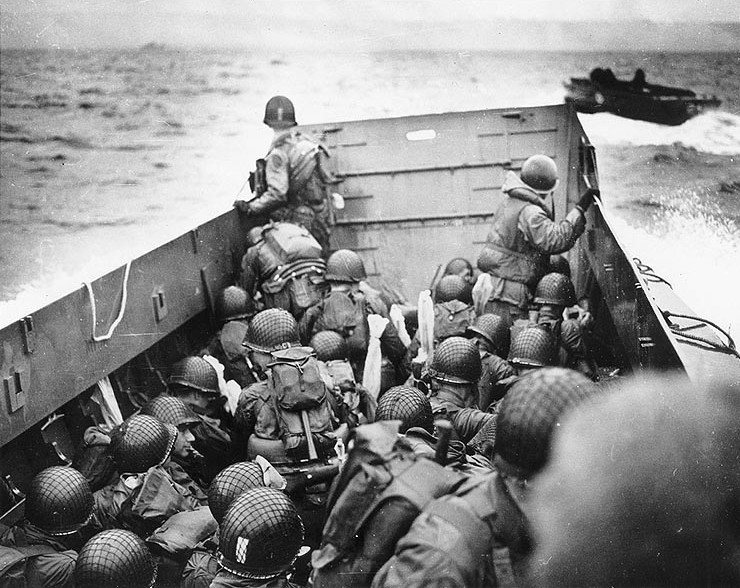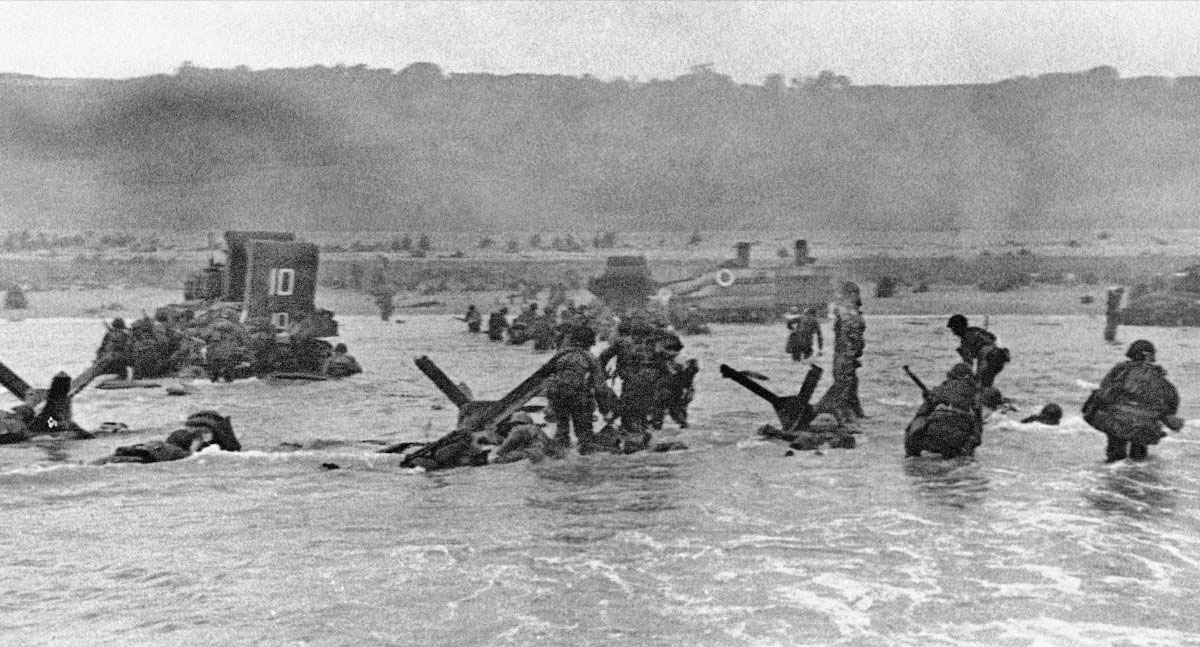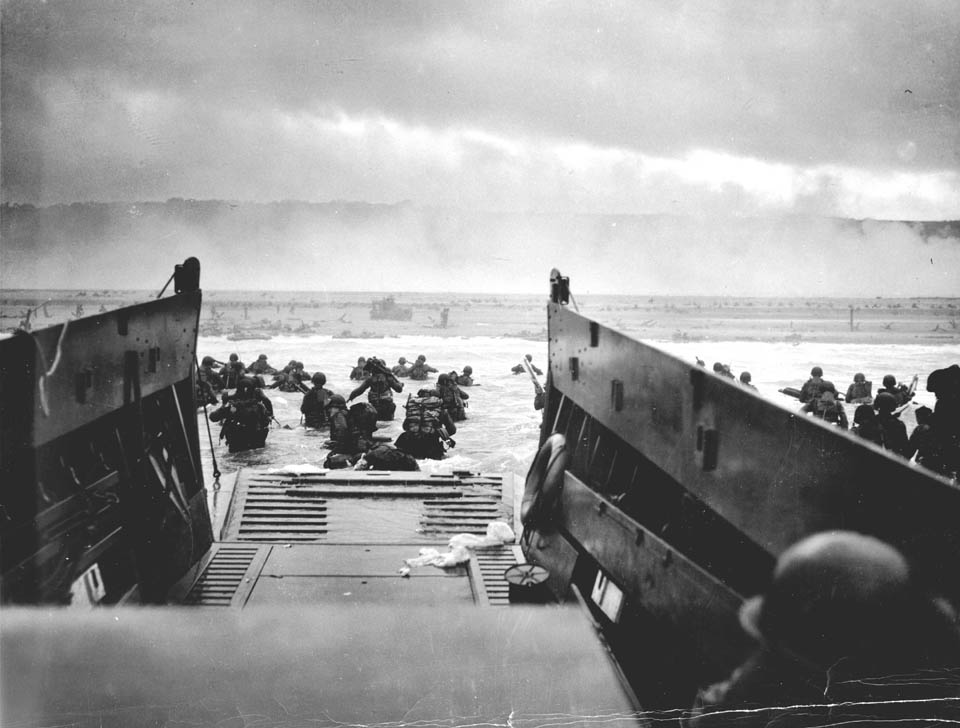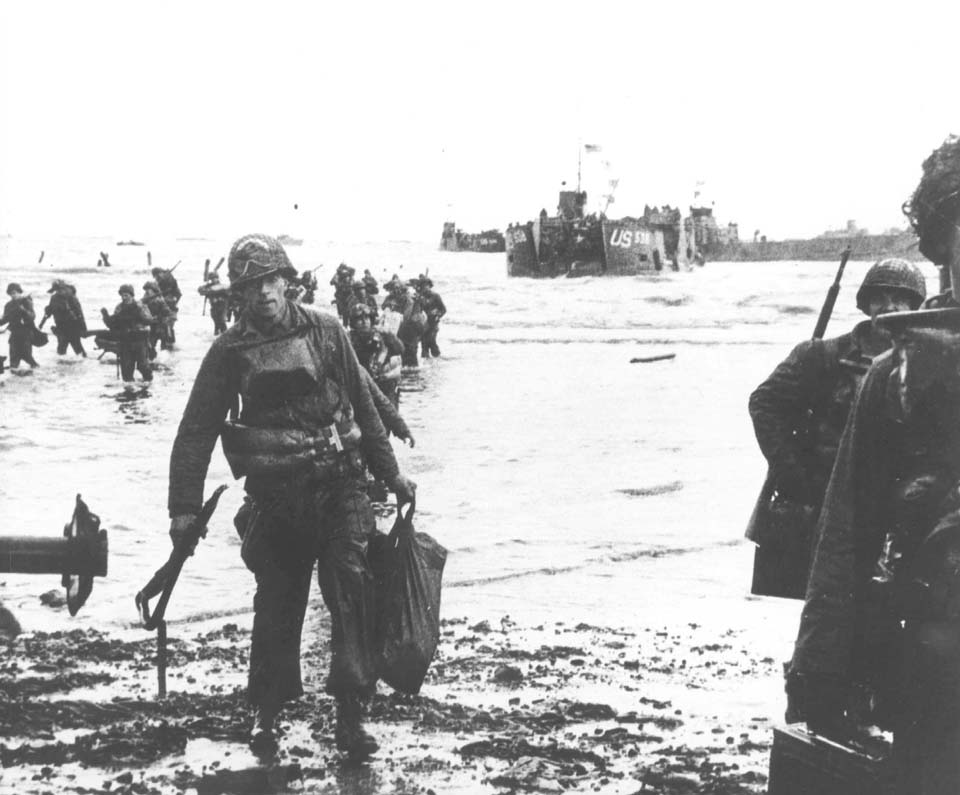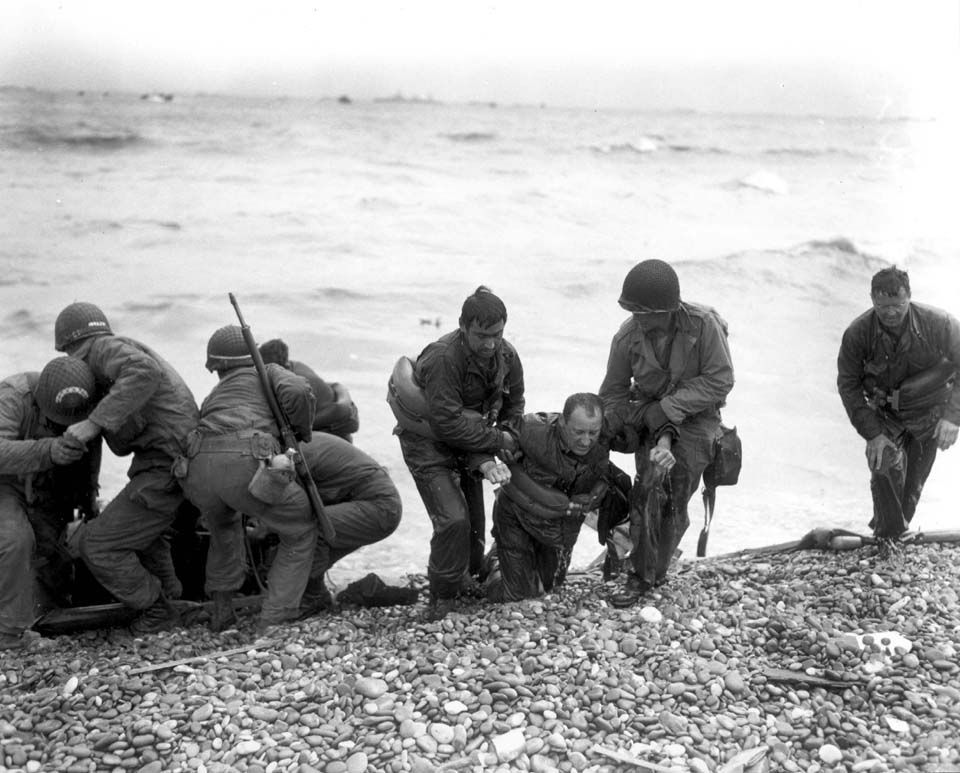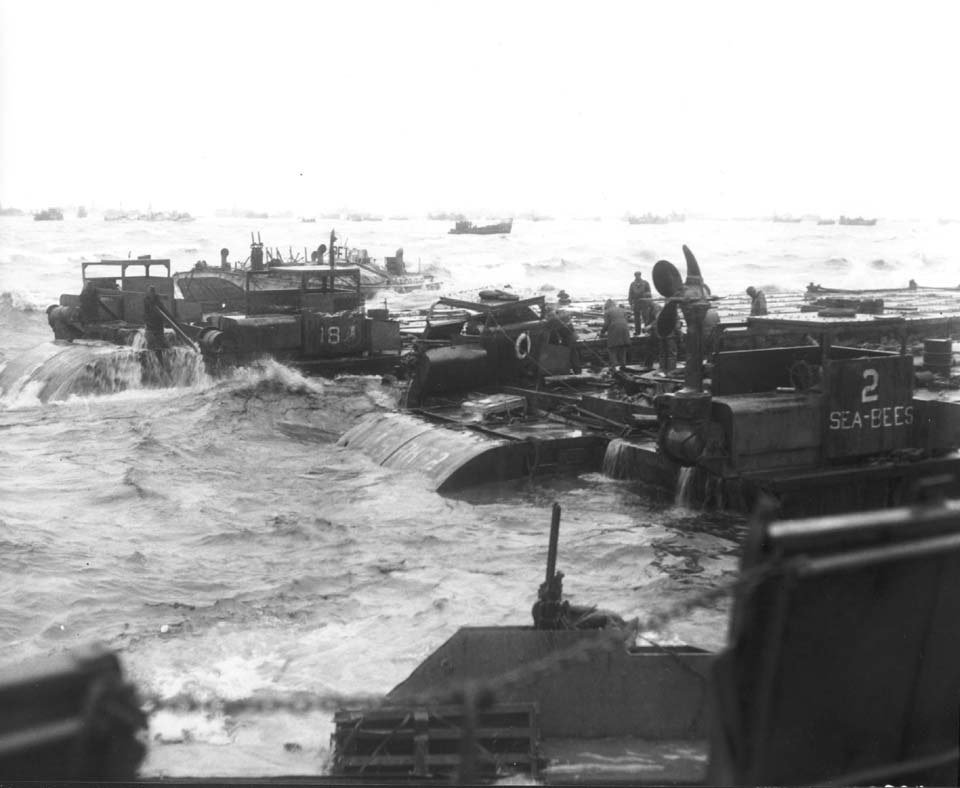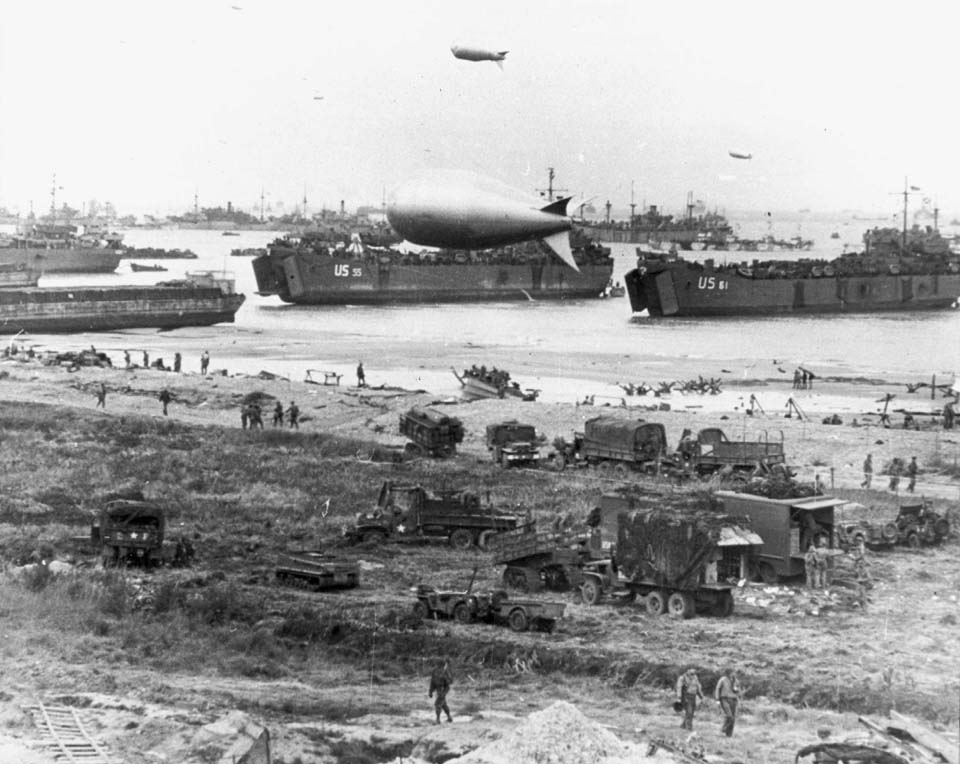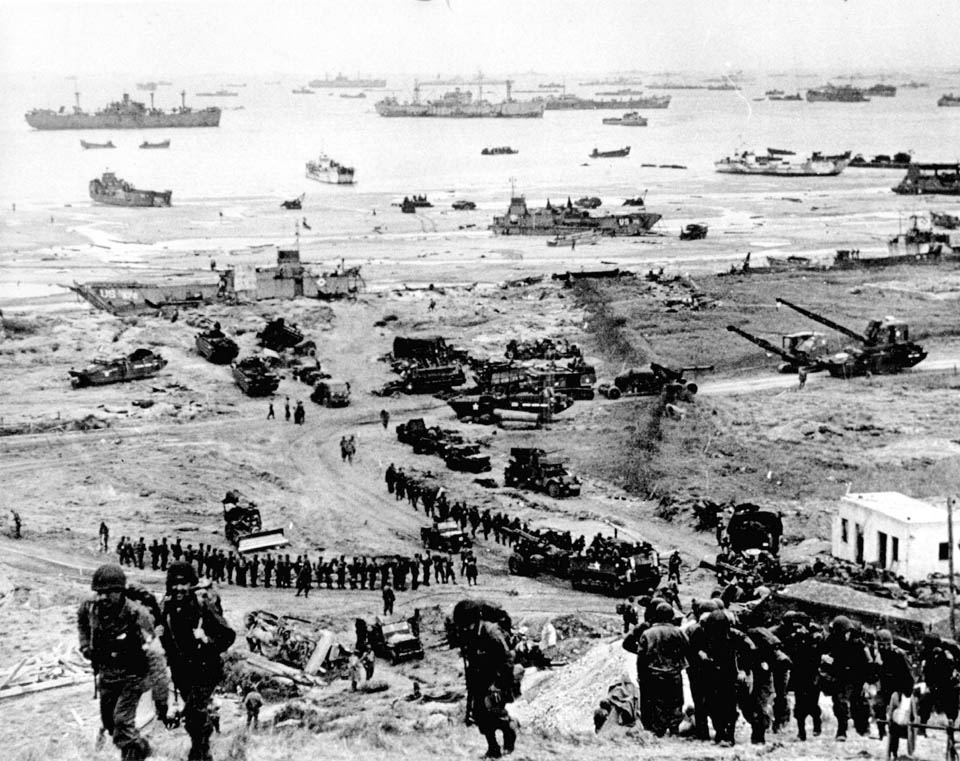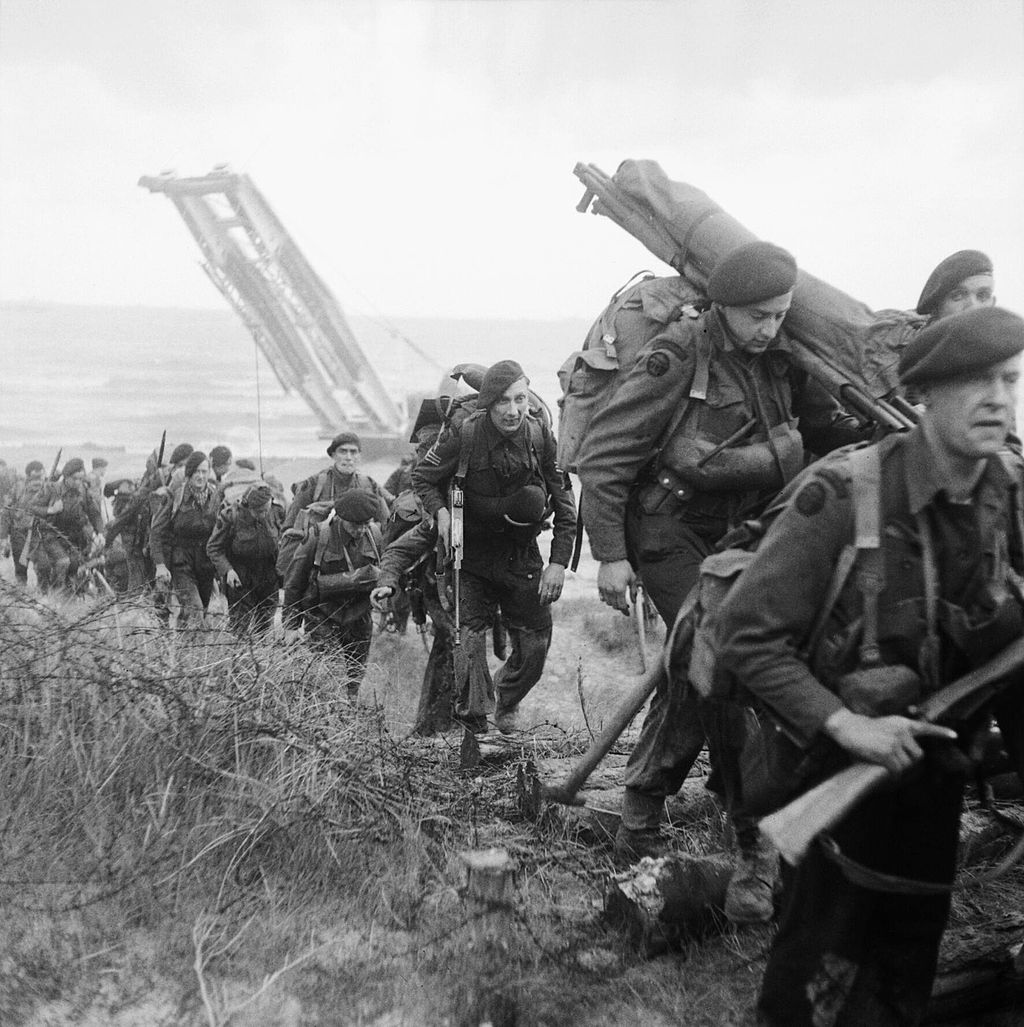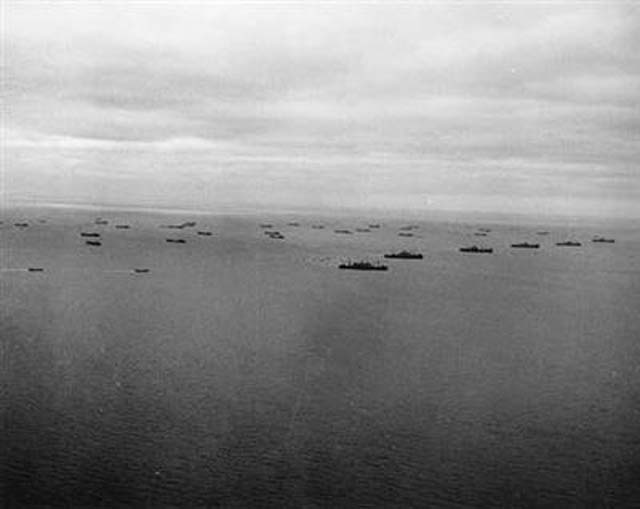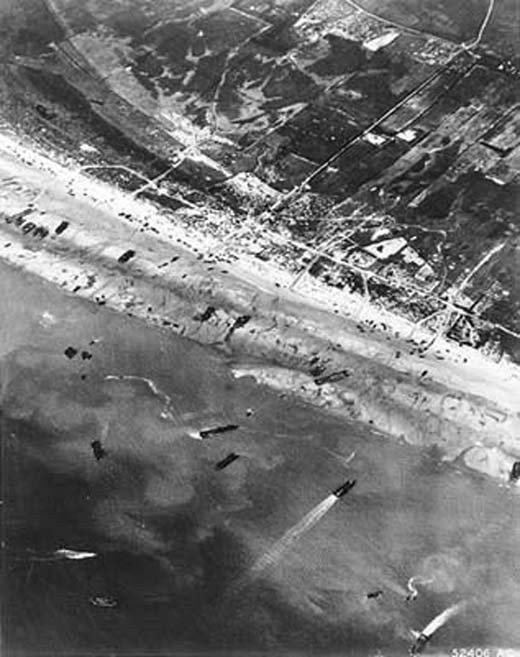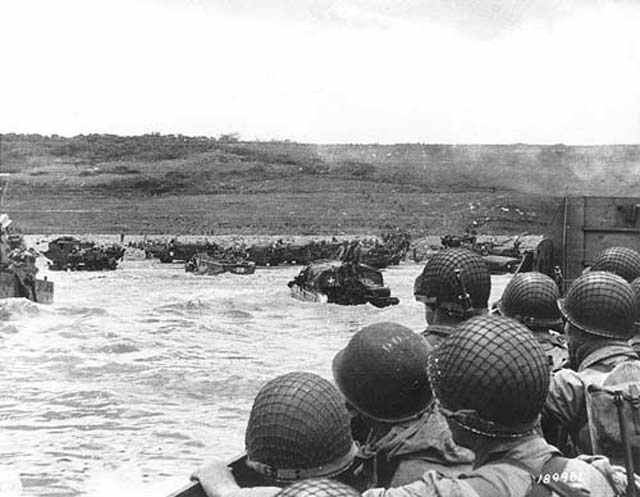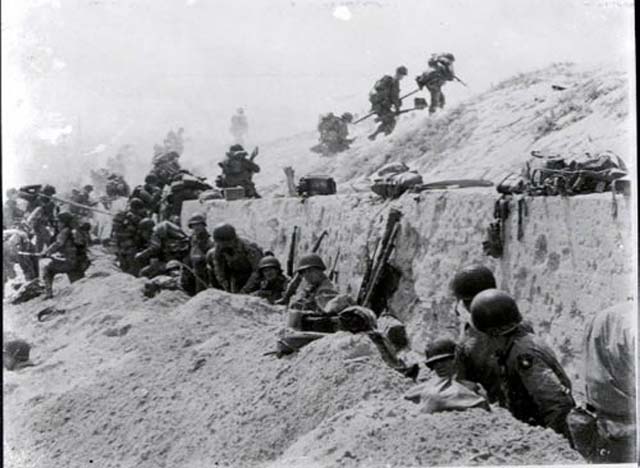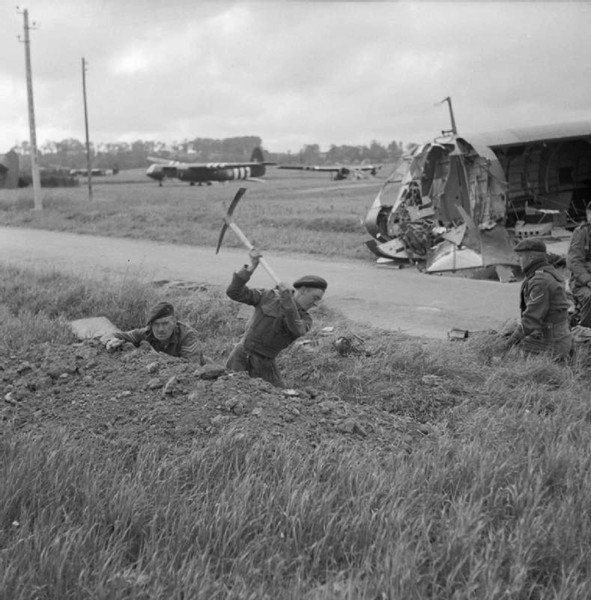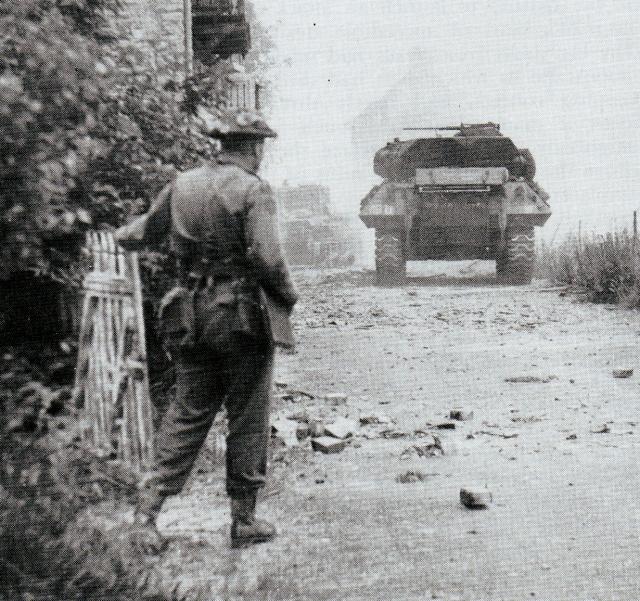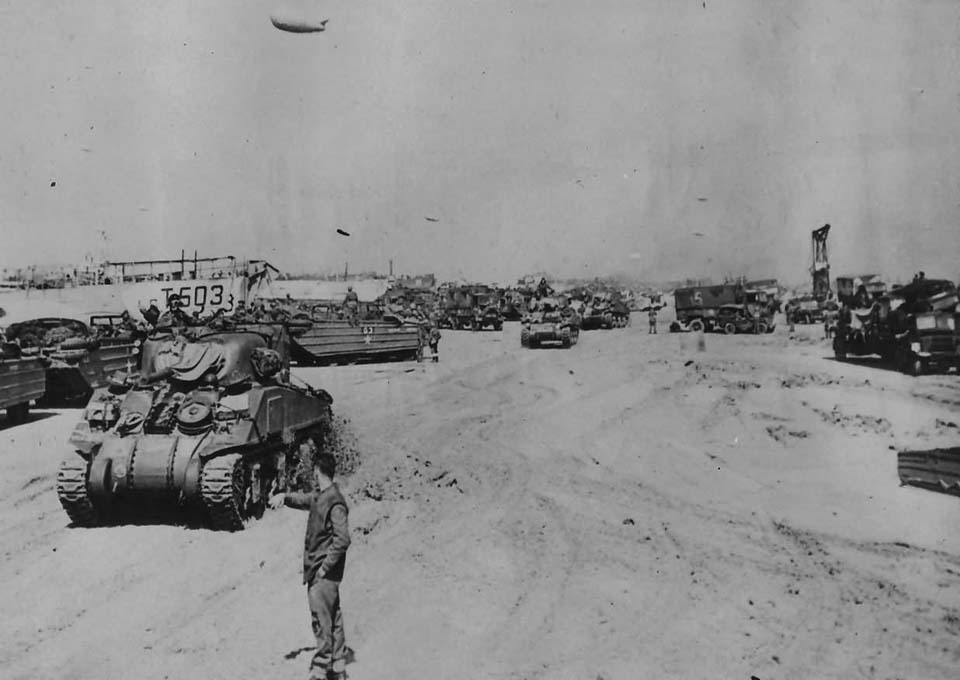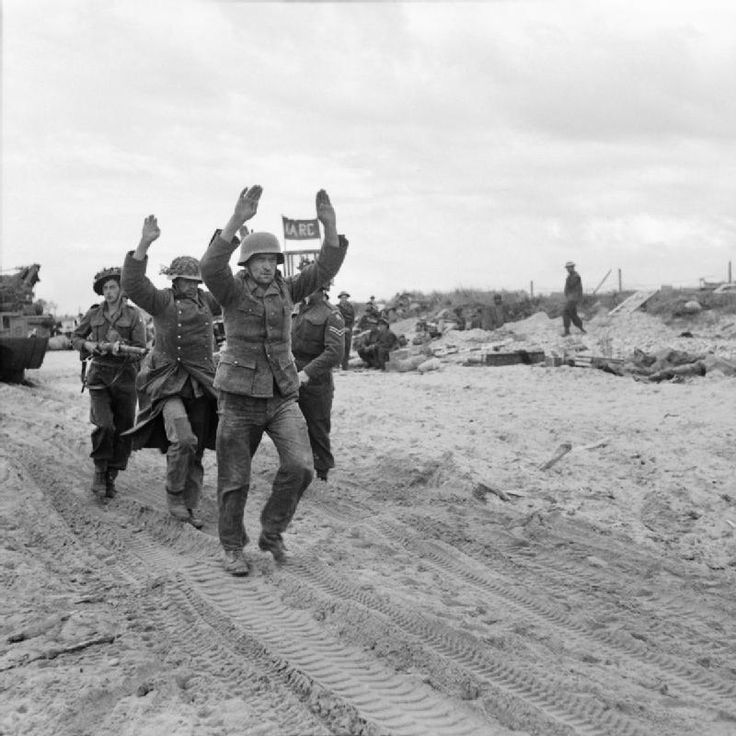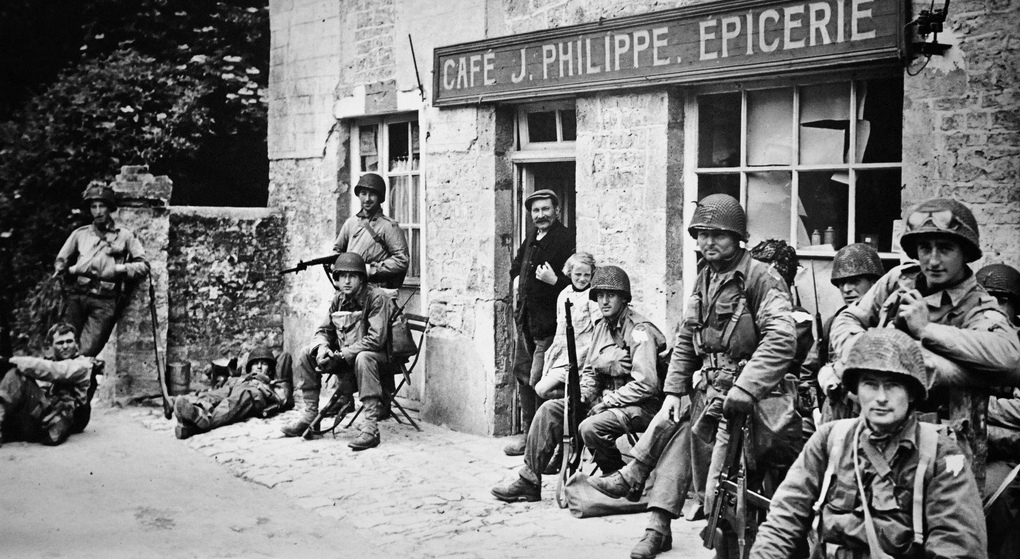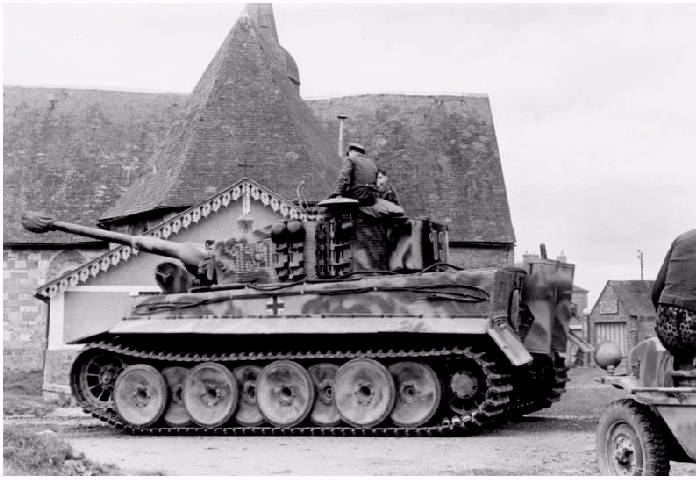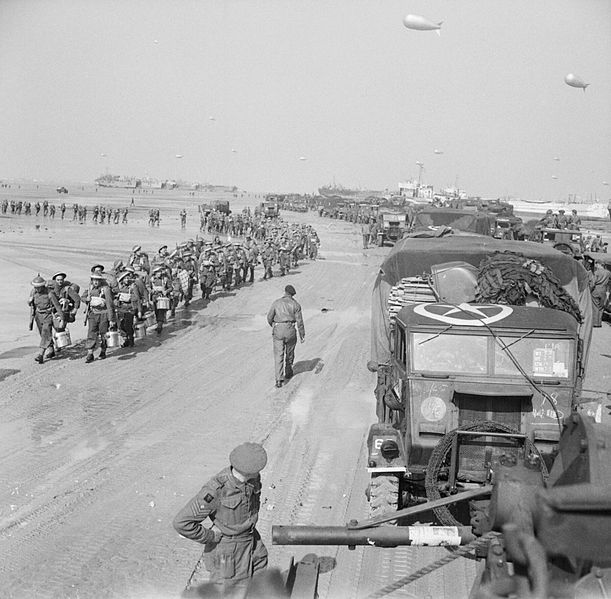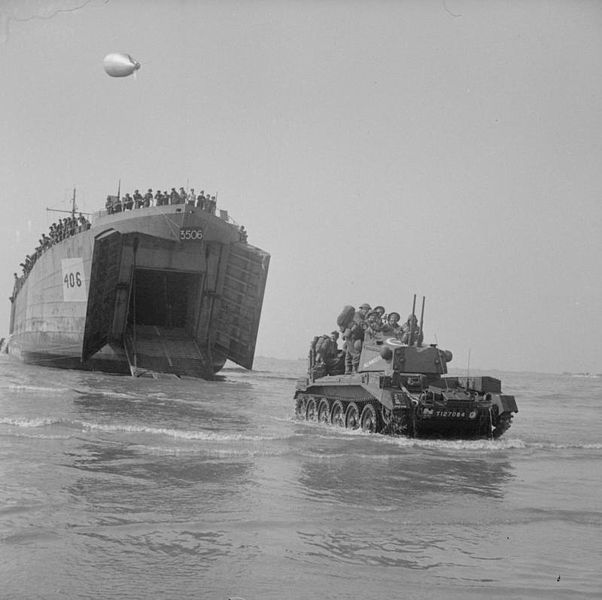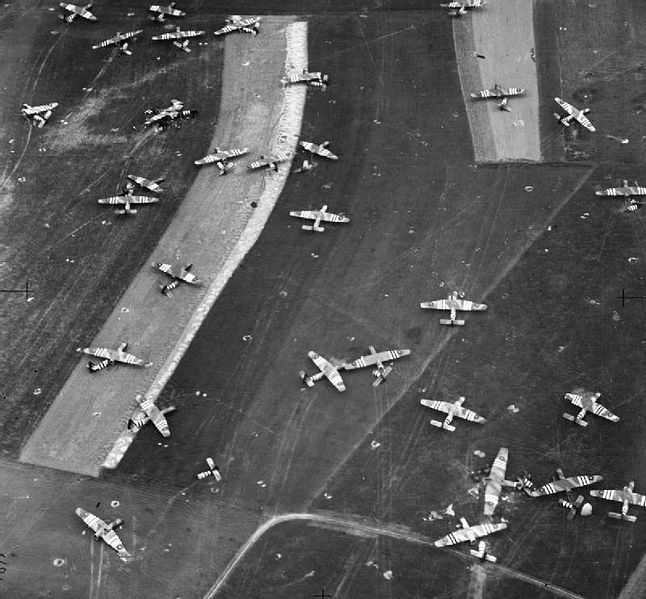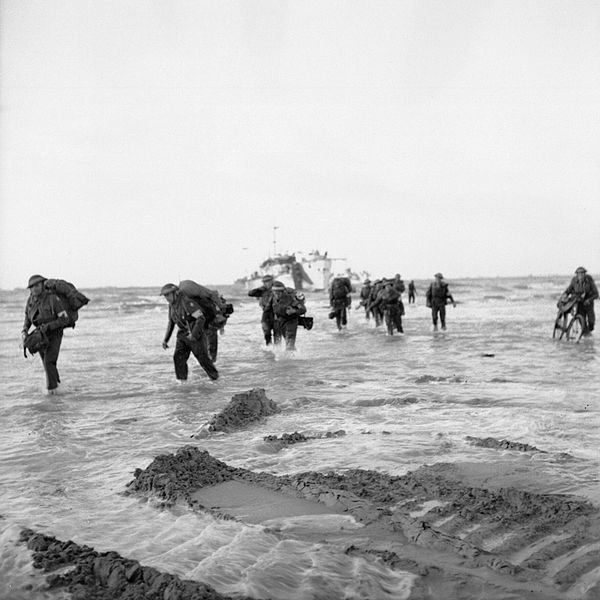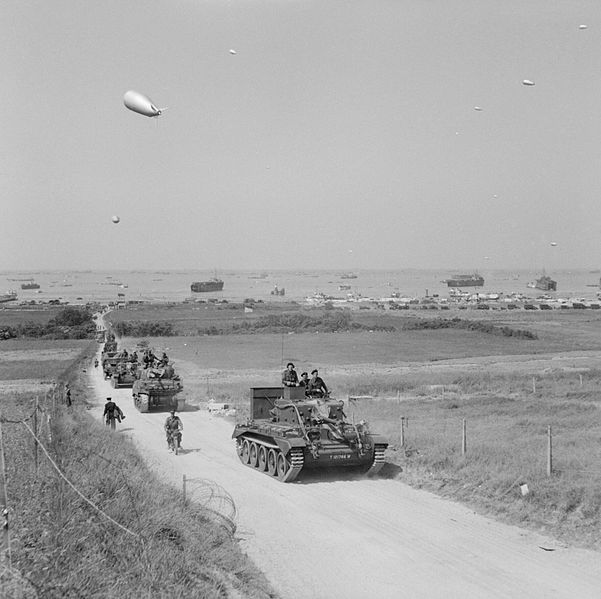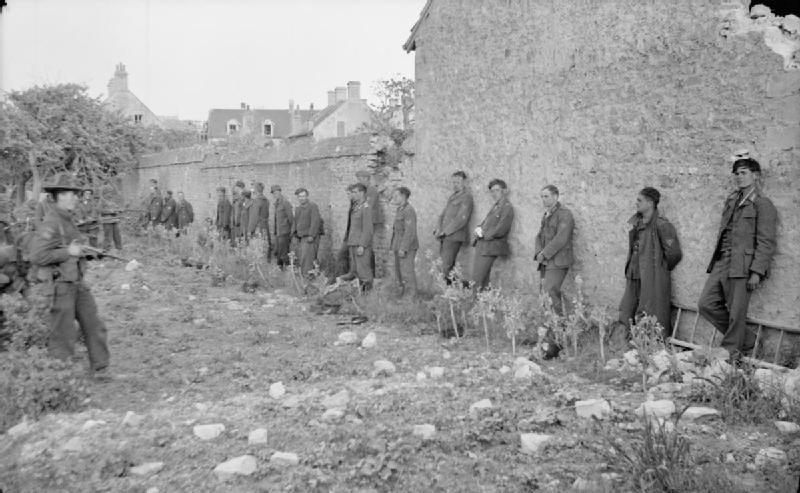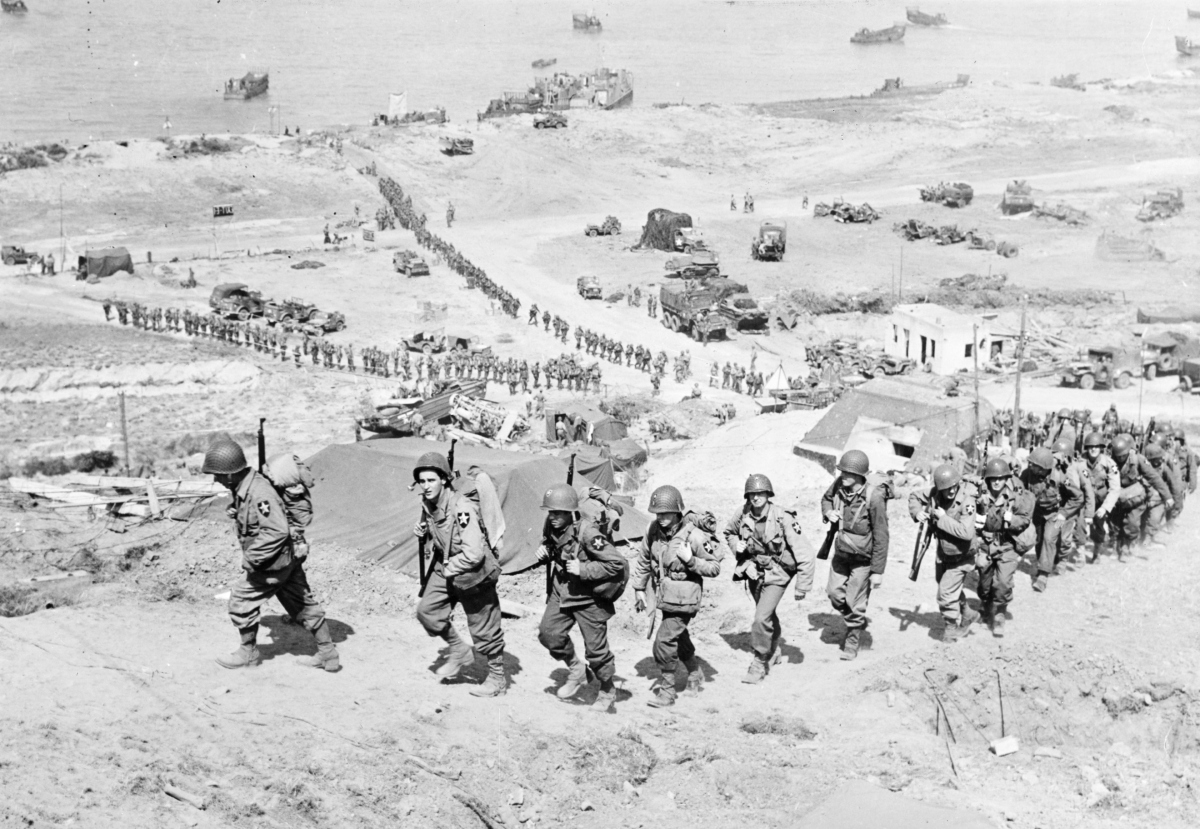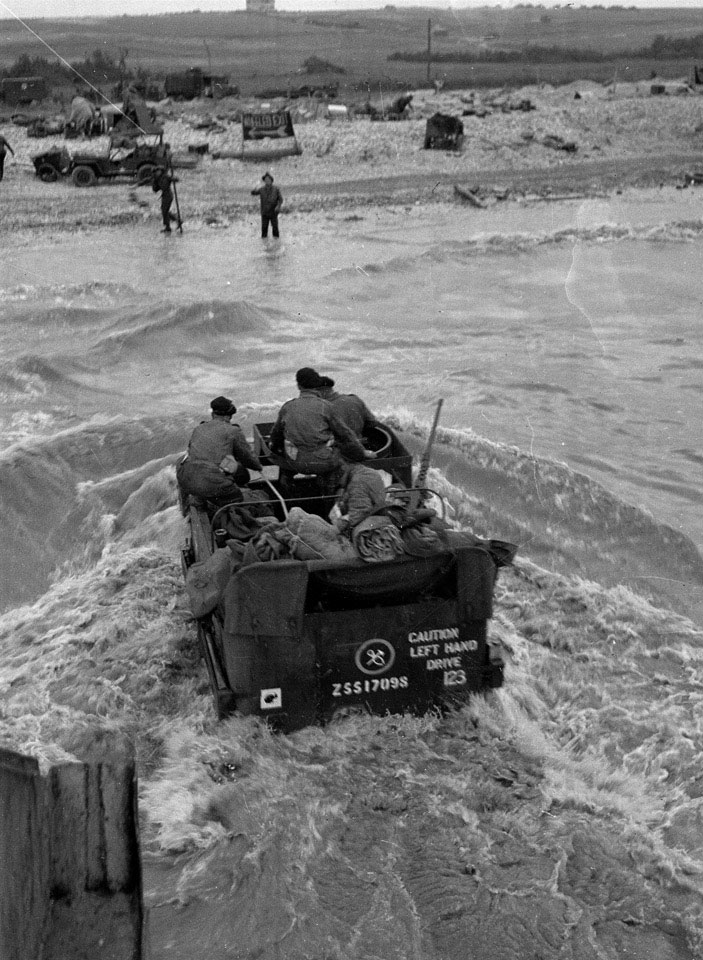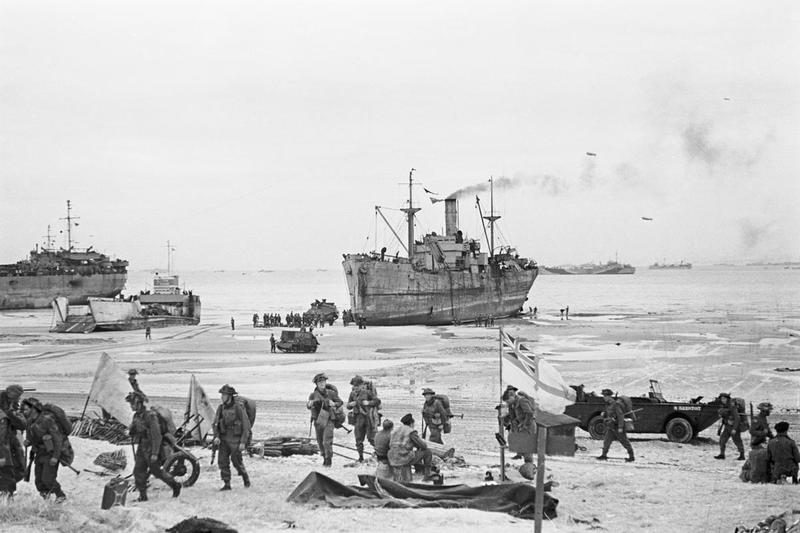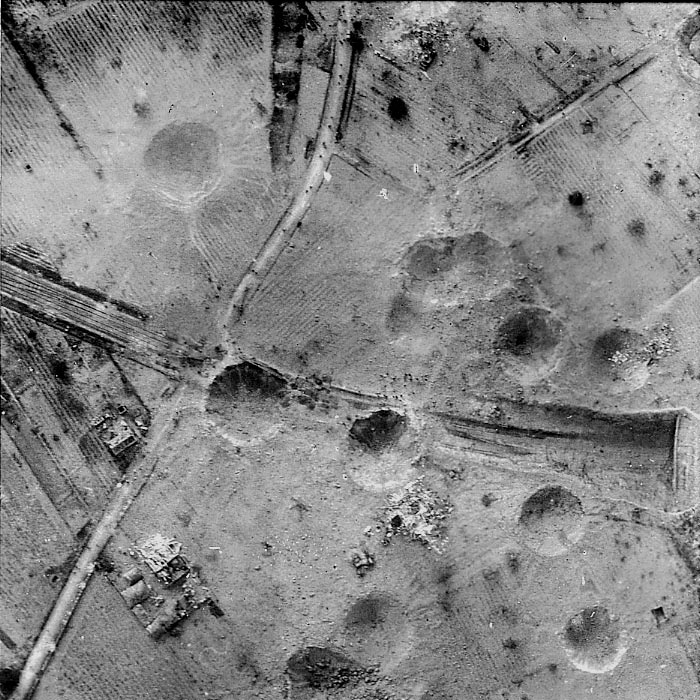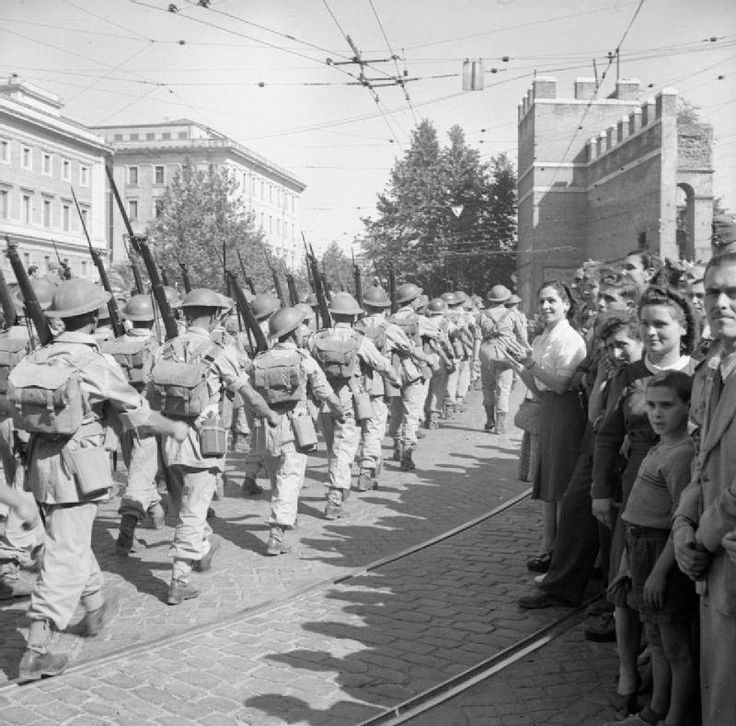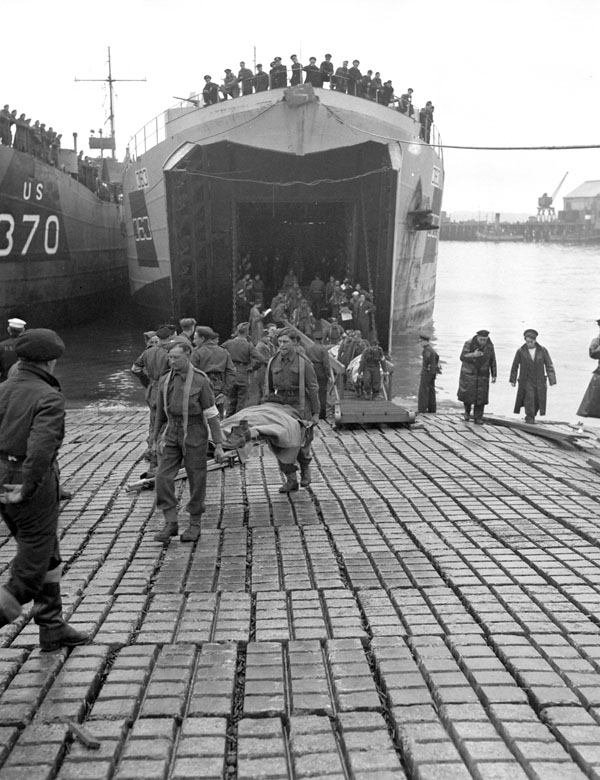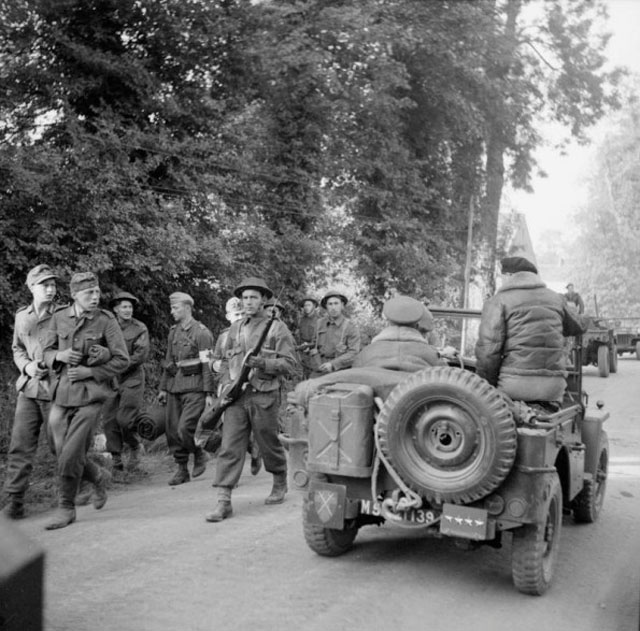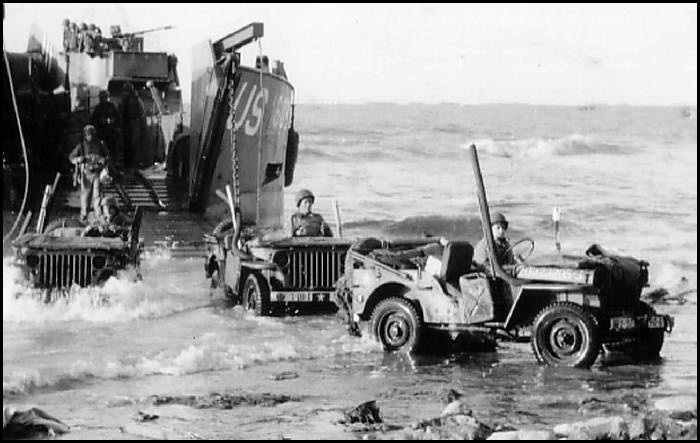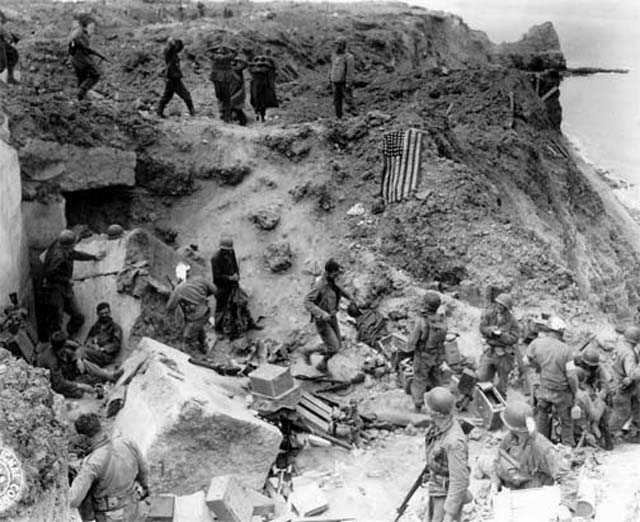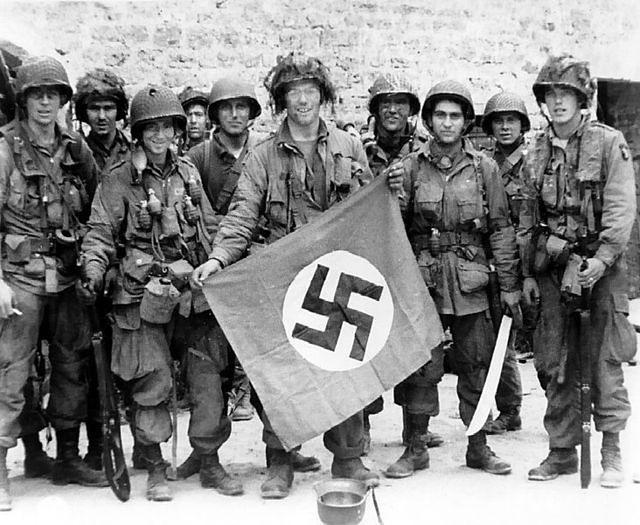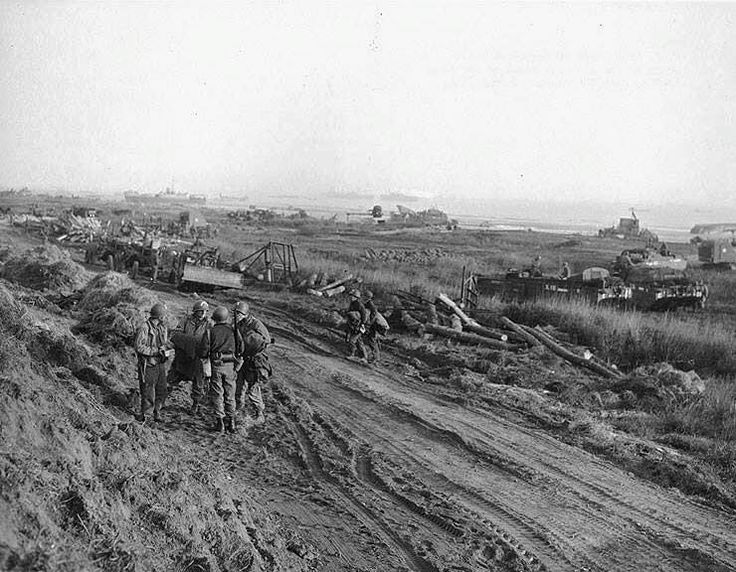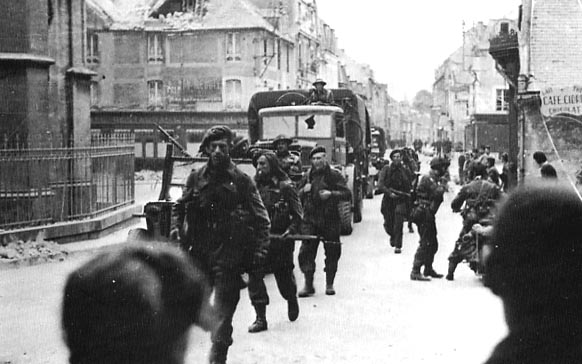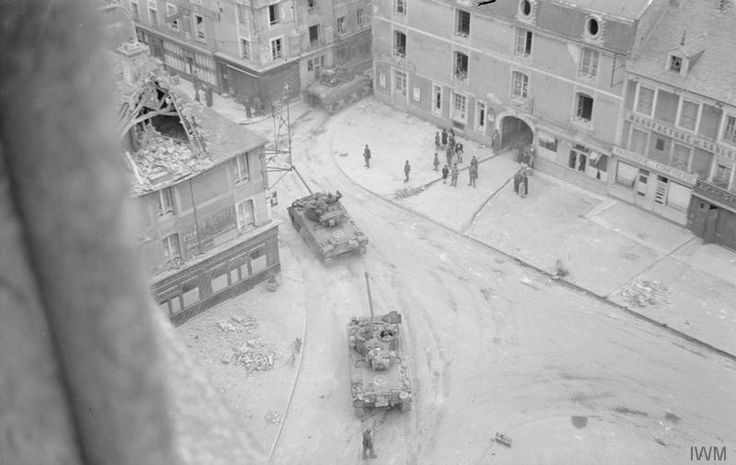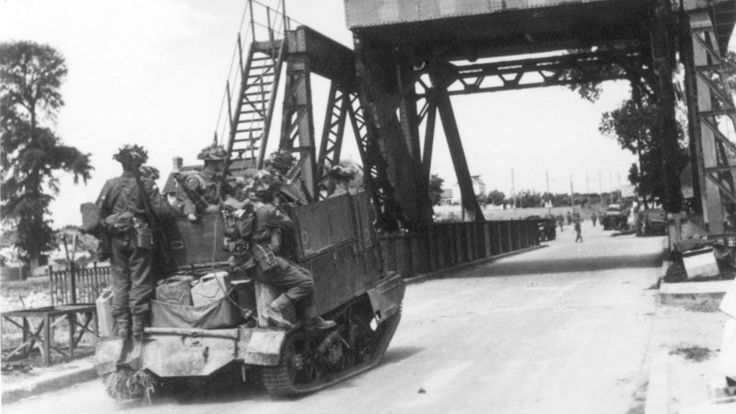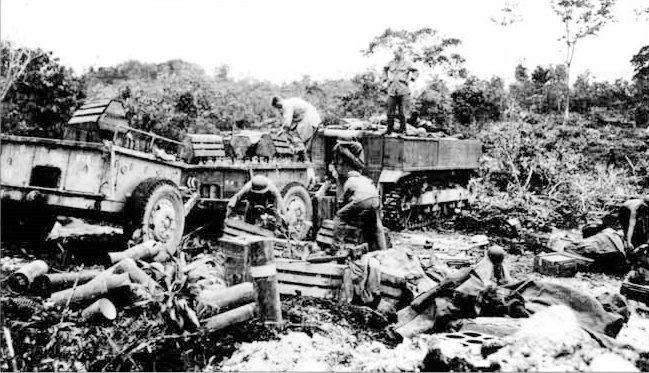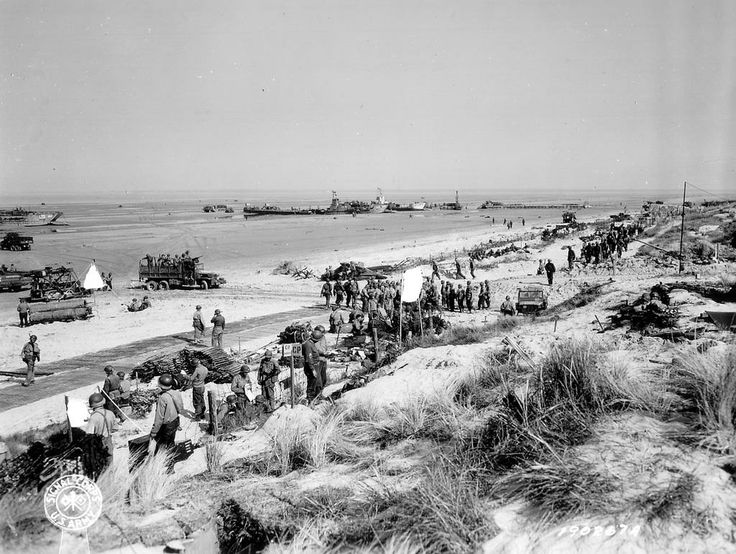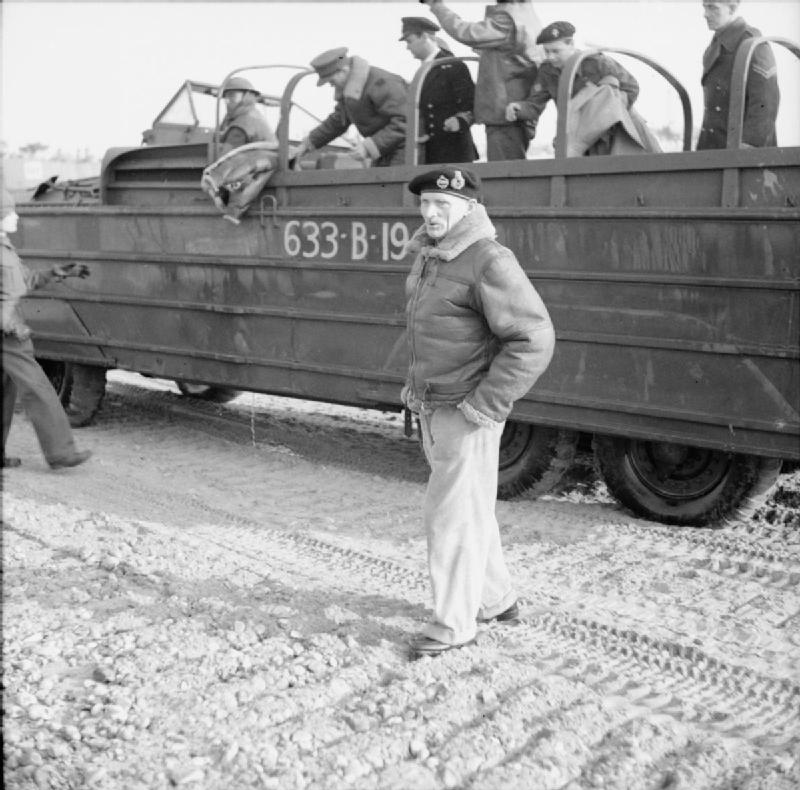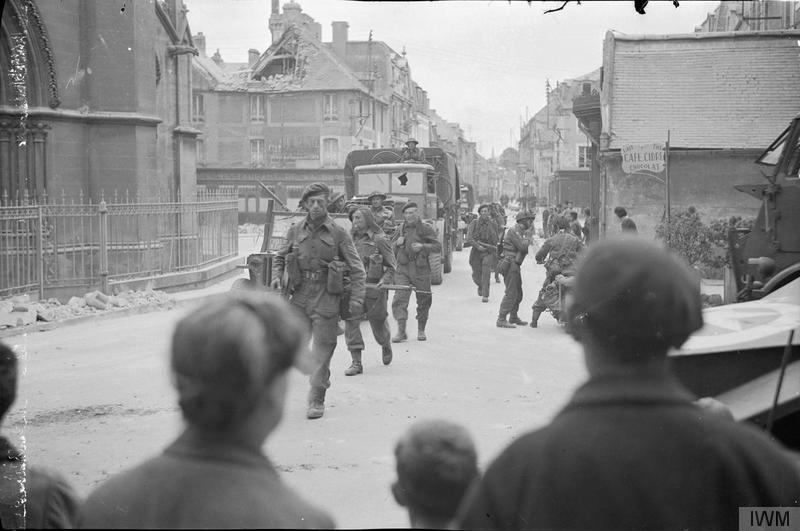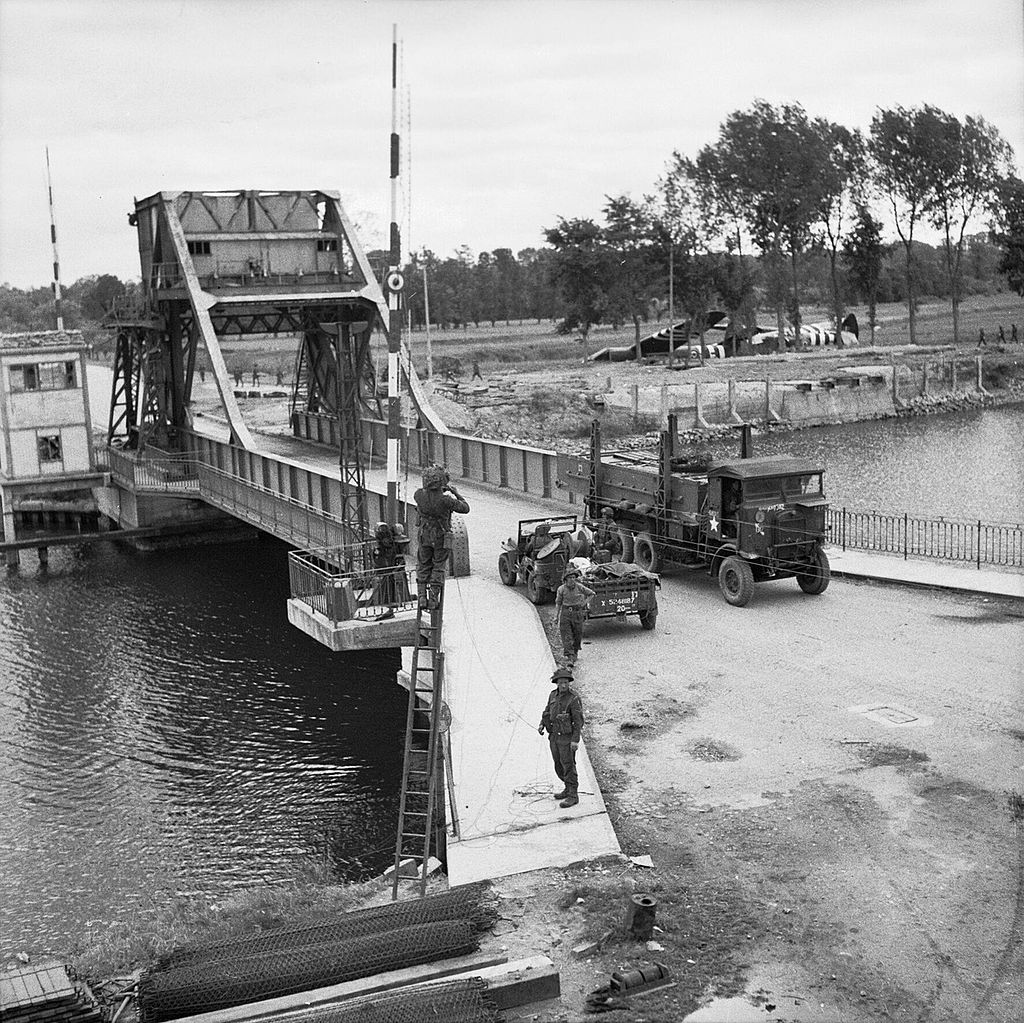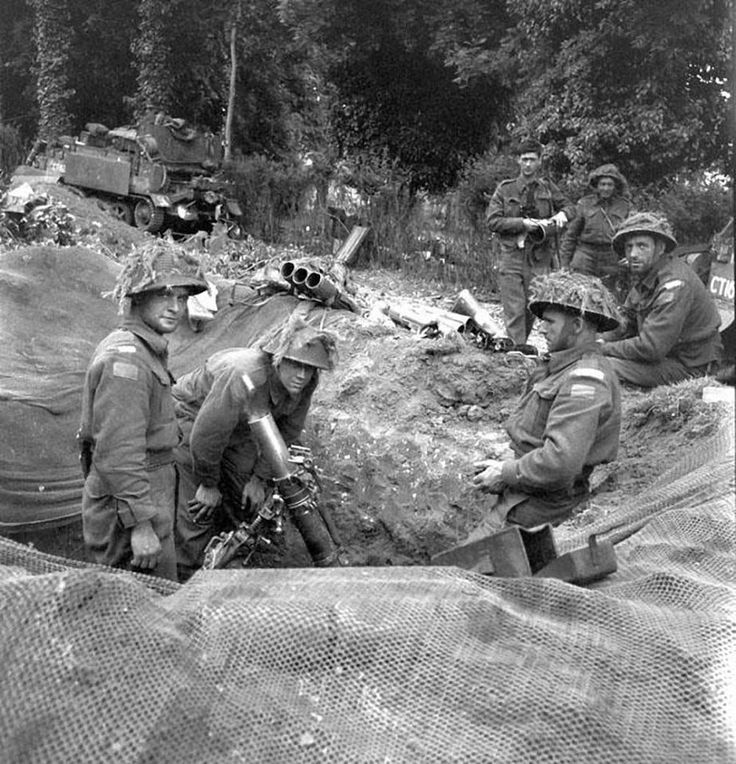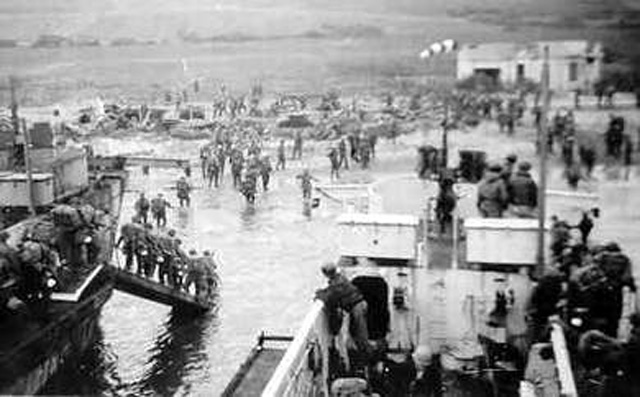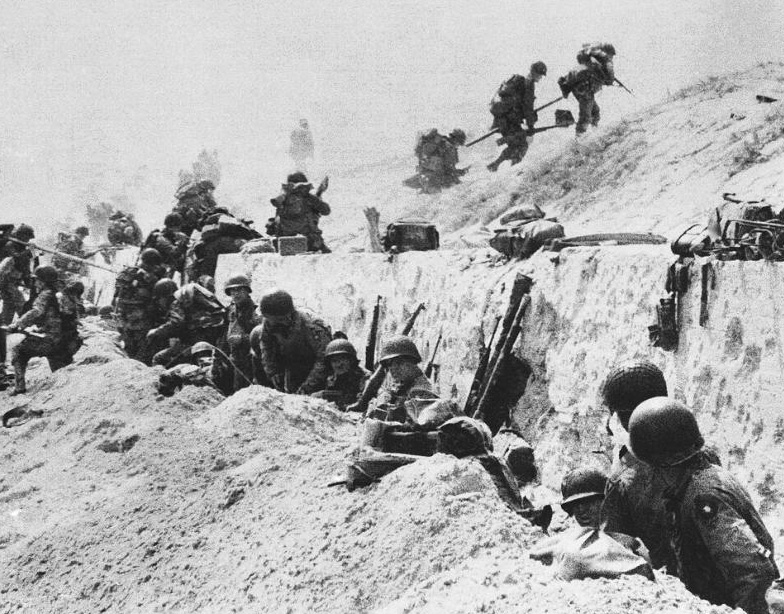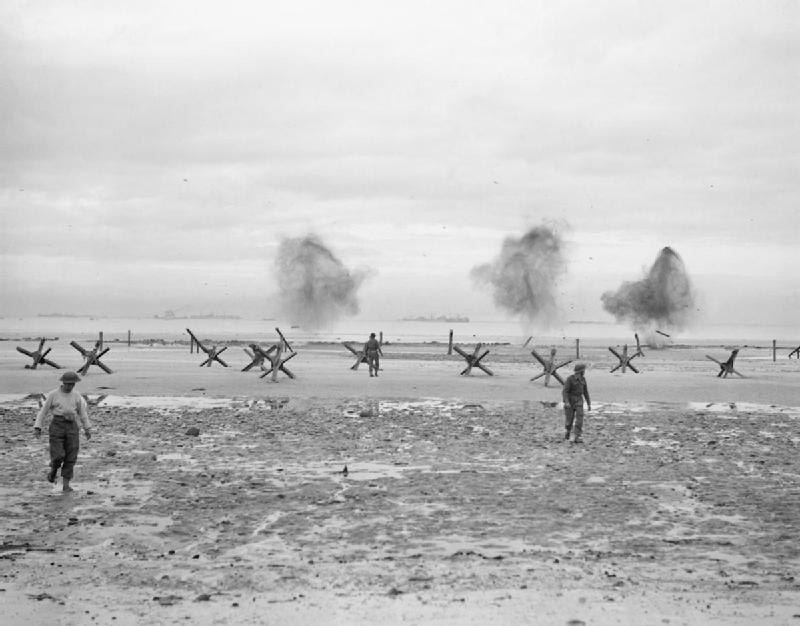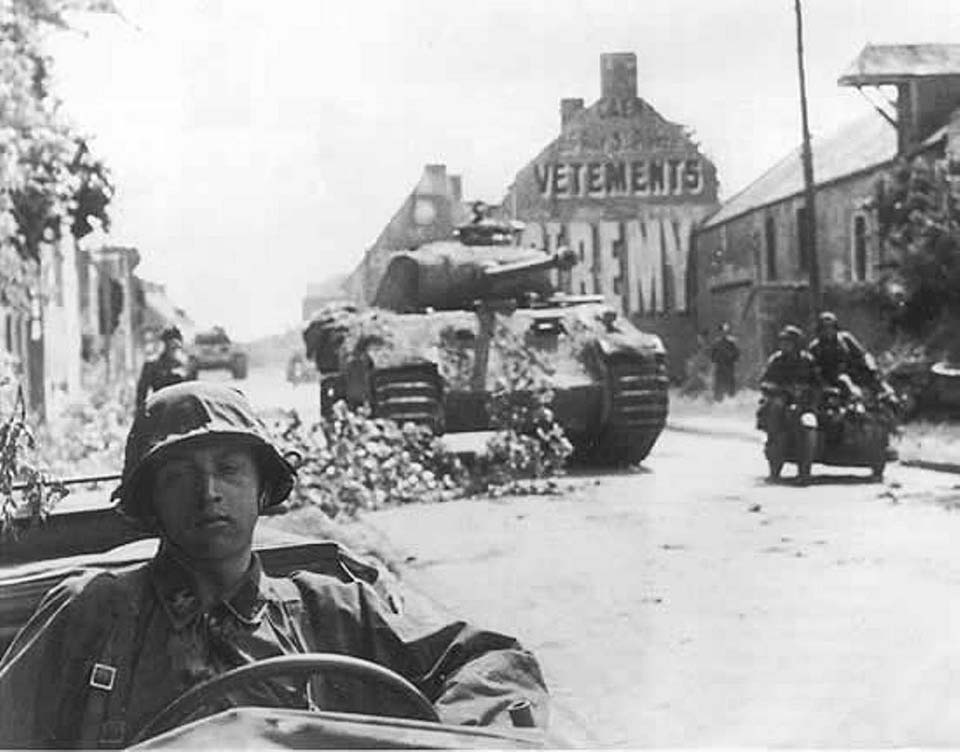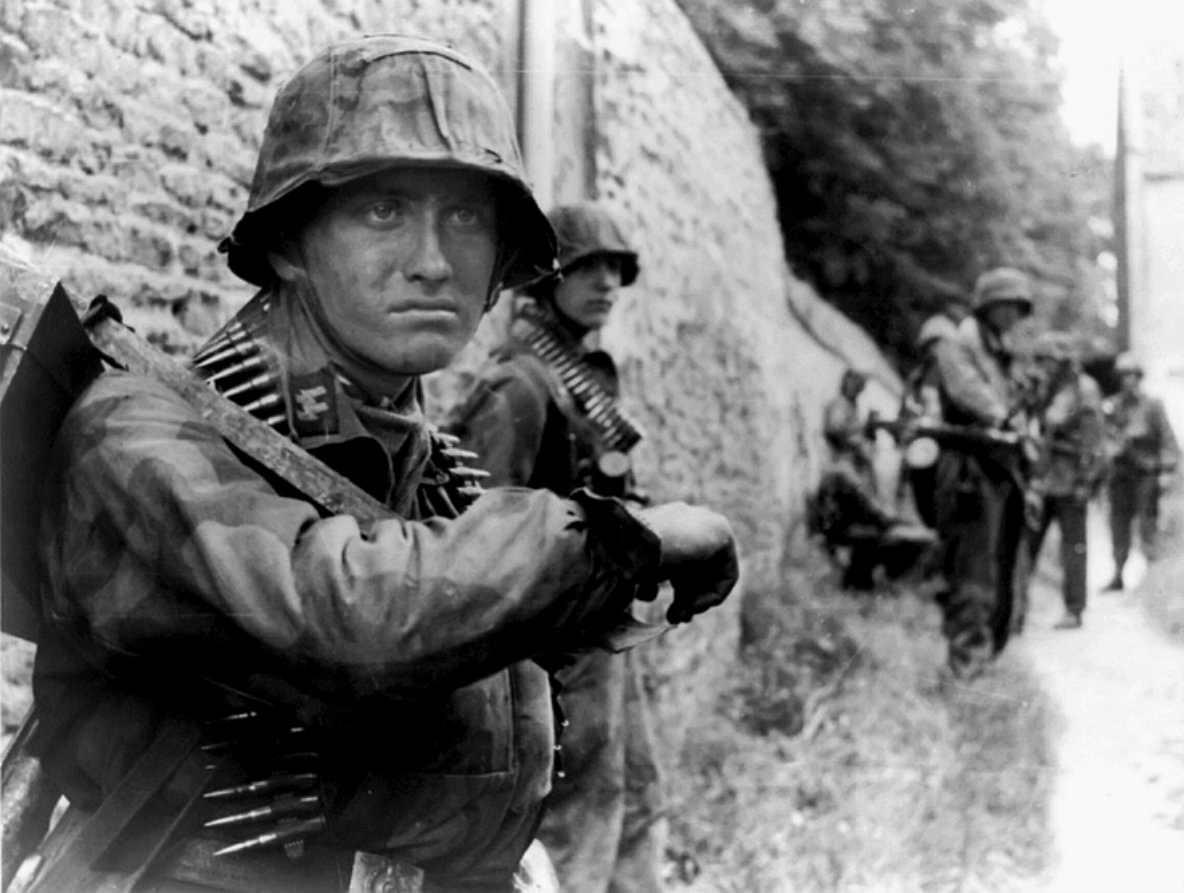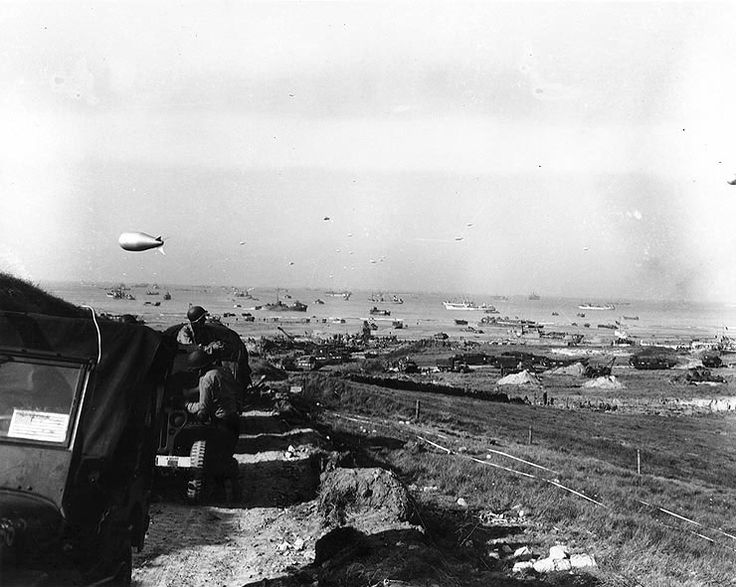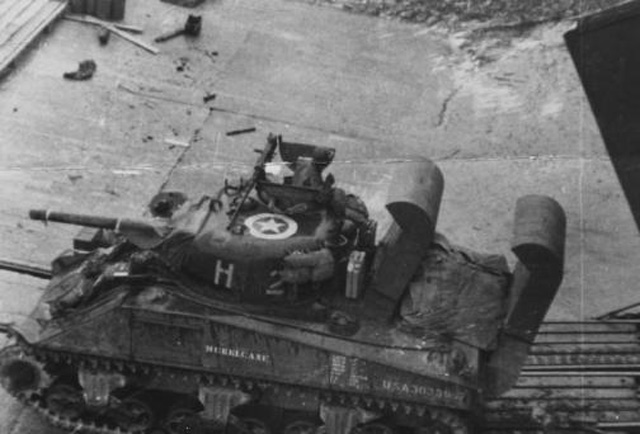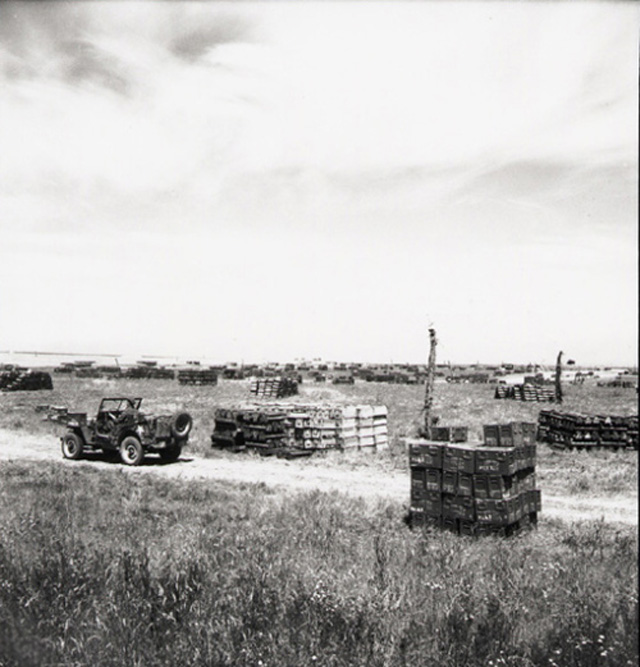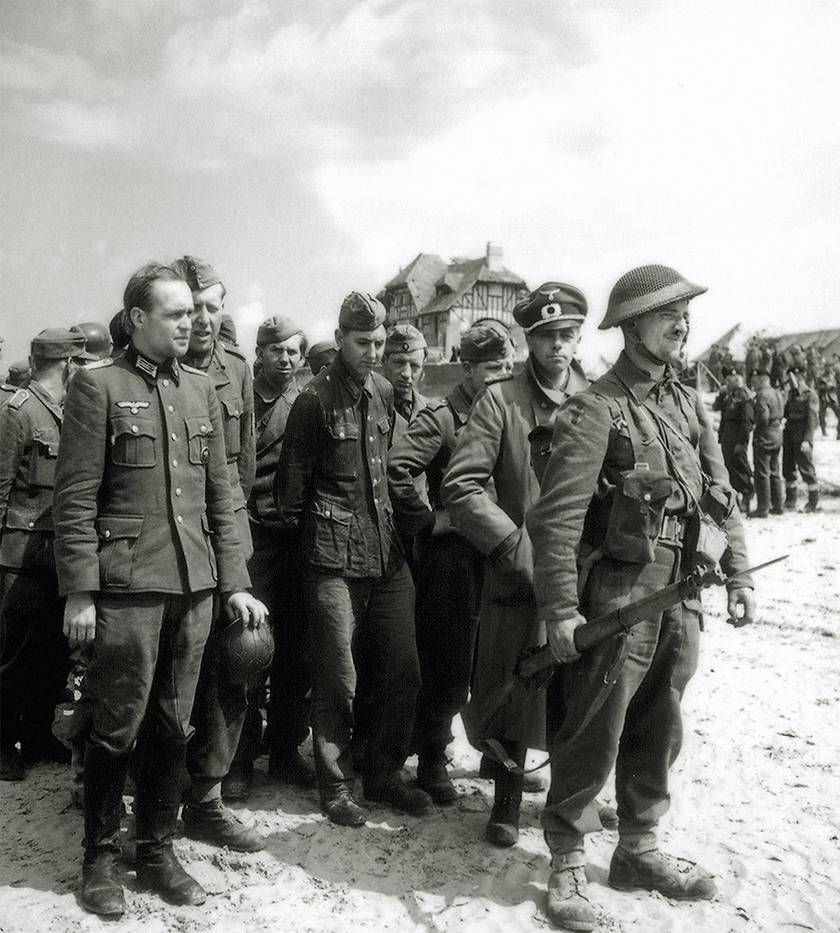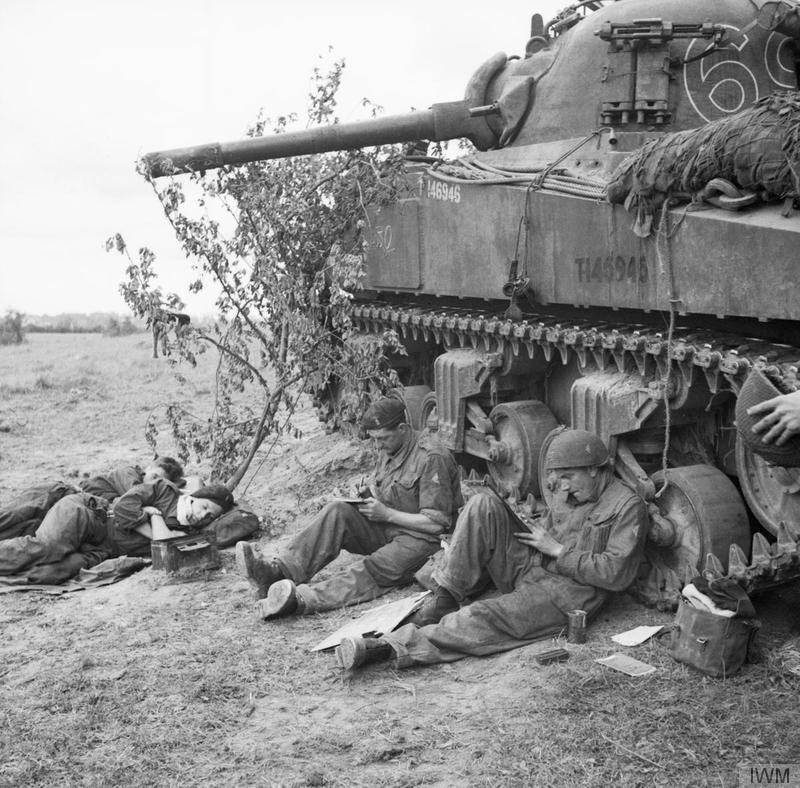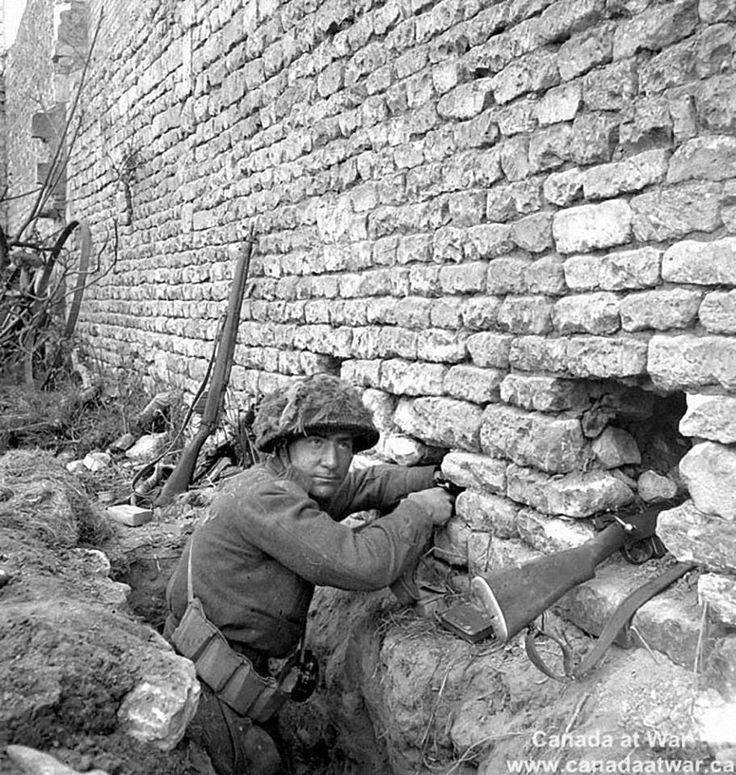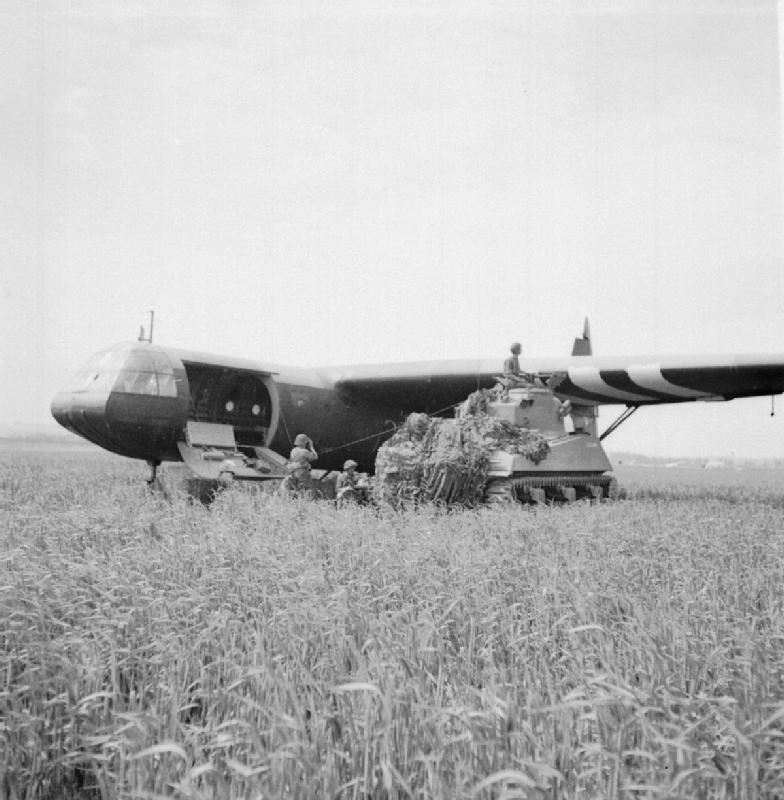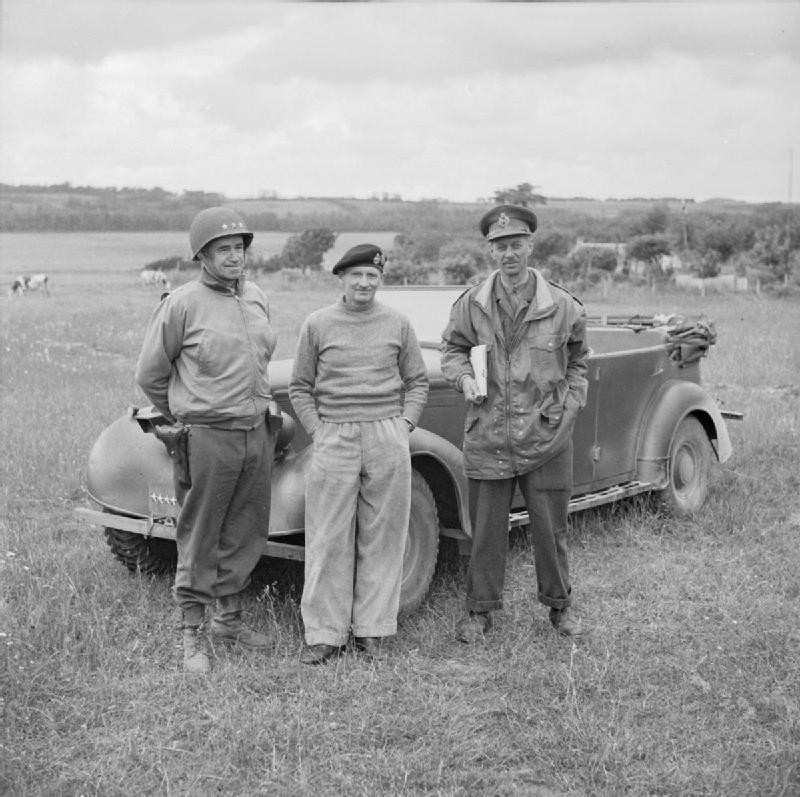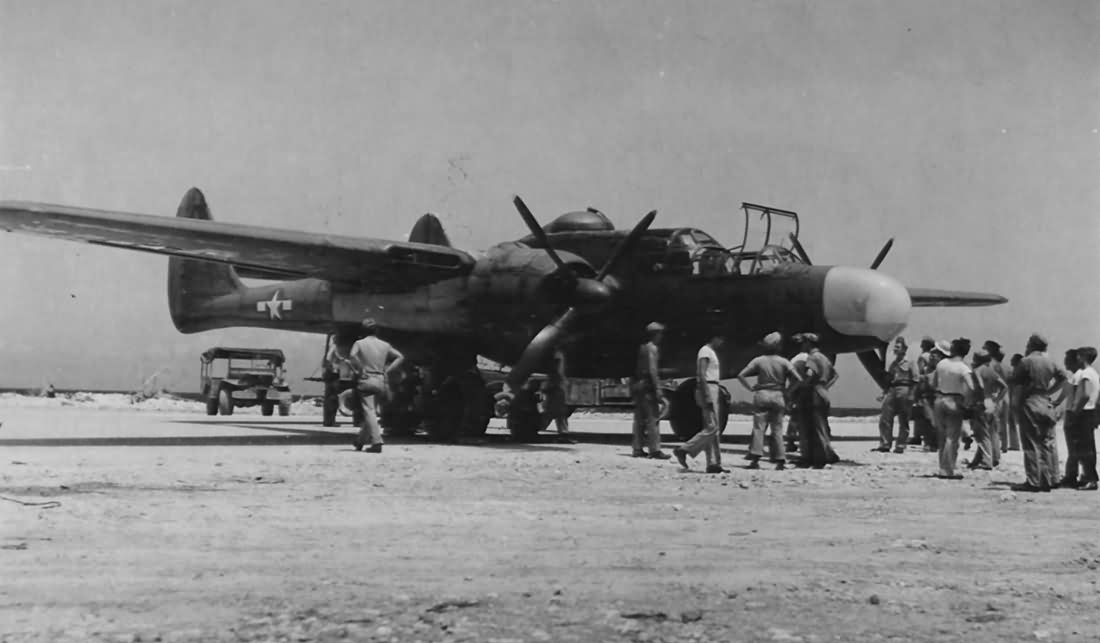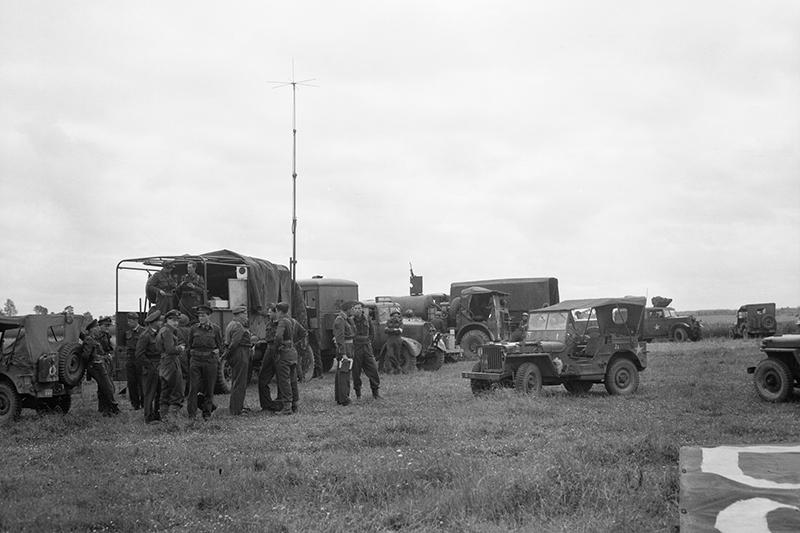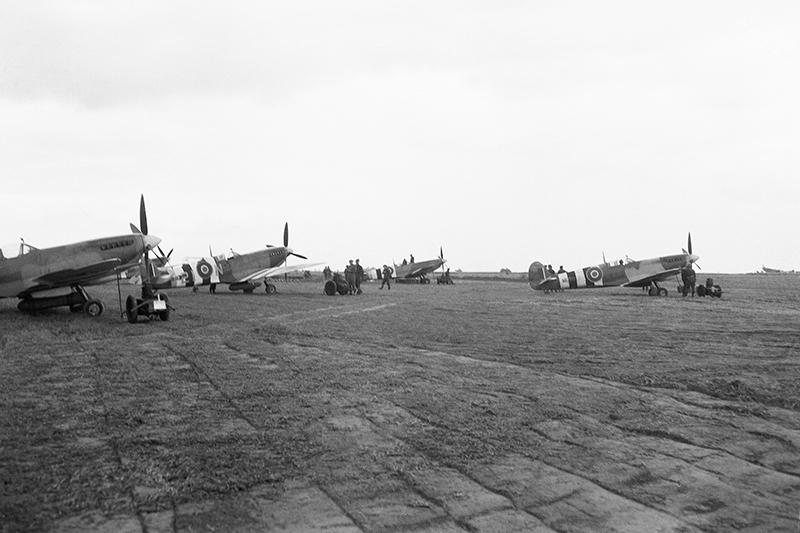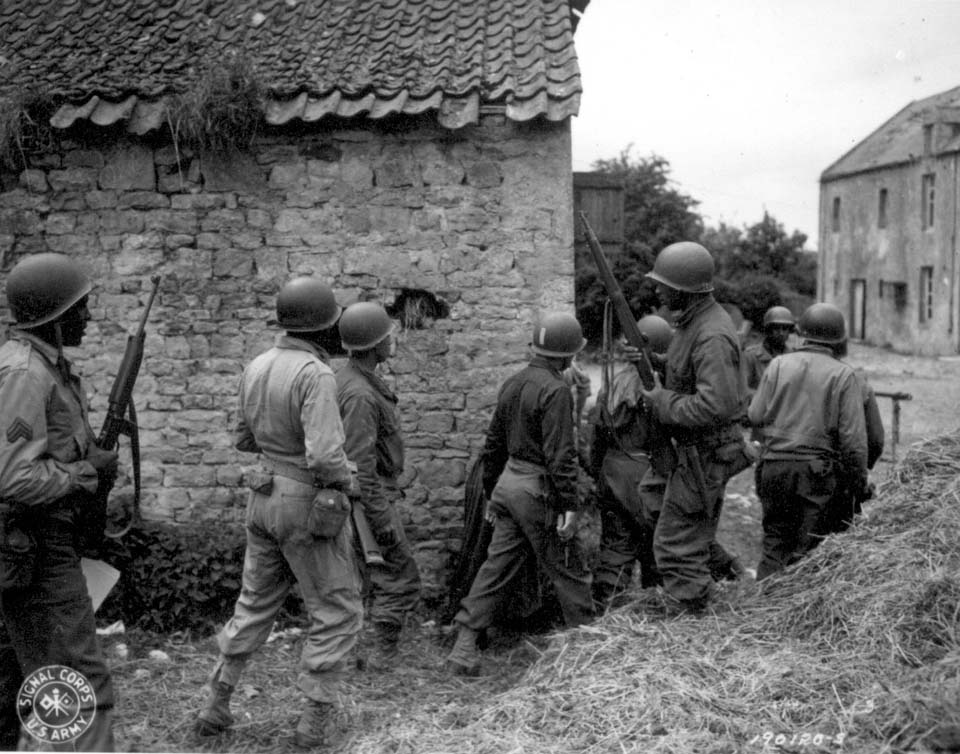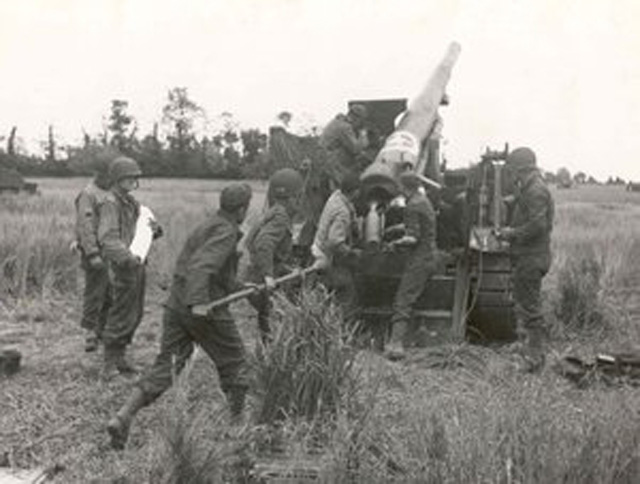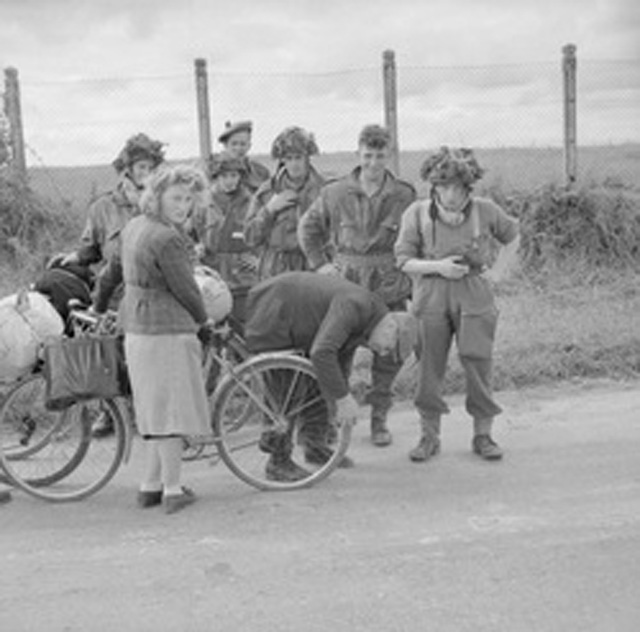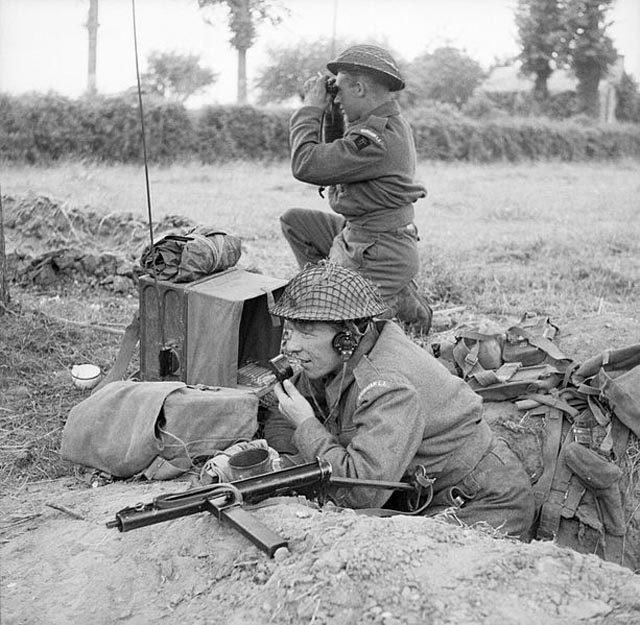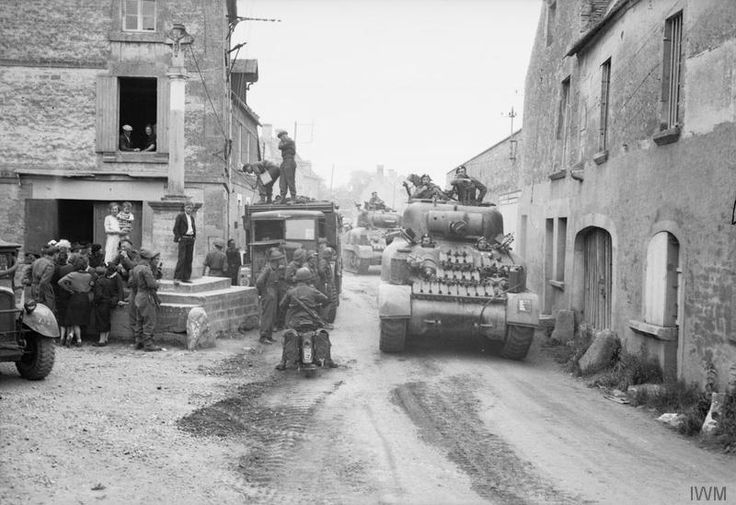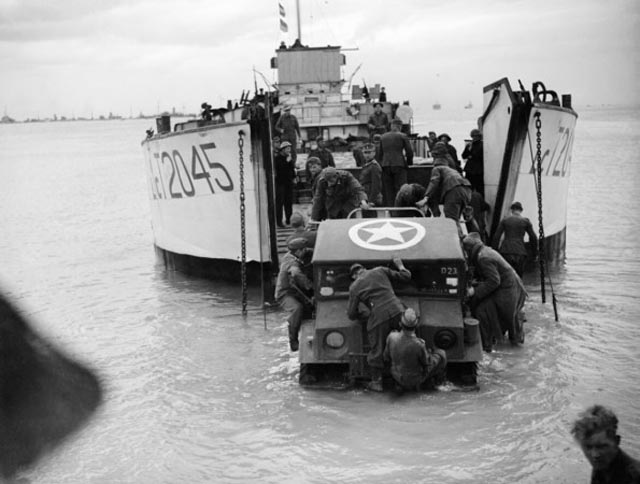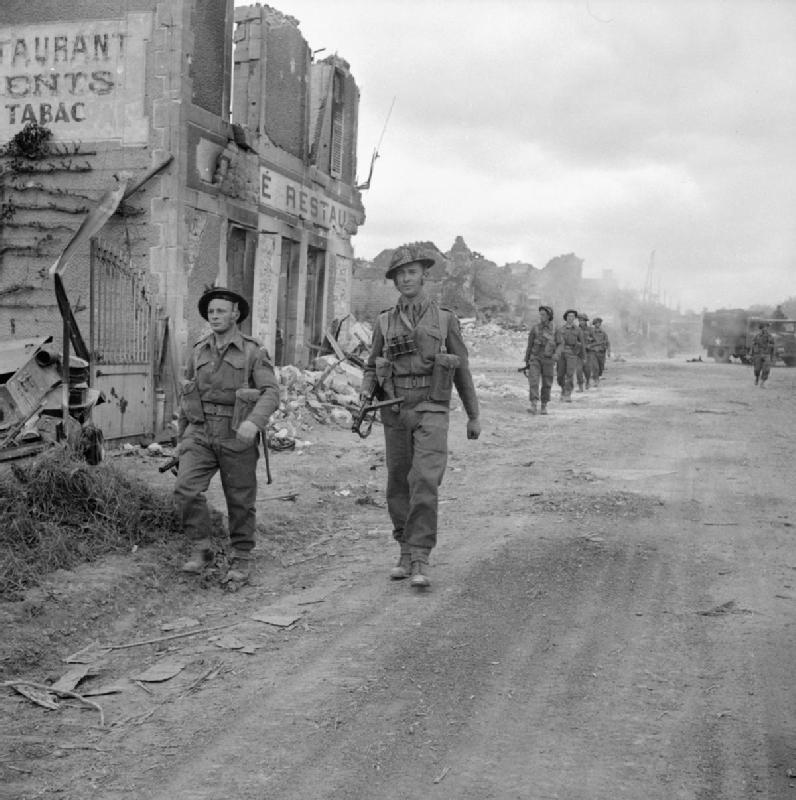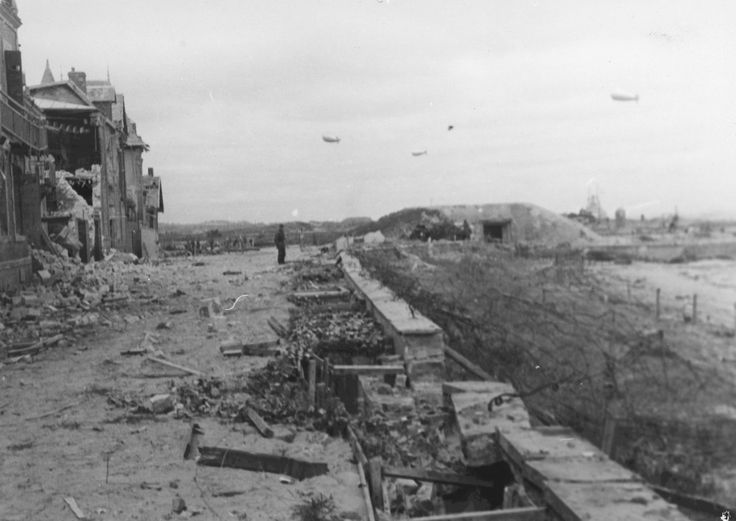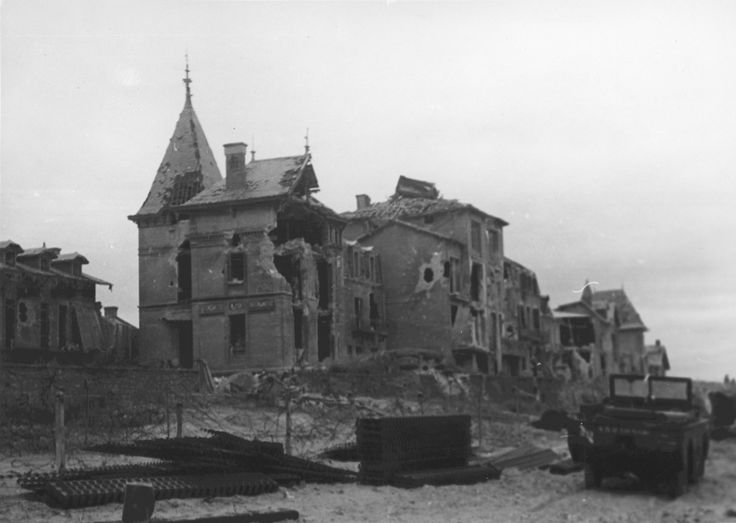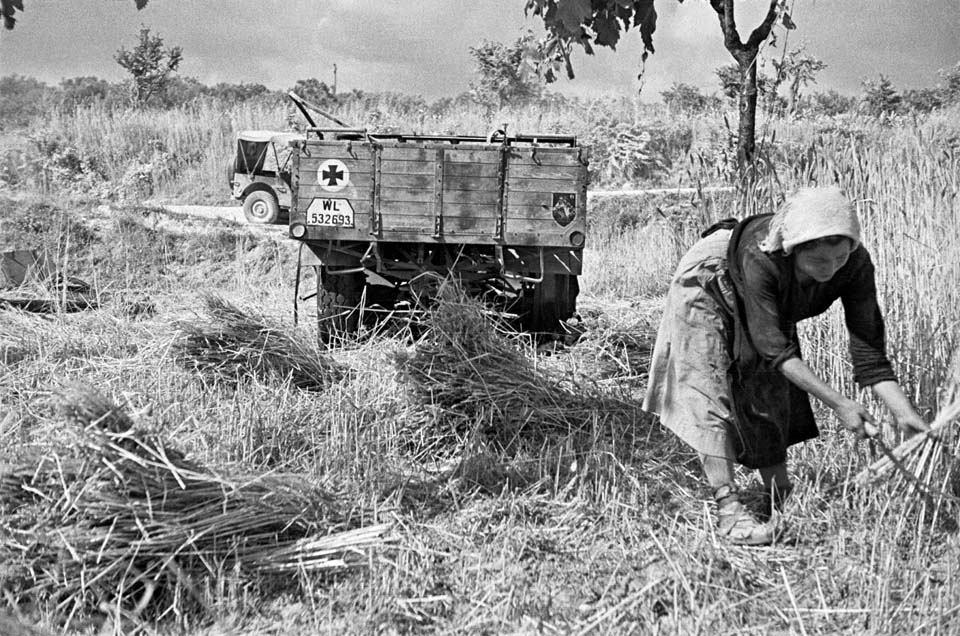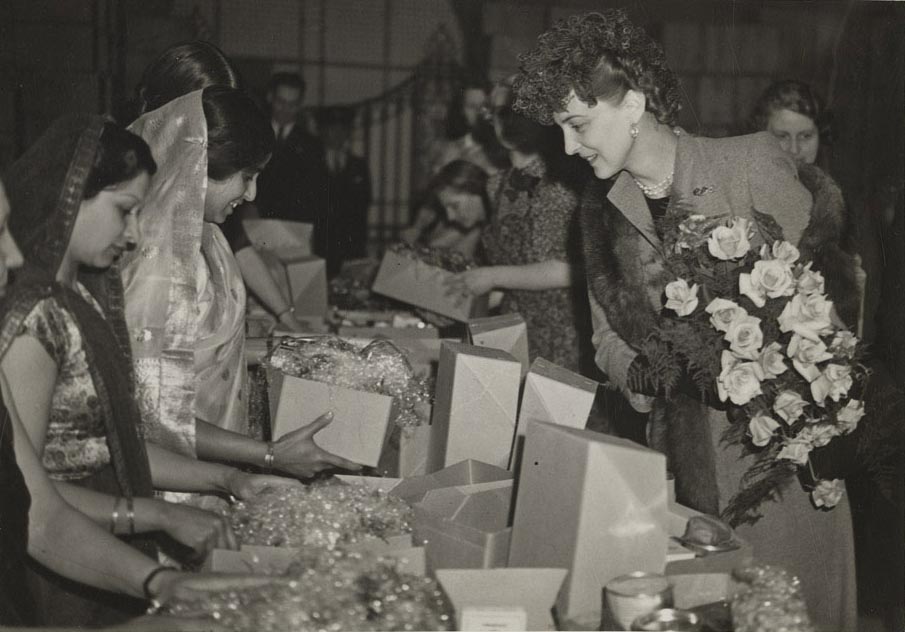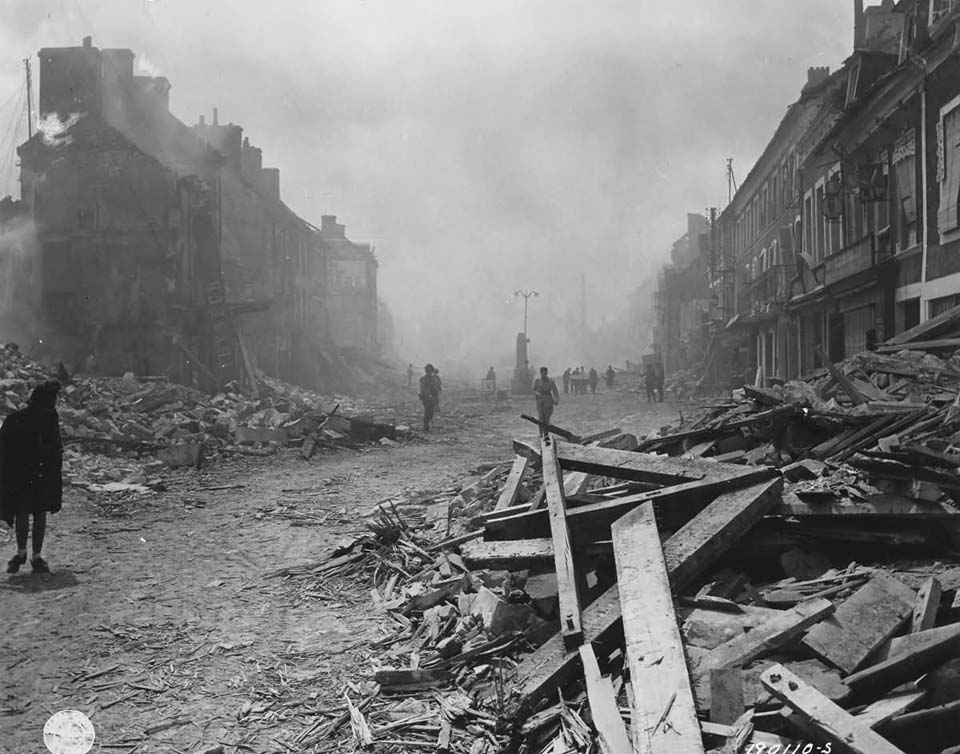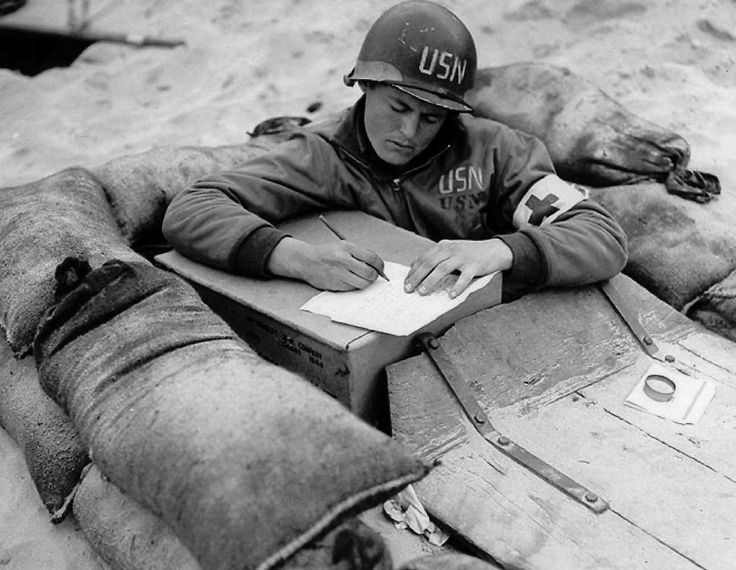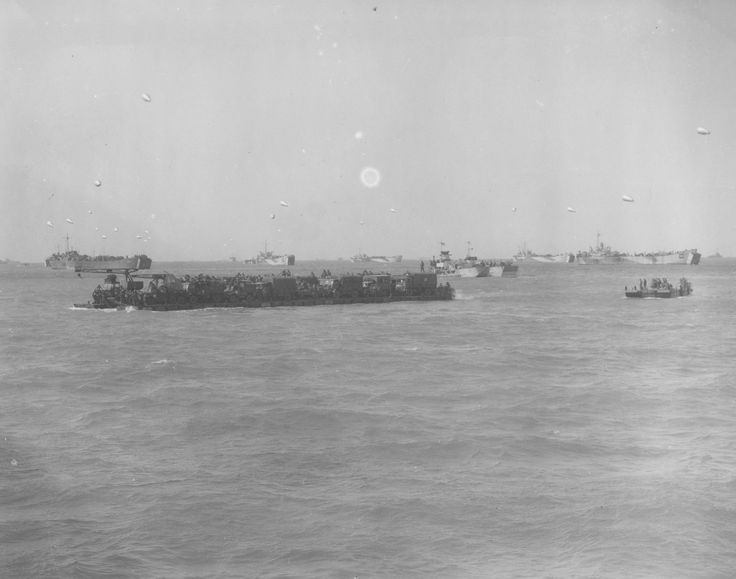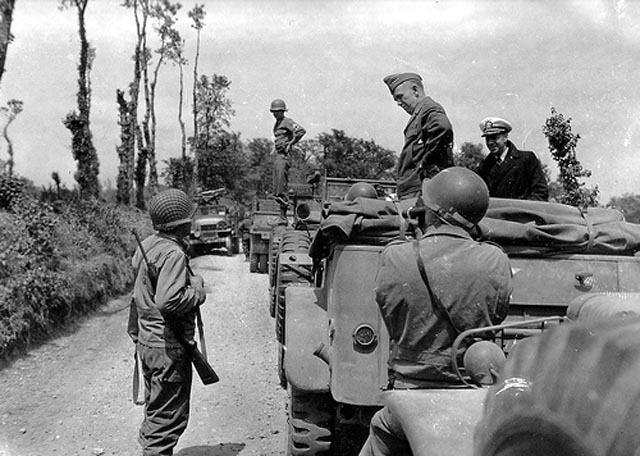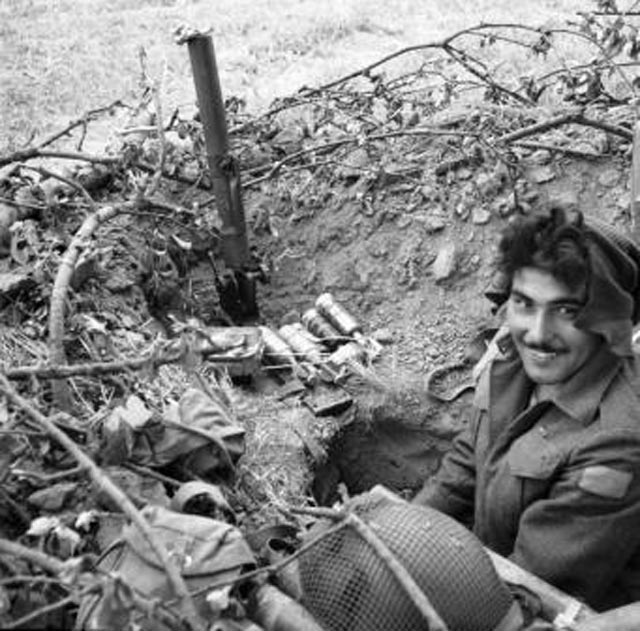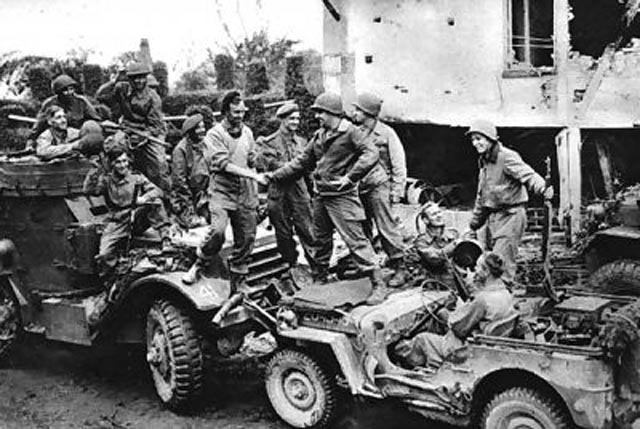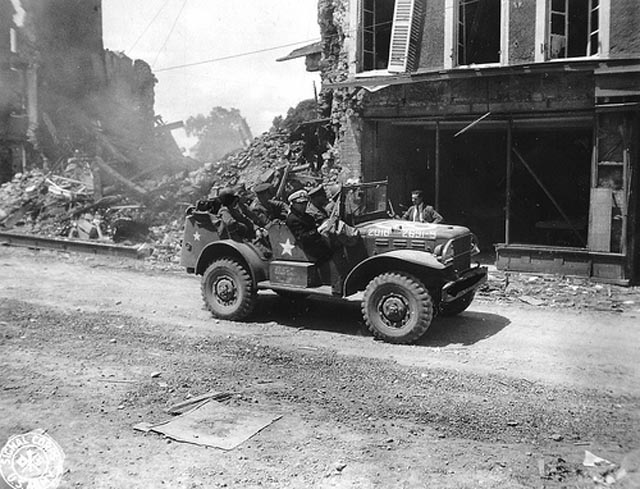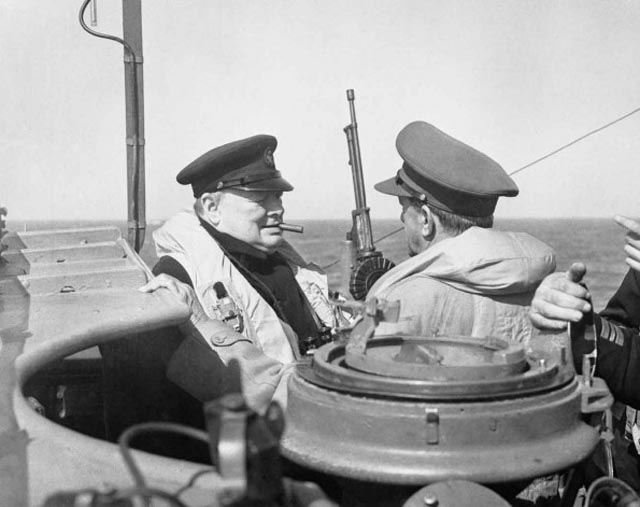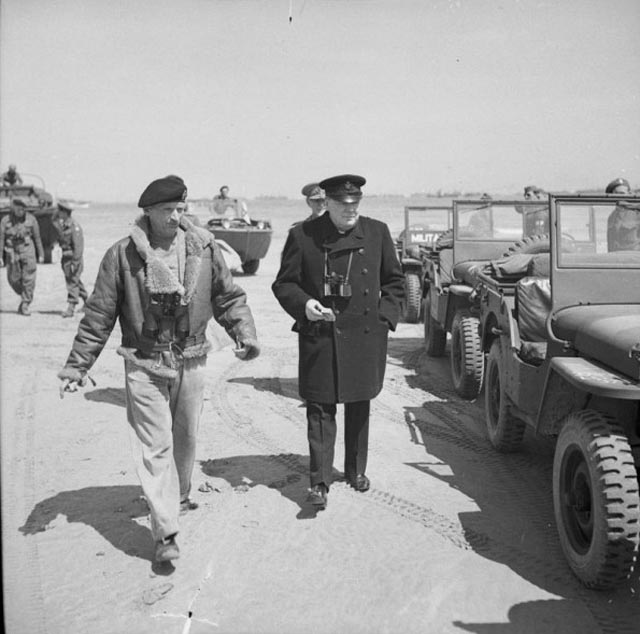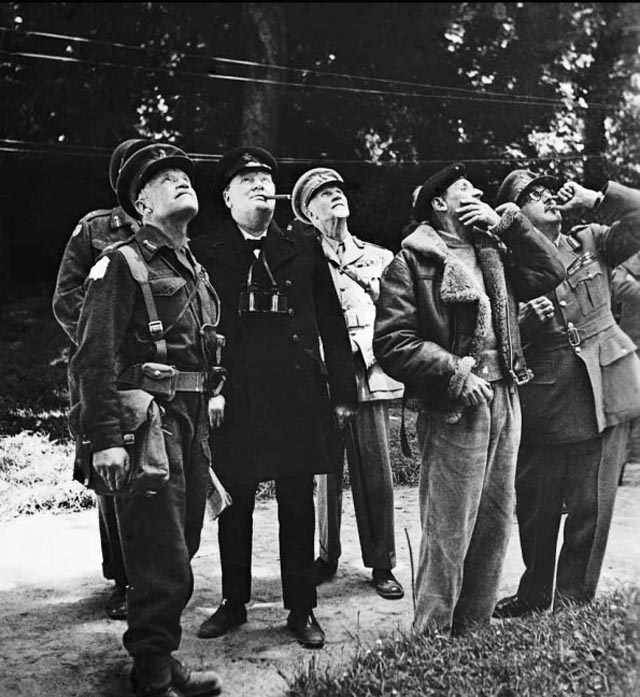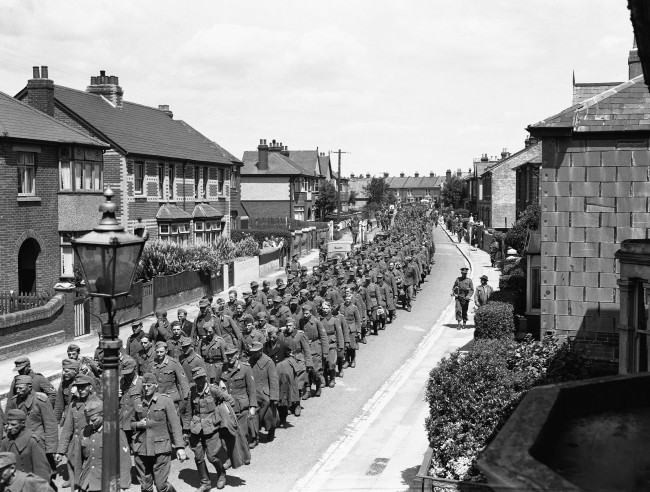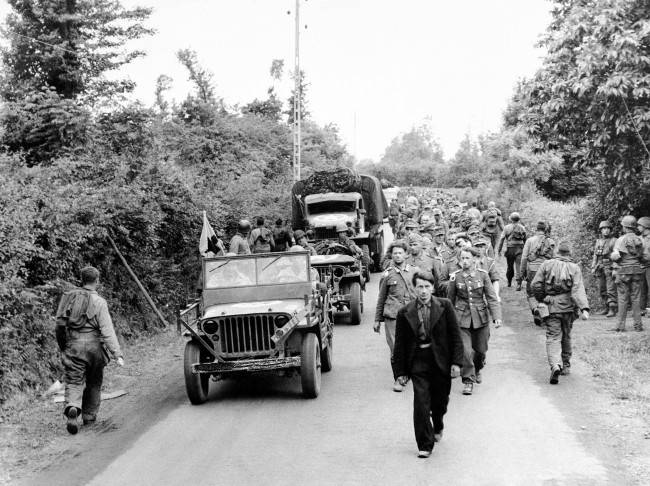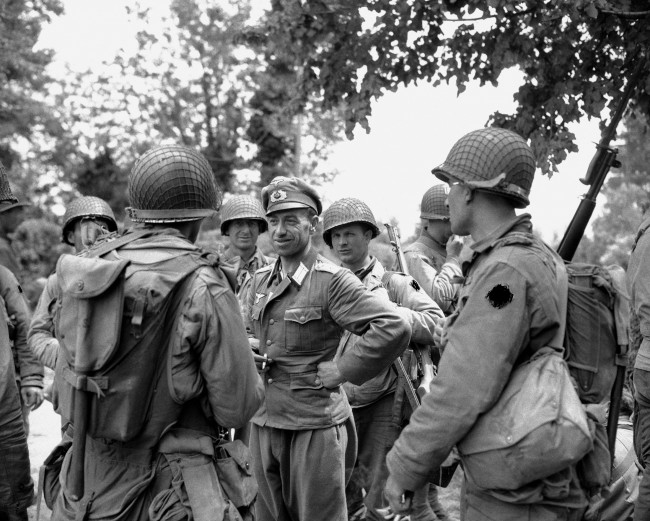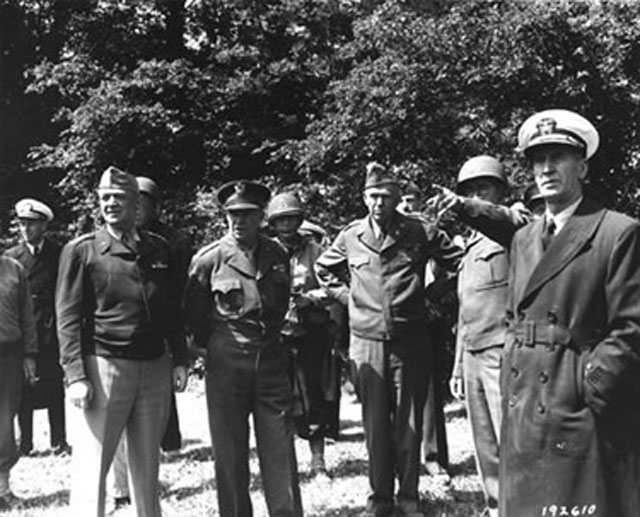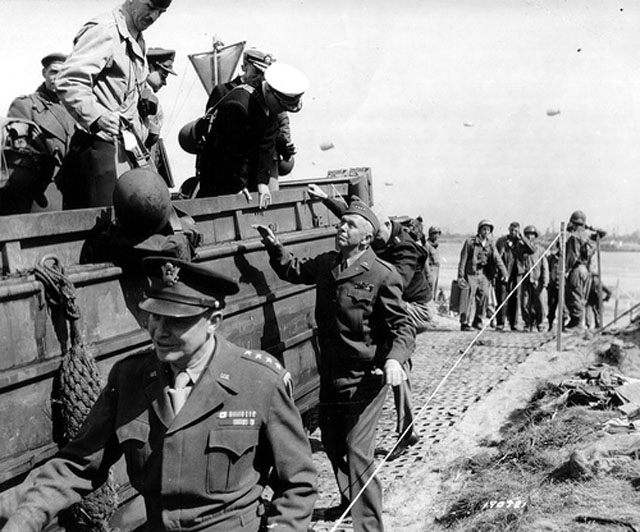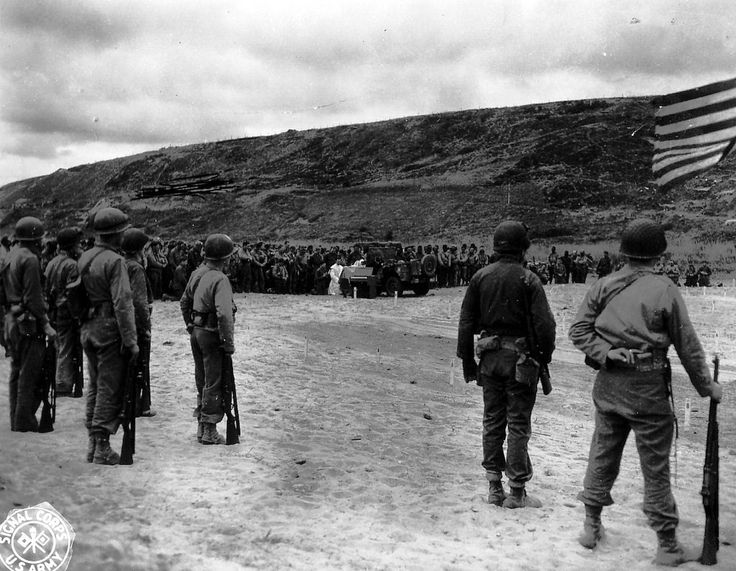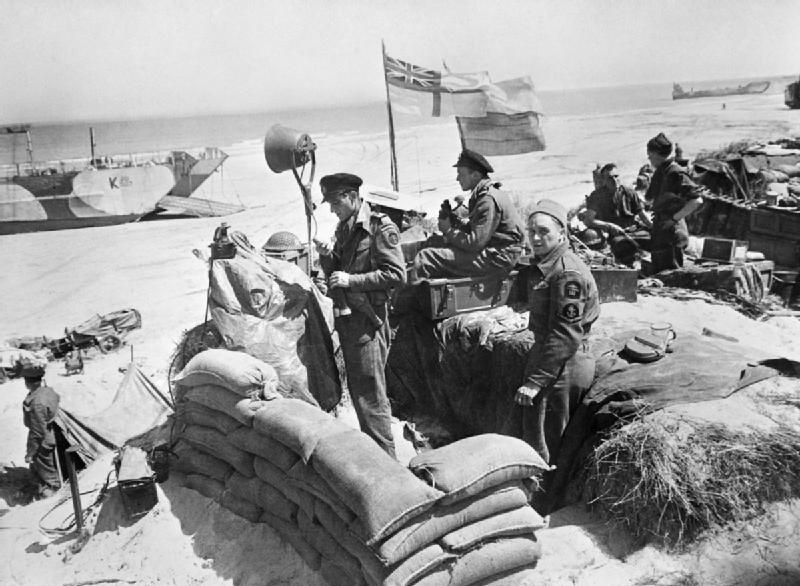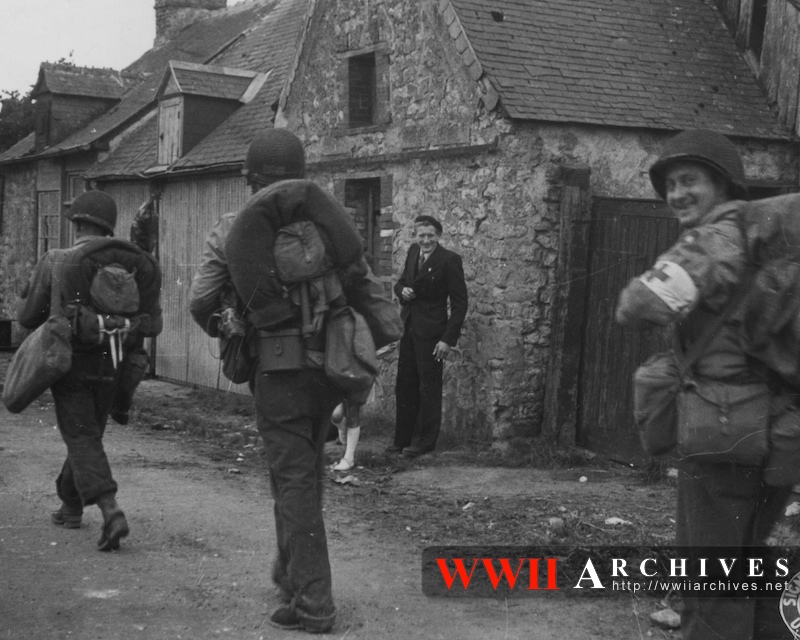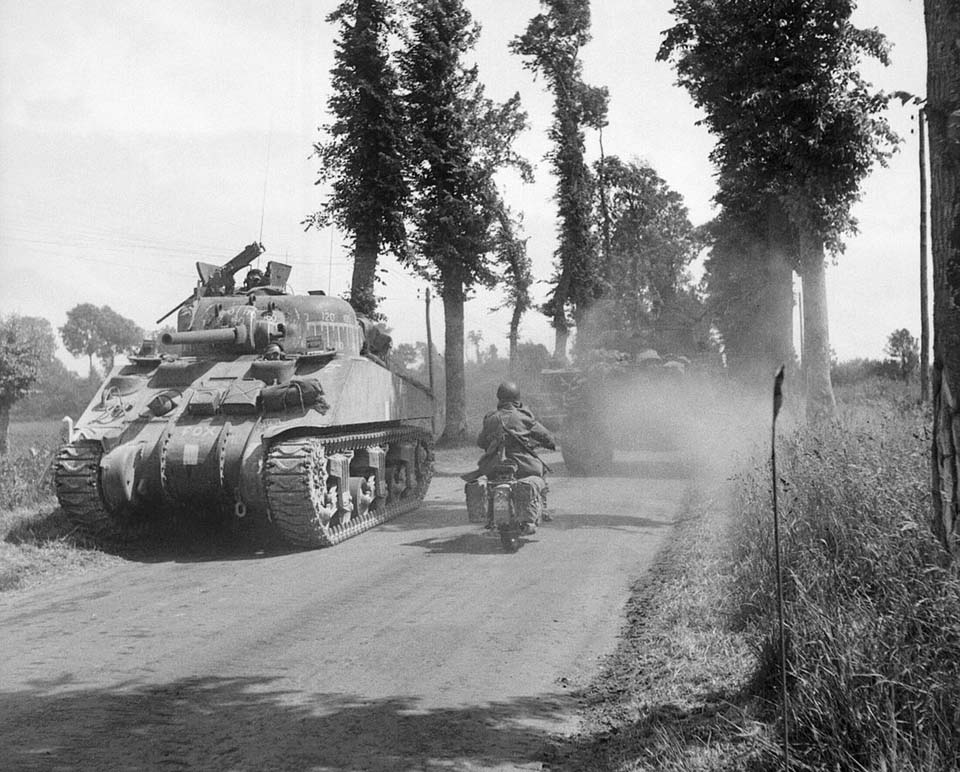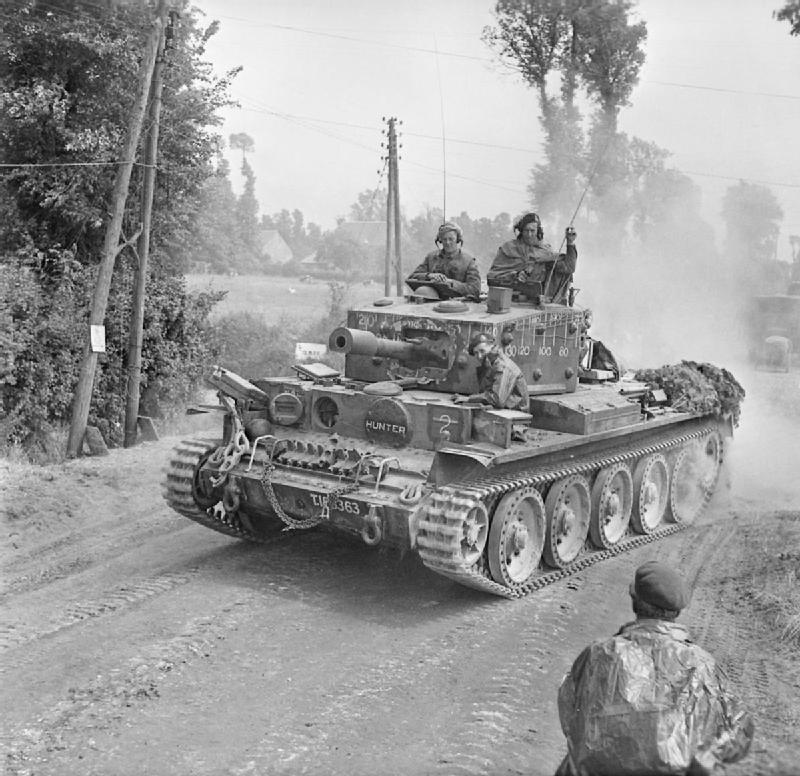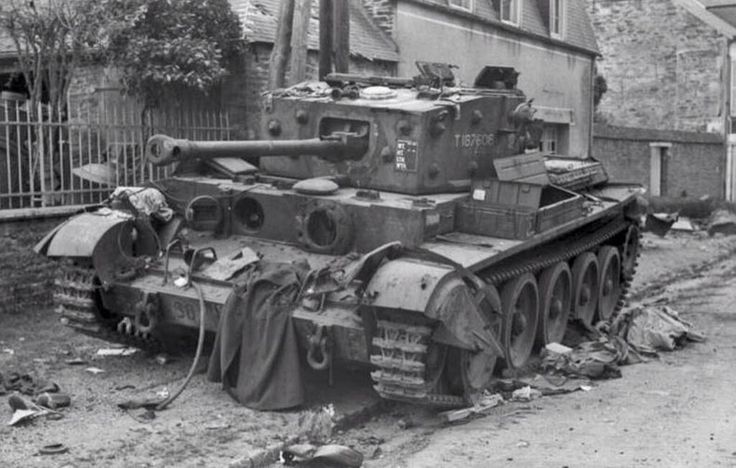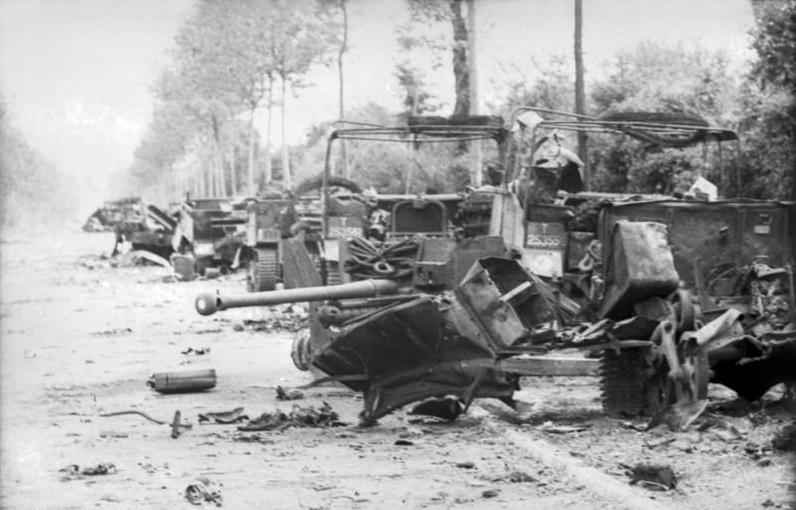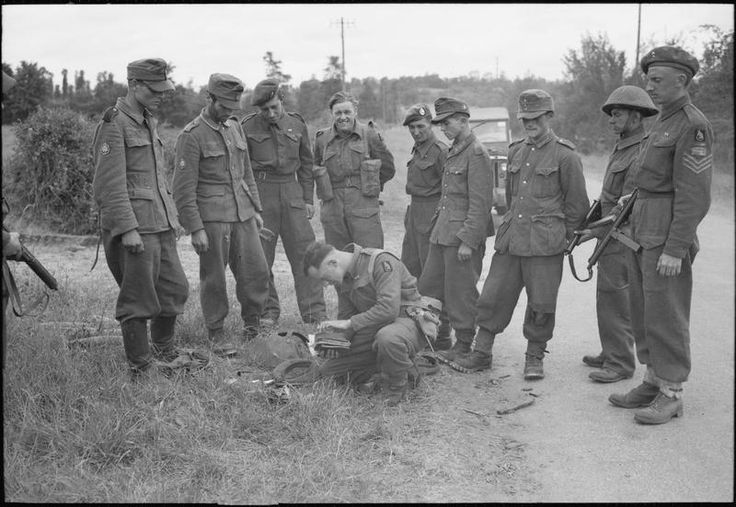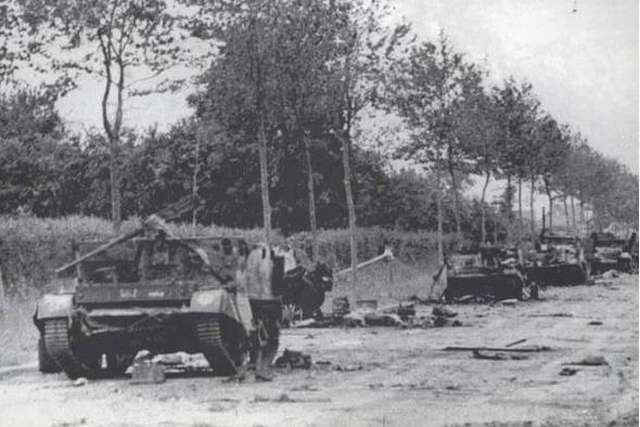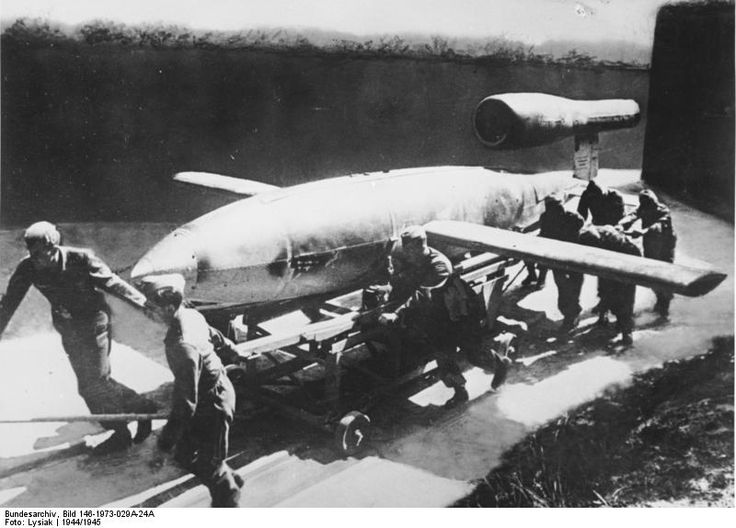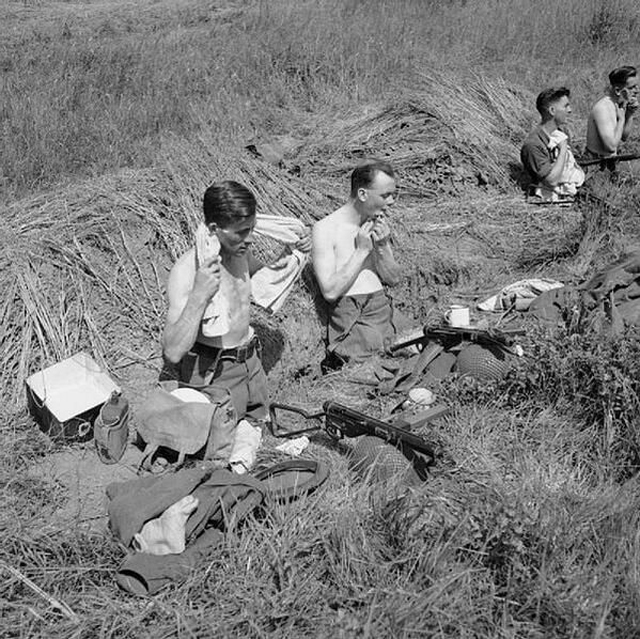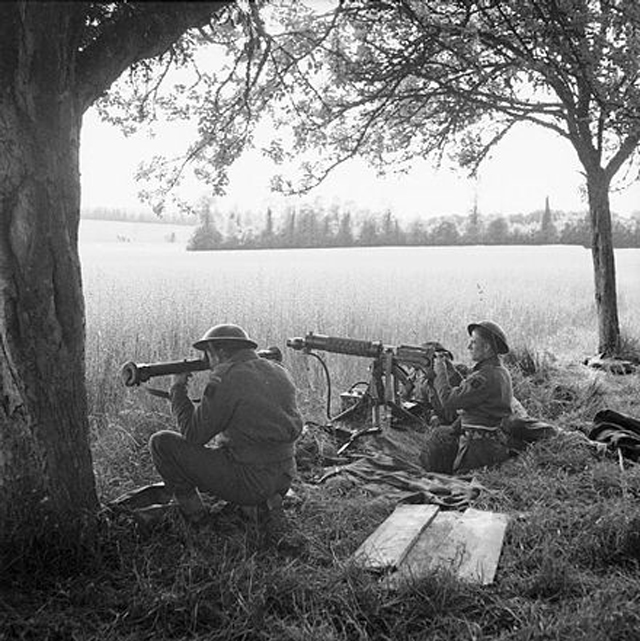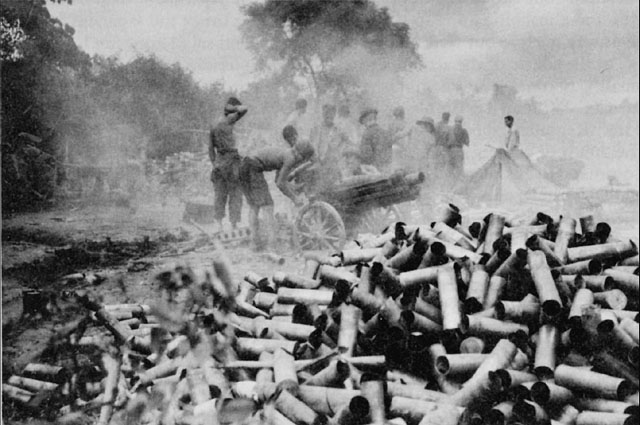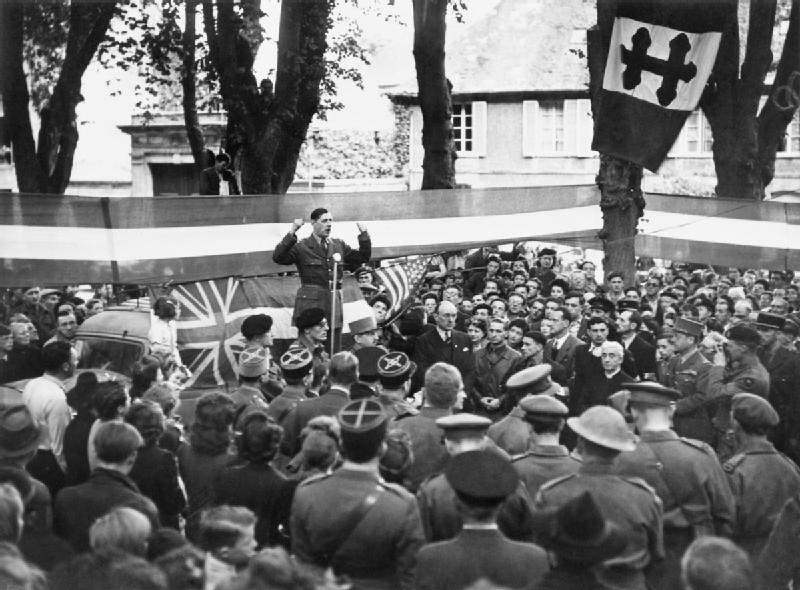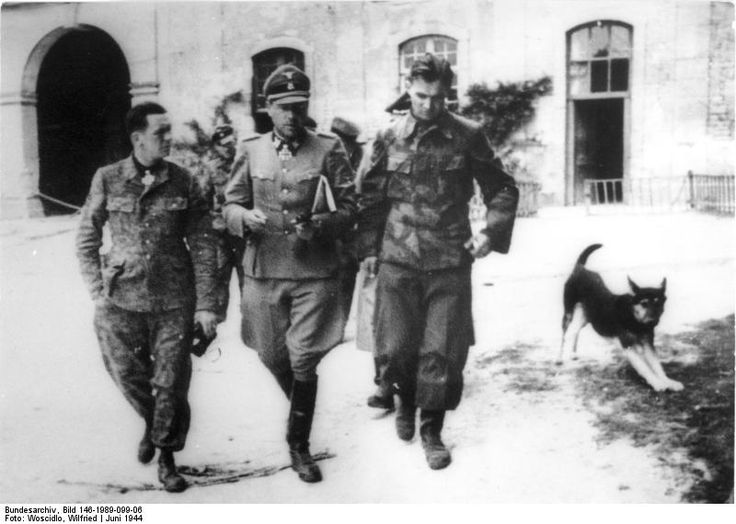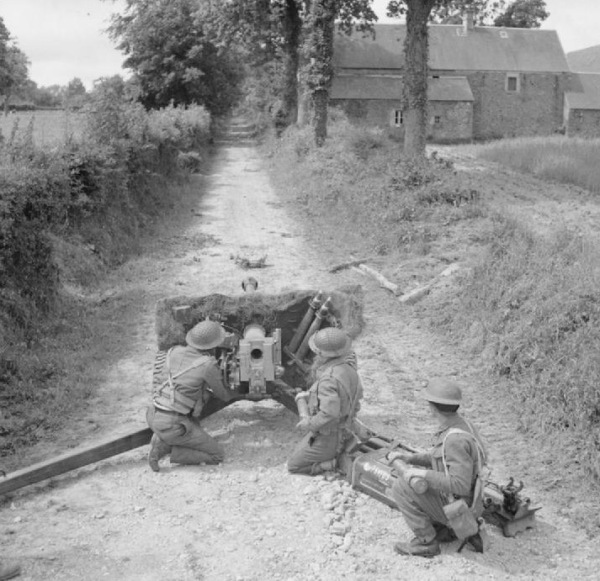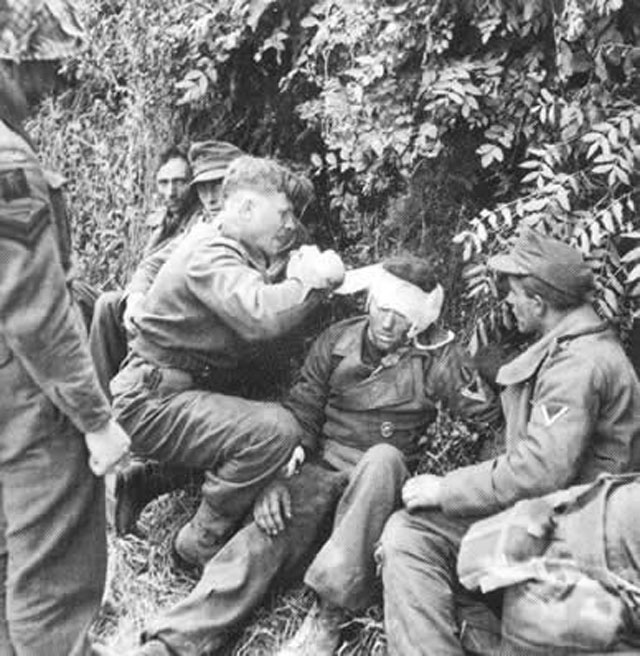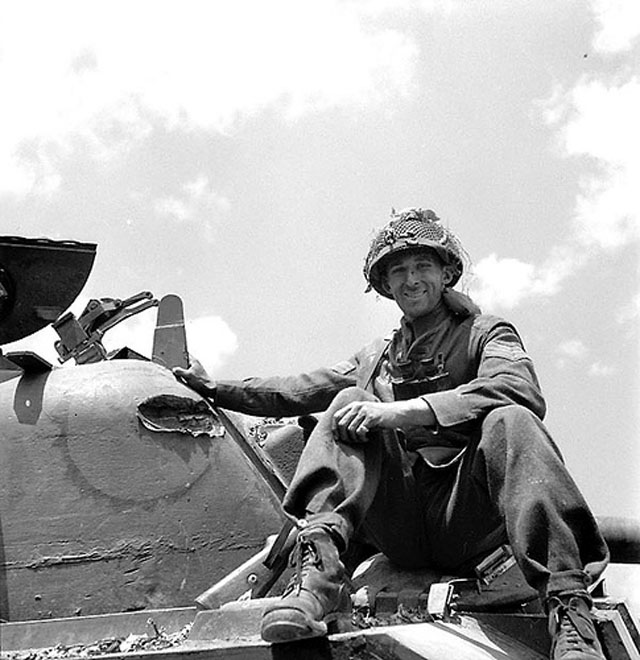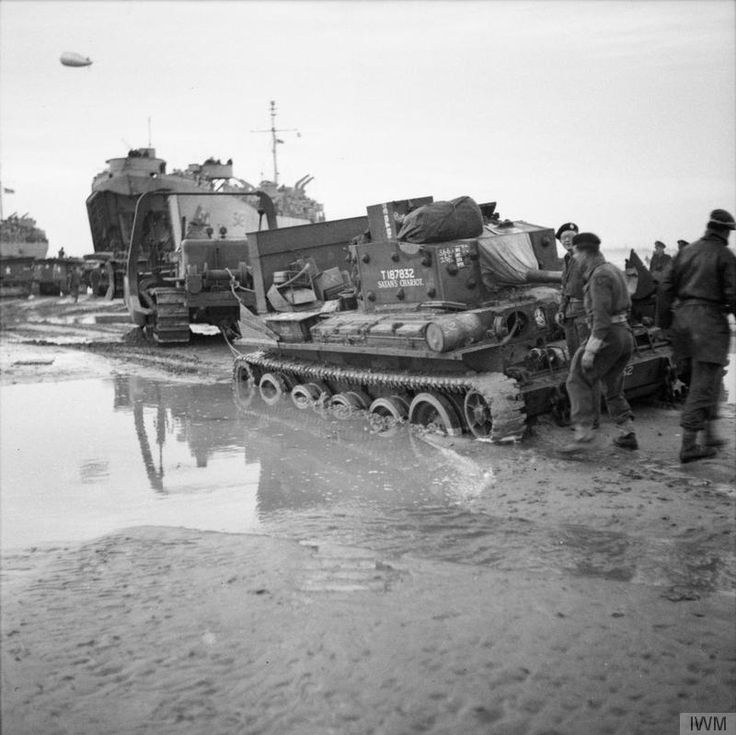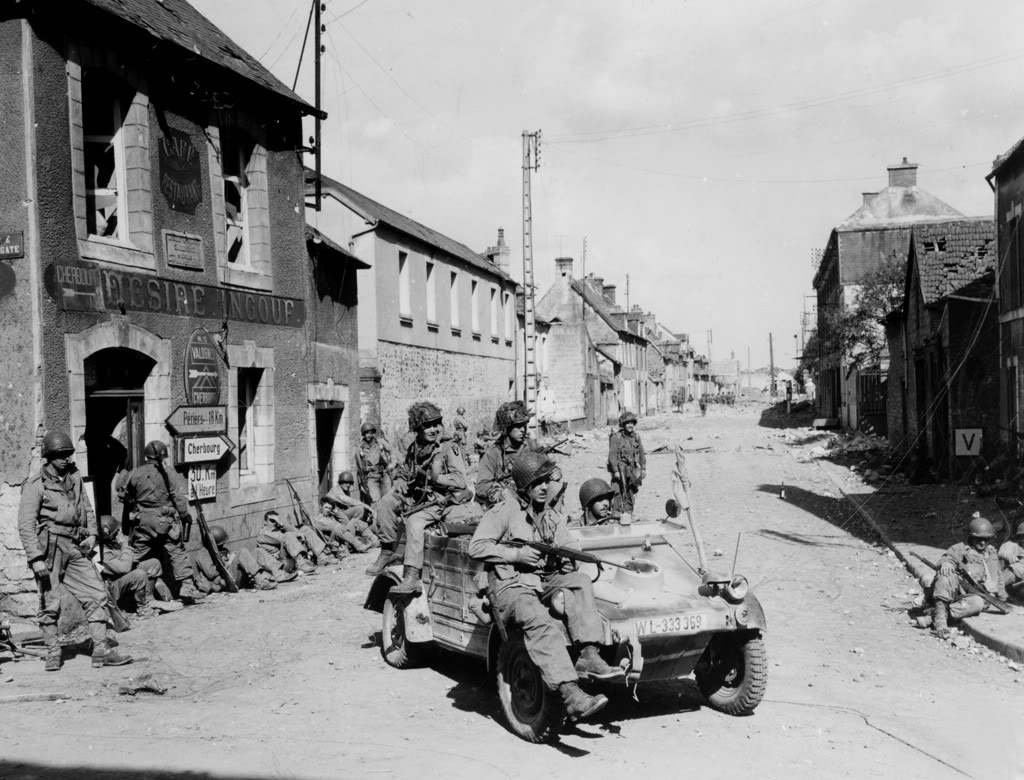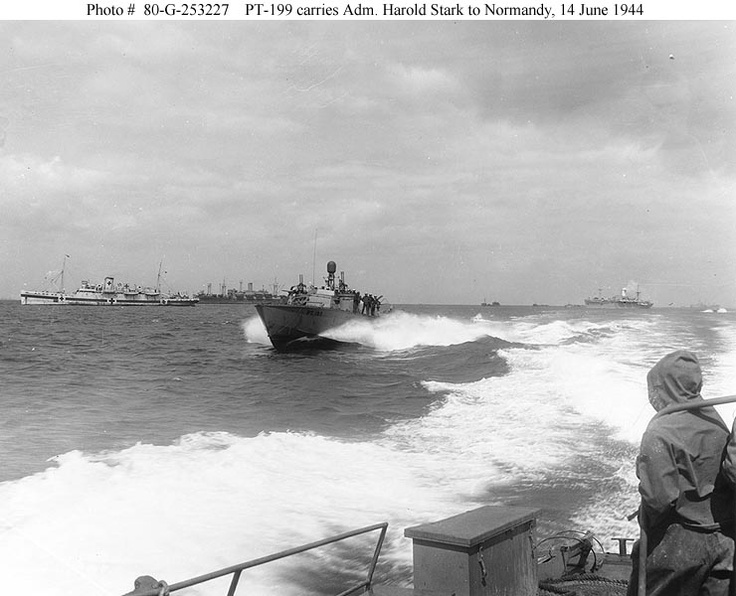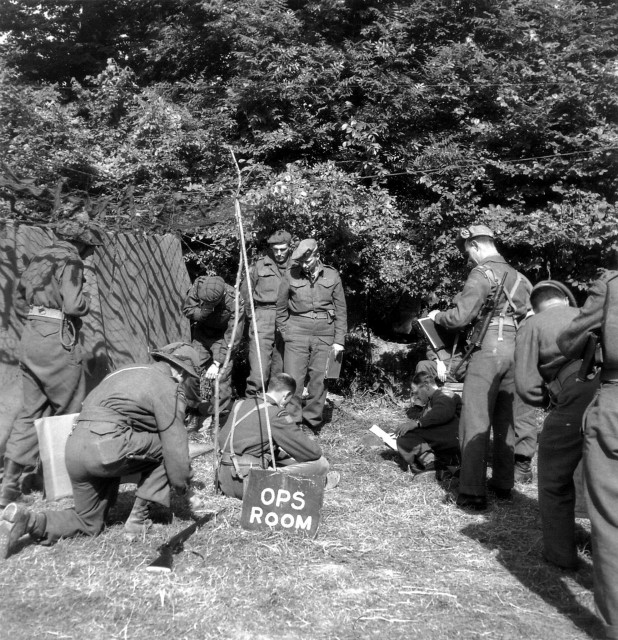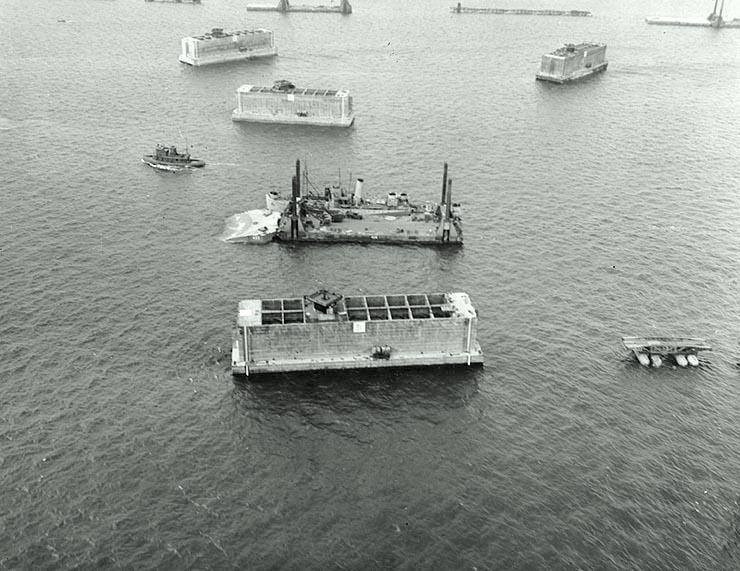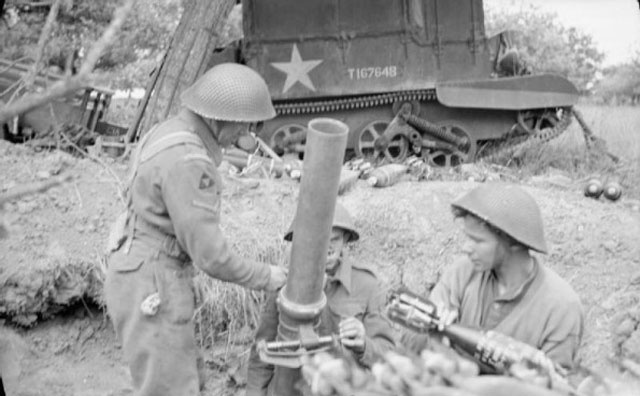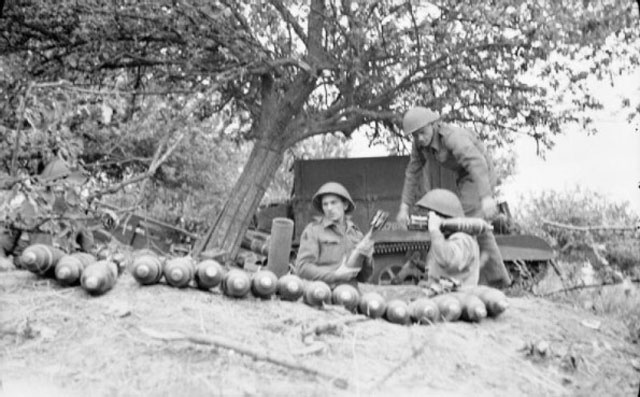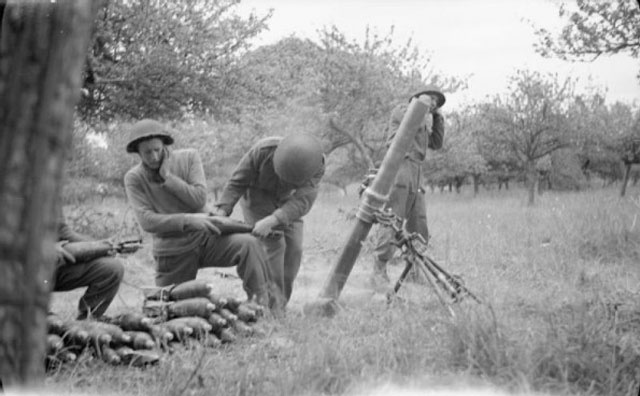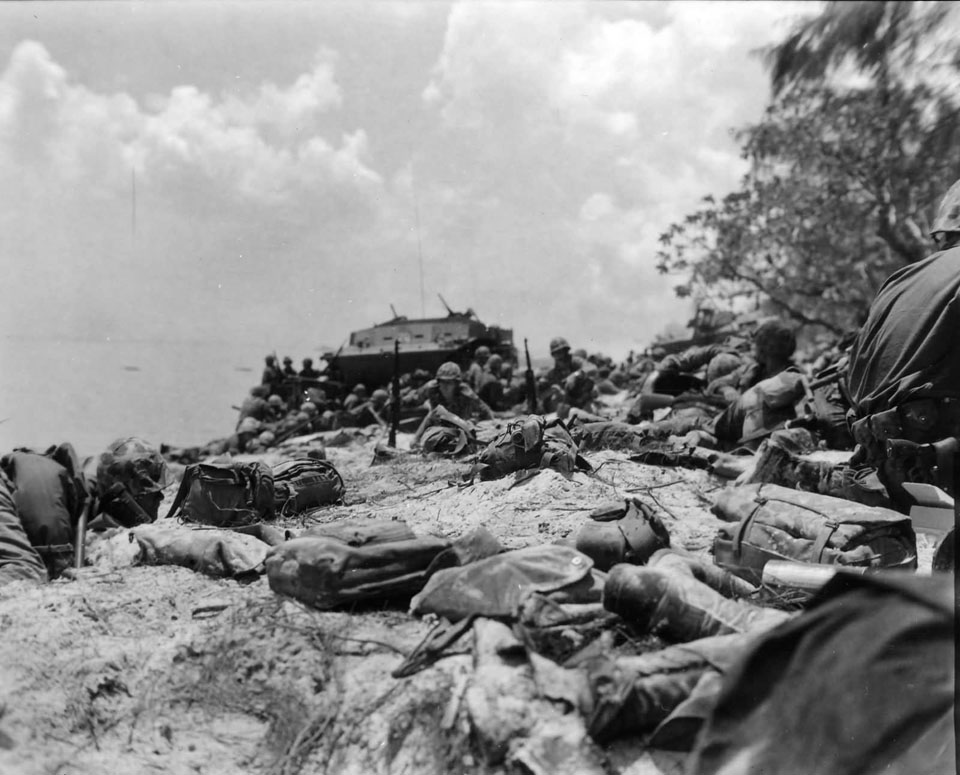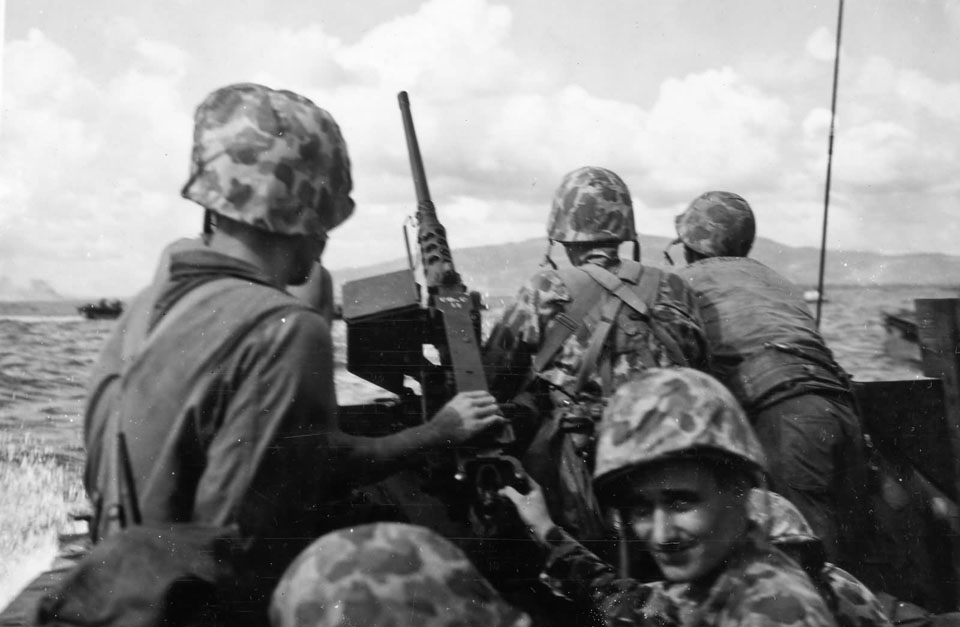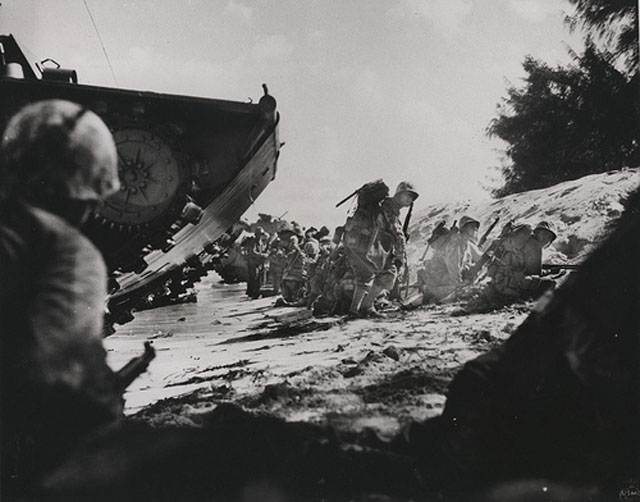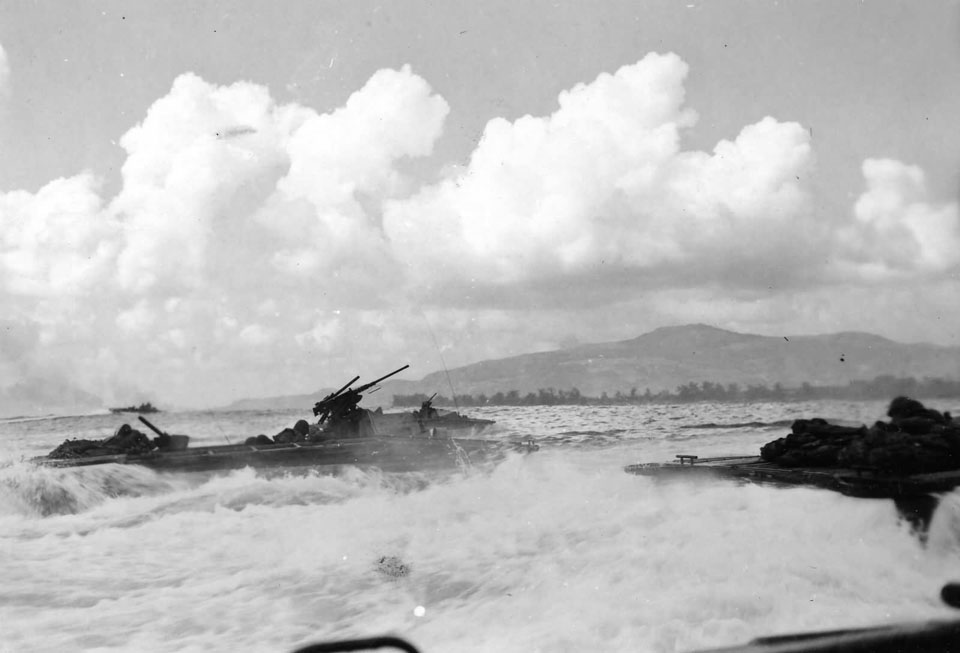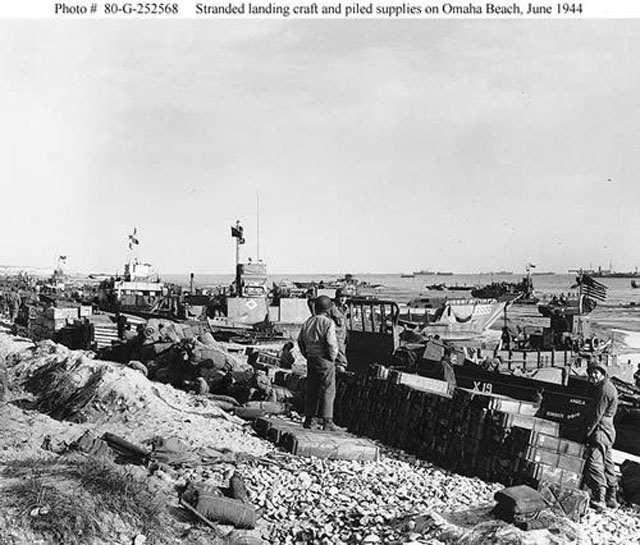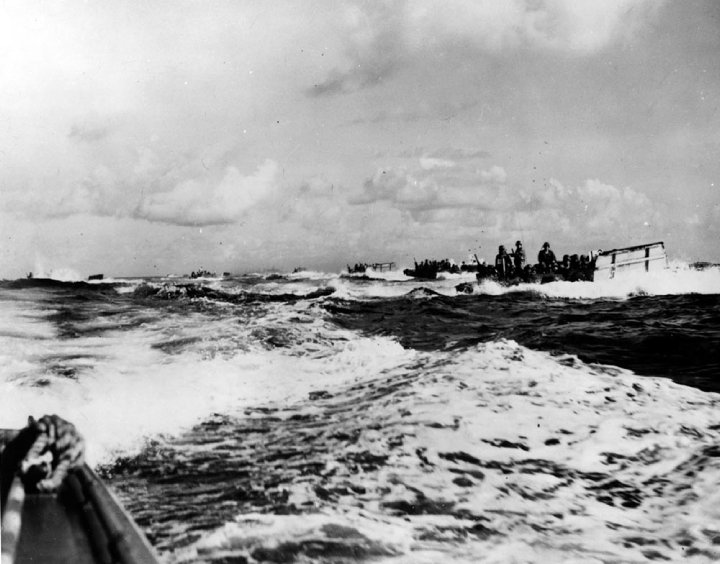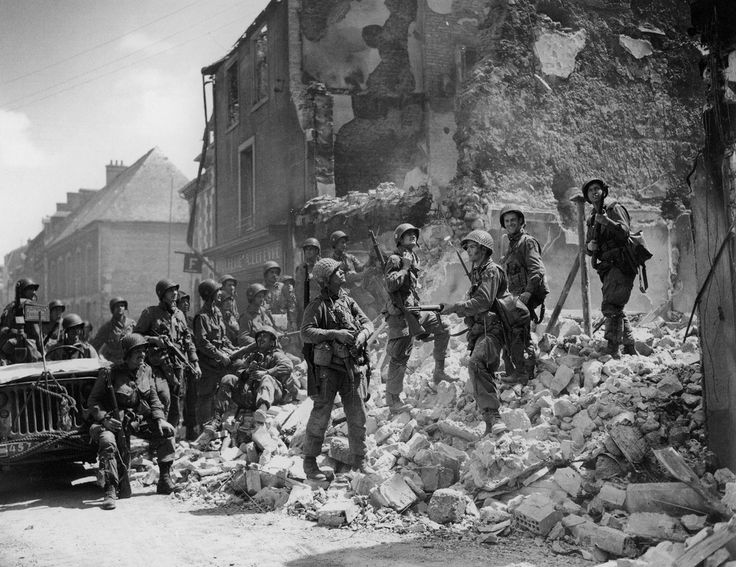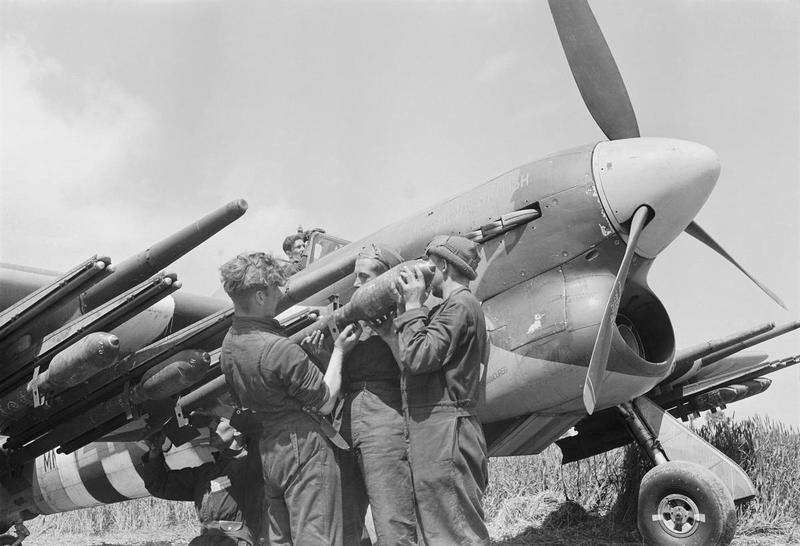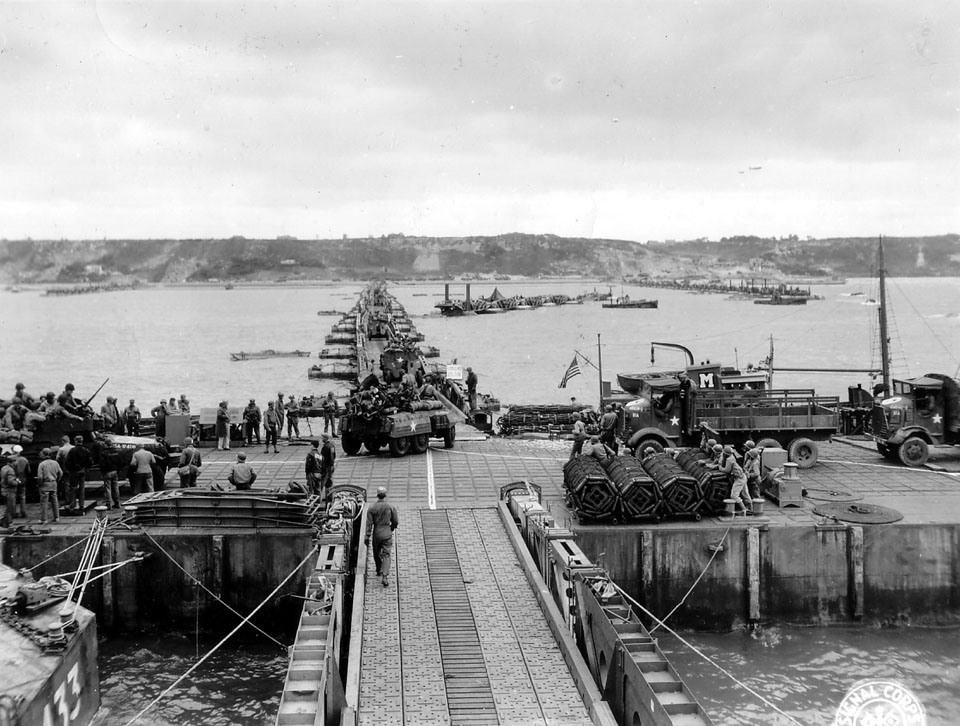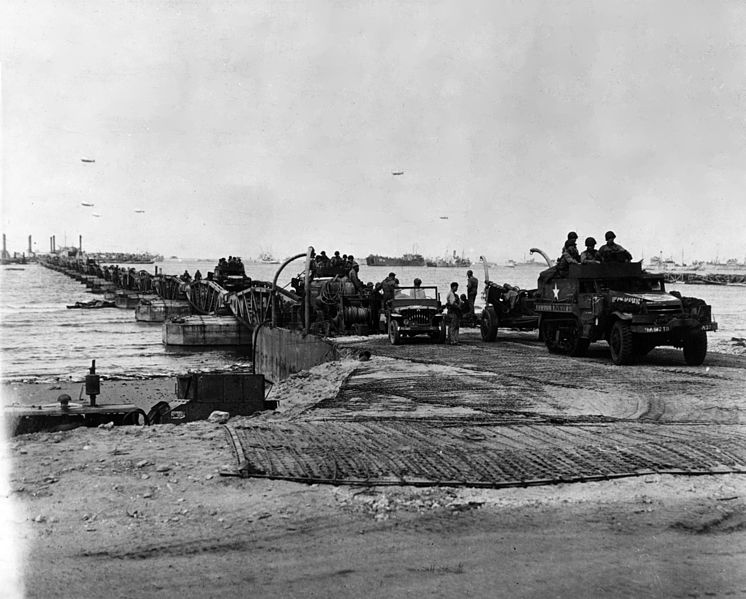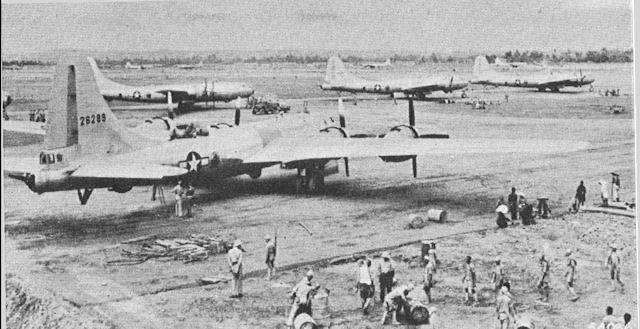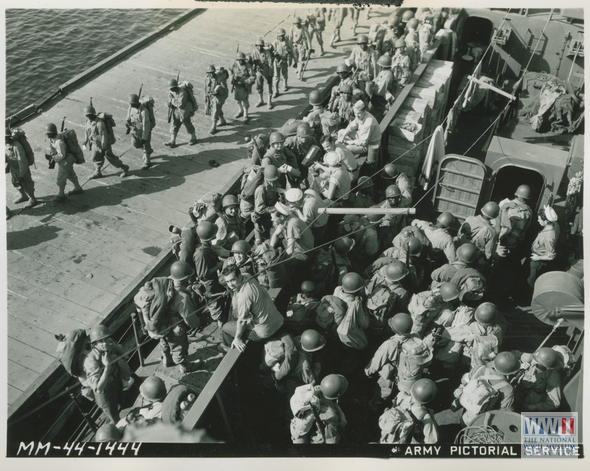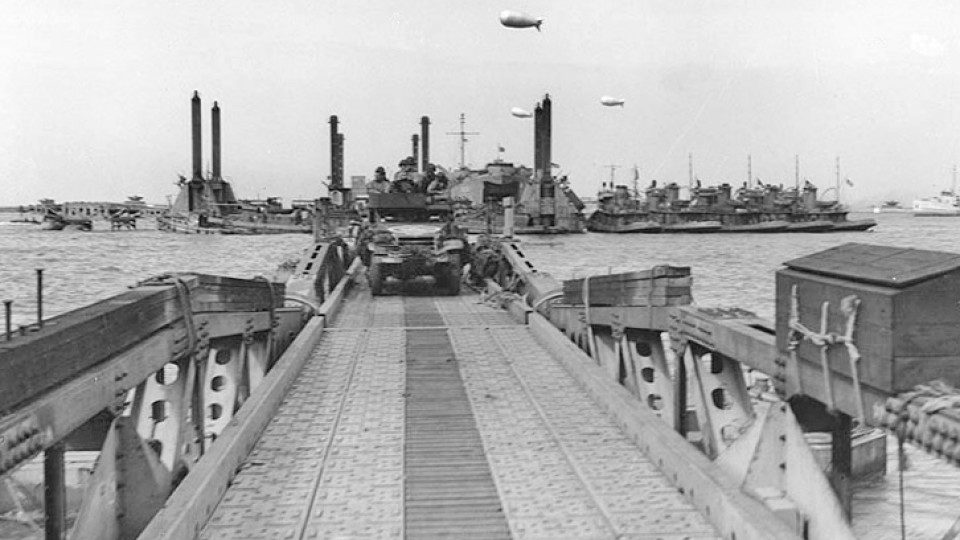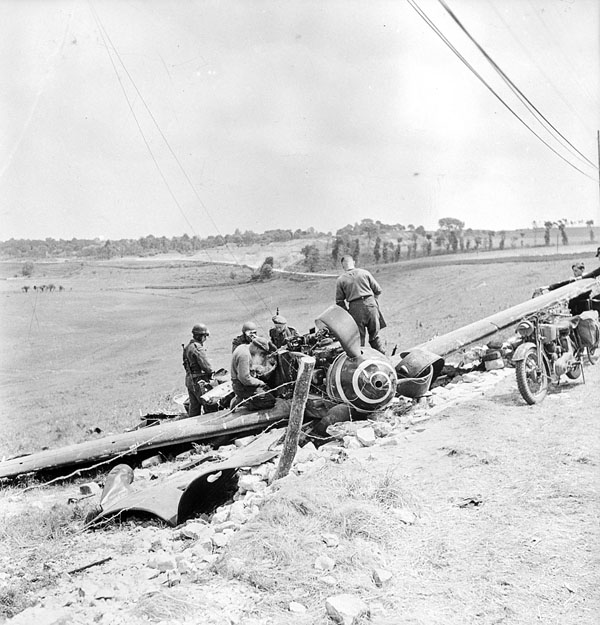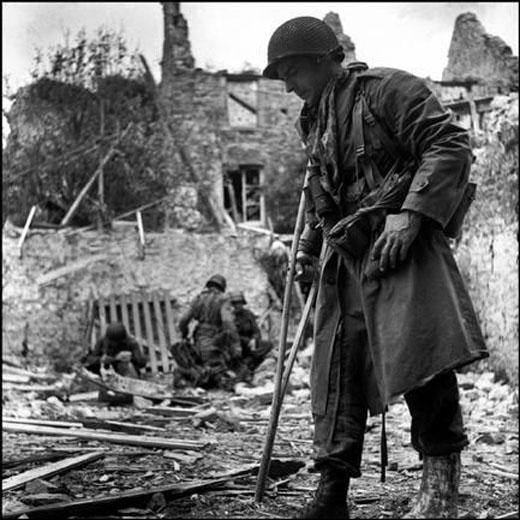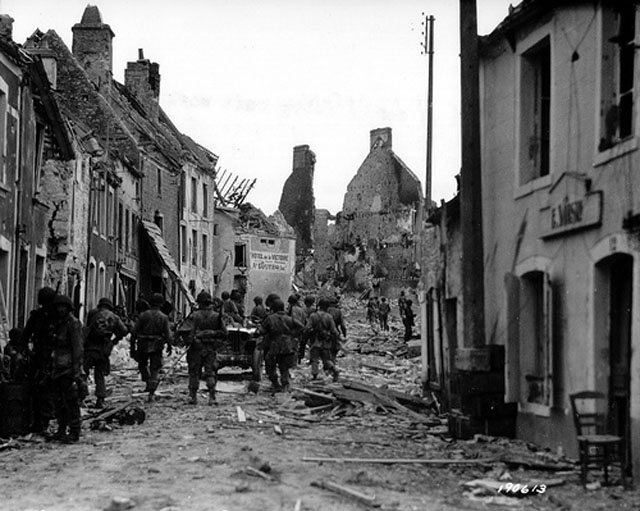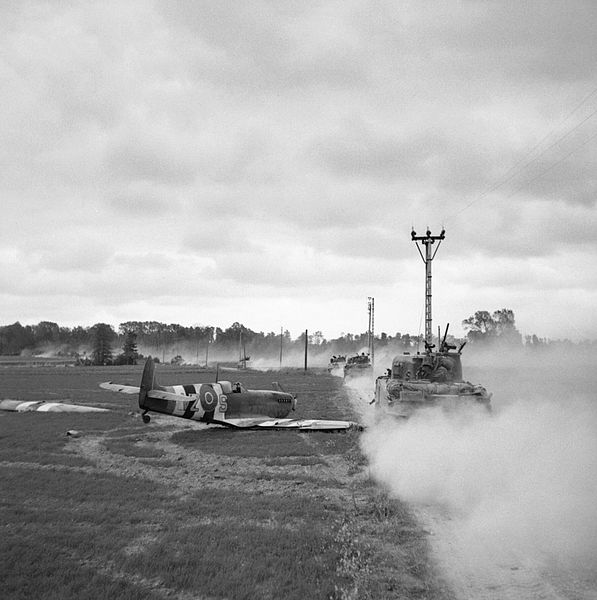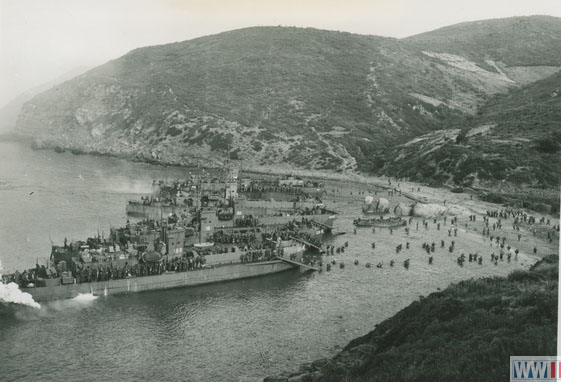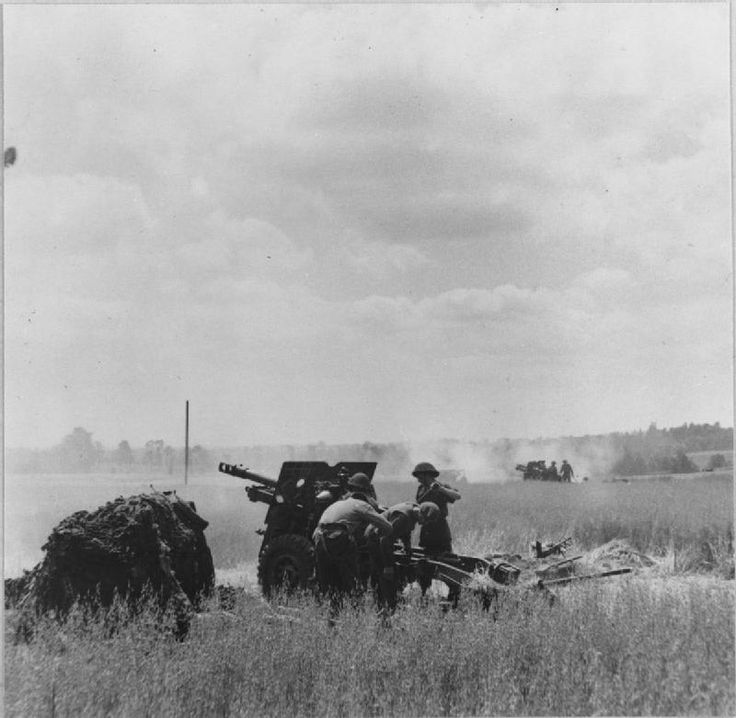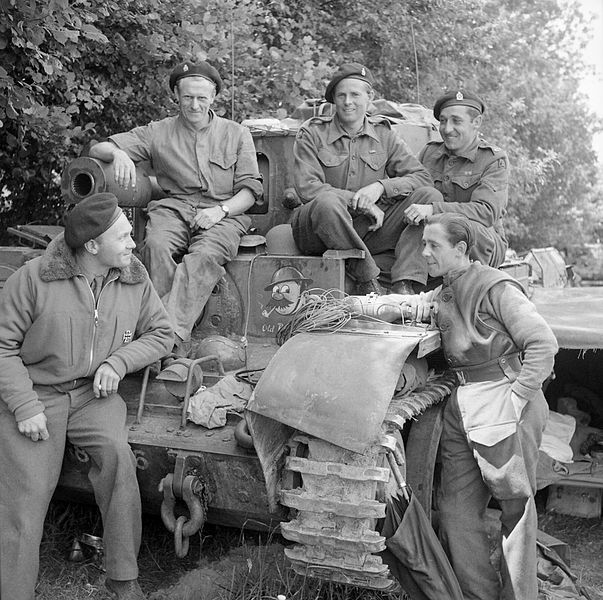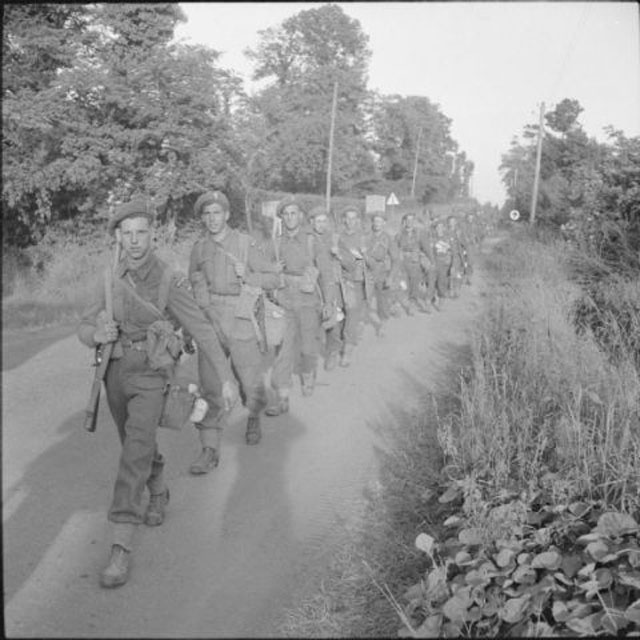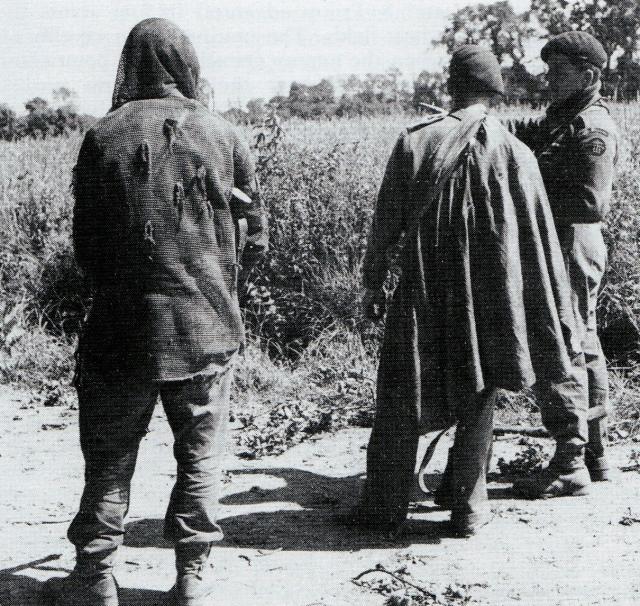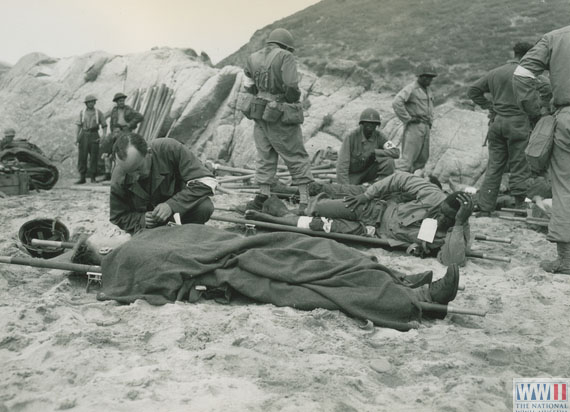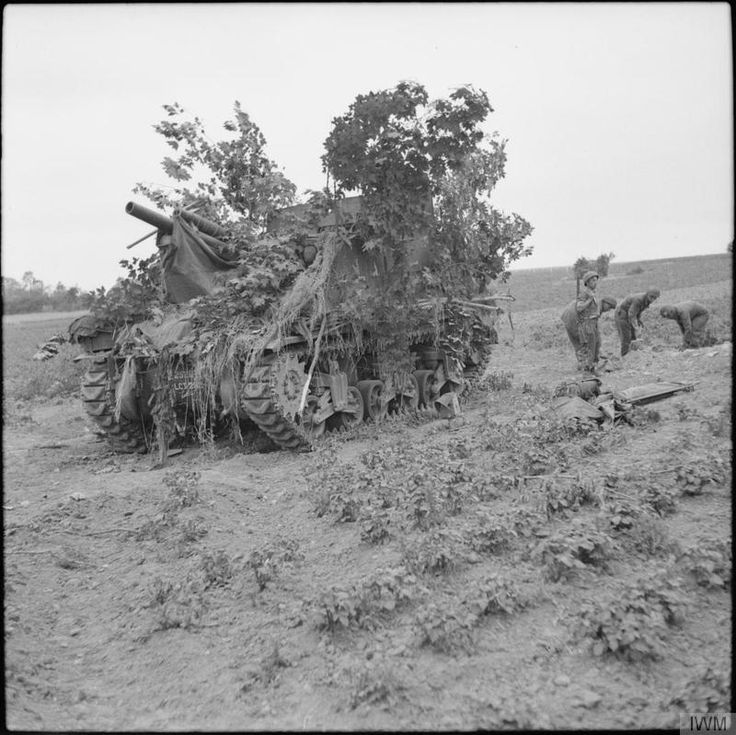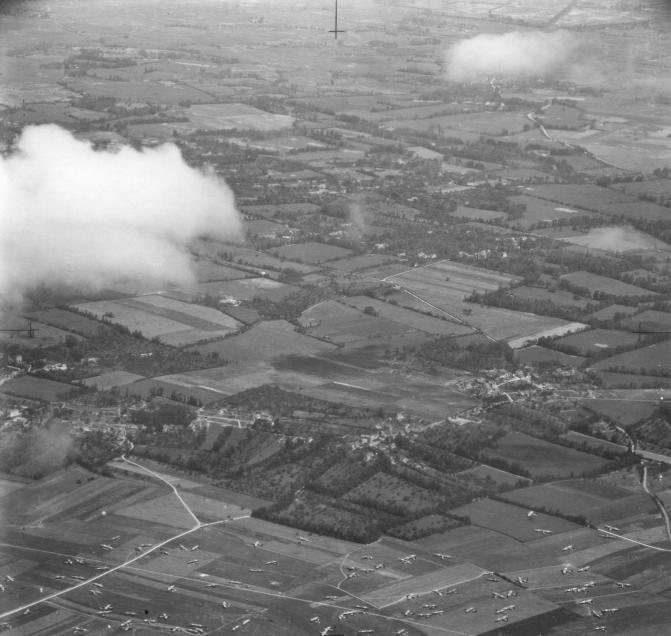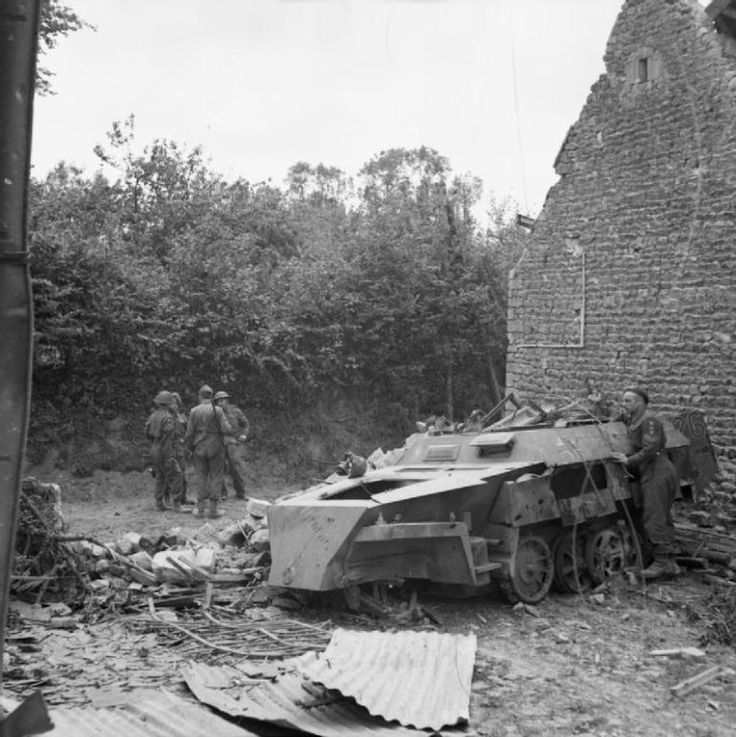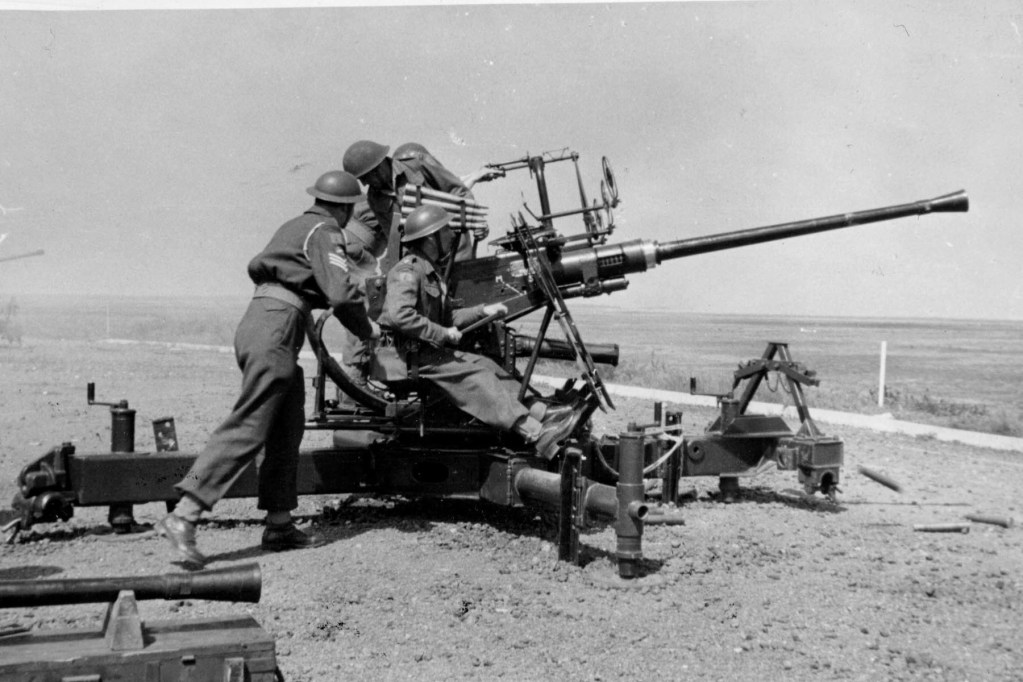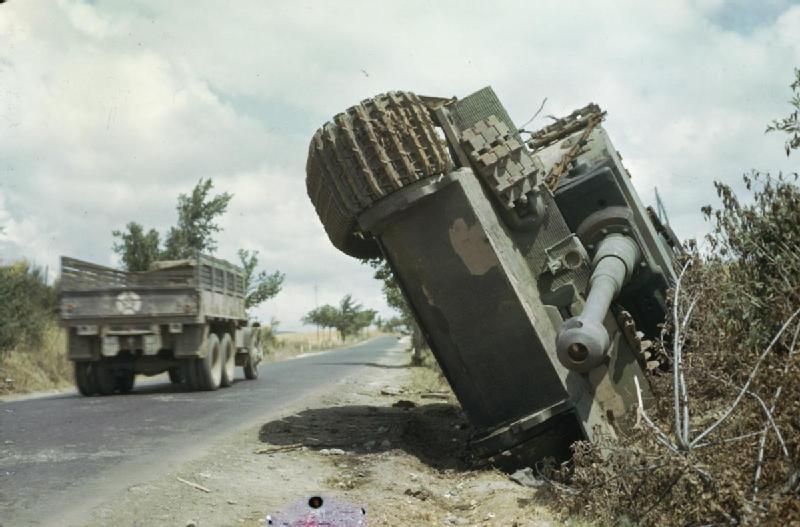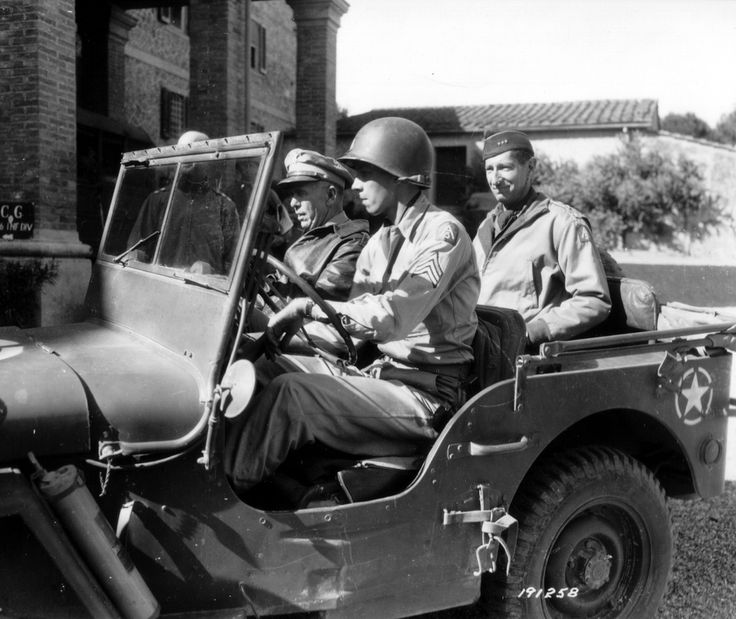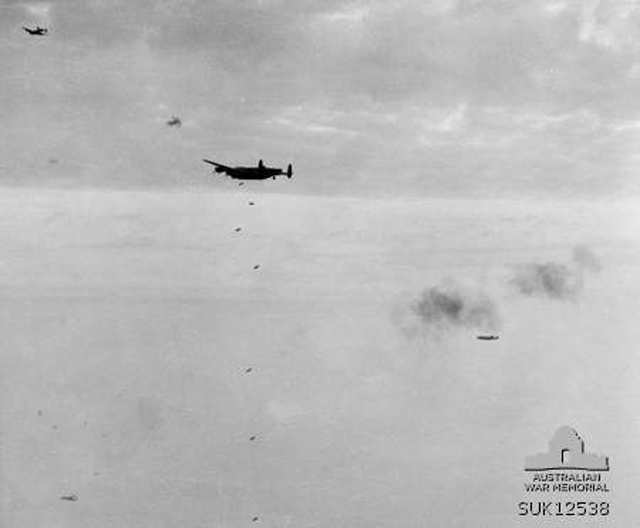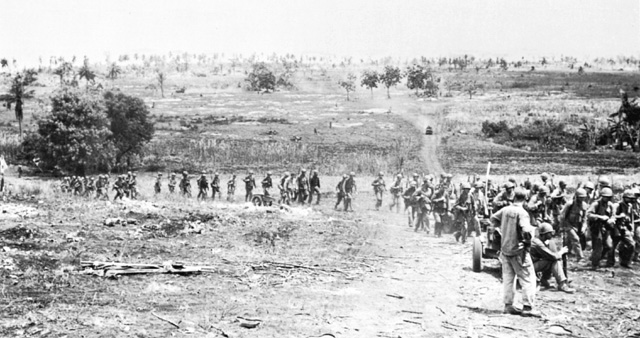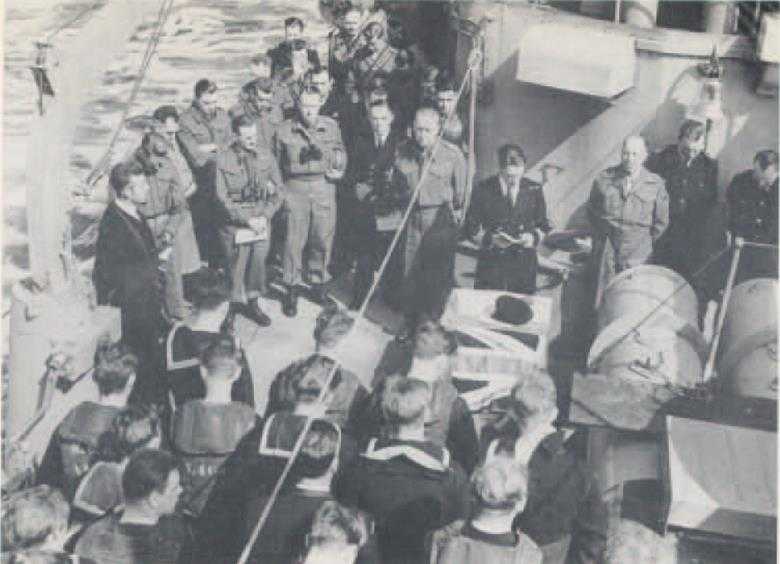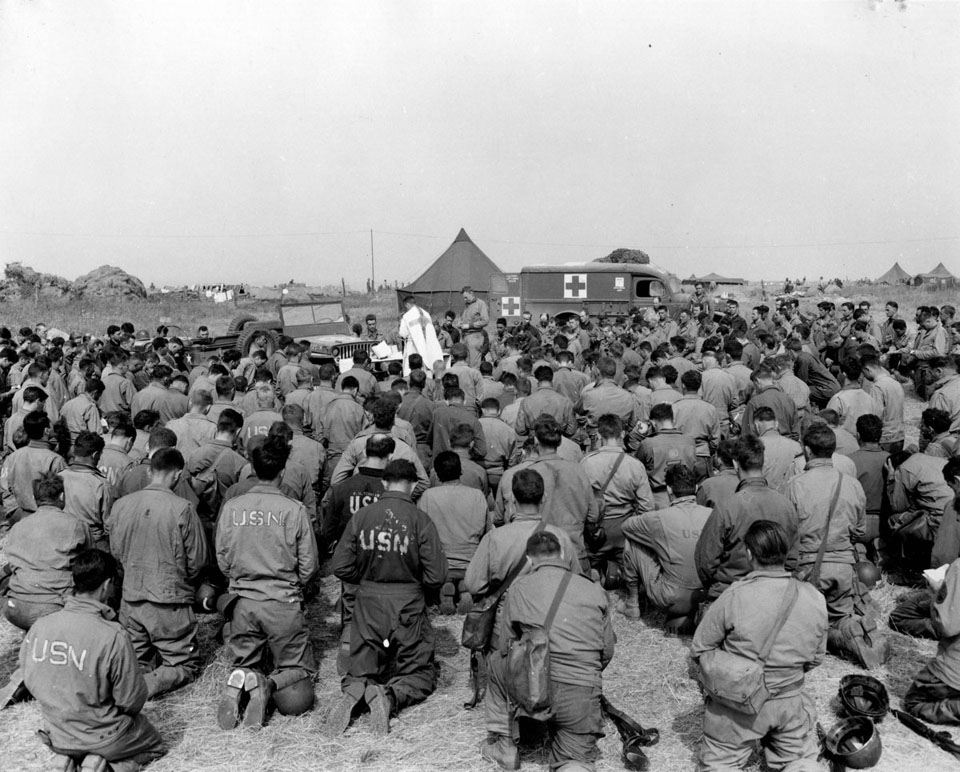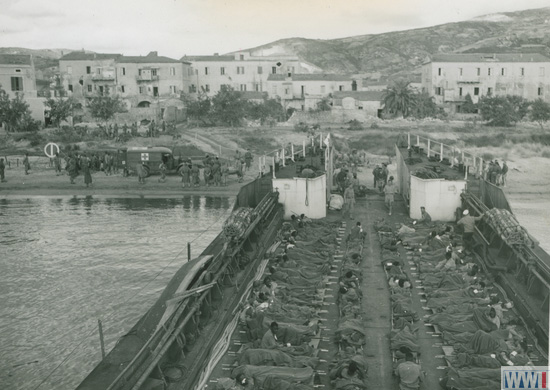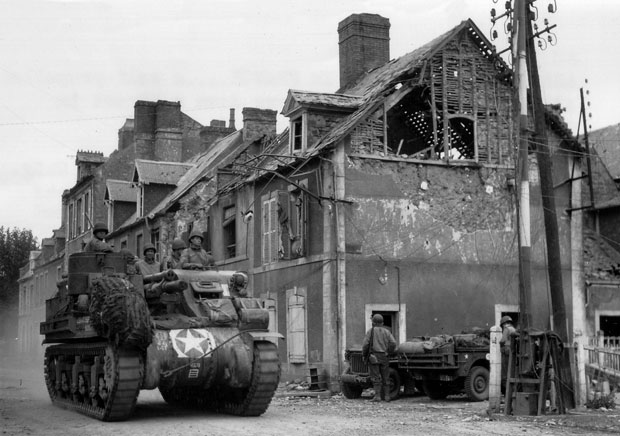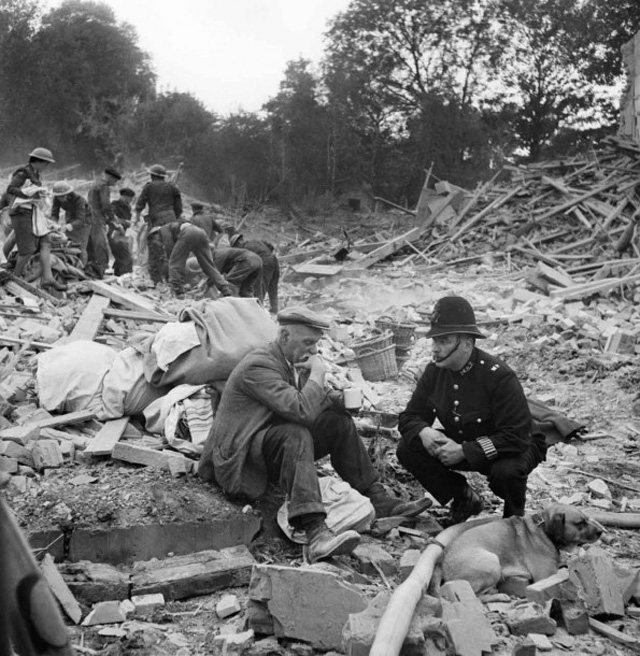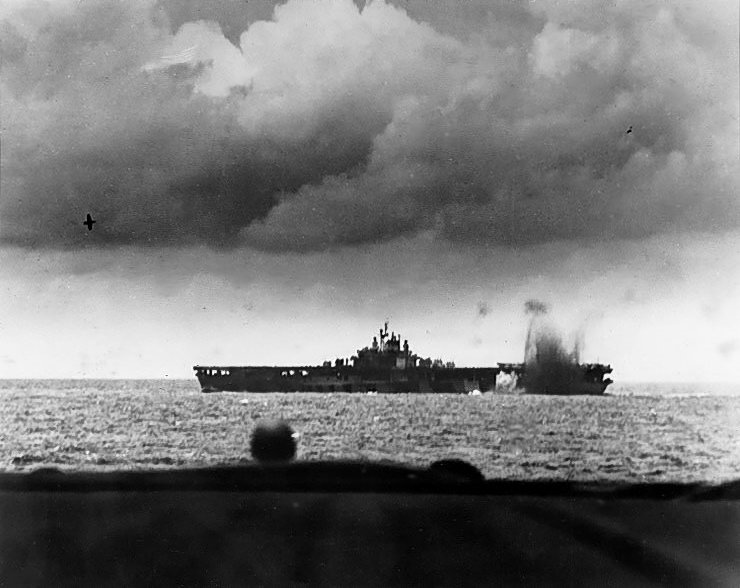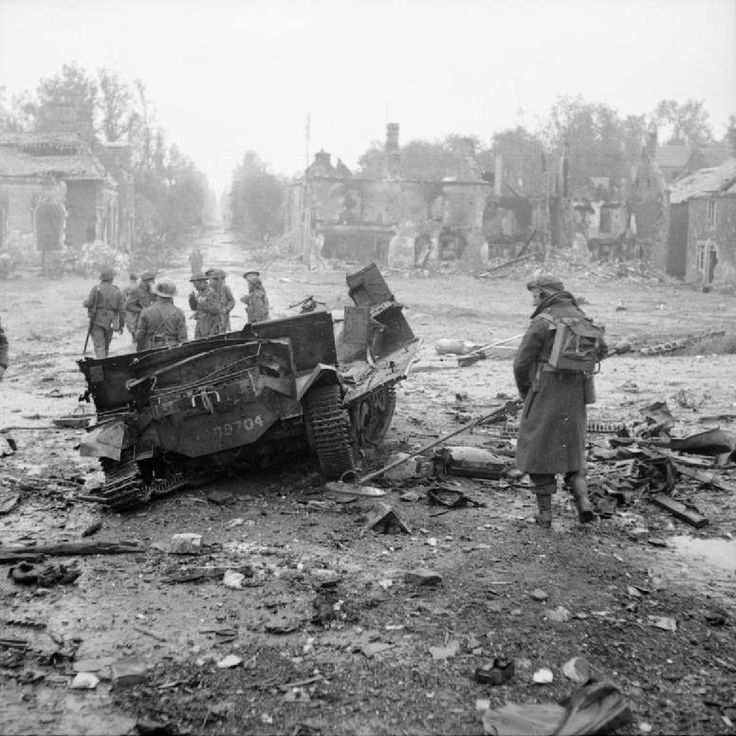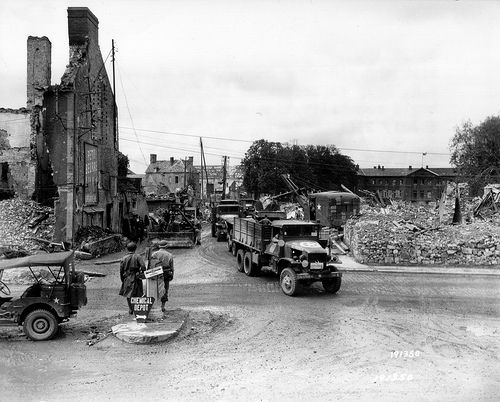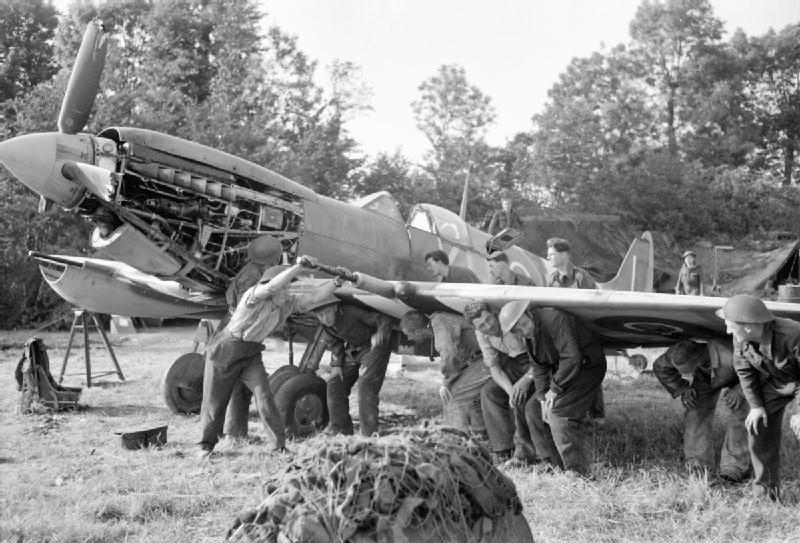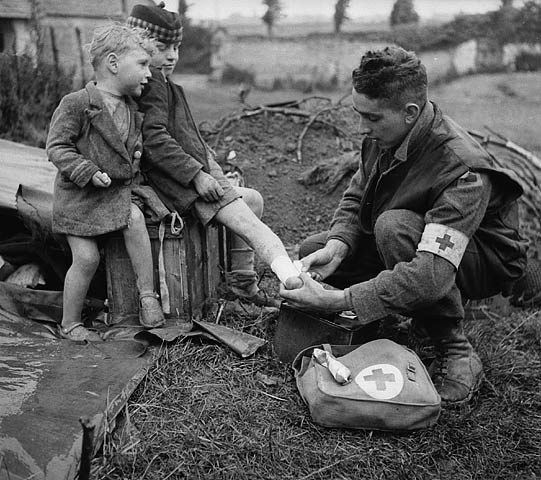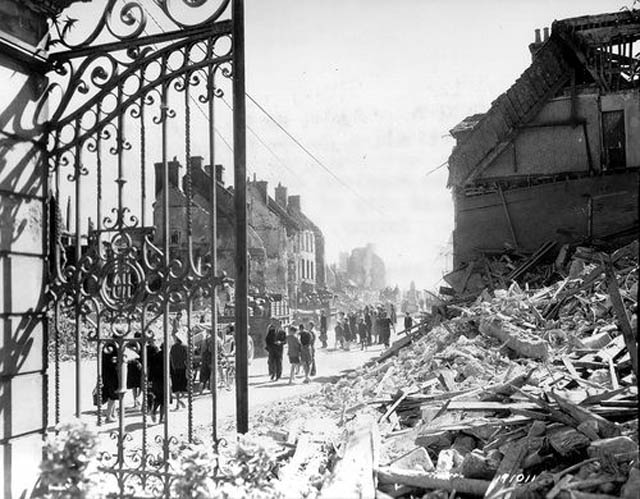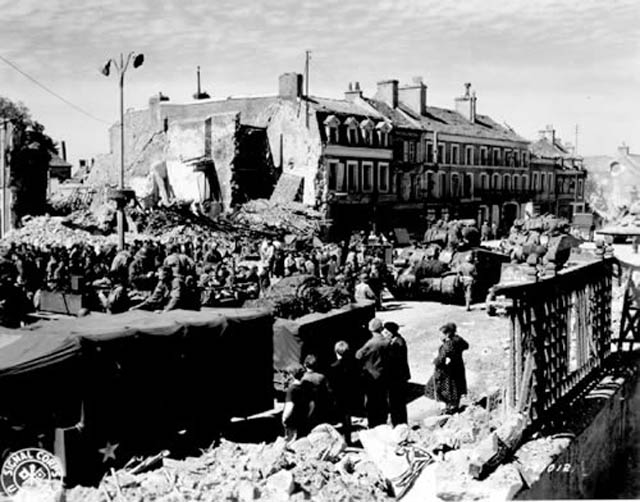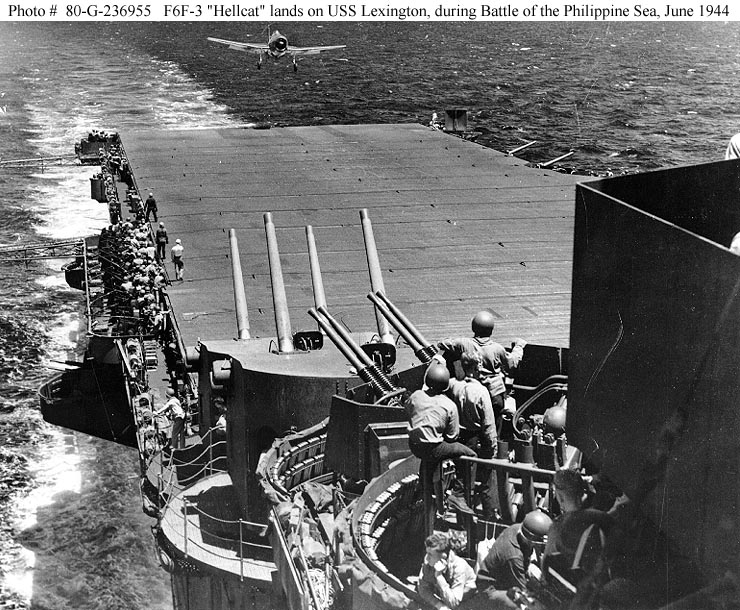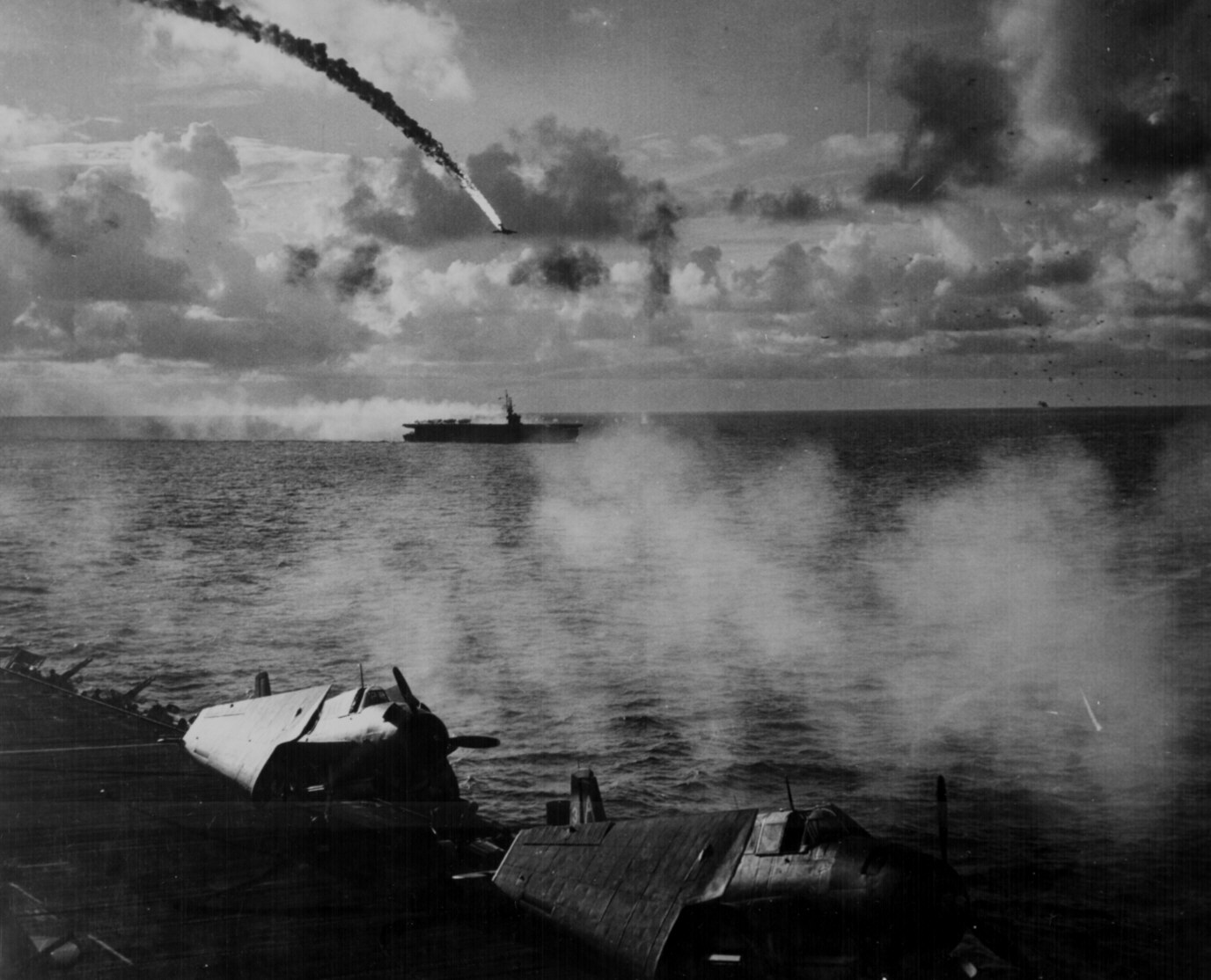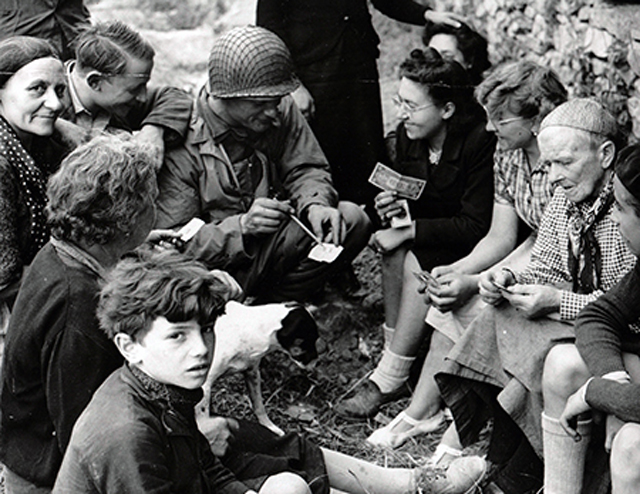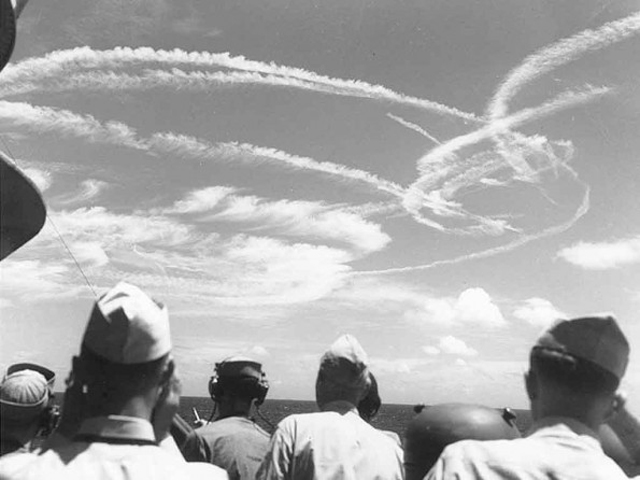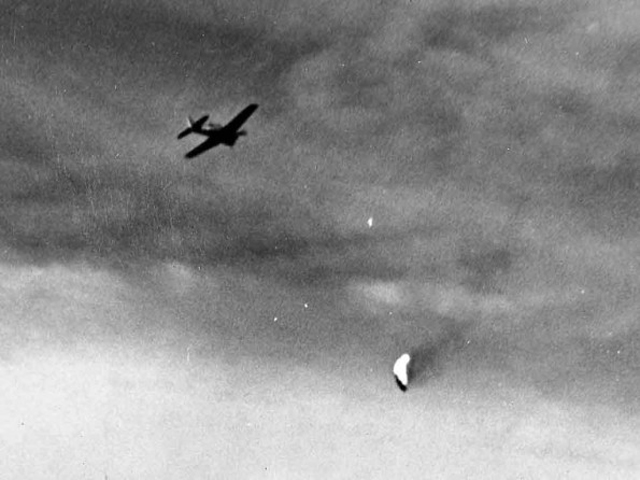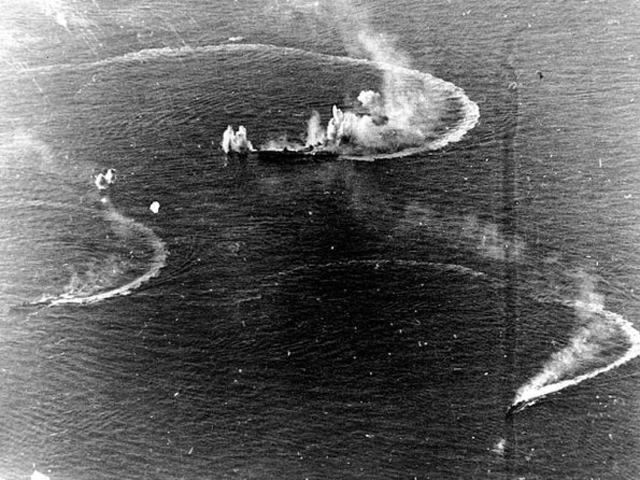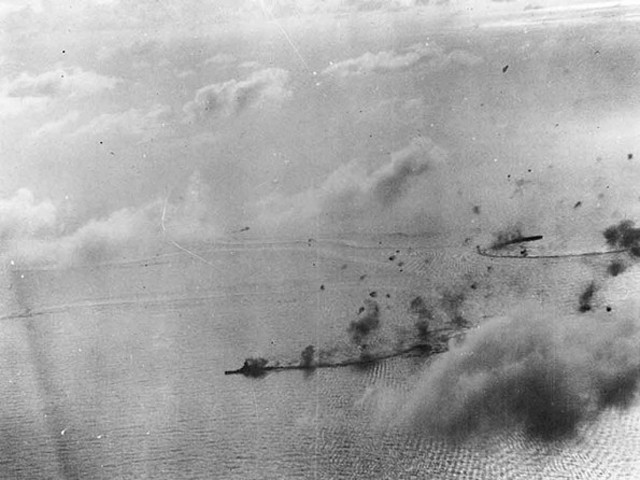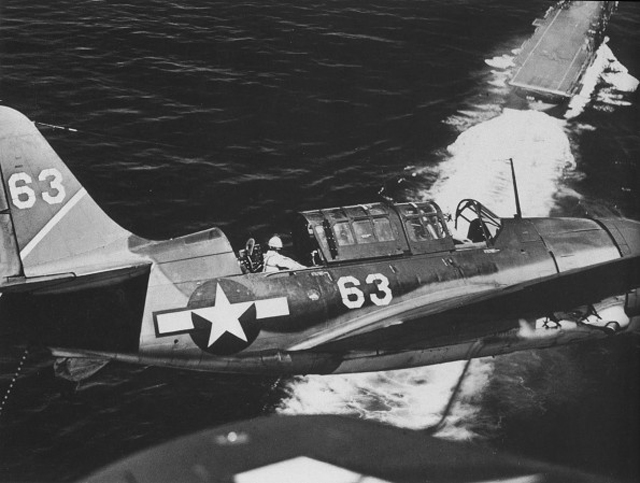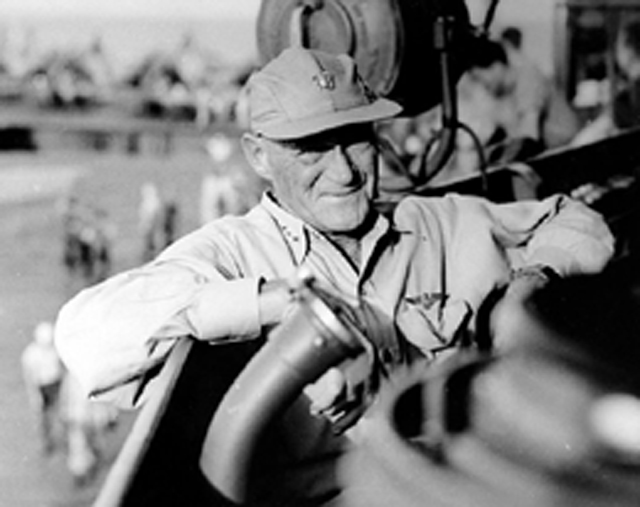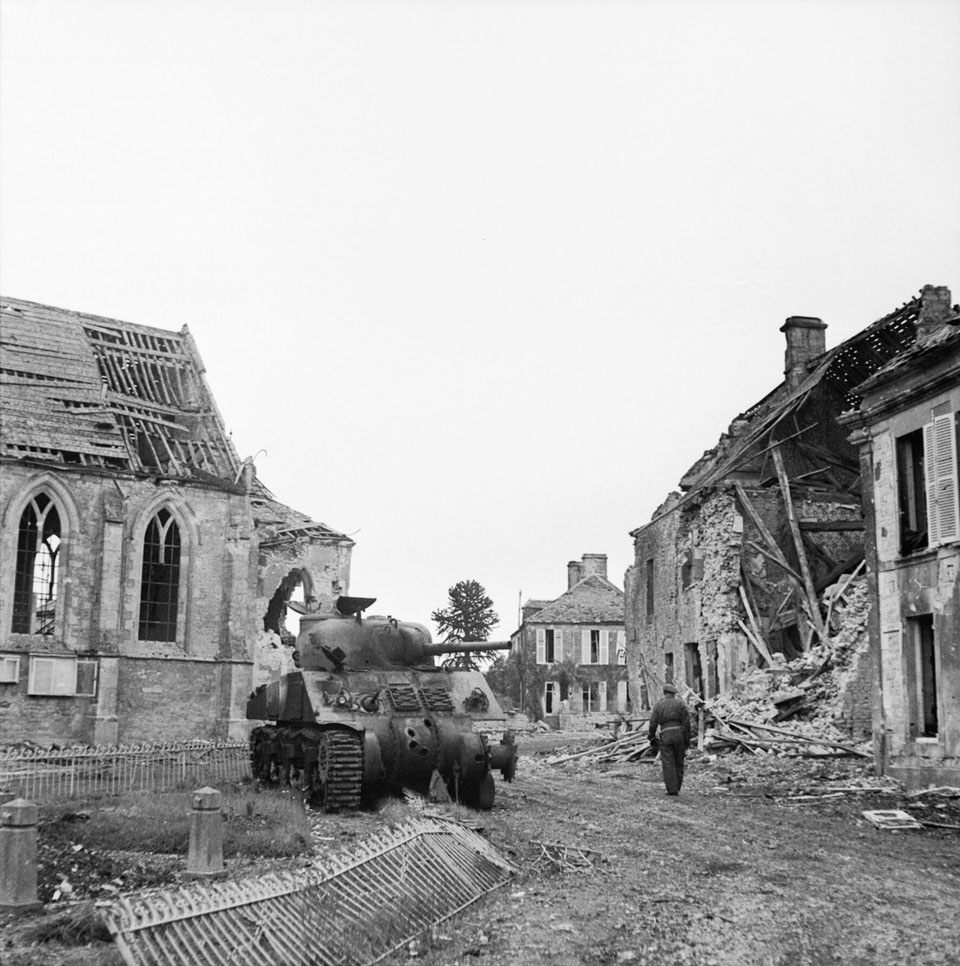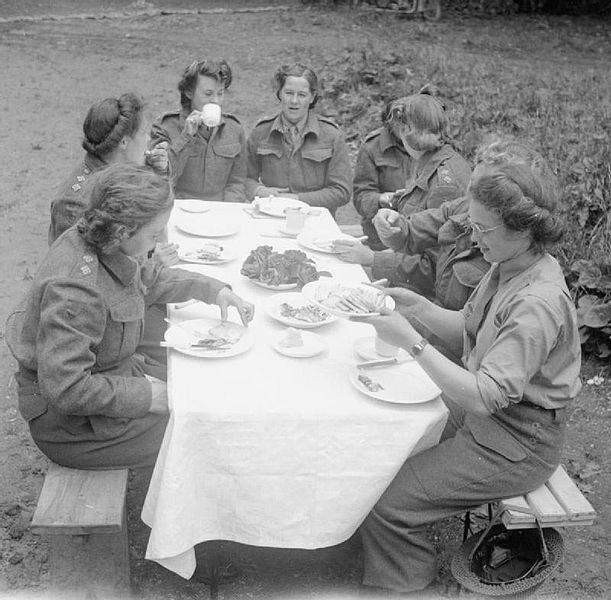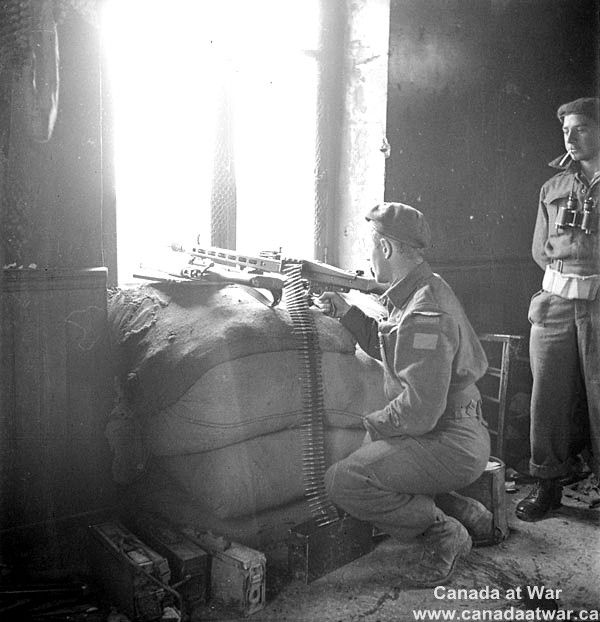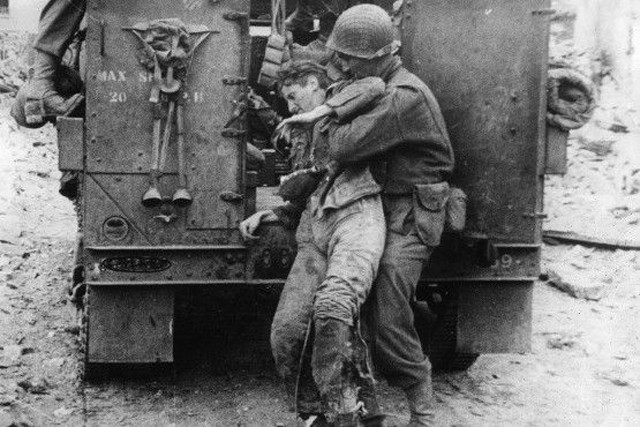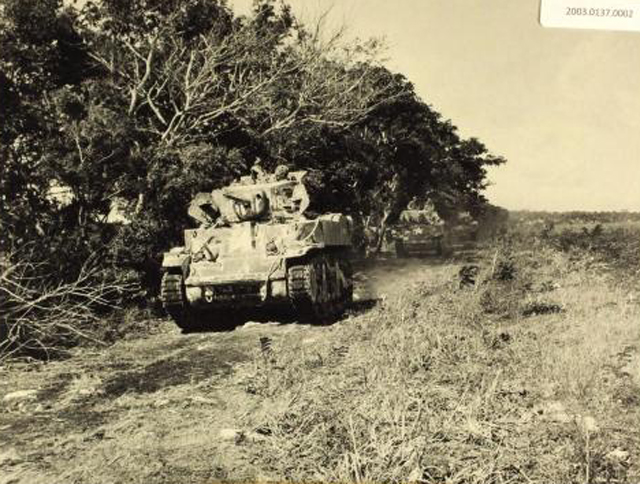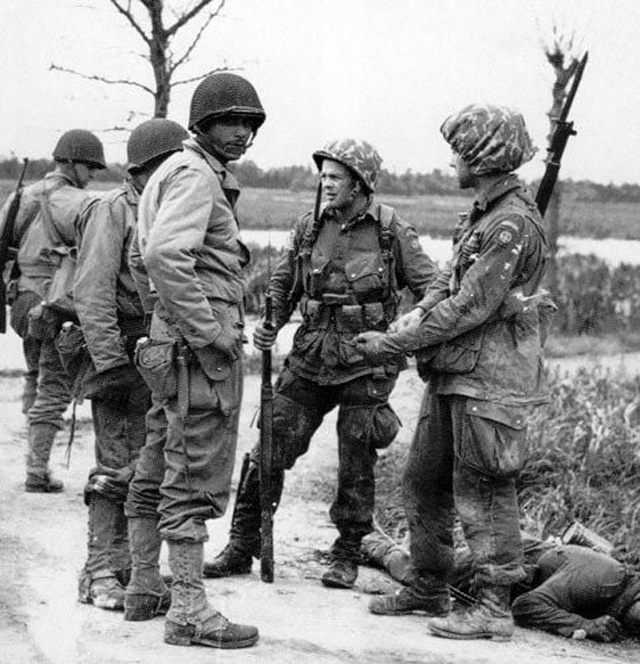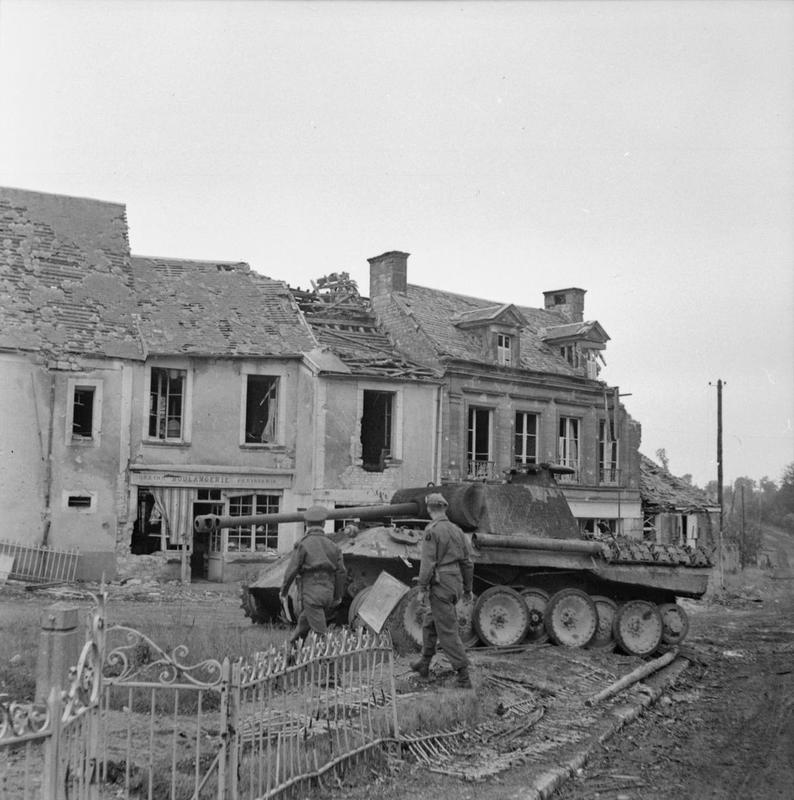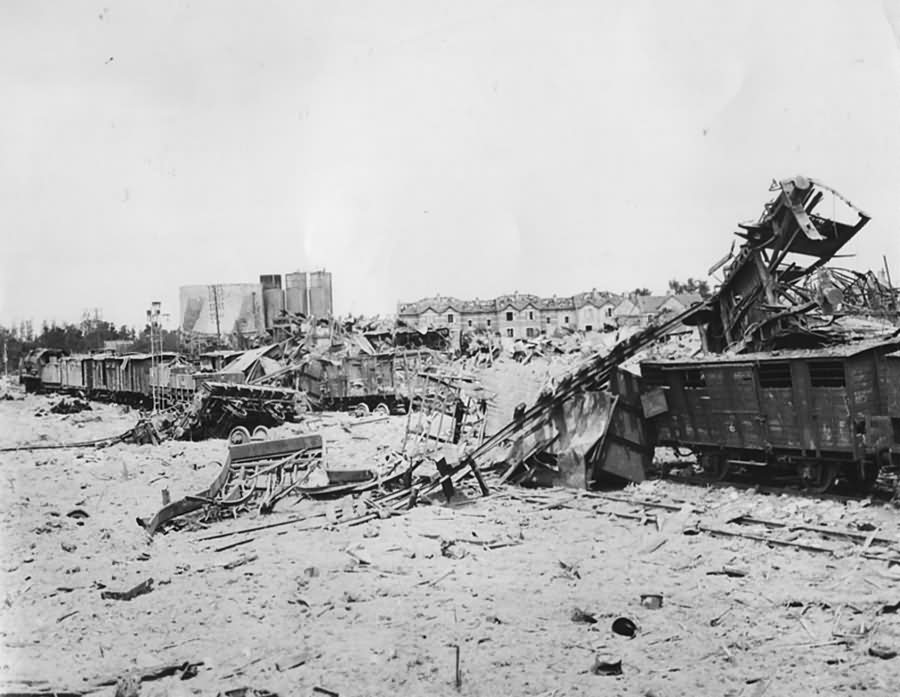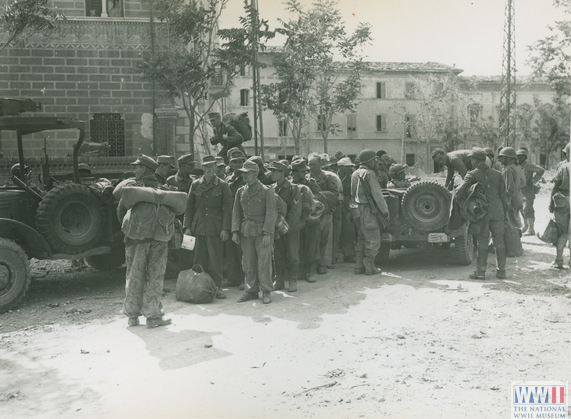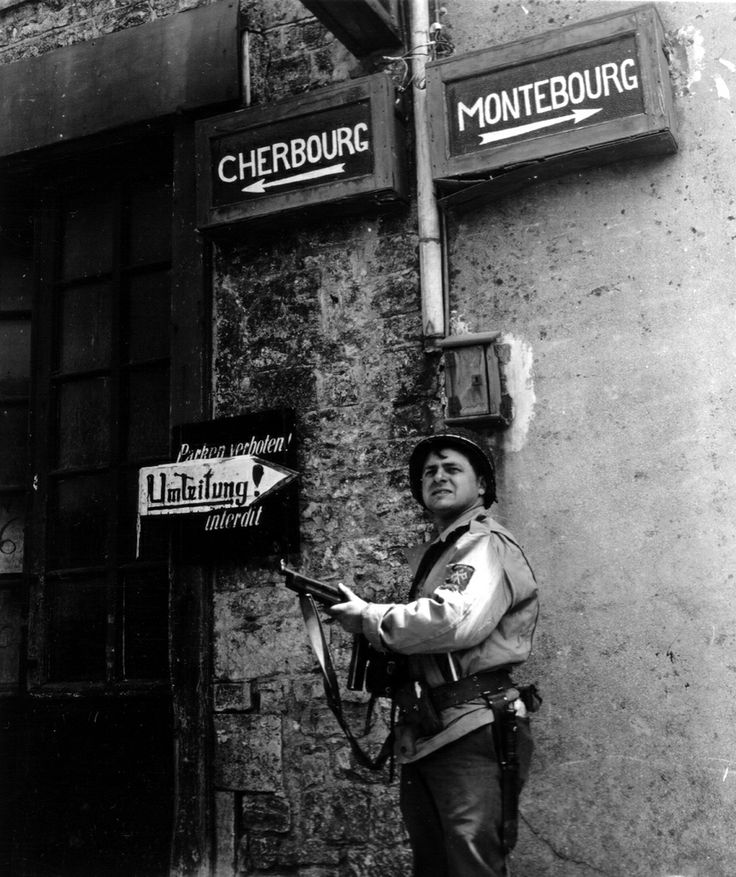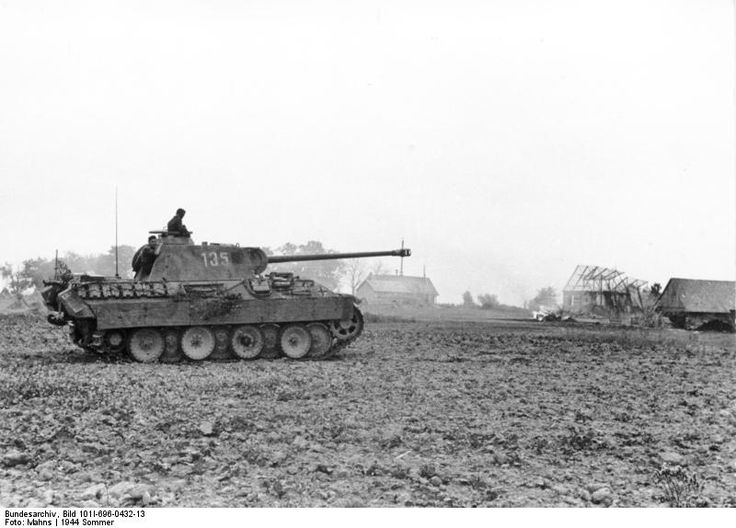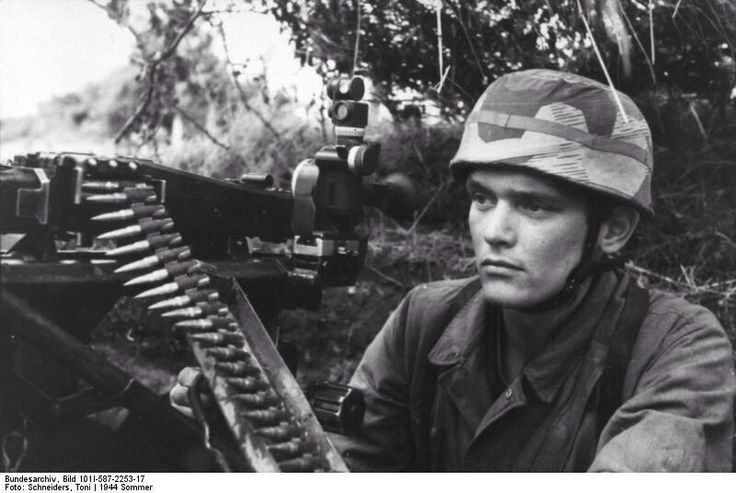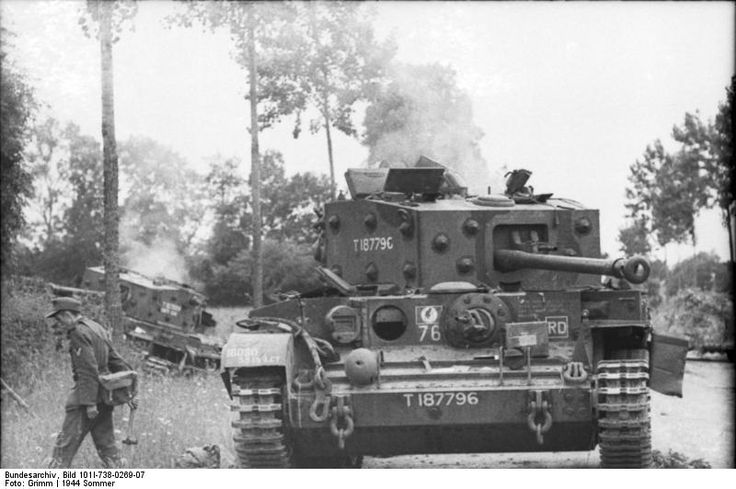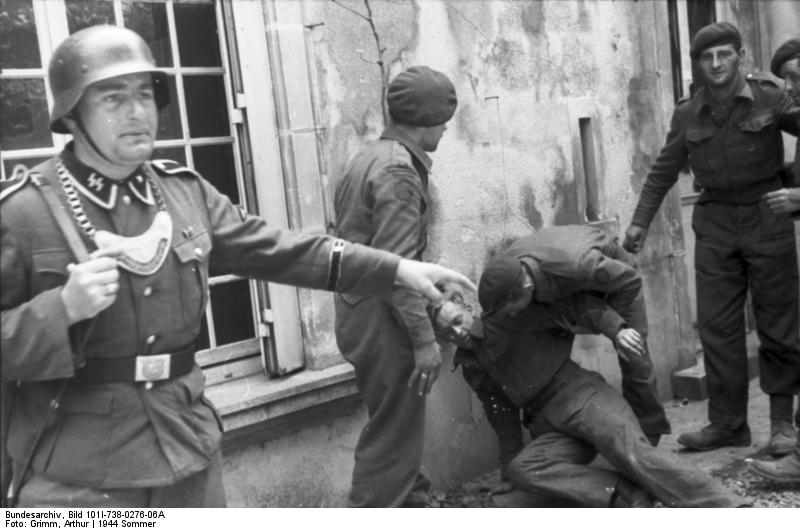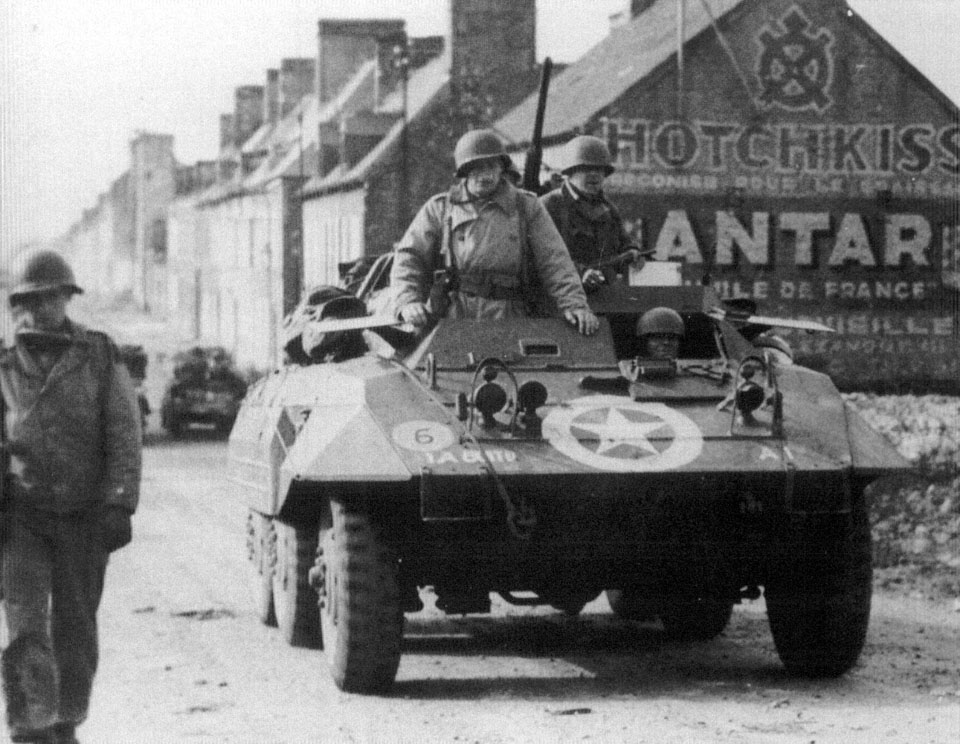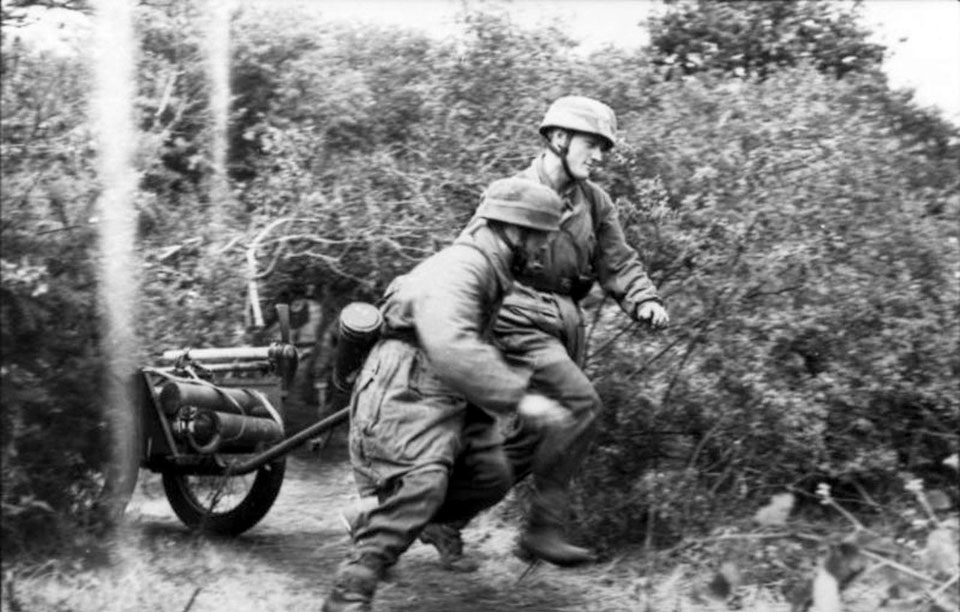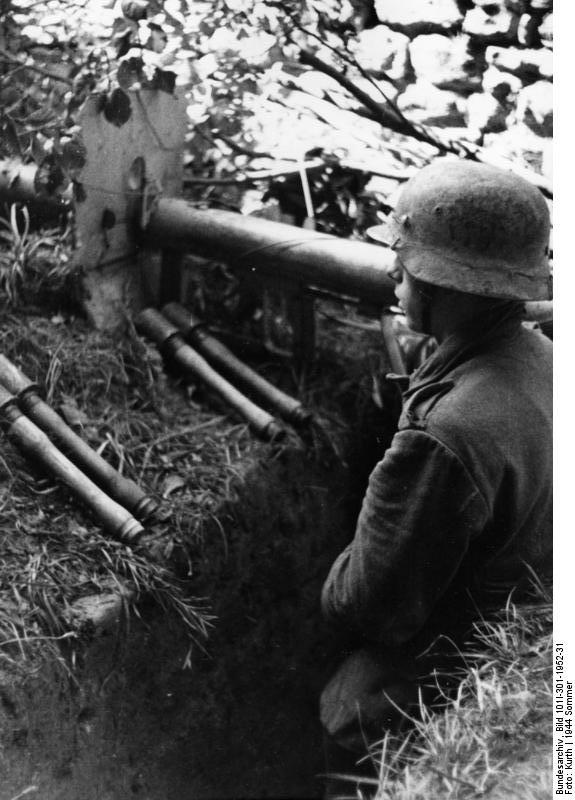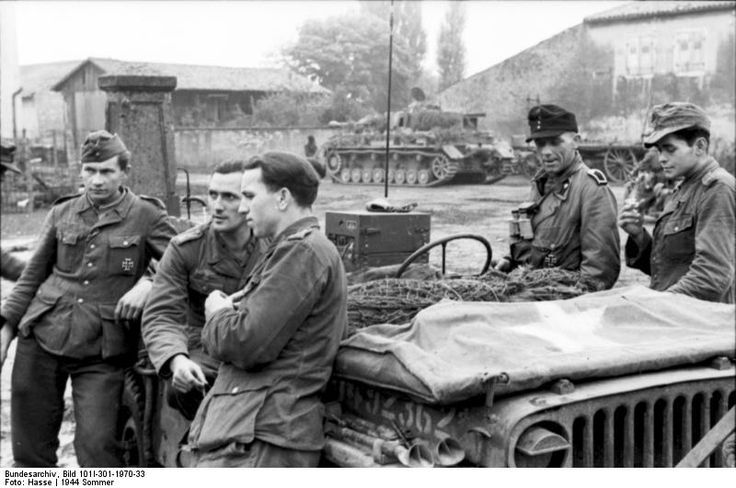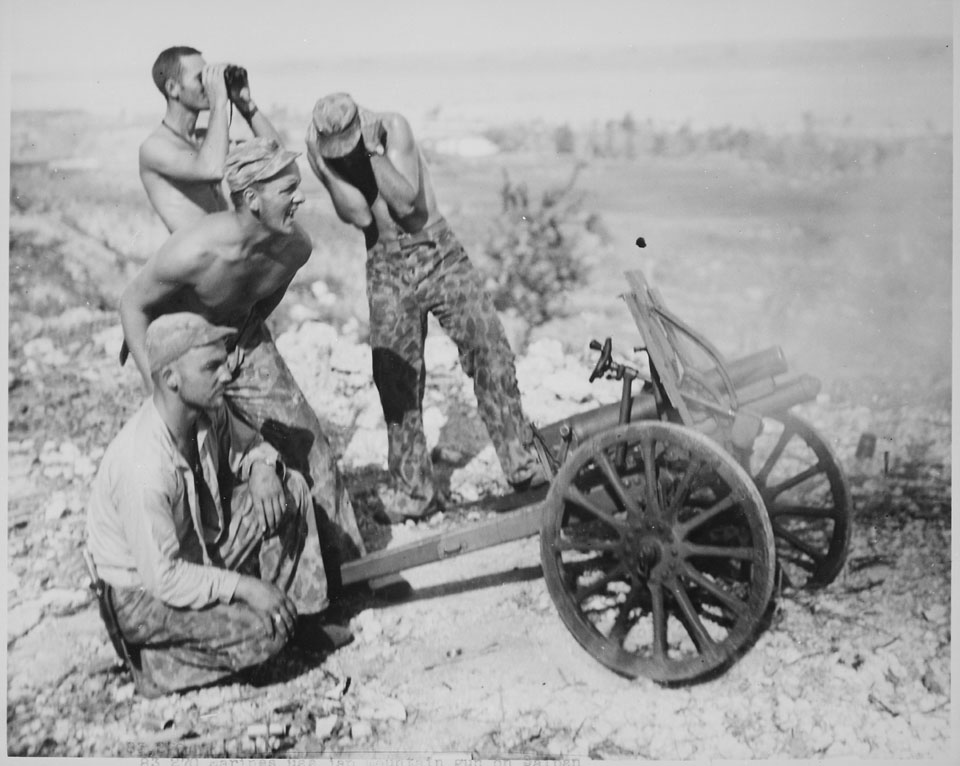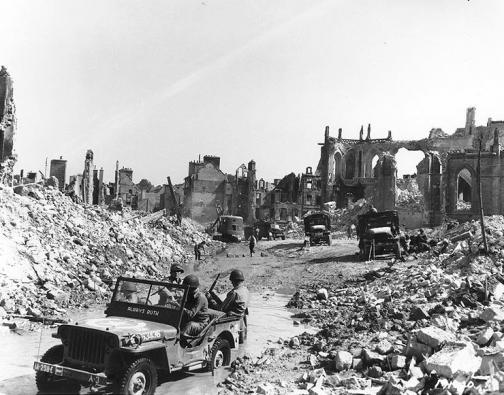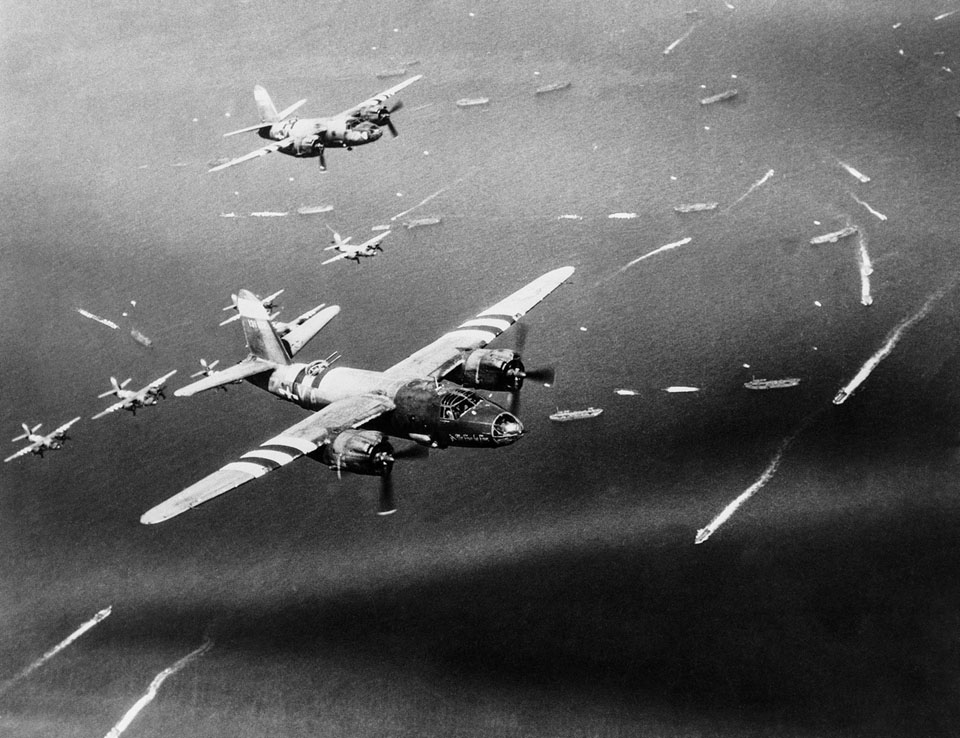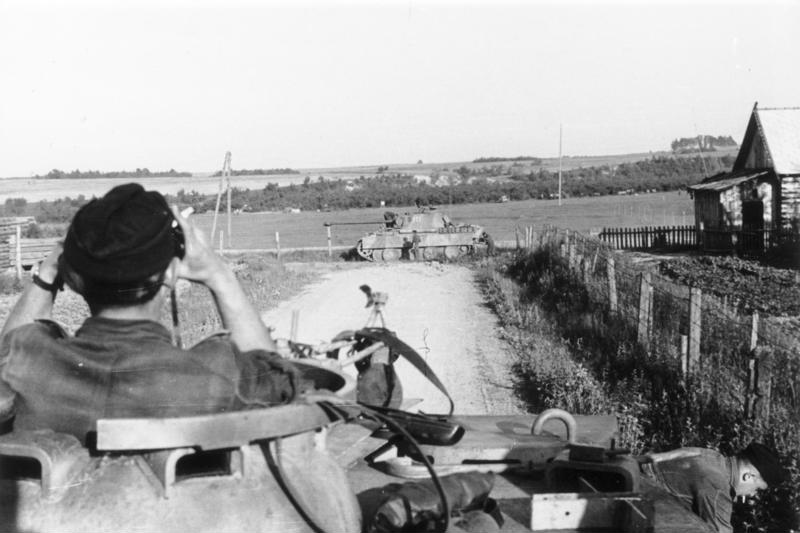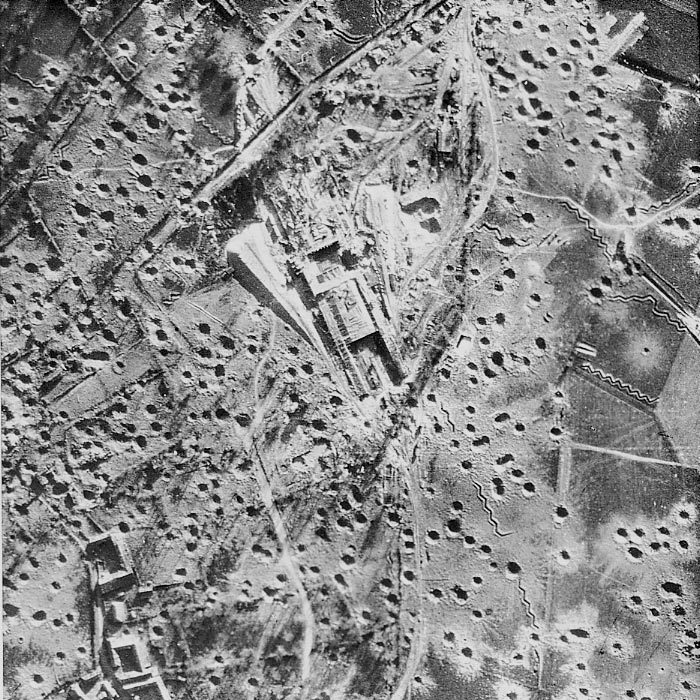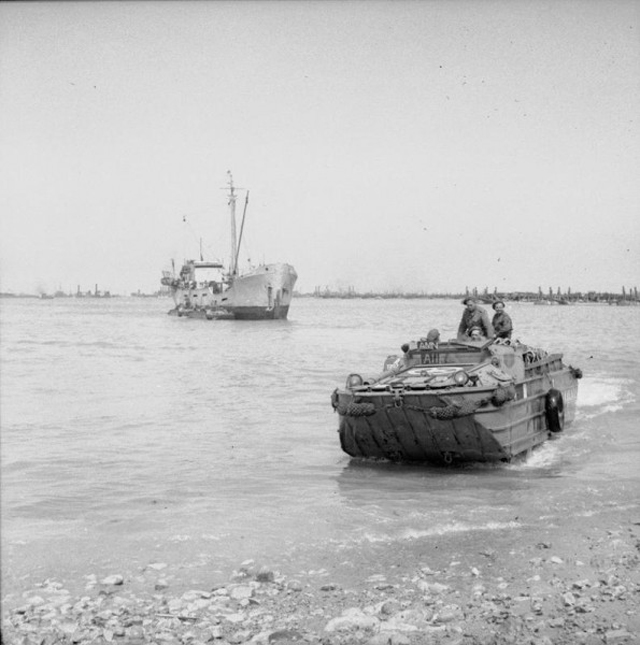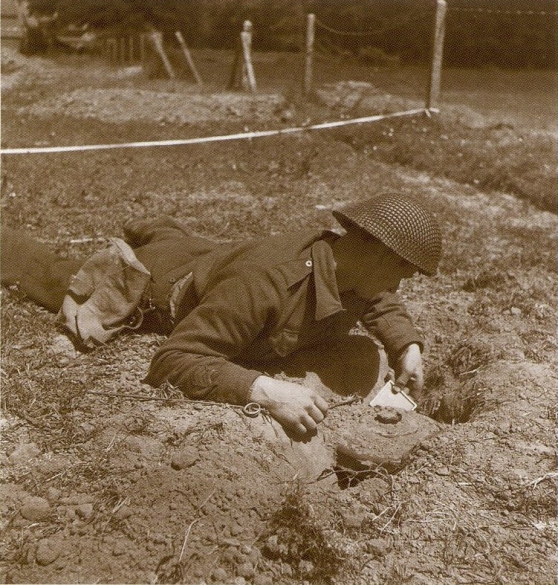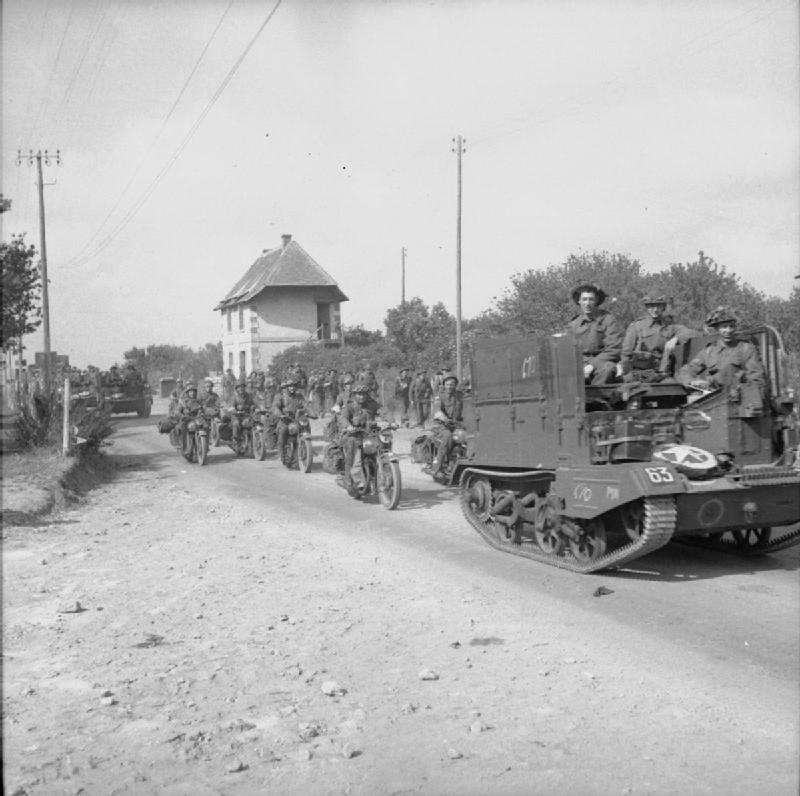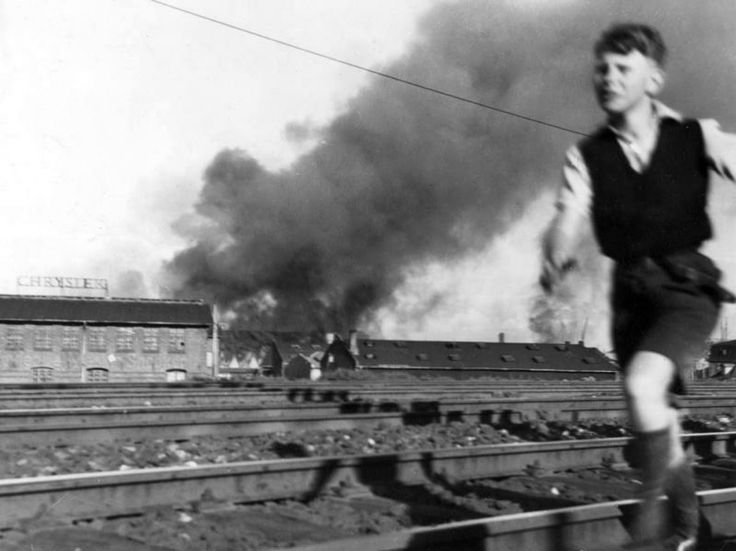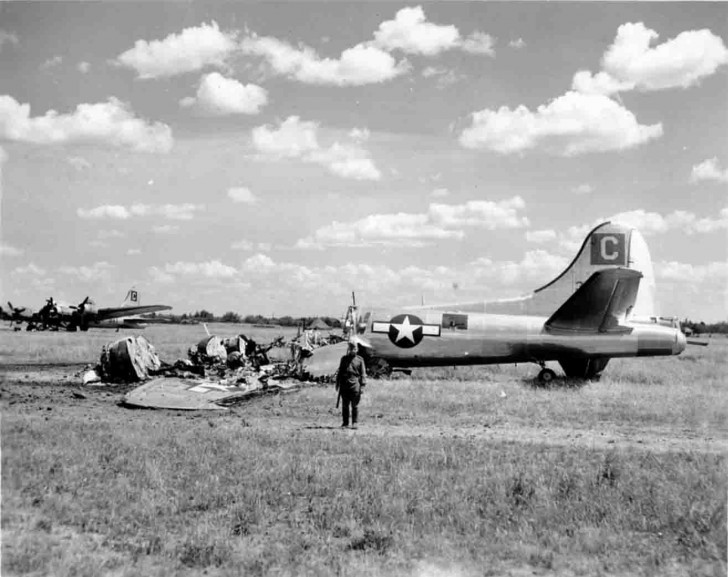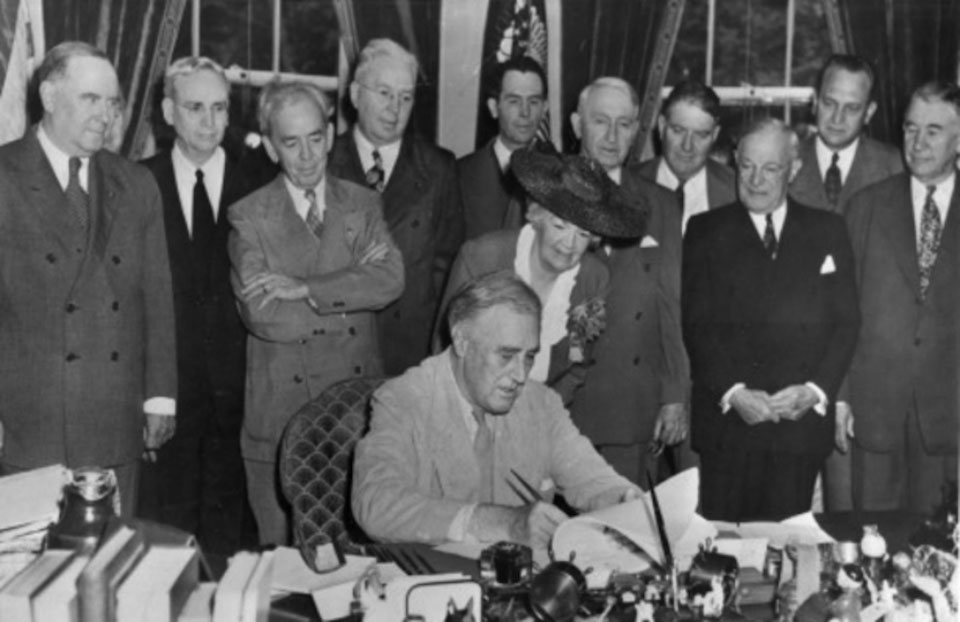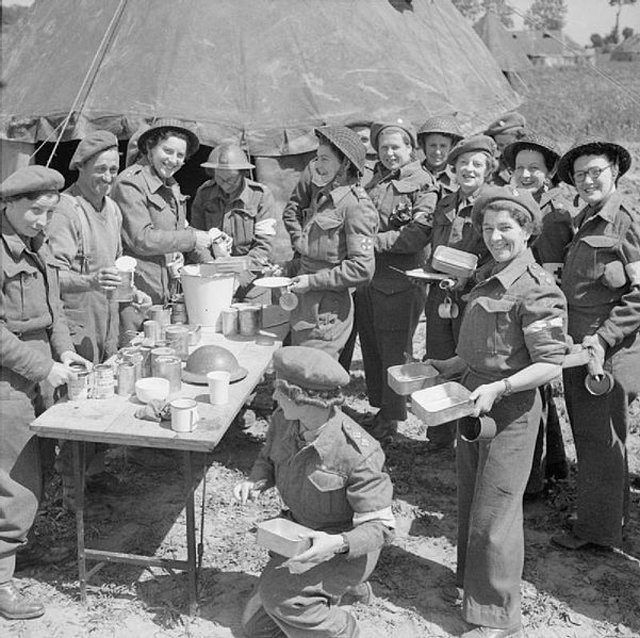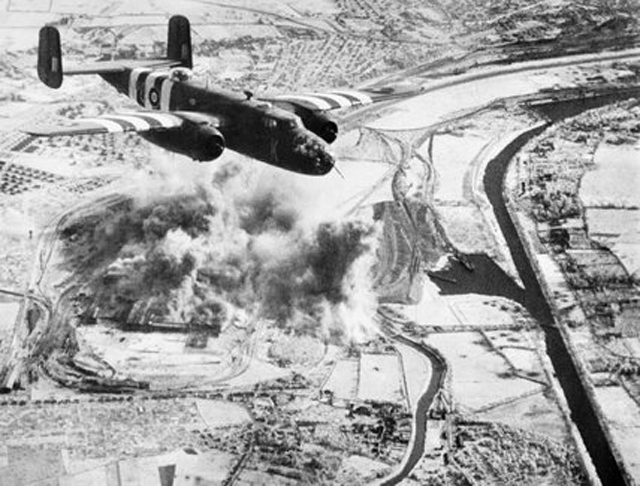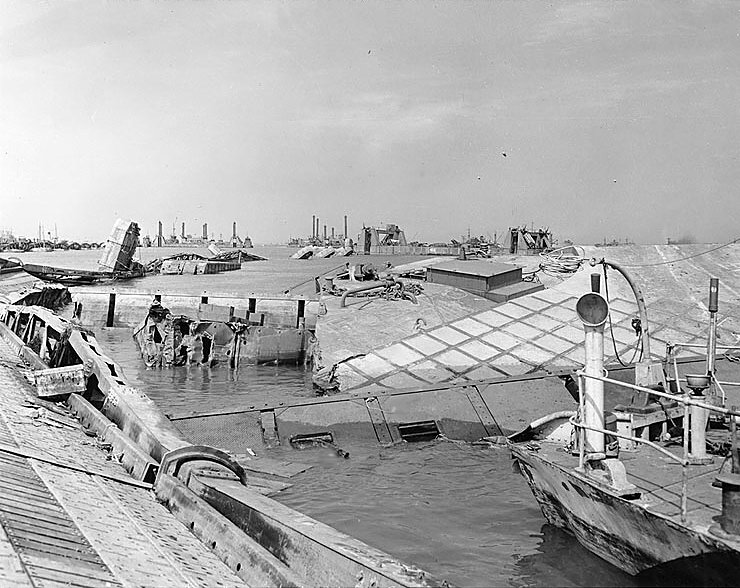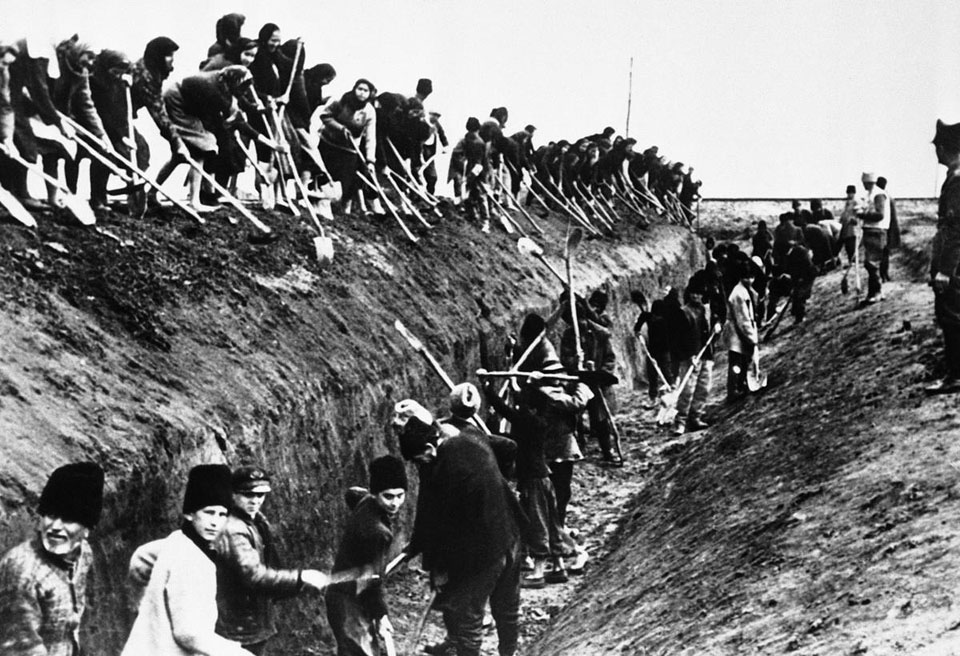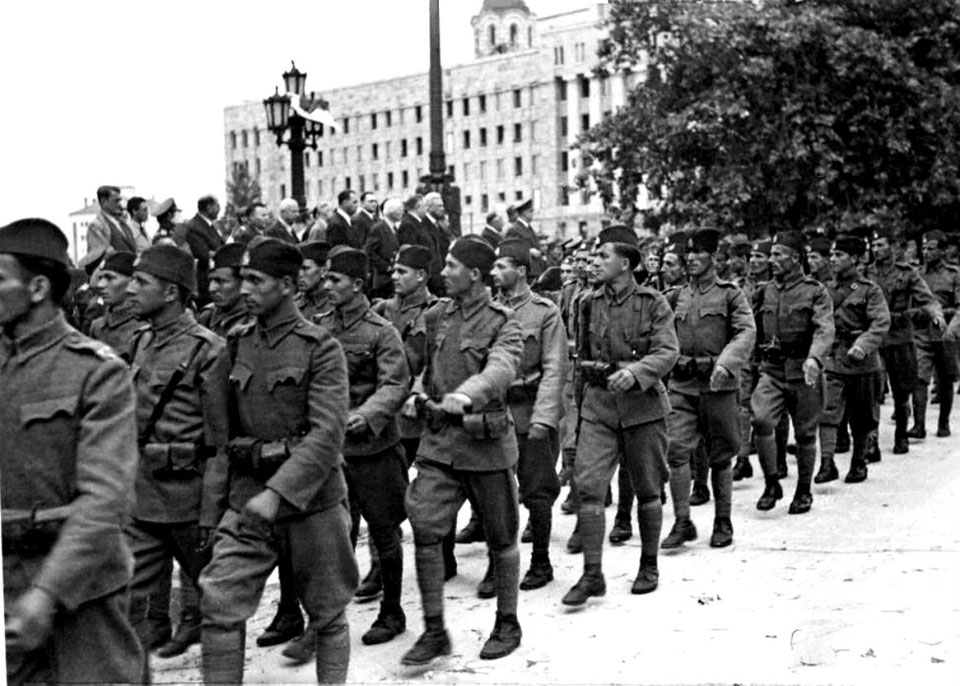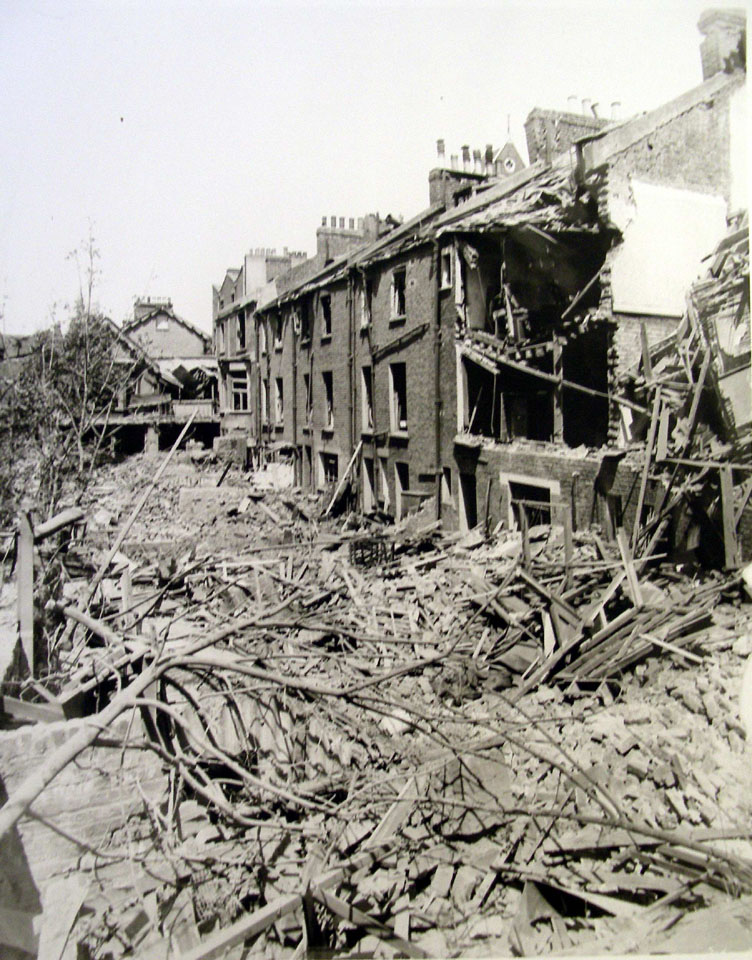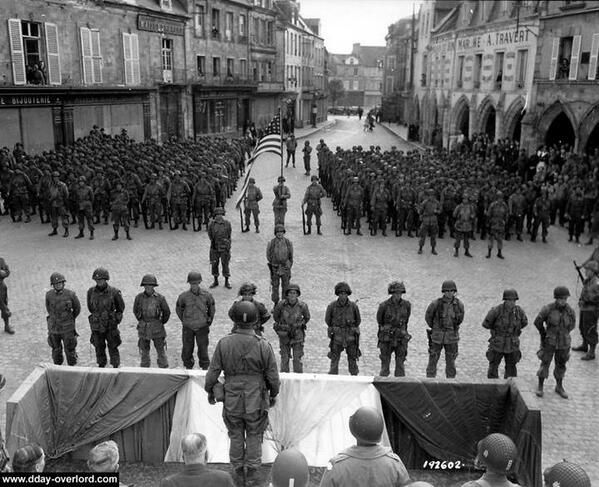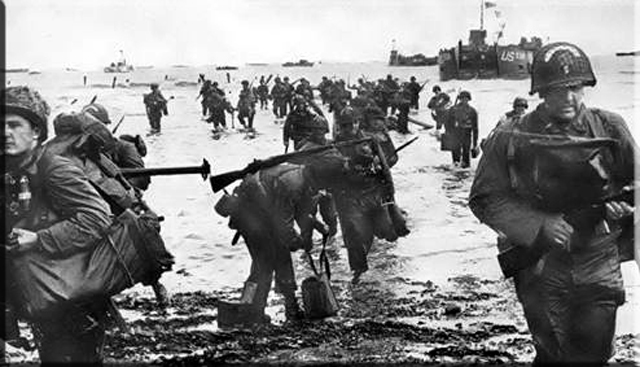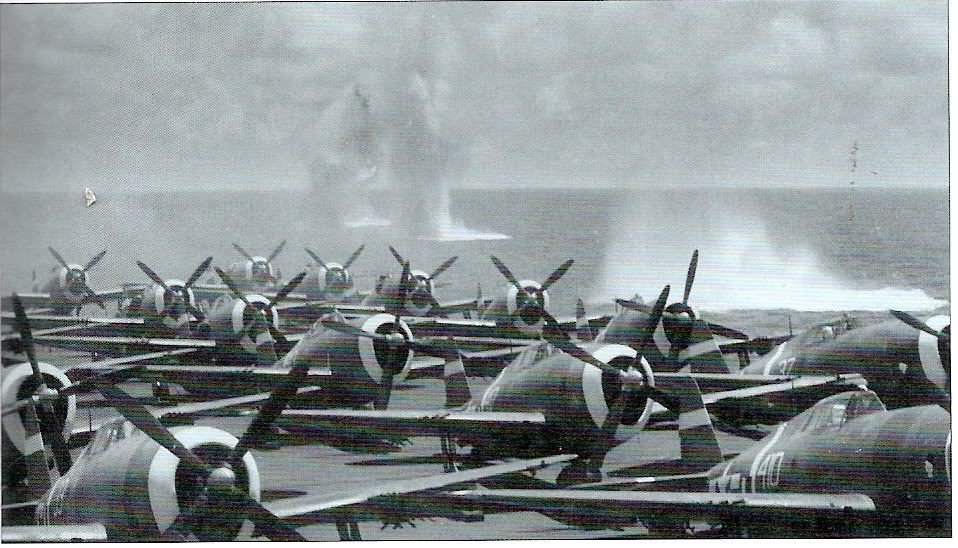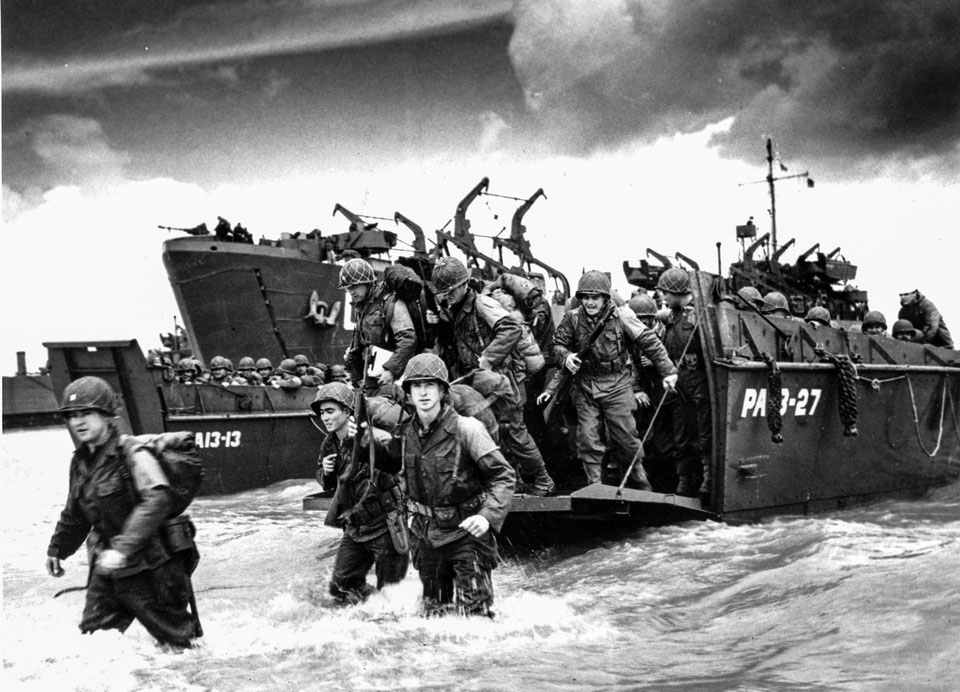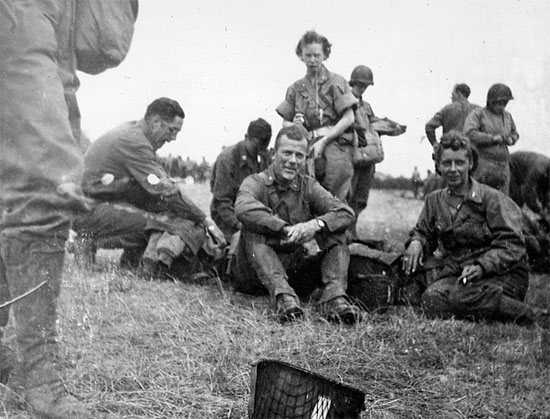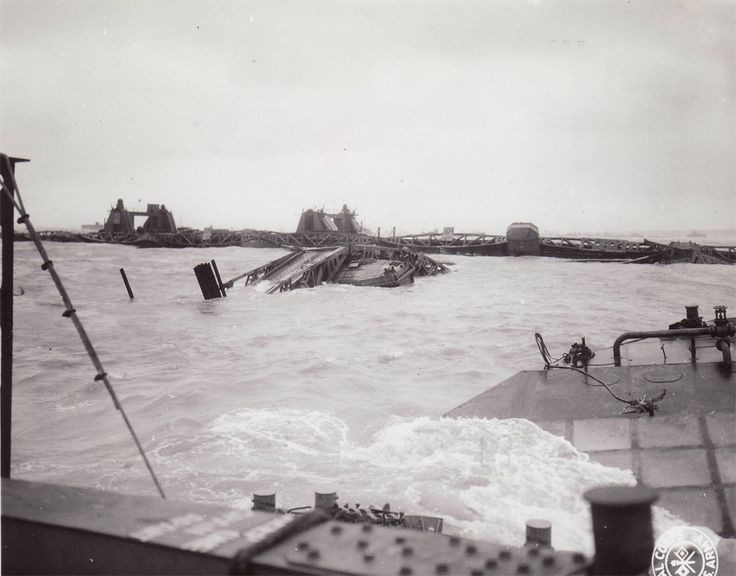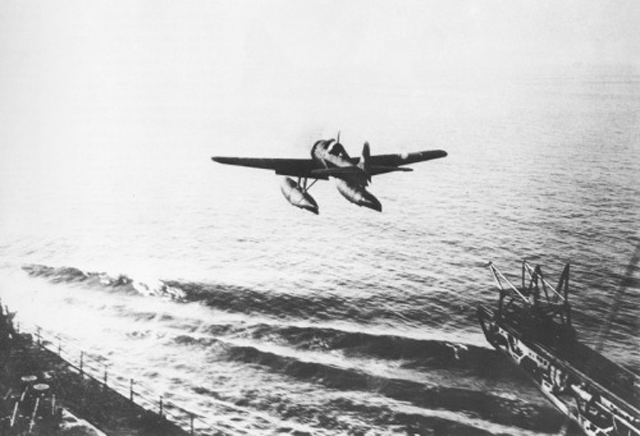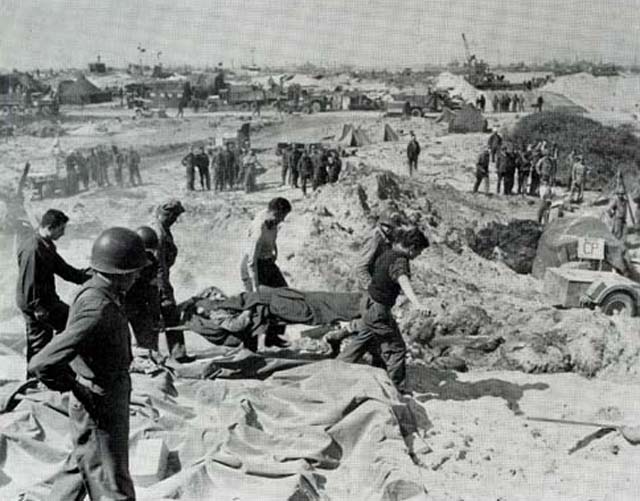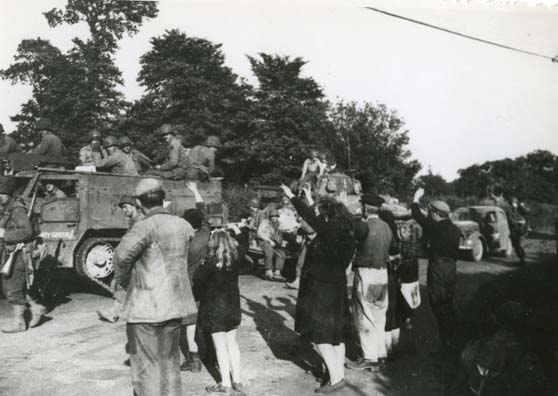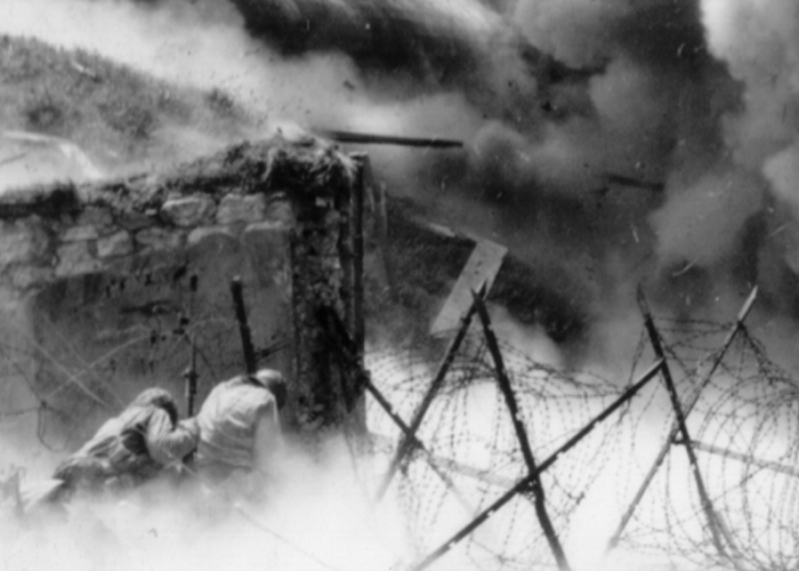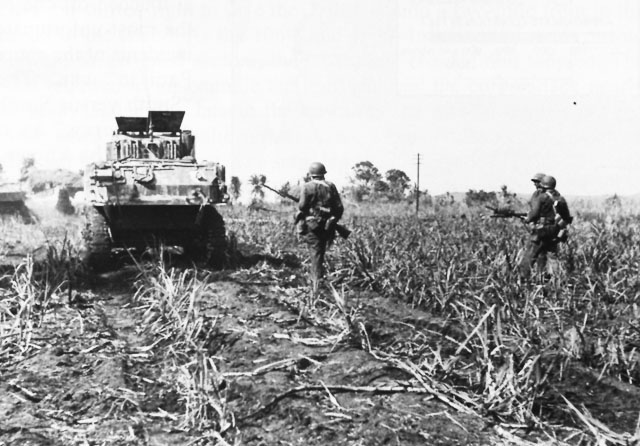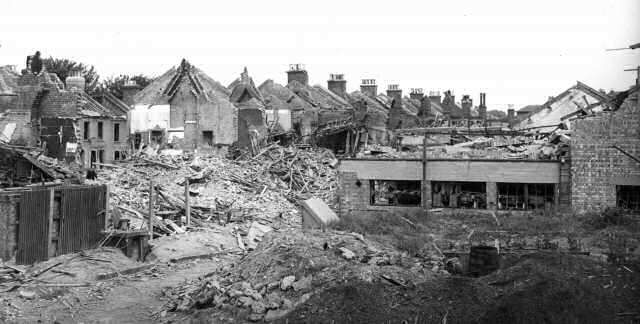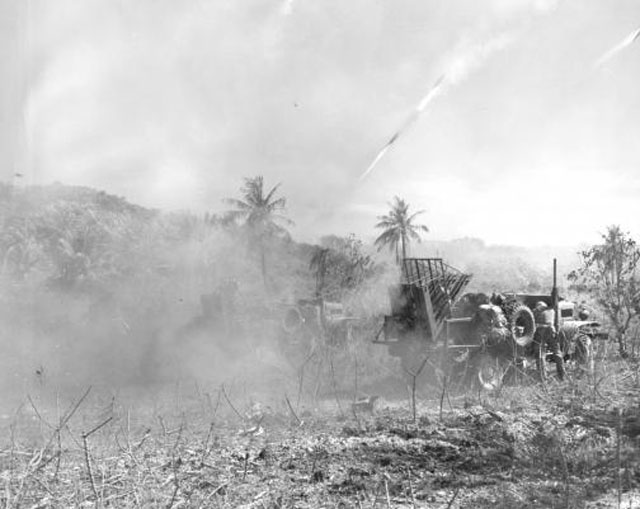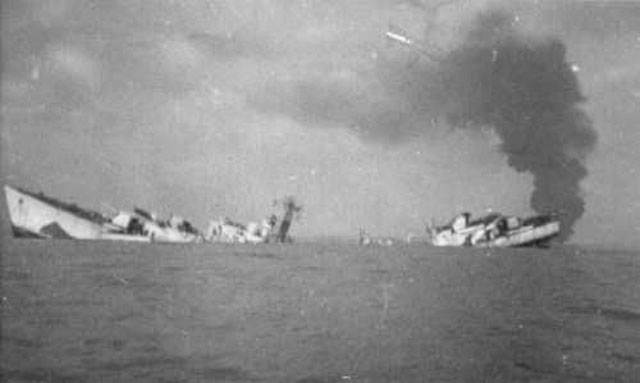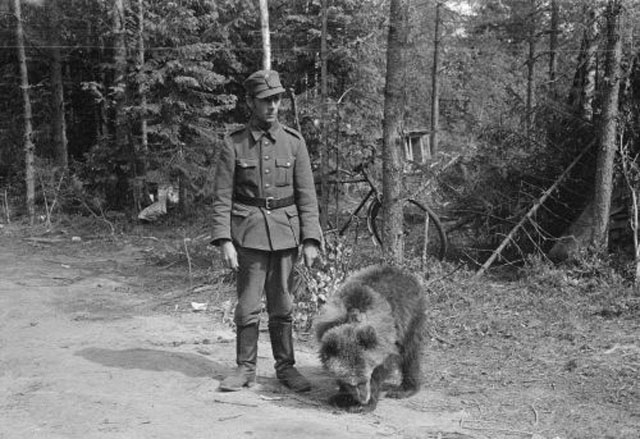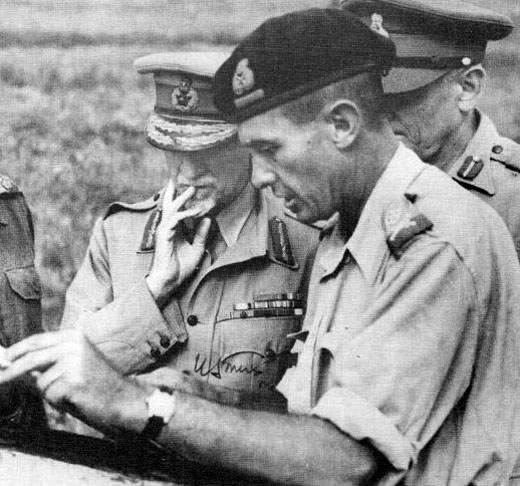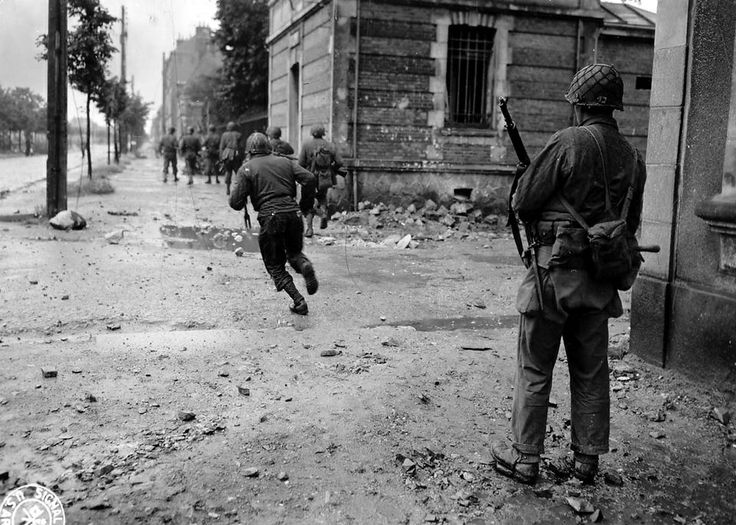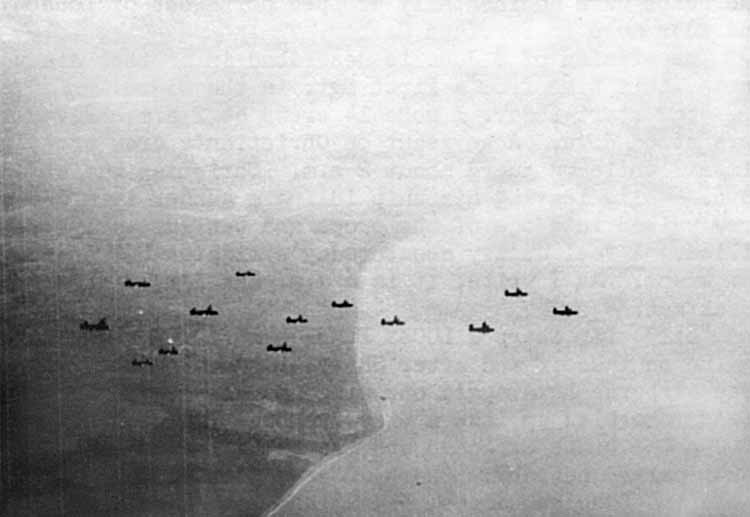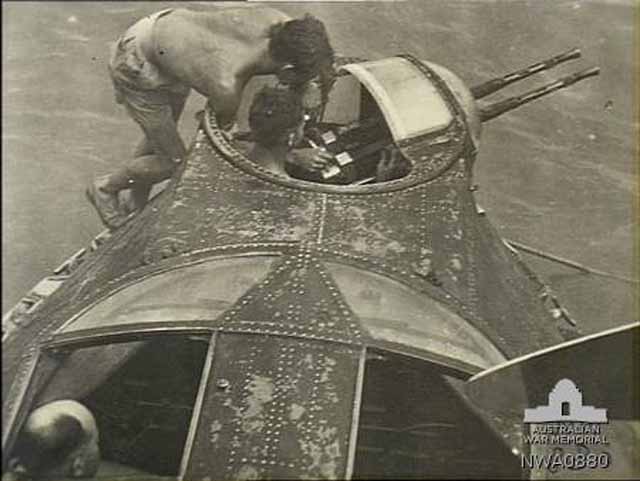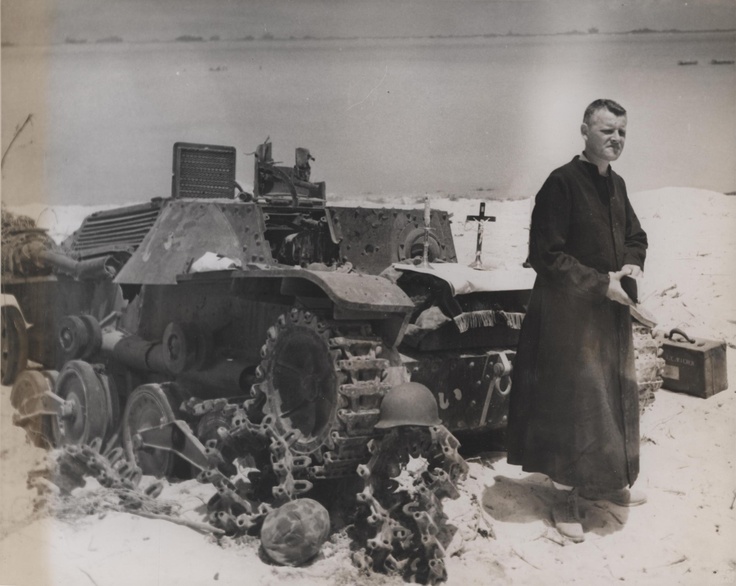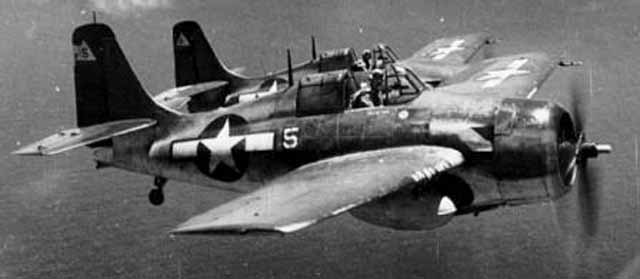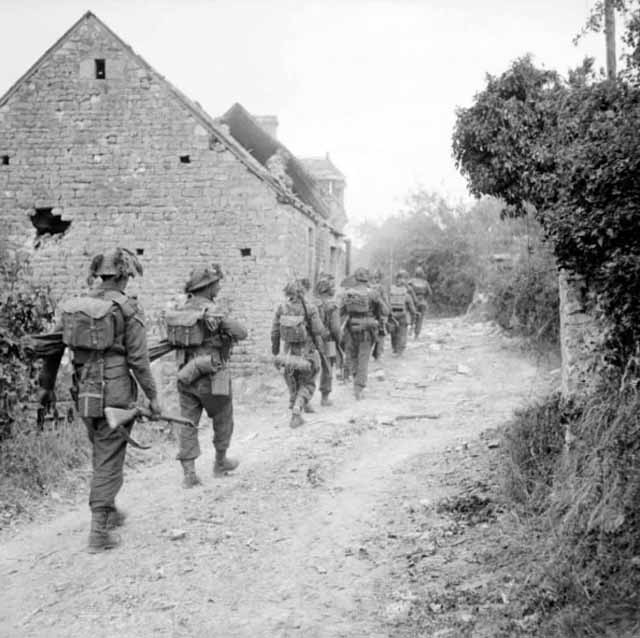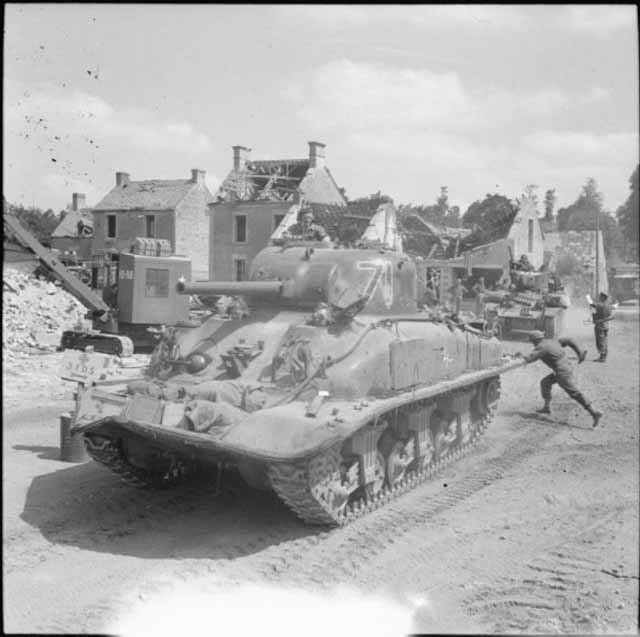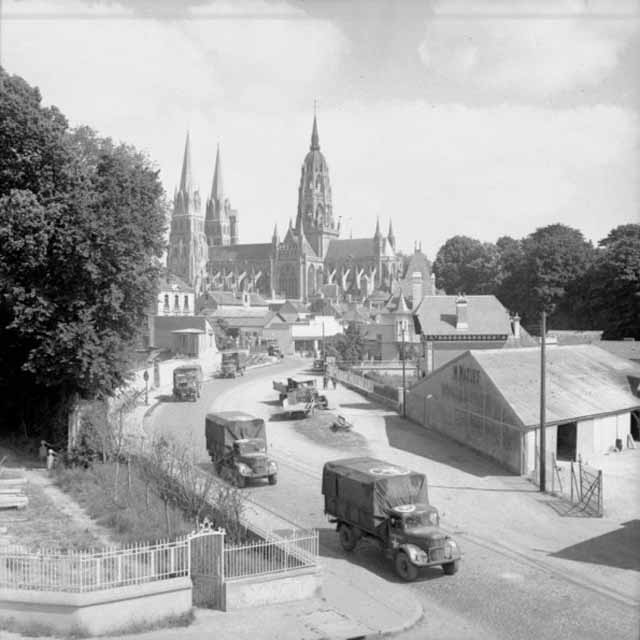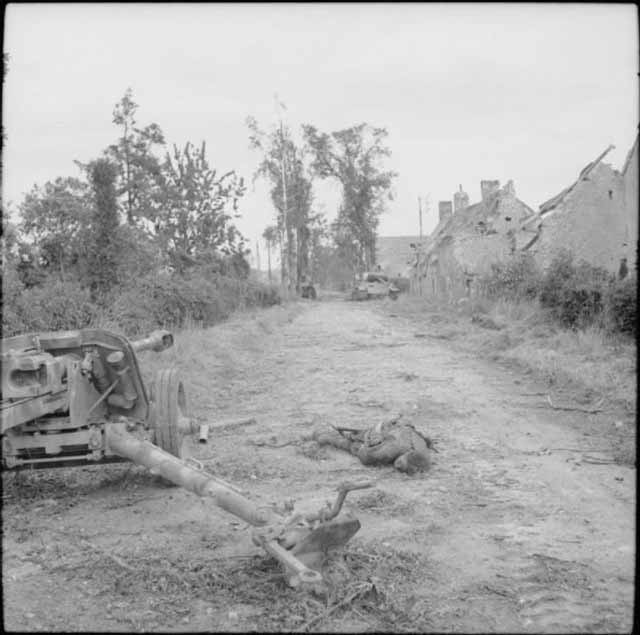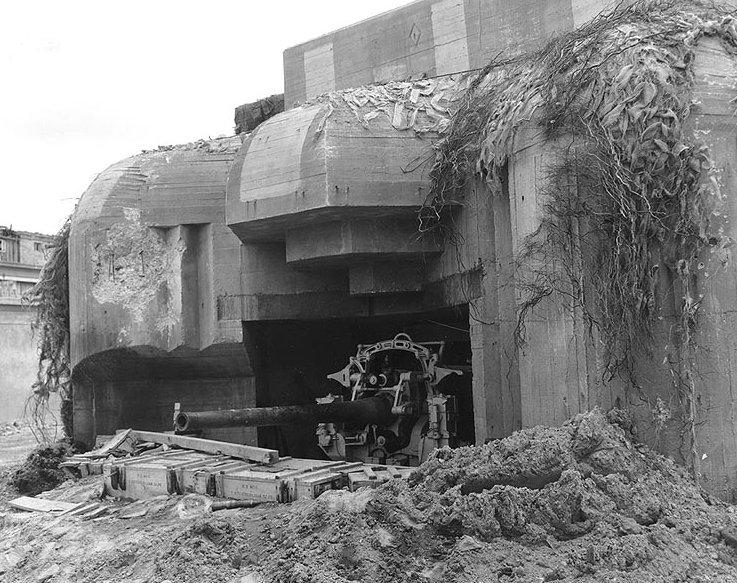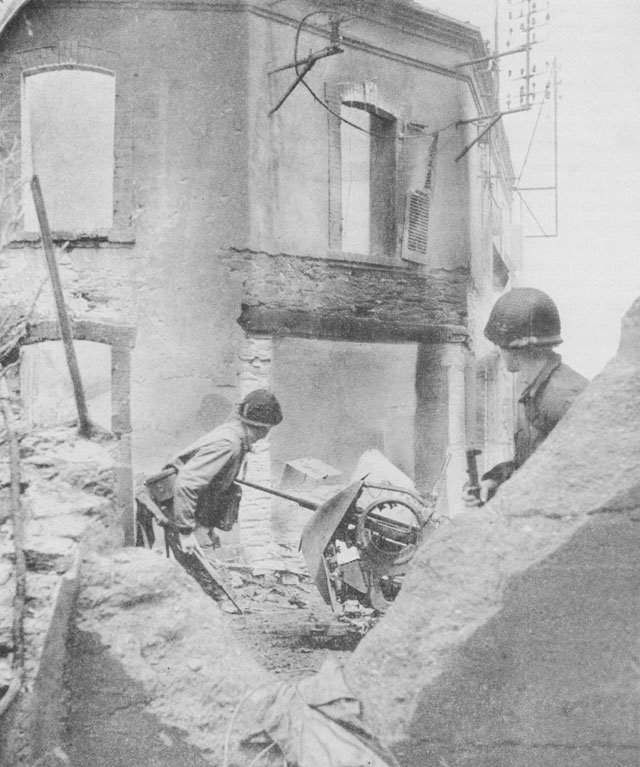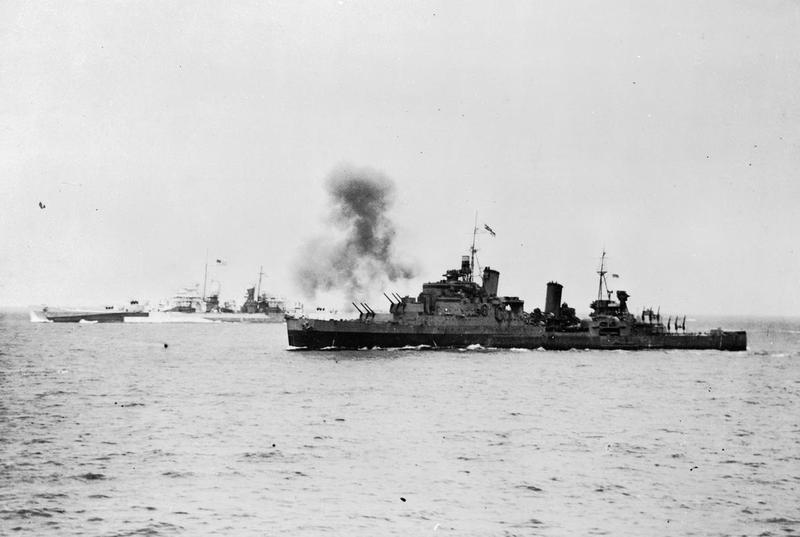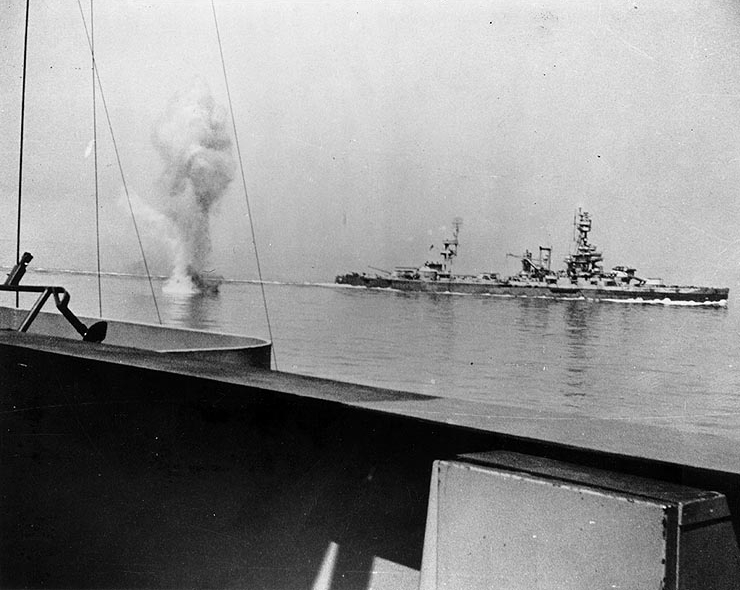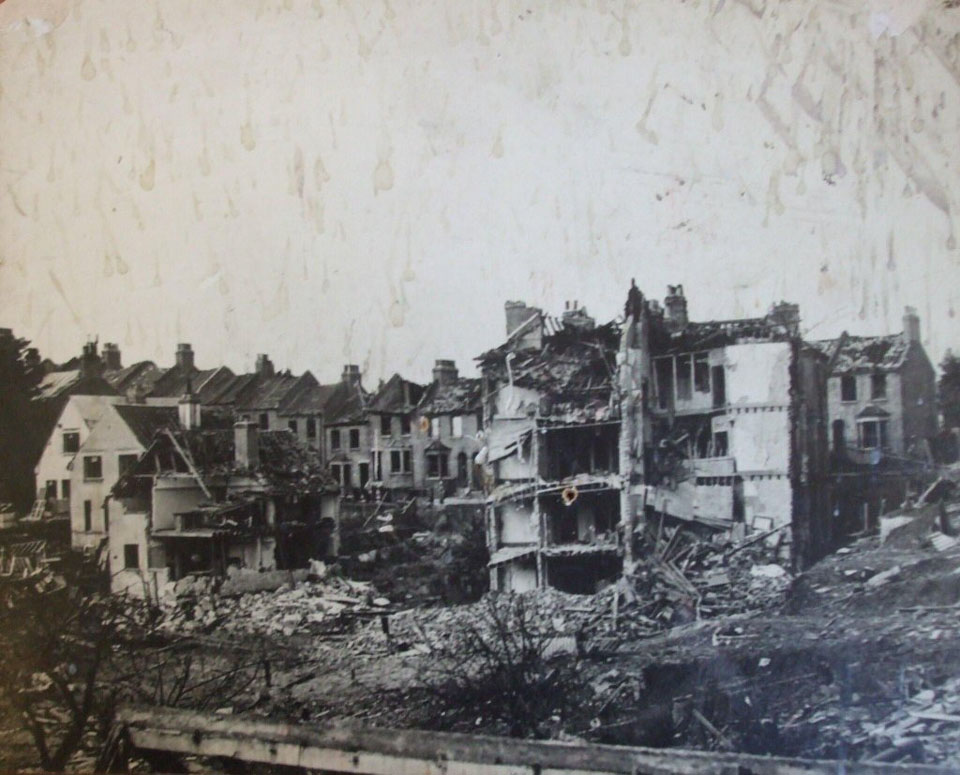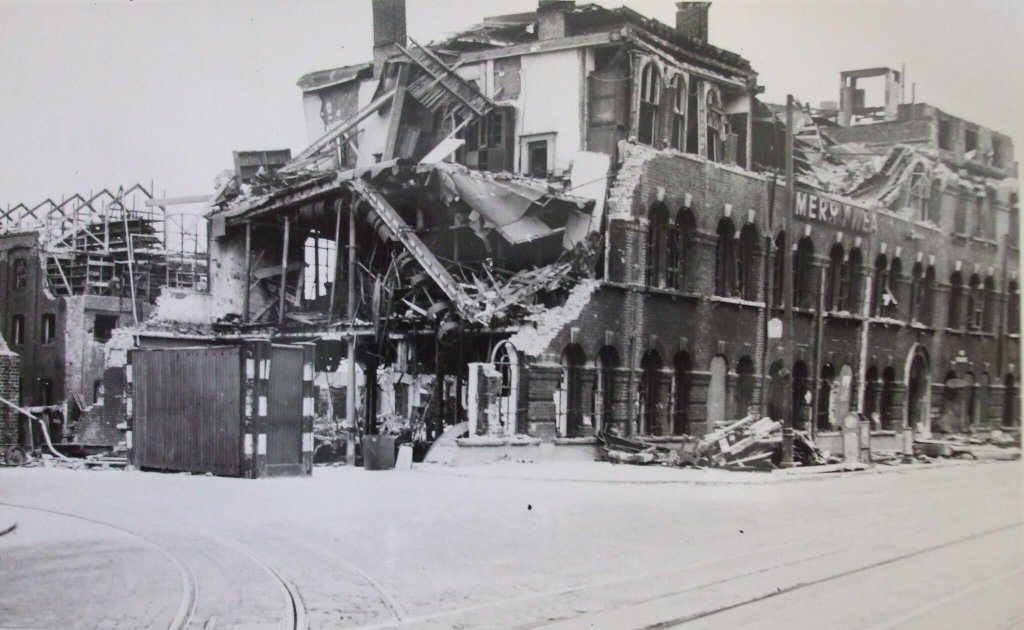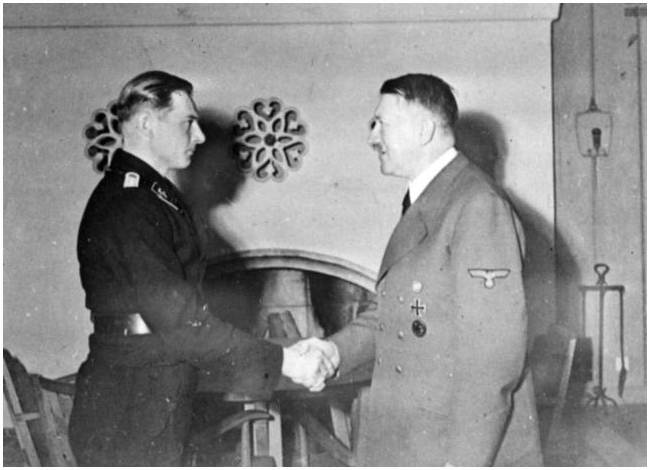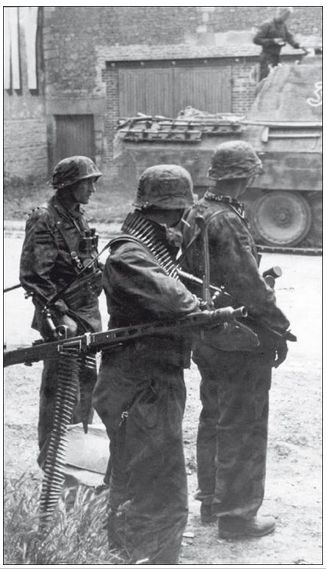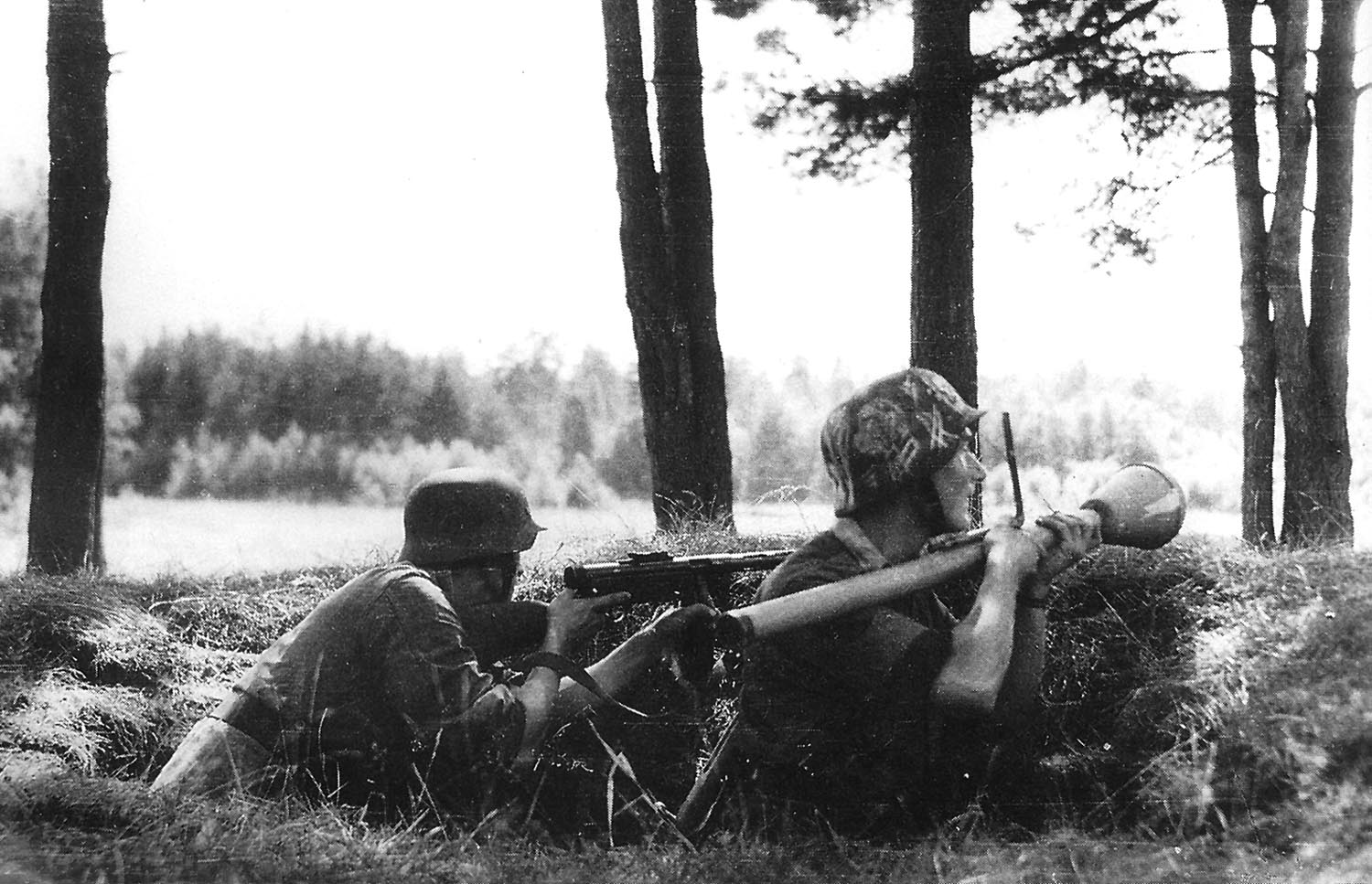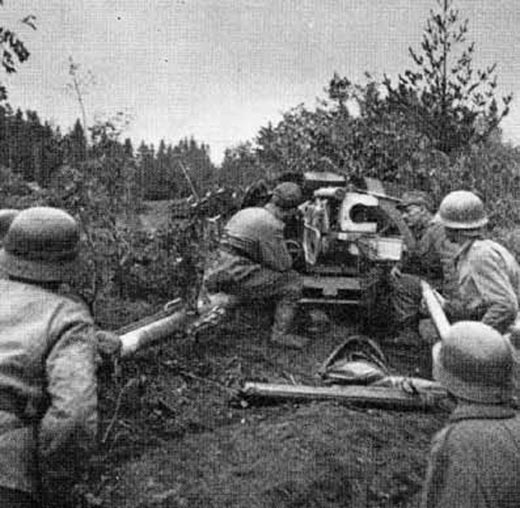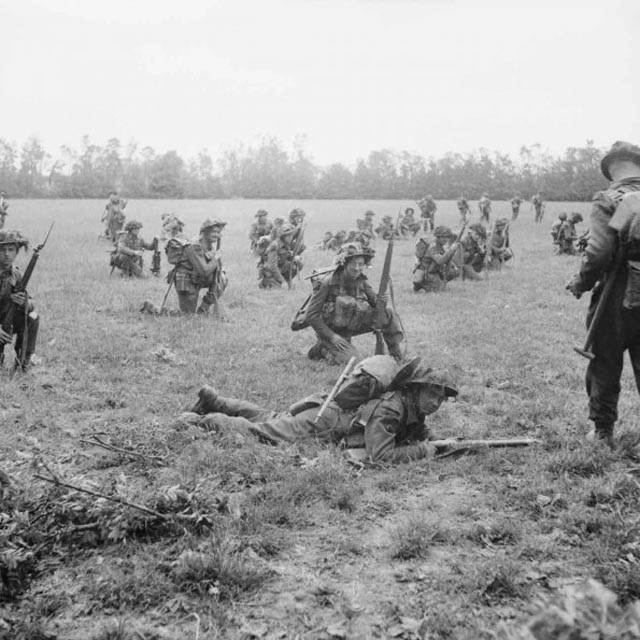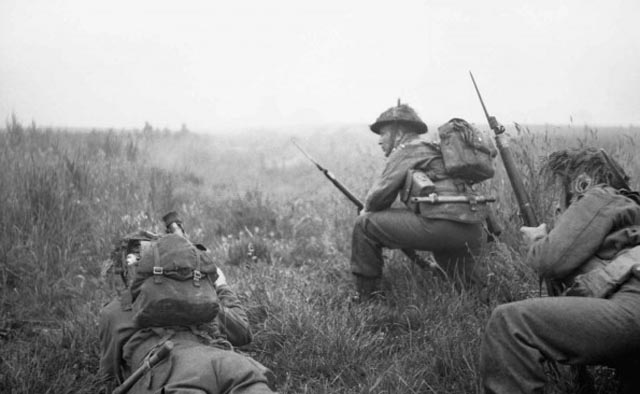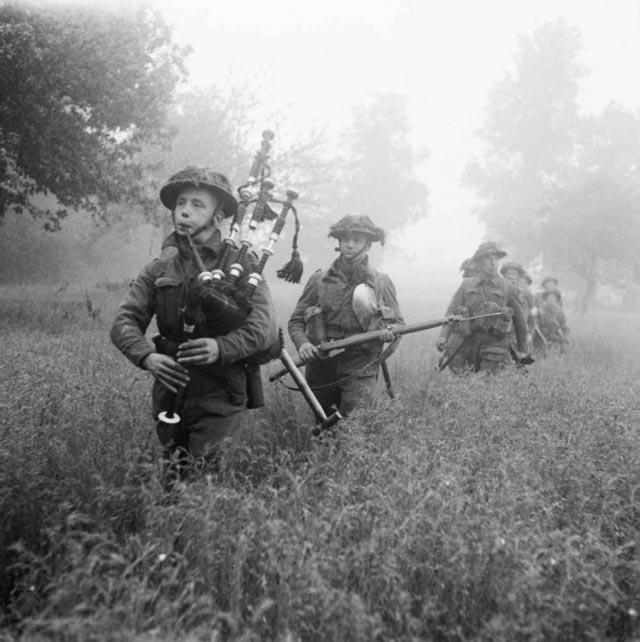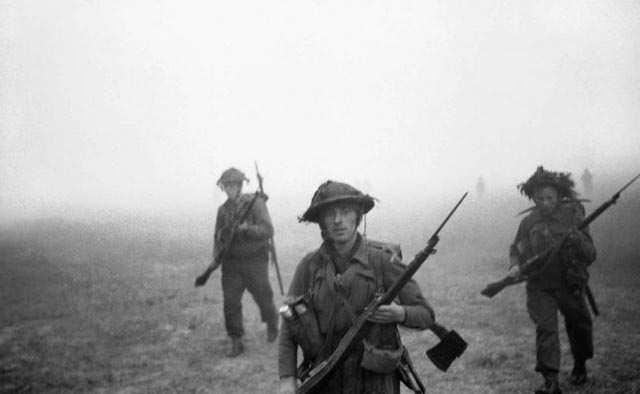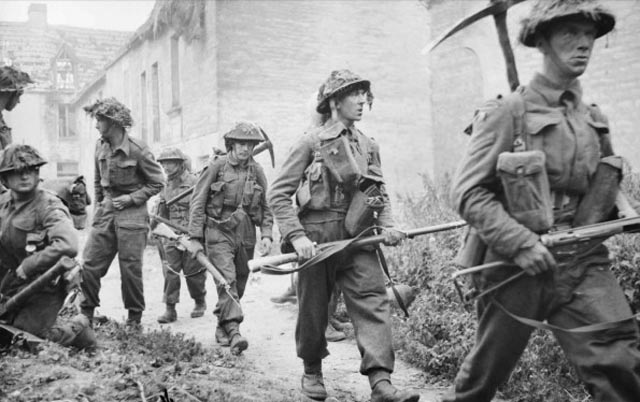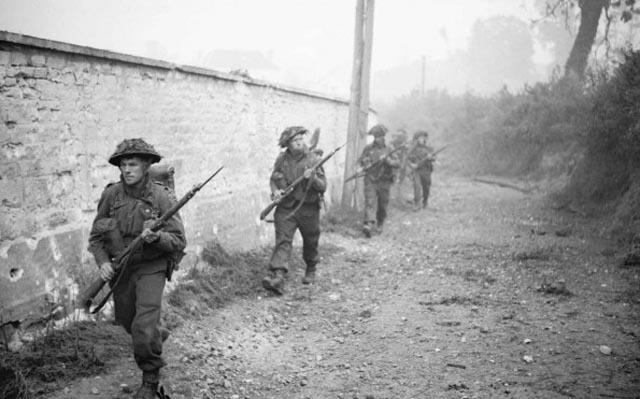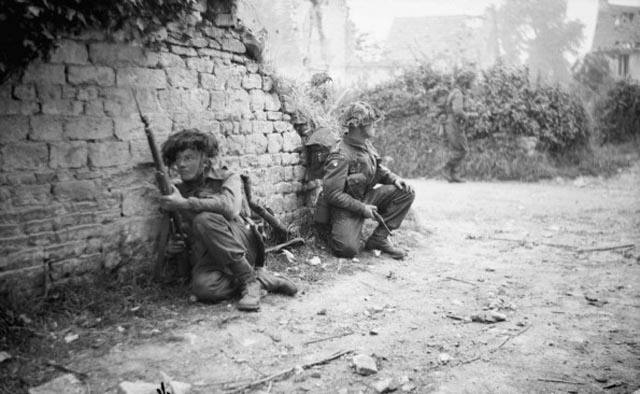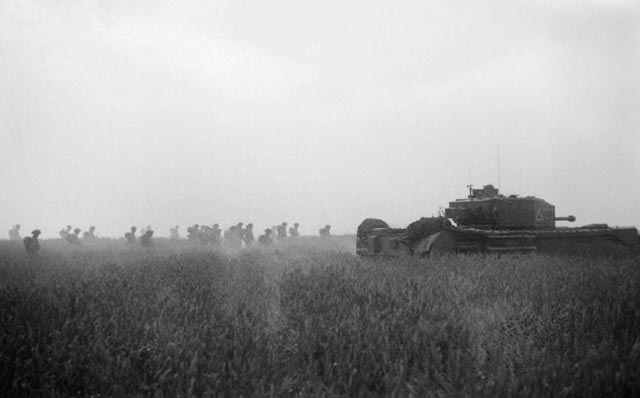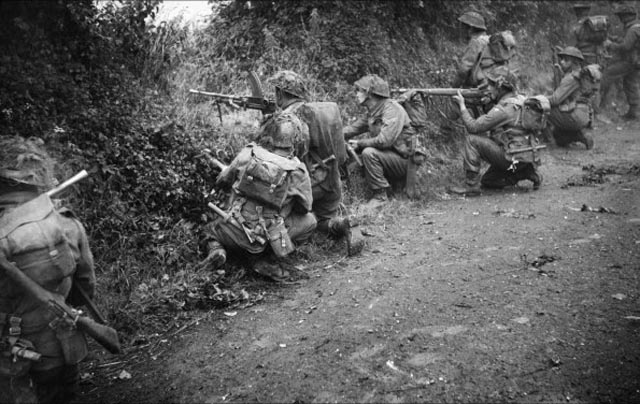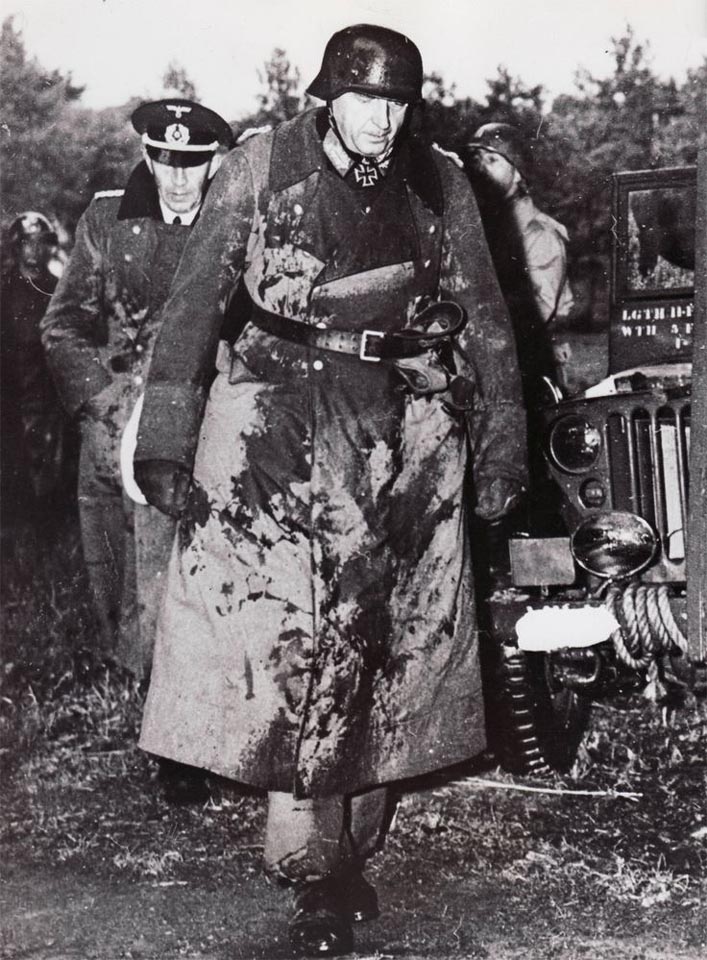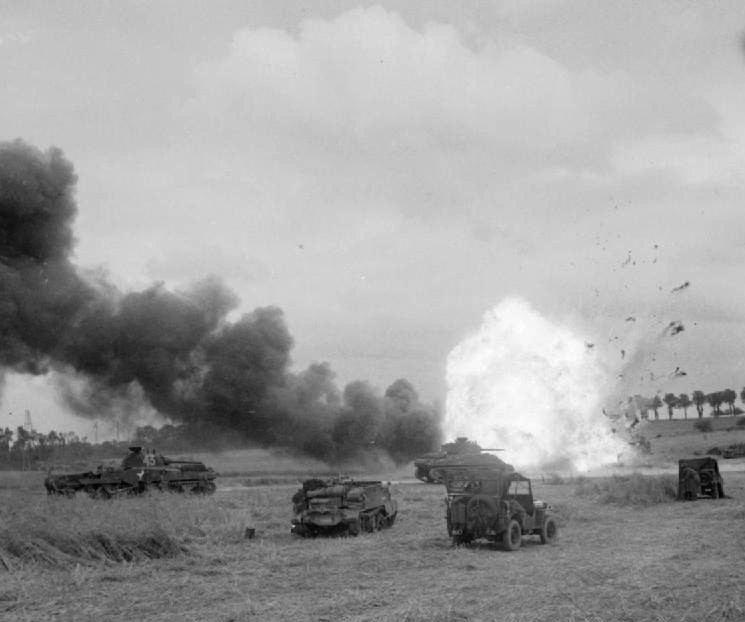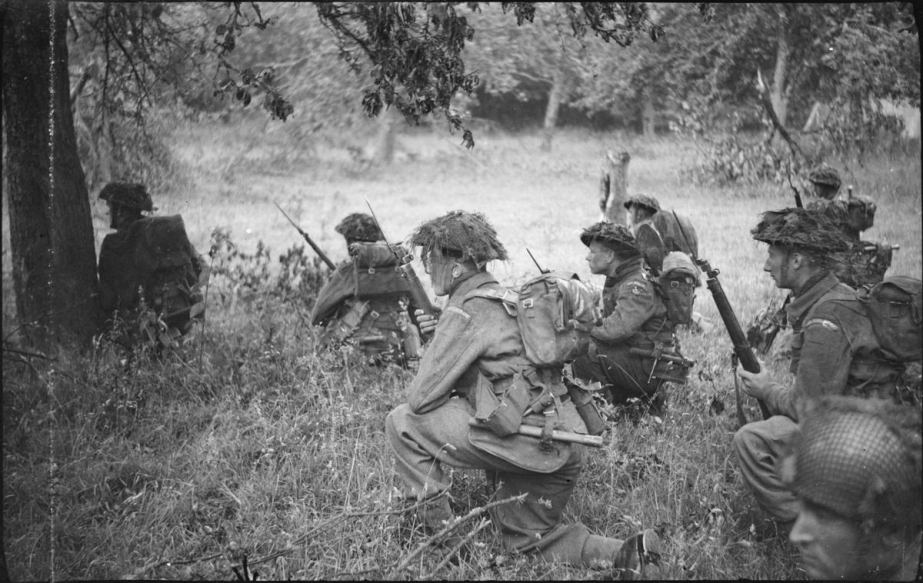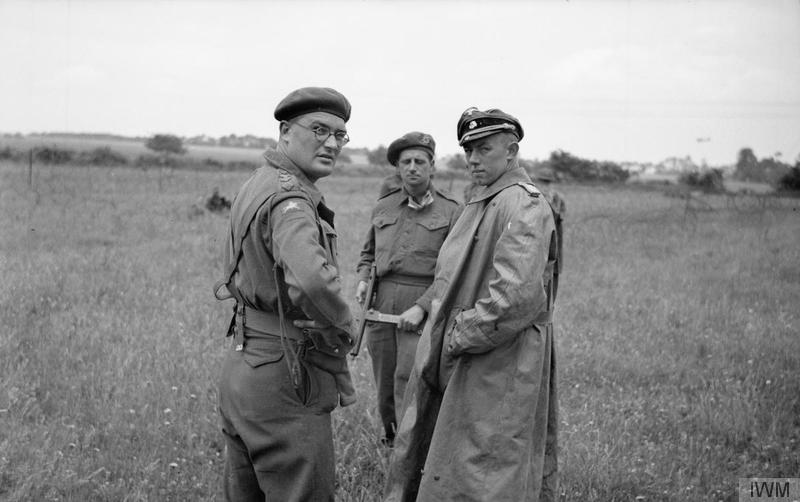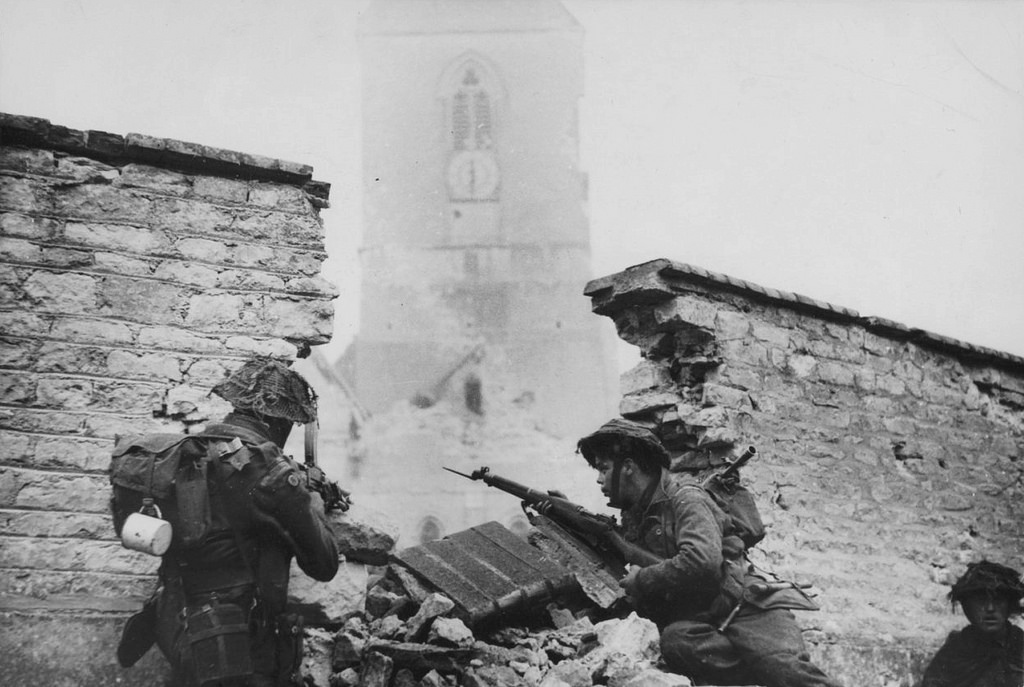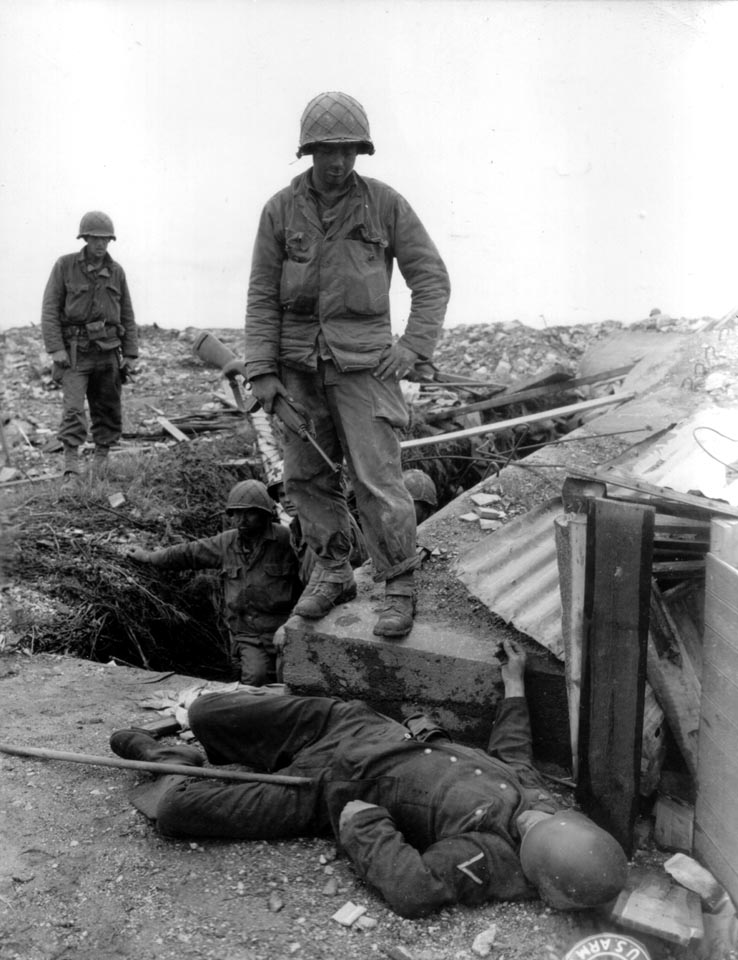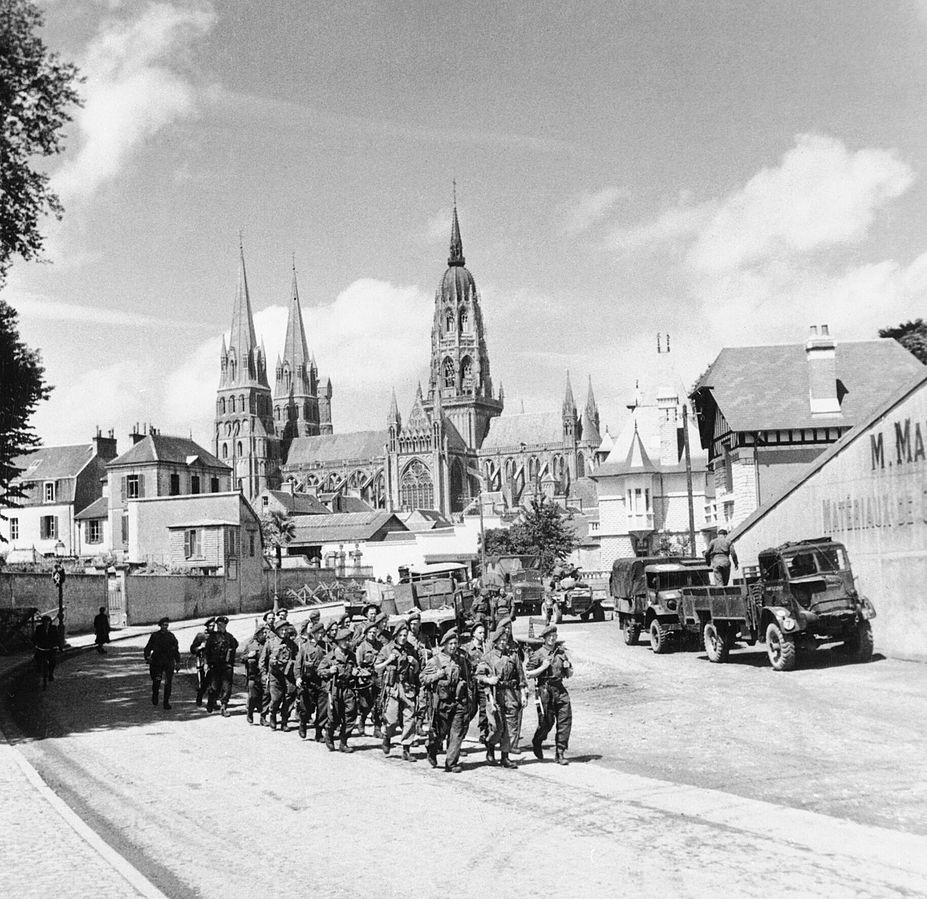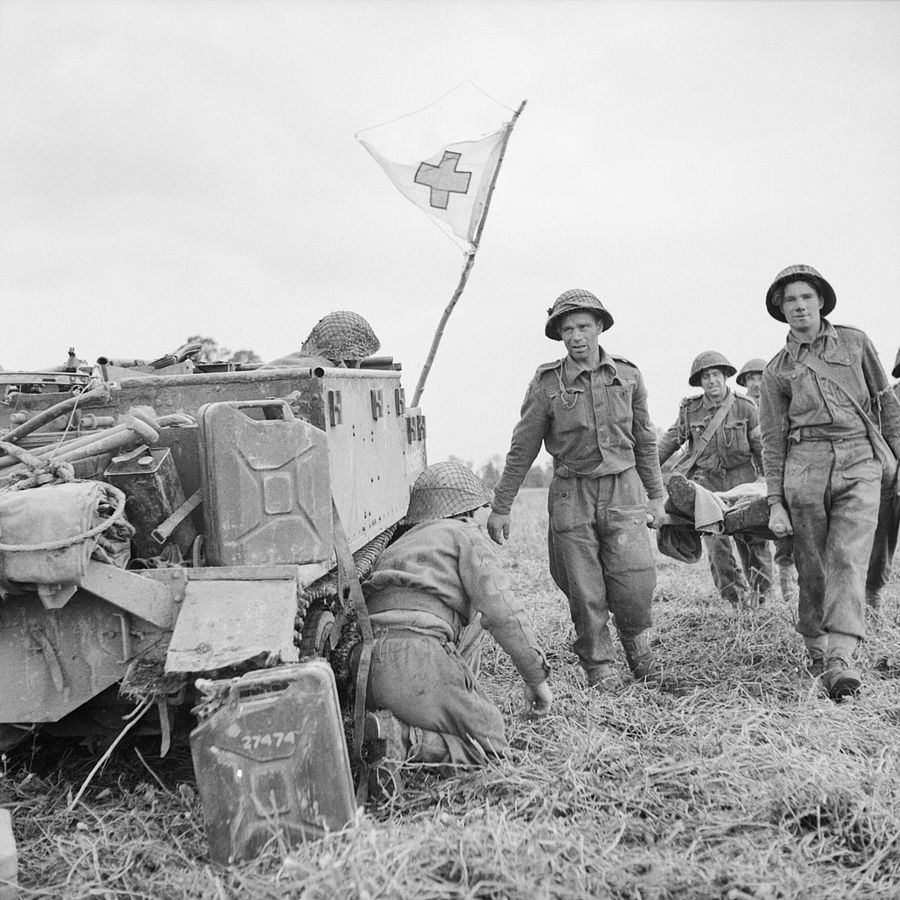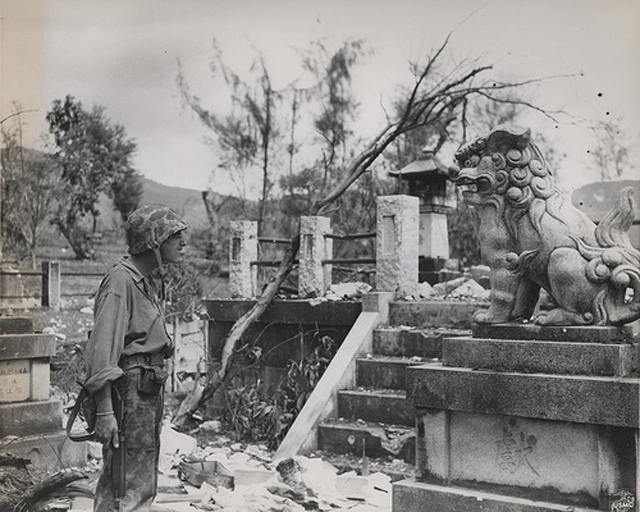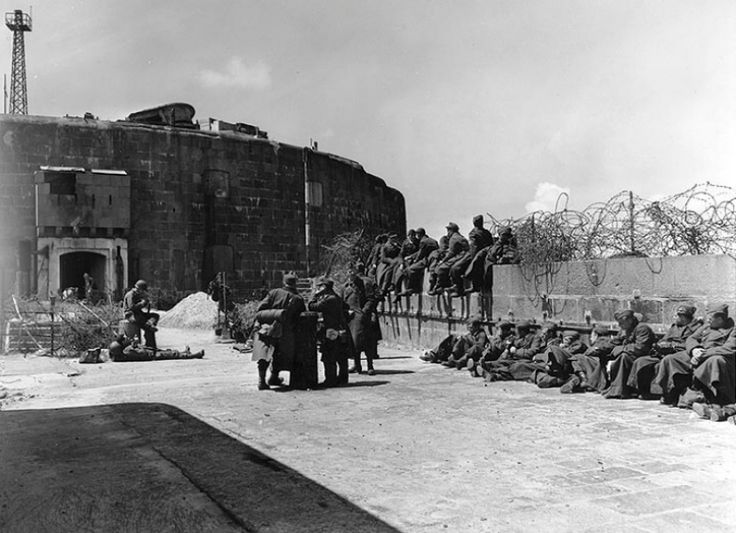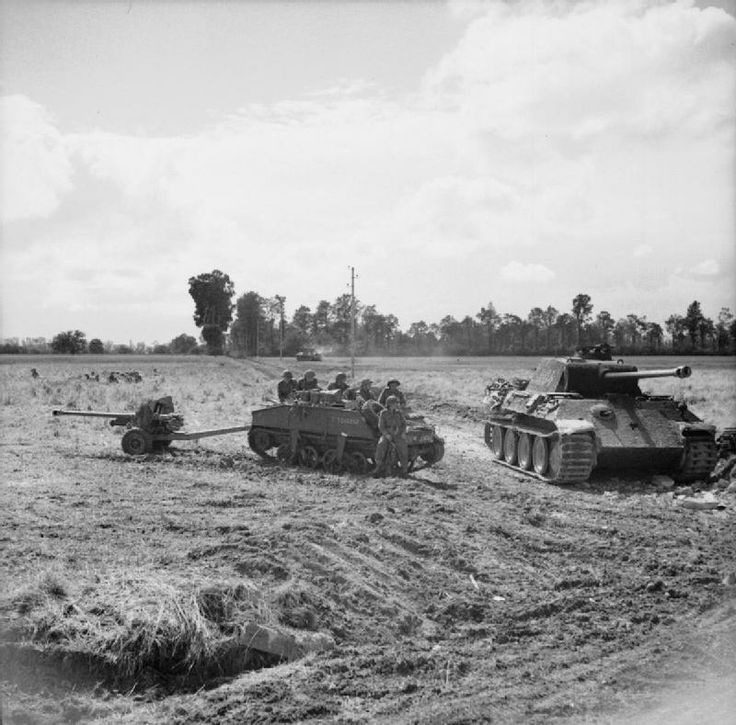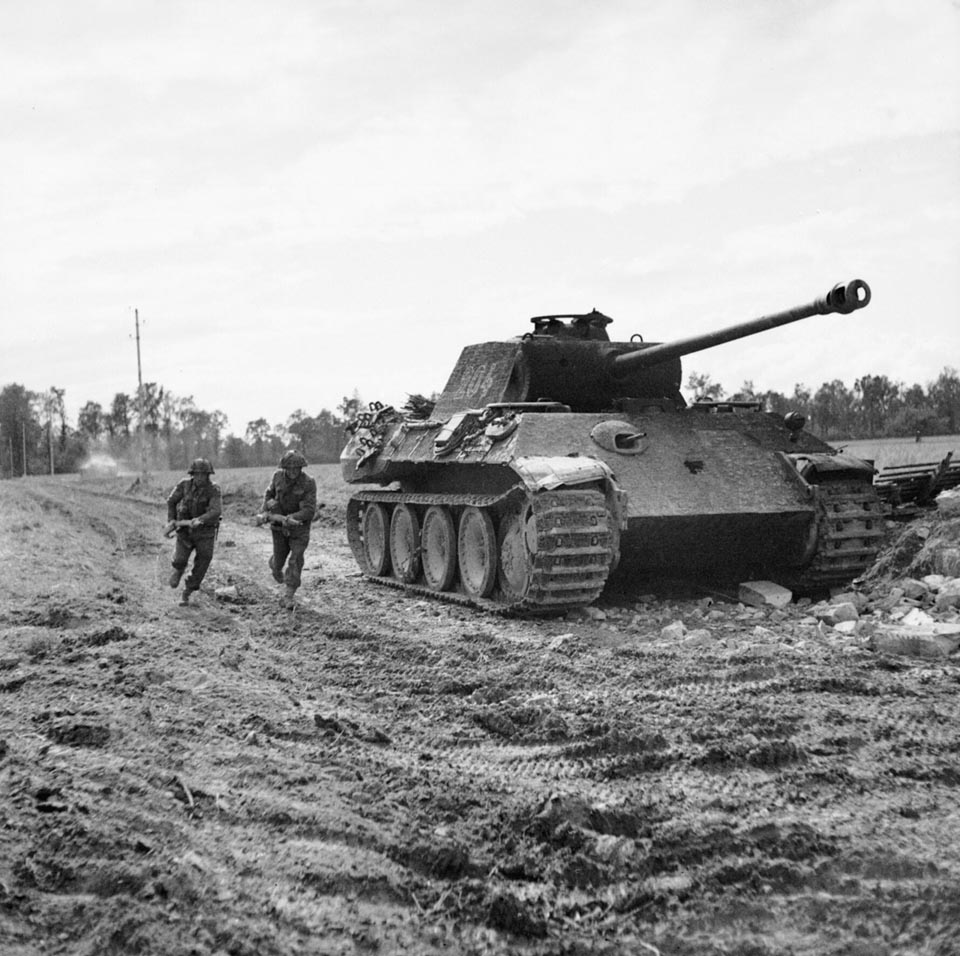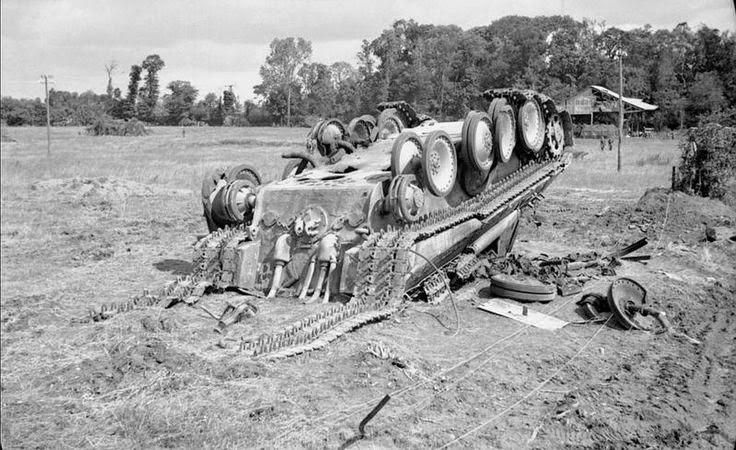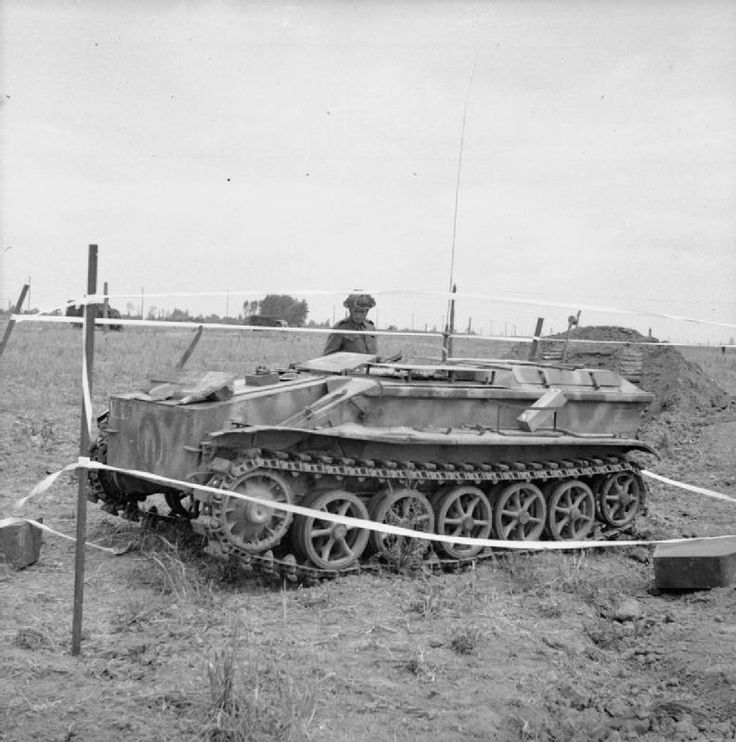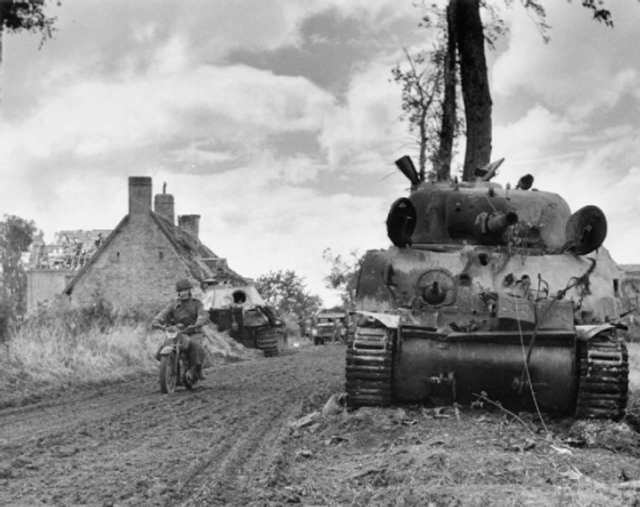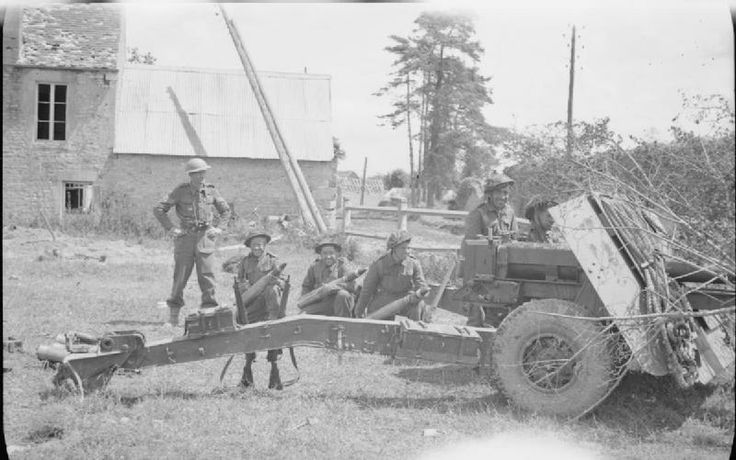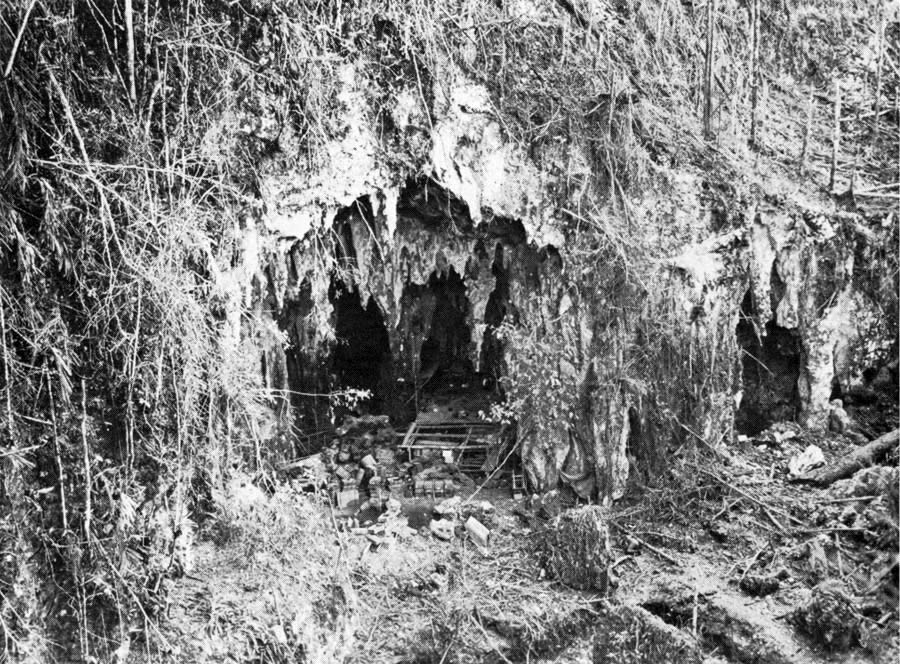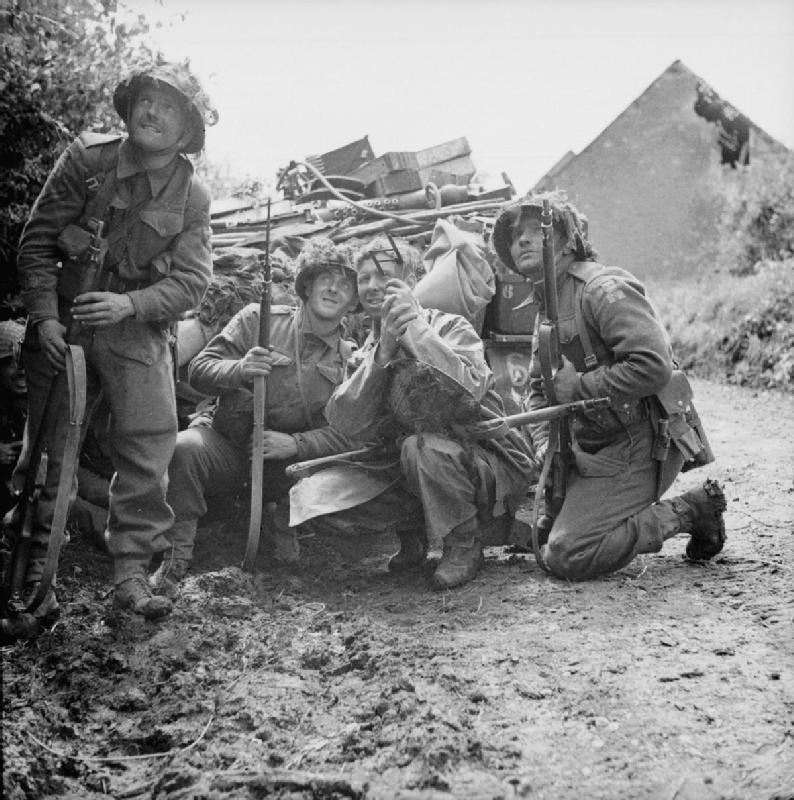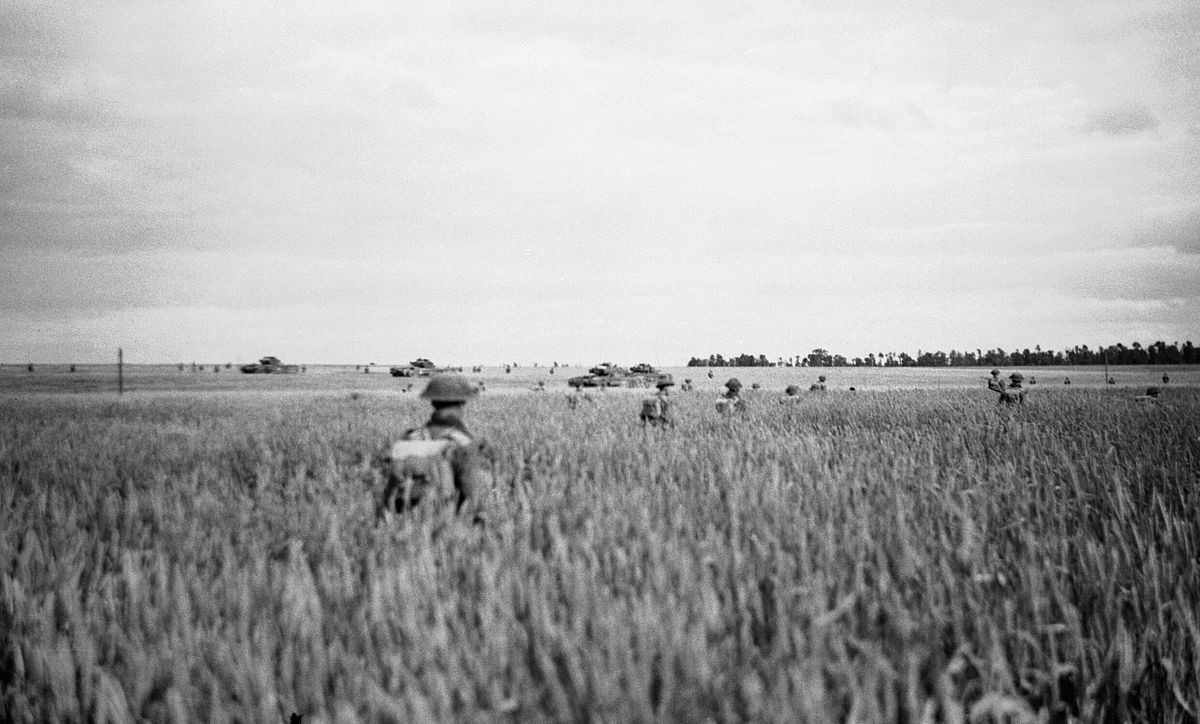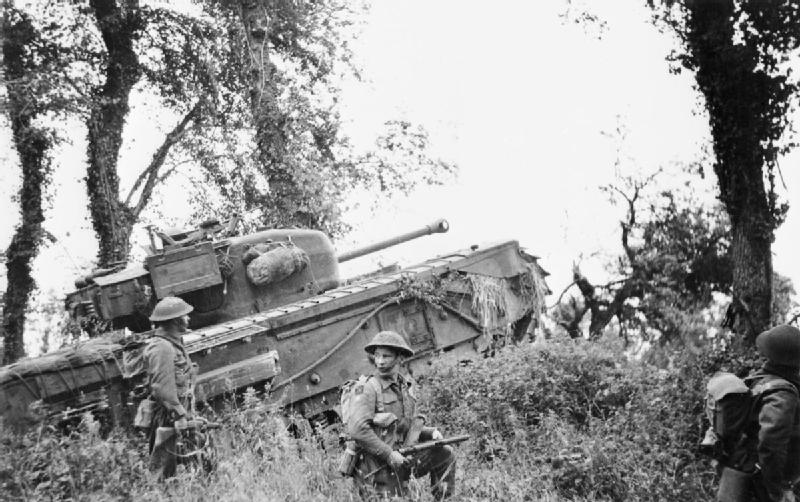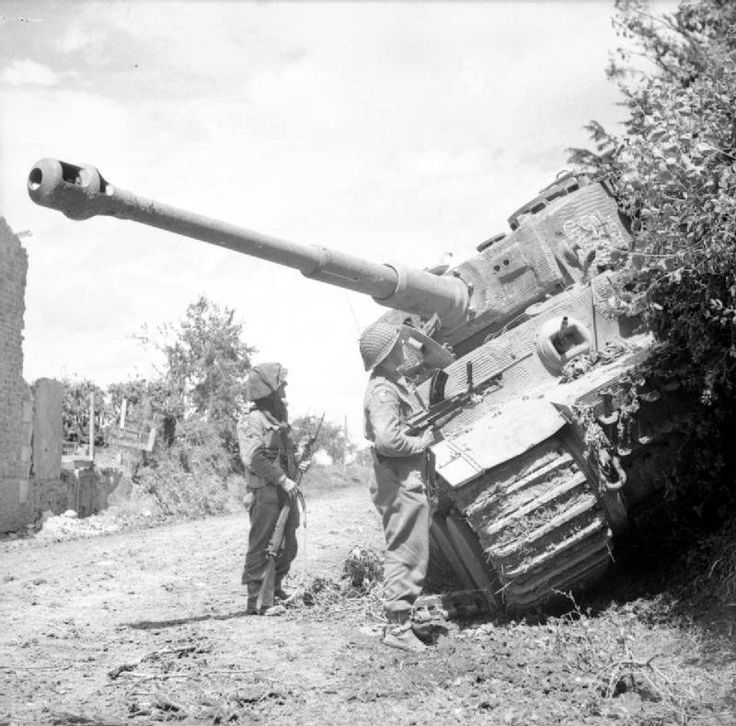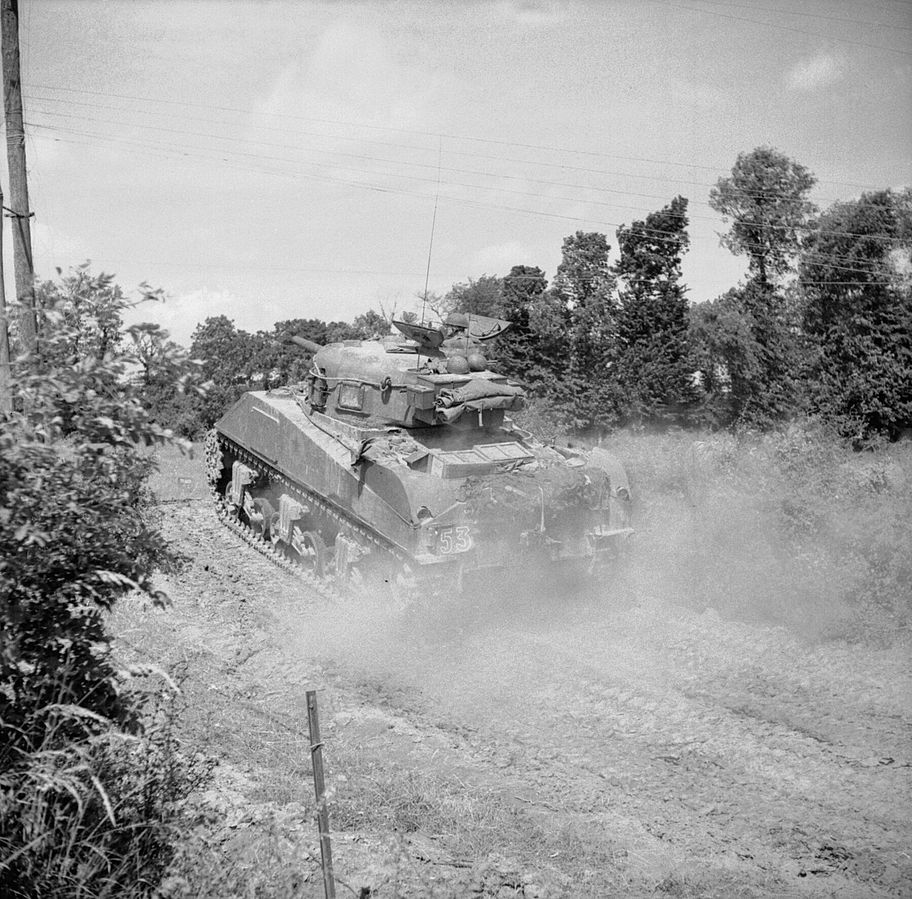The Allied Plans and Preparations
The Allies can call on 86 Divisions which include 25 armored Divisions equipped with Churchill and Sherman tanks and 55 motorized Divisions, 3,100 bombers and 5,000 fighters. In overall command of the Allied forces is Gen Eisenhower, with the British Air Chief-Marshal Sir Arthur Tedder as his deputy. Gen Montgomery commands all the Allied land forces, the British Adm Sir Bertram Ramsay and Air Chief-Marshal Sir Trafford Leigh-Mallory command the naval and air forces. The strategic air force is under the American Gen Carl Spaatz.
Briefly the Allies intend to land units of 4 army corps and 3 airborne Divisions on the beaches of Normandy between Caen and Valognes. Normandy has been selected for a number of reasons. The topography of the beaches and the area just inland is favorable. Normandy is within fighter range of southern England and is convenient for all ports on the south coast. It is a less obvious choice than the Pas de Calais and is, therefore, less well defended.
The preparations have been enormous in scale and elaboration. There are nearly 3,000,000 men under Eisenhower's command and a mass of vehicles and stores has been accumulated. Not the least important items of equipment are the various parts of the Mulberry Harbors. There are old ships, assorted huge blocks of concrete and steel and all the metal roadways necessary to turn these into great artificial ports as soon as they are sunk off the beaches. This obviates the need to plan to seize a port as a first priority. All the ports are of course heavily defended, as the Dieppe experience has proved. The undertaking for the construction of the parts of the Mulberries (there are two - one British and one American) is so vast that it has absorbed a considerable proportion of the British war-production effort for several months. All the parts have been made in Britain because of their size and unwieldiness. The British have also produced a range of specially modified tanks and other armored vehicles mainly to help their engineers clear beach obstacles under fire. The 'Funnies' are organized as part of the 79th Armored Division which has been led and trained by Gen Sir Percy Hobart, one of the pioneers of tank warfare. All these devices are offered to the Americans, but they have chosen to accept only the amphibious tanks. This is a serious error.
As well as the preparations for the actual attack, a considerable effort has been put in to misleading the Germans as to the location of the landings. The main section of the deception plan has been designed to suggest a landing in the Pas de Calais by a fictional 1st US Army Group (FUSAG) based in Kent and supposedly commanded by Gen Patton. At first, real formations are based in Kent supposedly as part of this army, and when these transfer to France they are replaced by fictional units behind a screen of false radio traffic and reports from double agents. Some dummy installations, airfields and landing craft are also erected. A similar scheme is run to stimulate the presence of a British 4th Army in Scotland preparing for a descent on Norway. Again a real personality is chosen to command, a British Gen Andrew Thorne. It is essential for these schemes to have real commanders of sufficient stature reported to be in charge. After Patton goes to France he is succeeded by another senior American general. The FUSAG scheme is a notable success in drawing attention away from Normandy and keeping alive the idea that the real landings might in fact be a feint.
The enormous number of air attacks on targets in France have been carefully orchestrated to avoid giving away the real location of the landings. Thus, destroying the Seine bridges, which has been done, will seem to the Germans to be just as necessary to prevent troops moving from Normandy to the Pas de Calais as the reverse. These and other air attacks have been a considerable success, but the real effect of the air operations is to come after the landing in the prevention of German reinforcements reaching Normandy in full strength or as quickly as might otherwise have been the case. Lorries and other types of 'soft' vehicles are particularly vulnerable.
The German Dispositions
Altogether in France, Belgium and Holland the Germans have 60 Divisions including 11 armored. These figures are somewhat misleading, however. About half of the infantry Divisions are not equipped for mobile warfare and all are understrength. Some are in France simply to refit after heavy losses on the Eastern Front and are hardly fit for action. To lead them they have, in Supreme Command, Field Marshal Gerd von Rundstedt, with headquarters at St Germain, and commanding Army Group B is the northern half of the country, Field Marshal Rommel with headquarters at La Roche-Guyon. Army Group B comprises the LXXXVIII Corps, stationed in Holland, the 15th Army between Antwerp and the Orne River, and the 7th Army manning the sector between the Orne and the Loire. Johannes Blaskowitz commands in the south. The landings will initially be opposed mostly by units of Friedrich Dollmann's 7th Army except on the British left flank where part of Hans von Salmuth's 15th Army is stationed. However, this chain of command is made almost totally useless by Hitler's interference. As ususal he insists on involving himself in even the most immediate tactical decisions. This difficulty is compounded by real doubts about the correct strategy both as to where the attack is going to fall, and how it ought to be met. As to the location, both Hitler and Rommel have nursed a belief that Normandy might well be the target. Interestingly once the invasion has come where he predicted, Hitler convinces himself that it is a feint. In the work Rommel has done to make the Atlantic Wall defenses a reality the Normandy area has received at least its fair share. The more important problem concerns how the armor reserve should be handled. Von Rundstedt wishes, in the classic style, to create a strong central reserve which can be used for a grand counterstroke once the focus of the Allies' operation has been discerned. Rommel, on the other hand, believes thet the invasion must be defeated as near to the beaches as possible and that the reserves should therefore be spread all along the front. He fears that Allied air power will prevent the sort of counterstroke that von Rundstedt desires happening sufficiently promptly or in adequate strength. He realizes also that once solidly ashore the Allied material, quantitively superior, is bound to tell. This belief can only be reinforced by the German intelligence appreciation that the Allies have 87 Divisions in Britain, when in fact the total is 52 and only 37 are intended for France.
Both Rommel and von Rundstedt put their views to Hitler and his decision gives a compromise result fatal to both schemes. He allows Rommel some of his way by releasing a few Divisions from the reserve but not the 3 Panzer Divisions for Normandy that Rommel wants among his other plans. Von Rundstedt is left with an inadequate force for his strategic reserve, and to make matters worse, he cannot call on it without permission from higher authority at OKW which in practice means Hitler.
The Luftwaffe can contribute only 165 bombers and 183 fighters of which only 160 are considered battle-worthy. Several squadrons have been withdrawn from northern France only a few days earlier, though Hitler has promised his generals that there will be 1,000 aircraft ready to support the land forces on the day France is invaded.
|
The Forces Deployed
On the ground in Normandy the Germans have 6 infantry Divisions. The 2nd, 322nd and 716th, are wholly deployed on the beaches concerned along with parts of 2 more, 709th and 711th (from 15th Army). In reserve on the left there is the 91st Division and a parachute regiment and on the right, around Caen, the 21st Panzer Division. 3 more Panzer Divisions are within range farther inland but they are part of the OKW reserve and cannot be called in without permission. The fixed defenses are nowhere as formidable as has been planned because of shortages of transport, materials, especially concrete, labor, mines and other explosives. Partly because of these shortages and partly because of his belief that the invasion must be beaten on the beaches, Rommel has largely demolished what there was of a second defense line a little inland to use the materials for the beach defenses. This can only make the initial landings more crucial. The Allied air attacks have contributed to the difficulties with materials and construction.
At sea, the German Commander-in-Chief West, Adm Theodor Krancke, is dreadfully overmatched. When in port his ships come under constant air attack and at sea are harried equally continuously. He has 2 large and 2 small destroyers, 31 motor torpedo boats and about 200 smaller vessels in the Channel. He has about 15 submarines under his direct command. In the air the situation is at least as bad. Huge Sperrle's 3rd Air Fleet has less than 200 operational aircraft from a paper strength of only perhaps twice that. Many of the pilots are almost complete novices. The Luftwaffe still absorbs a disproportionate fraction of the German manpower and by edict of Göring has only rarely been used to help in, for example, the construction of defenses. The Luftwaffe troops, several Divisions, are not fully integrated in the army command structure. An indication of the German weakness in the air is that only one Allied aircraft is shot down by an enemy plane on June 6. When the Allied plan is in turn examined, the list of participating units is massive. The naval forces include 2 battleships, 2 monitors, 23 cruisers, 105 destroyers and 1,076 other warships (minesweepers and anti-submarine vessels especially) as well as 2,700 merchant ships and 2,500 landing craft. In the air 3,500 heavy bombers, 1,700 medium and light bombers, 3,500 fighers and 2,400 transport aircraft are employed. Despite this massive air and naval contribution the actual landing forces are by no means overwhelming in strength when compared to the German garrison in Normandy. There are 3 airborne Divisions and 5 infantry Divisions landed in the first waves as well as various independent Commando and Ranger units and, in the British and Canadian sector, 3 armored brigades. The principal limiting factor is the number of landing craft available. Partly bacause of the British commitment to produce Mulberry, almost all of the recent production of landing craft has been in the United States under the control of the US Navy. Adm King has been most reluctant to release landing craft to the European theater and he still has many times greater number in the Pacific. Altogether there are 21 American convoys and 38 British and Canadian.
The Airborne Landings
The 2 US airborne Divisions, 101st and 82nd, begin to land shortly after midnight inland from the western flank beach, Utah. Just inland from Utah the ground is marshy and 101st Division therefore has the task of taking the exits on the various causeways through this area. The 82nd are to land somewhat farther inland and clear ground on either side of the Merderet between St Mere Eglise and Pont l'Abbe. Largely because of the inexperience of many of the pilots the men of both Divisions are dropped in widely scattered groups. Many of the paratroopers are drowned in the swamps around the Douve and Merderet Rivers and in the areas flooded by Rommel as an anti-invasion obstacle weighed down by their awkward equipment. Some of the gliders crash on landing killing the occupants. Of the 13,200 men in the 2 American Divisions, only a few thousand manage to concentrate immediately after the landing, and only a very few units are where they ought to be by dawn. At dawn, for example, 101st Division only has 1,100 men under command out of 6,600. Groups of perhaps 50 men are attempting tasks planned for battalions. However, this scattering proves extremely confusing for the German defenders. By a stroke of luck the commander of the 91st Division is ambushed and killed by one such group. This Division, left leaderless, is intended by the Germans to deal with an airborne attack and has been specially trained. The missions of the airborne troops are to disrupt the enemy's communications, cause the maximum confusion and capture vital bridges before the Germans can blow them up. The 101st succeeds in winning control of the area between St Martin de Varreville and Pouppeville and there gets ready to support the landing of the 4th Infantry Division at Utah. In a multitude of small gallant and successful actions the capture of St Mere Eglise, the first village in France to be liberated, stands out.[MORE]
Utah
Just after 1:00am the headquarters of the German LXXXIV Corps at St Lô begins to get messages that 'enemy paratroopers' have landed in the region of Ranville-Brèville and on the north side of Barent Wood, northeast of Caen near St Marie-du-Mont and St Germain de Varreville.
On the left, eastern, flank of the attack only one Division, the British 6th Airborne, can be committed because of lack of aircraft. They have three main tasks. They are to take positions holding various crossings of the Orne and the Caen Canal between that town and Ouistreham. The large battery at Merville is to be stormed and finally various bridges over the dives are to be blown up to protect the flank. Although, as on the opposite flank, many of the troops are not landed in the correct place, the drops are fairly good and all the objectives are achieved and where necessary held until reinforcements fight their way off the beaches. Even better, a large part of 21st Panzer Division is first attracted by the parachute landings and then held by the threat of a major break out from the beaches. They are unable to follow orders to move against Omaha.
All goes reasonably well for the British 6th Airborne in their sector. By 3:30am when the Division Commander, Gen Richard Gale, lands with the third wave, a great part of its objectives have been achieved. The Ranville bridgehead has been consolidated, the coastal batteries at Merville have been destroyed, the bridges over the dives River blown up. But of the 5,000 men in the British Division about half are missing.
The west flank landing beach is allocated to Gen Lawton Collins VII US Corps. The naval force is commanded by Adm Don P. Moon and includes 8 attack convoys and, for bombardment, a battleship, a monitor, 5 cruisers, and a dozen destroyers. The assault is carried out by the US 4th Infantry Division under Gen Raymond Barton. There are some problems with rough seas which are to some extent offset by a commander of tank landing craft in launching his amphibious cargo closer inshore than the normal American practice. (The British operate differently.) The landings almost all take place by mistake on the southern sector of the beach and there is little resistance. The troops are quickly advancing inland held up mostly by the marshy ground. By the end of the day 23,250 men have gone ashore at Utah - an almost unqualified success. Less then 200 have died.
|
Omaha
The Omaha beach runs from Pointe de la Percee to St Honorine and has been allocated to Gen Leonard T. Gerow's US V Corps, like VII Corps from Bradley's 1st Army. The naval force is led by Adm John L. Hall with troops form 1st and 29th Infantry Divisions in the 8 initial convoys. There are also 2 battleships, 3 cruisers and 11 destroyers to provide a preliminary bombardment which will be amplified by air attacks and rocket and gun fire from the landing craft. The terrain is not at all easy, with low hills just inland from the beaches interspersed with heavily defended gullies. The assault gets off to a poor start. The infantry, engineers and artillery are loaded into the landing craft and DUKW's fully 10 miles off shore in rough seas again contrary to British advice and practice. Some of the amphibious tanks are launched nearly 4 miles offshore and are swamped. Of the 446 Liberator bombers sent to attack only 329 arrive and most release their bombs too far inland. The rocket craft, designed to provide a final curtain of fire, are largely aiming short. As soon as the various barrages lift the return fire begins to come in and immediately there are heavy casualties. When the first wave reaches the beach they are totally disorganized. Many of the troops are in the wrong sectors. The engineers have suffered as heavily as any in the run in and lack the specialized armor used by the British to get protection from the defensive fire while clearing the obstacles. At first the assault is held almost exactly at the water's edge, but as the tide comes in and with it subsequent waves of troops, the slow advance begins with certain inDivisionidual leaders gradually inspiring forward momentum. This, combined with a renewed bombardment by destroyers at very short range against inDivisionidual strongpoints, is the story for the rest of the day. By nightfall there are 34,250 Americans ashore at Omaha but none are as far as one mile off the beach. More than 1,000 are dead and many more wounded but, although it is not clear at the time, they have broken the hard crust and there is for the moment easier going ahead.
Gold
This beach, from Arromanches to La Riviere, is the landing ground for the British 50th Infantry Division and the 8th Armored Brigade of Lt-Gen Gerard Bucknall's XXX Corps. The transports and warships - 13 convoys and 4 cruisers and 13 destroyers - are led by Commodore Sir Cyril Douglas-Pennant. Because of the tide the British landings here and to the east take place later than the Americans and there is therefore no possibility of meeting a startled enemy. Arromanches, La Riviere and Le Hamel especially are all heavily defended and fortified and many of the defending guns in these and other strongpoints survive the preliminary bombardment. The landings west of Le Hamel suffer most seriously, but even here the beaches are quickly cleared with the help of Hobart's armor. Because of the sea conditions the amphibious tanks are held back and landed a little later than planned directly on to solid ground. The advance inland is fairly rapid but the designated objectives of Bayeux and the road to Caen are not reached. Altogether 25,000 men are landed and about 500 are killed.
Juno
This beach runs: from La Riviere to St Aubin. The landing force is 3rd Canadian Infantry Division and 2nd Canadian Armored Brigade which, like the Sword forces, are from Gen John Crocker's I Corps. The naval group is led by Commodore Geoffrey Oliver including 13 convoys, 2 cruisers and 12 destroyers. The landings here are a little later than planned and partly because the tide has therefore come in somewhat the underwater obstacles are particularly troublesome. Here the amphibious tanks are launched sensibly within 1,000 yards of the shore and as elsewhere play an important part in silencing strongpoints. The specialized armor is also prominent. Once off the beach tanks and infantry quickly push inland reaching for Breteville and Caen. Here also there are traffic jams on the beaches. On the first day 21,400 go ashore.
Sword
The first landings on Sword are by the British 3rd Infantry Division, 27th Armored Brigade and several Marine and Commando units all under Gen John Crocker's I Corps. The beach runs from Lion-sur-Mer to the Orne estuary. The naval force is led by Adm A. G. Talbot and as well as the 8 assault convoys there are 2 battleships, 1 monitor, 5 cruisers and 13 destroyers. Much of this strength would have been directed as the Merville battery if the paratroops had not succeeded in their mission. Again the amphibious tanks are launched rather too far out but they are well handled and most reach the shore. The 'Funnies' are put ashore safely also. Before 1000 hours most of the exits from the beach have been cleared after a sharp struggle. Commando units hurry inland to aid the paratroops along the Orne but the regular infantry are more cautious against the German resistance at Hermanville and along the Periers Ridge. This problem is compounded by the growing congestion on the beach with the supporting tanks unable to move forward. By late afternoon, however, Bieville has been reached when the counterattack of 21st Panzer comes in. It is beaten off here but there is nothing to stop it driving to the sea between Sword and Juno. It is too weak to achieve much there, however. By nightfall the British have 28,850 men
ashore here and although the first day's objectives have not been reached the Orne bridges have been seized. It will take several weeks to take Caen and attain these first day objectives but there is no question of the solidity of this beachhead.[CAEN]
Overall the first day of the OVERLORD Operation has been a qualified success for the Allies. They have almost 150,000 men ashore and their aircraft are preventing the Germans having any chance of outstripping them in the buildup of forces in Normandy. If this can be maintained there can be only one result later if not sooner.
Two US ships sink during the day's operations, both by hitting mines: the destroyer Corry (DD-463) and the submarine chaser PC-1261. The Norwegian destroyer Svenner is sunk by German topedo boats T-28, Moewe, Jaguar and Falke. 34 on board are killed. Survivors are picked up by the British destroyer Swift.
Other naval casualties from mines this day are the tank landing craft LCT-25, LCT-197, LCT-294, LCT-305, LCT-332, LCT-364, LCT-555, LCT-593, LCT-597, LCT-703, and LCT-777; and infantry landing craft LCI-85, LCI-91, LCI-92, LCI-232, and LCI-497. LCT-27 and LCT-30 sink after running aground. LCT-362 founders and sinks. LCT-612 and LCI-93 and LCI-553 are sunk by shore batteries.
|
